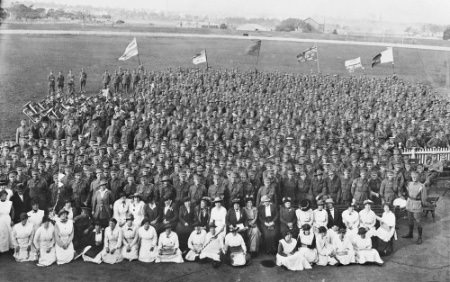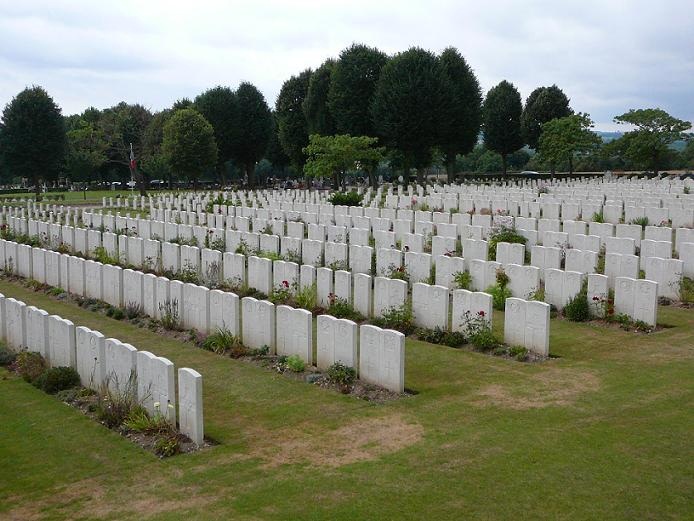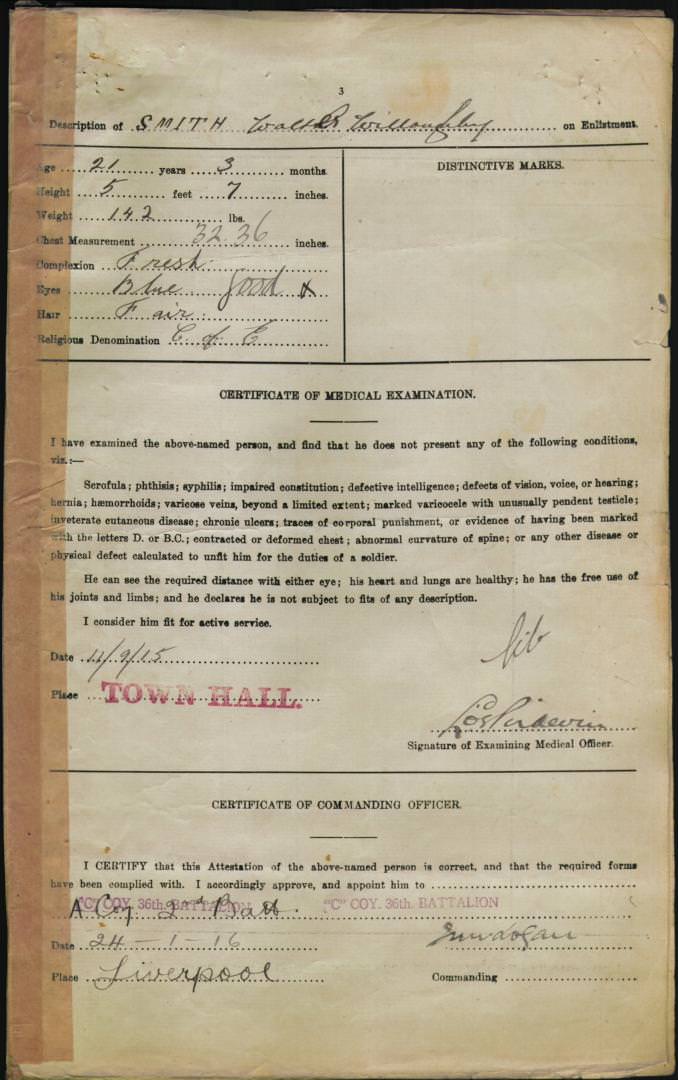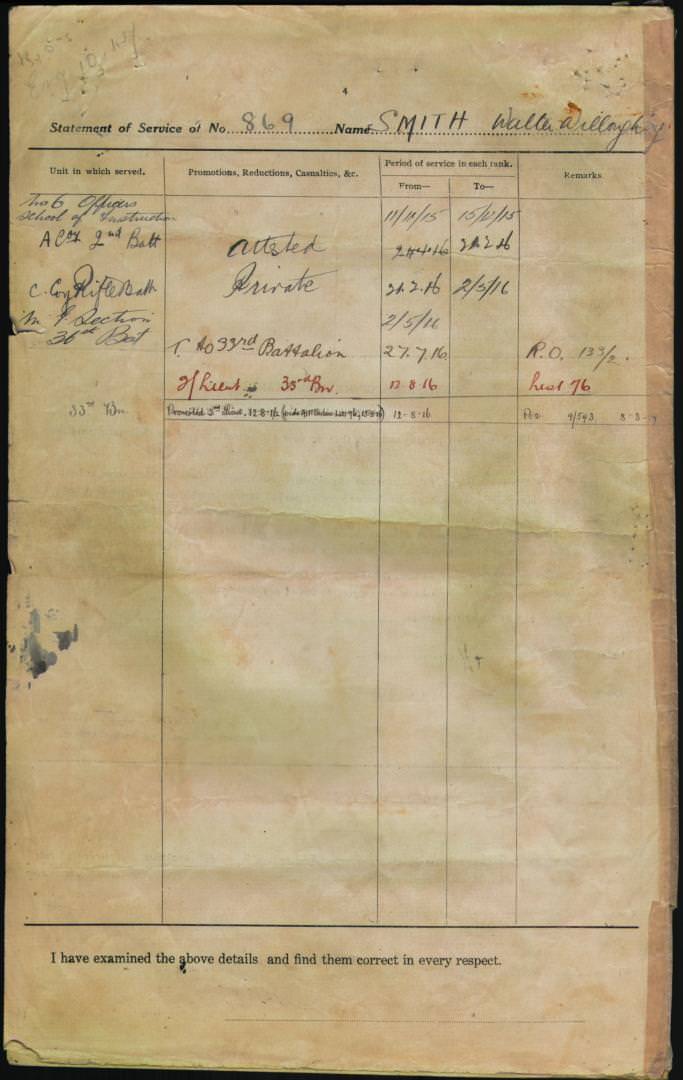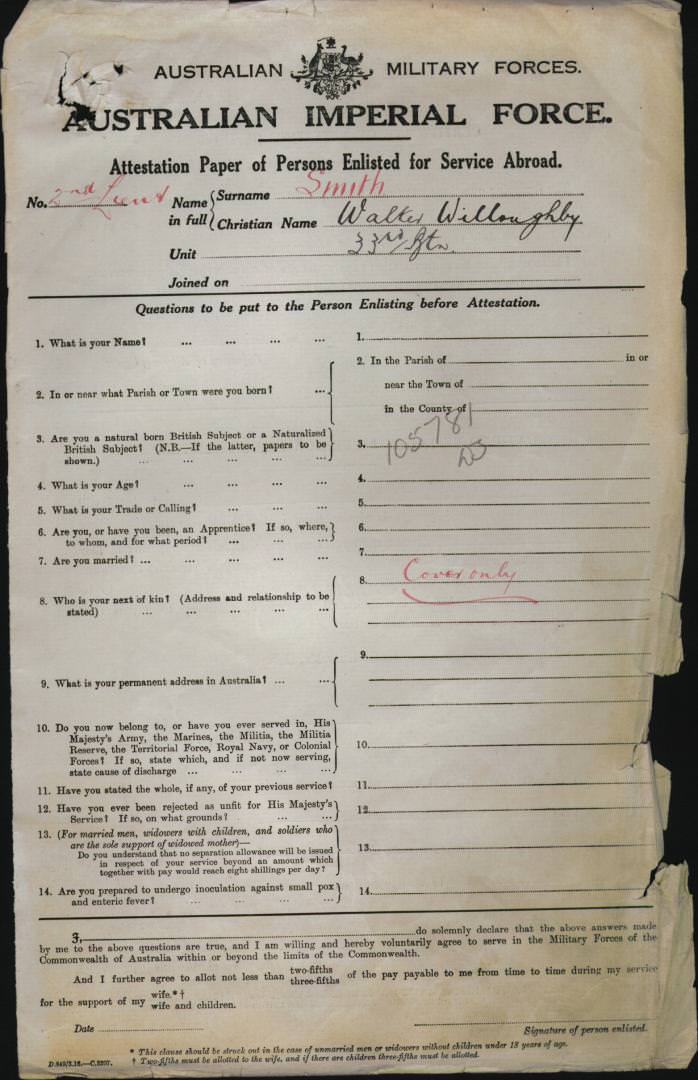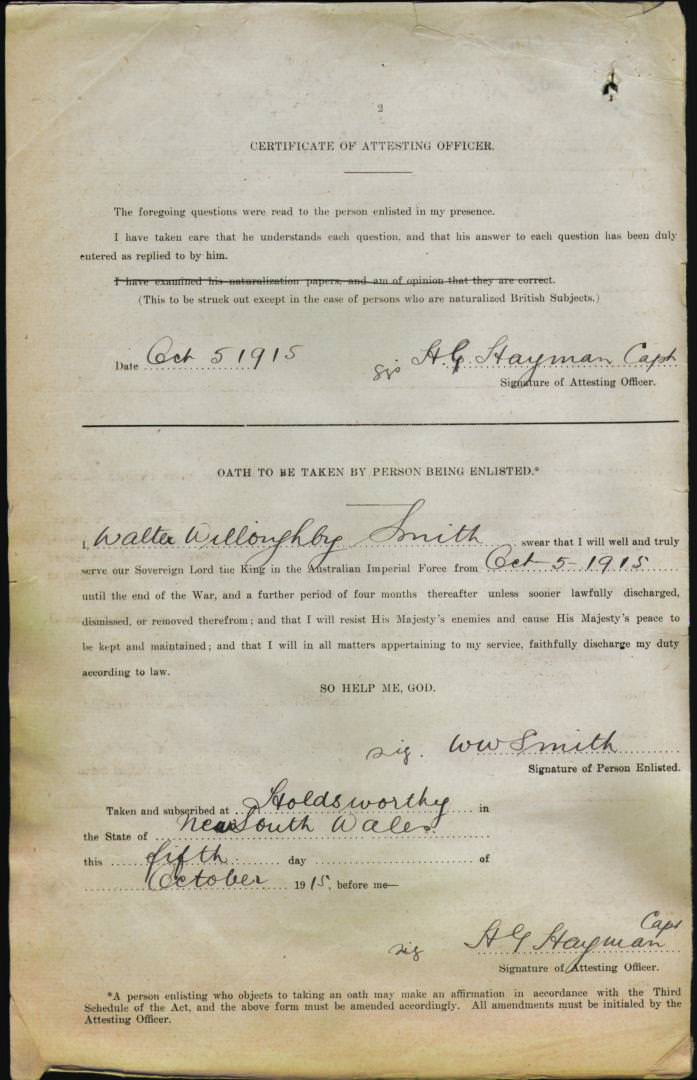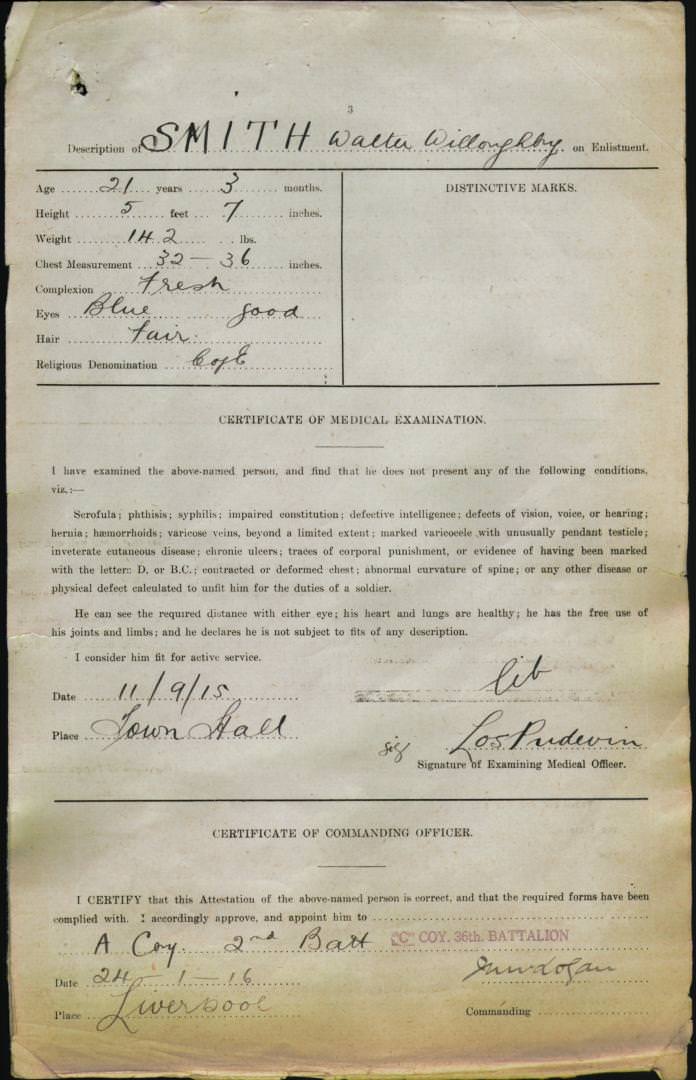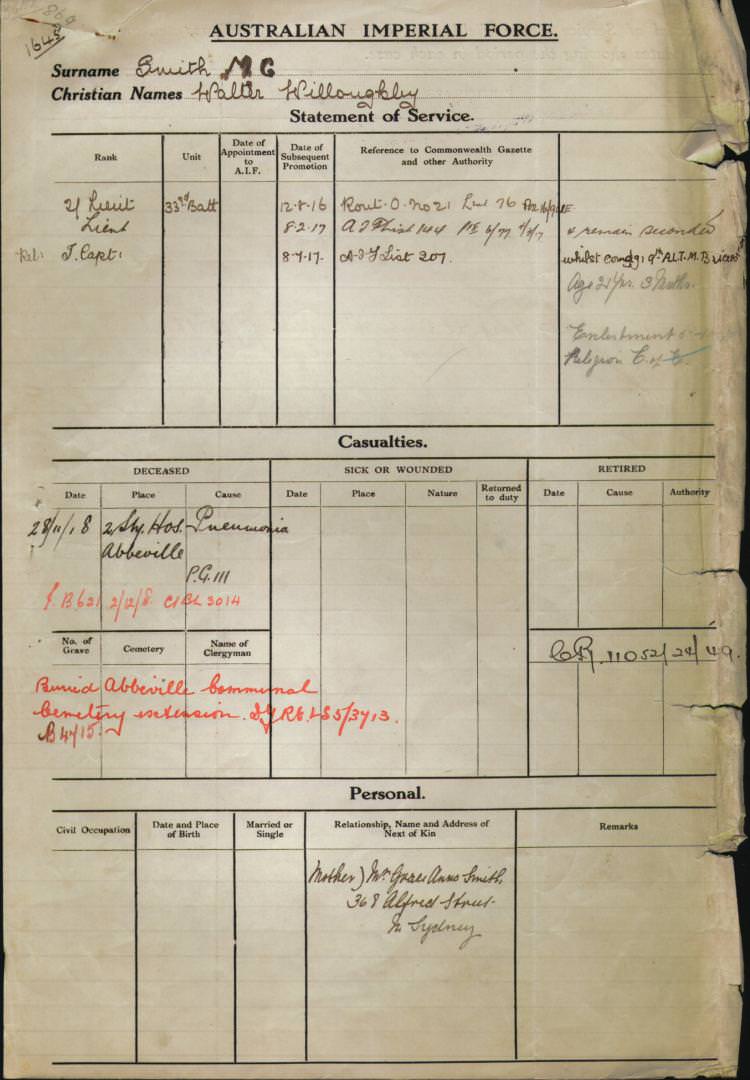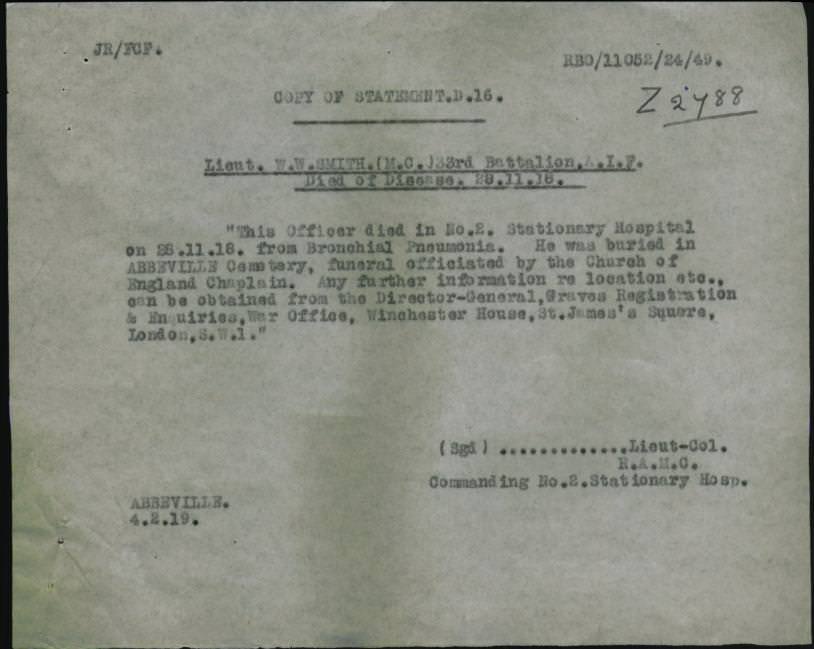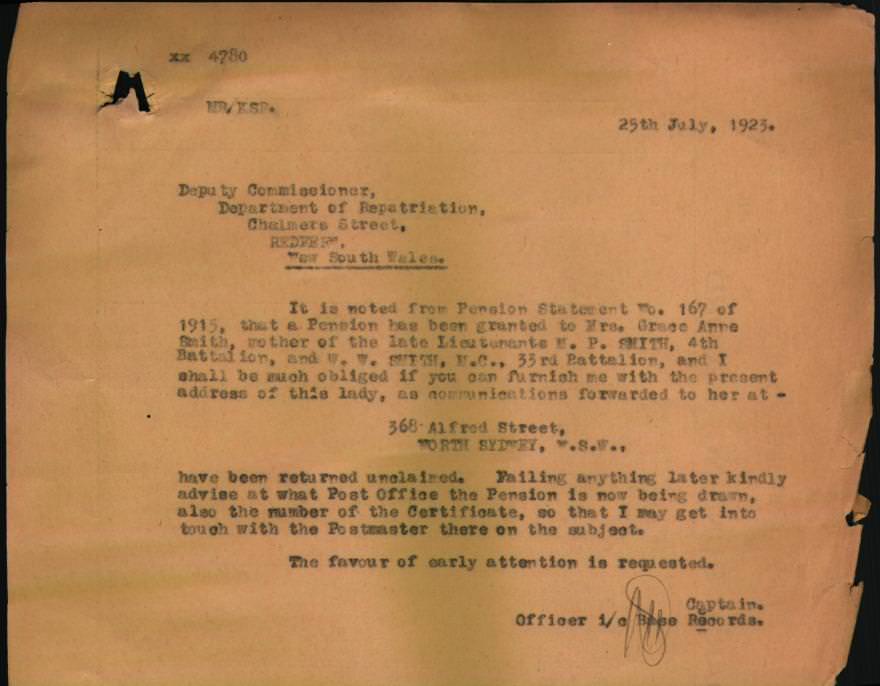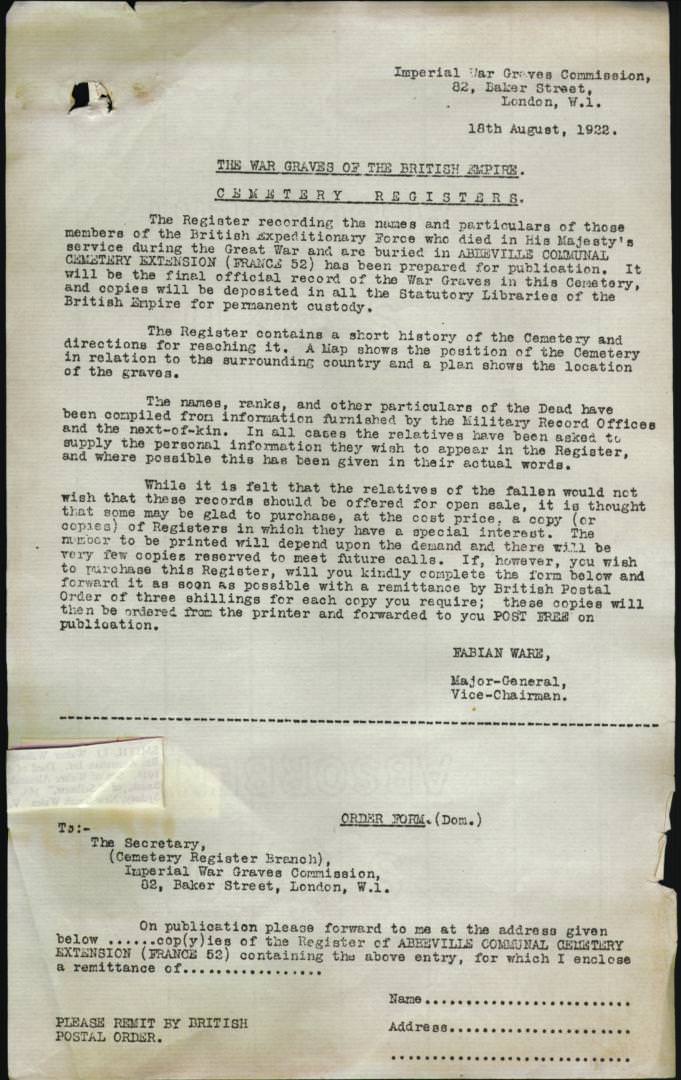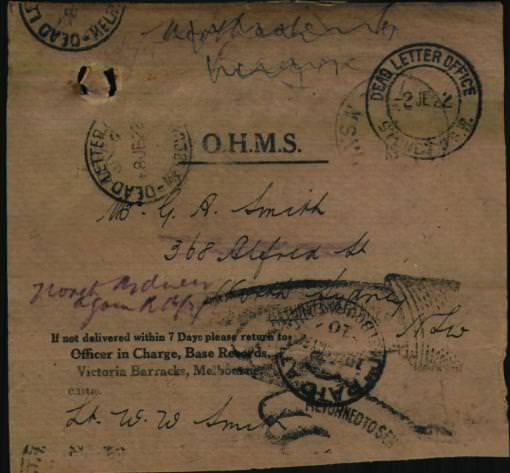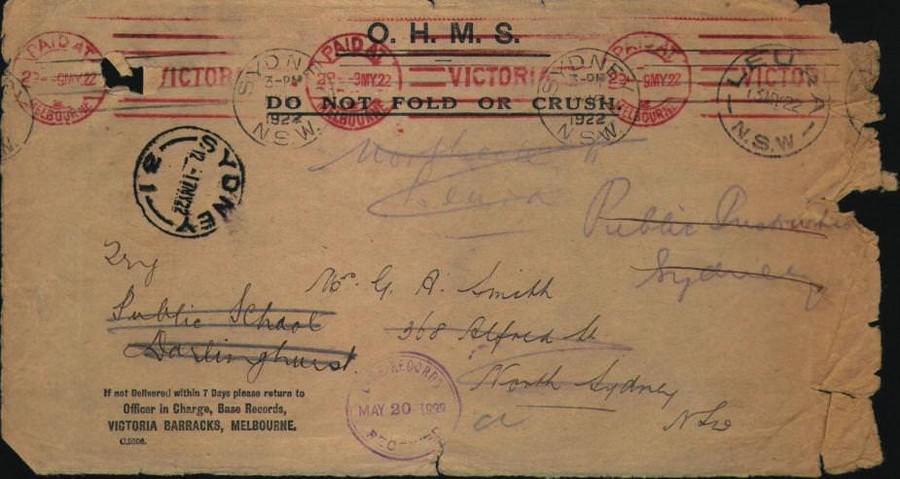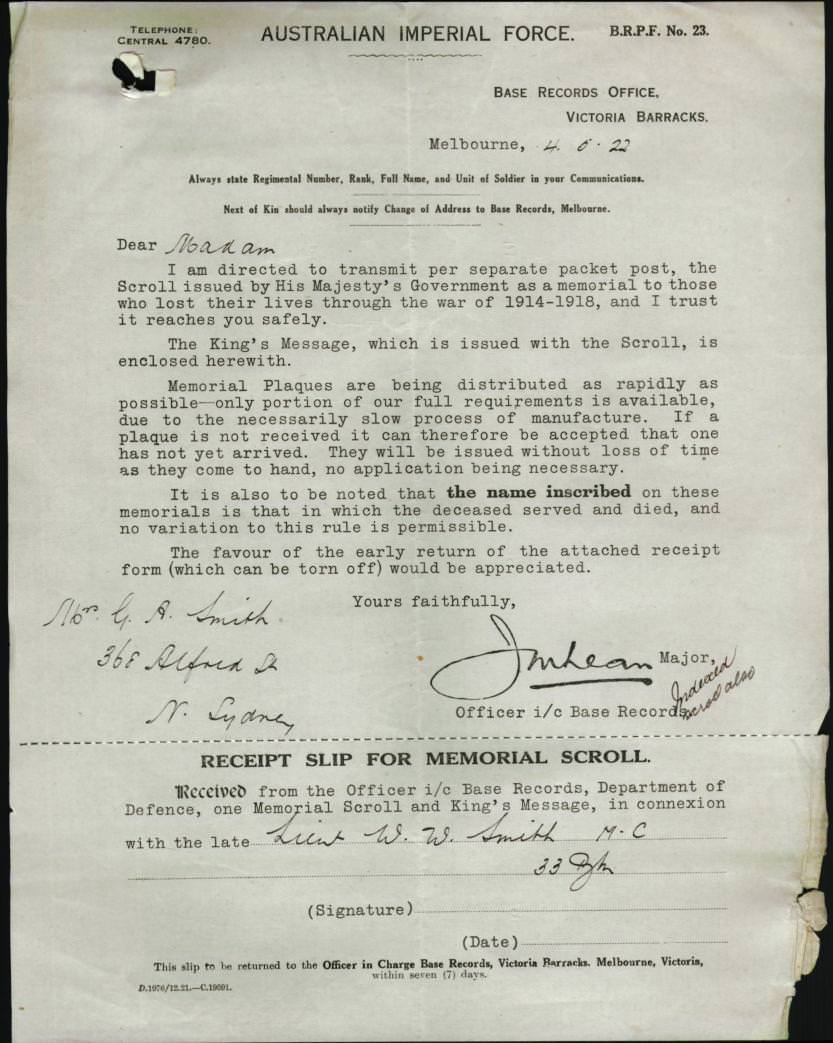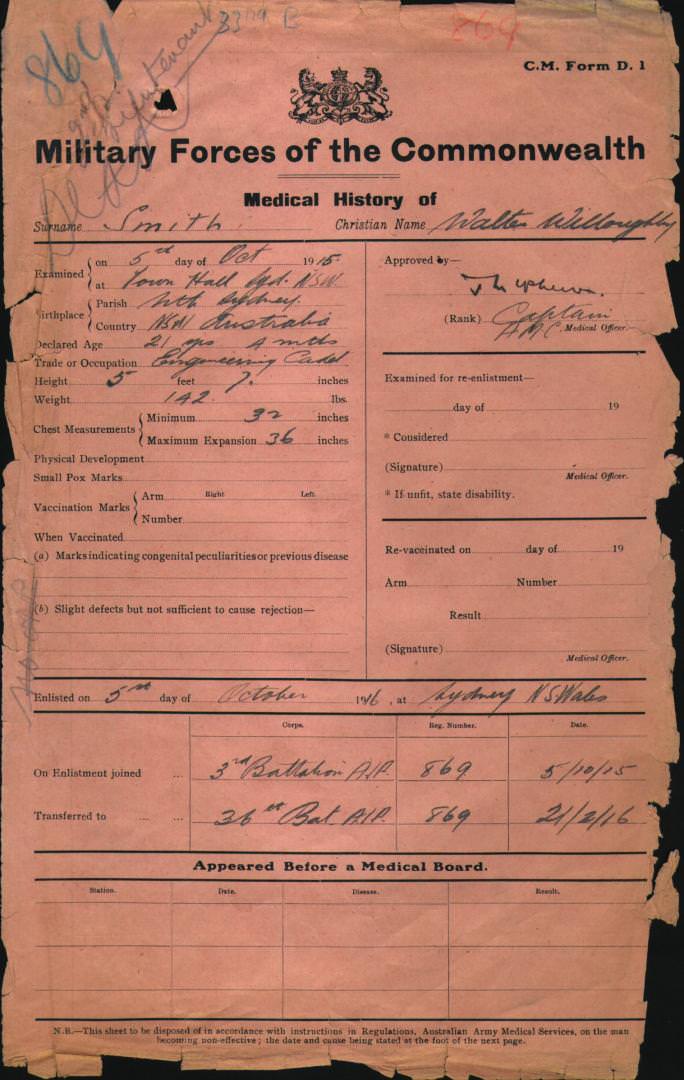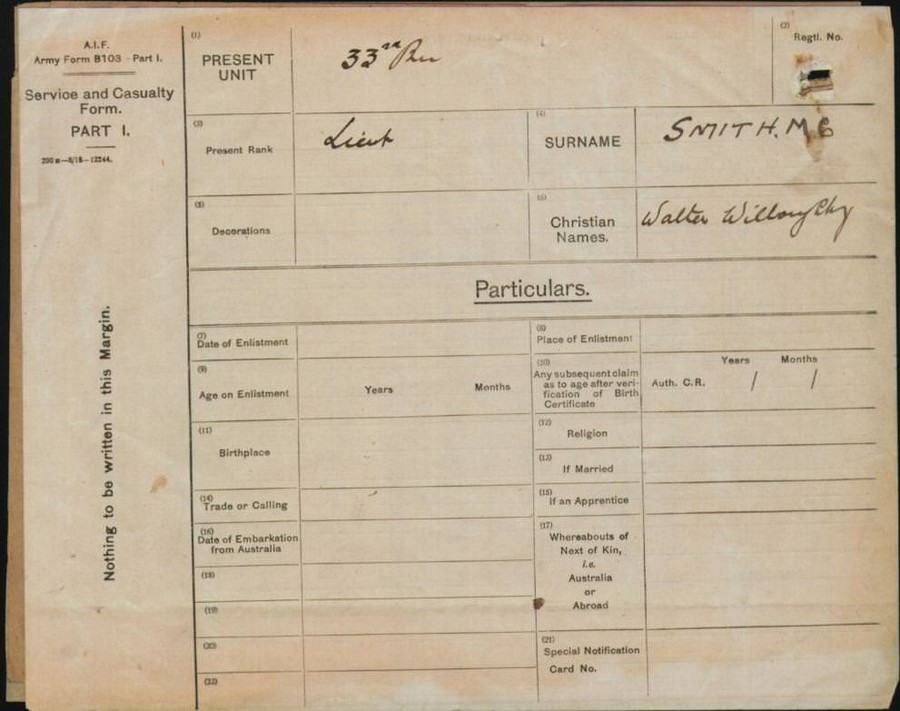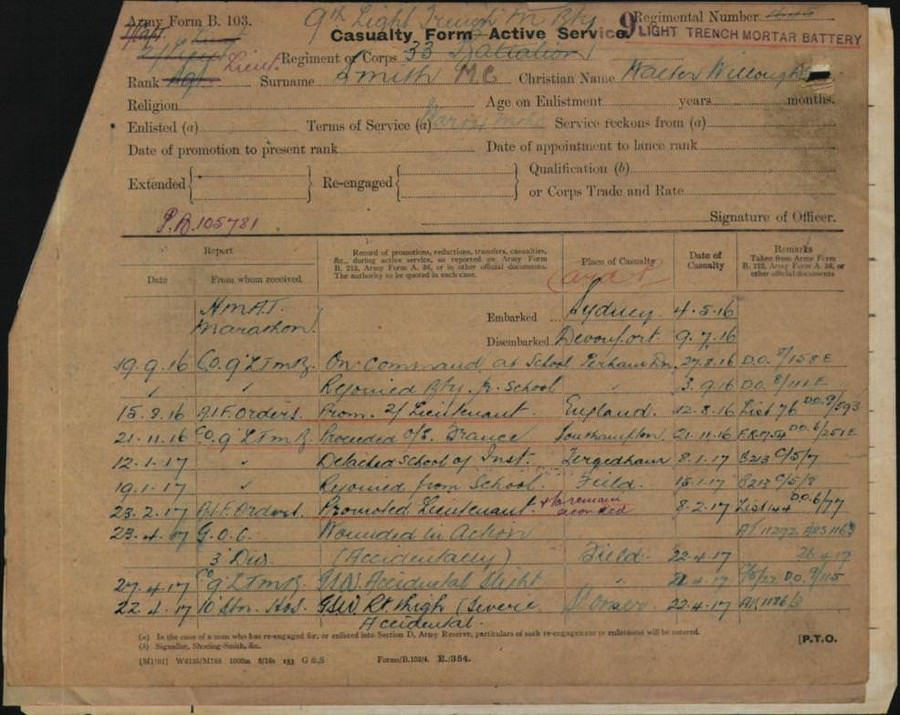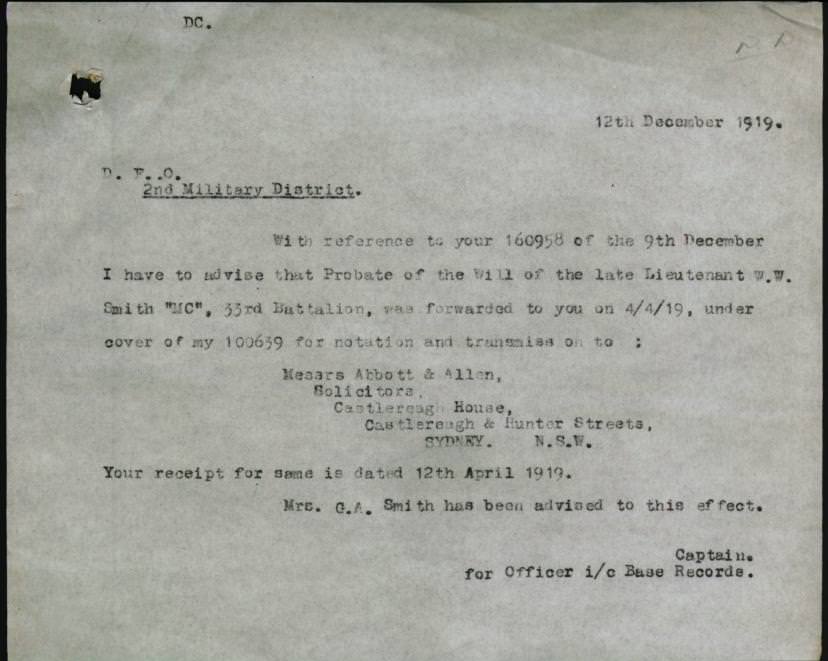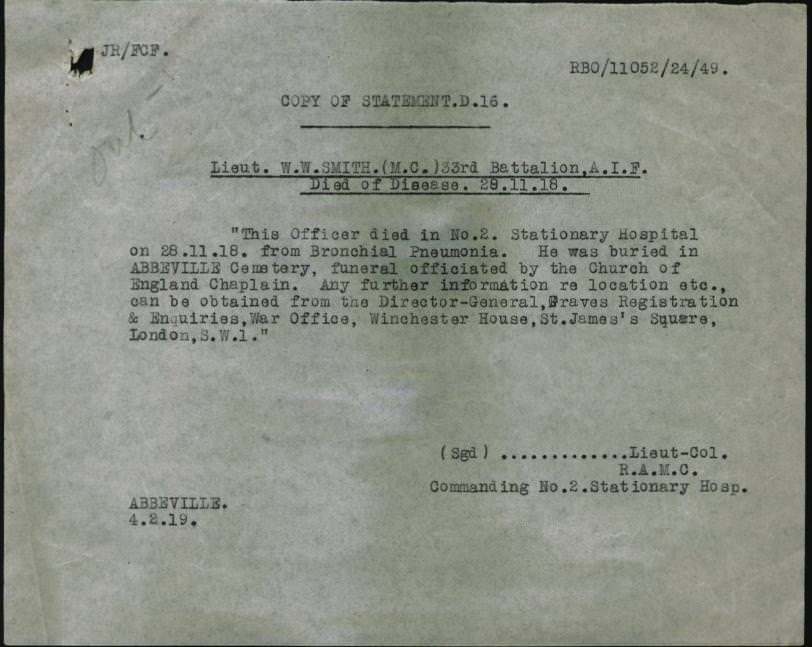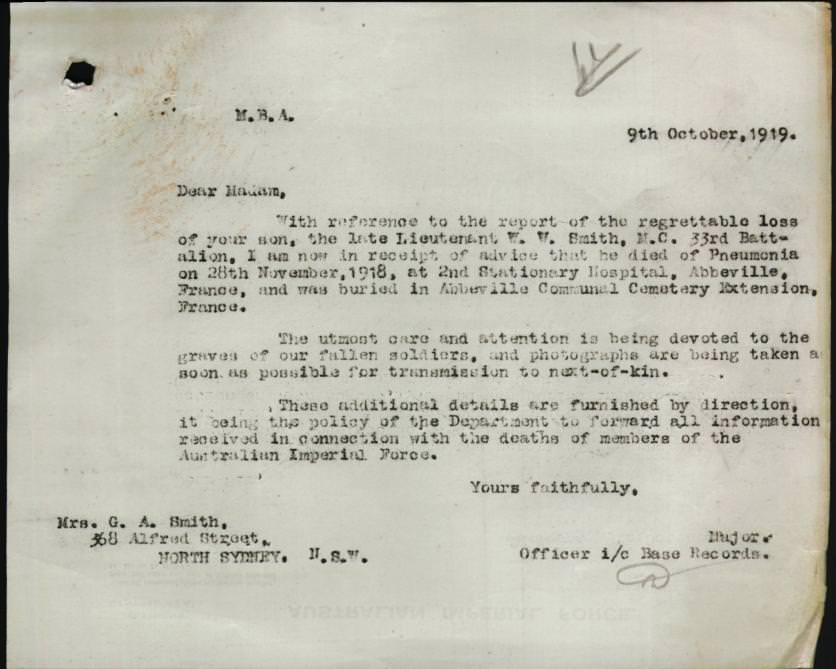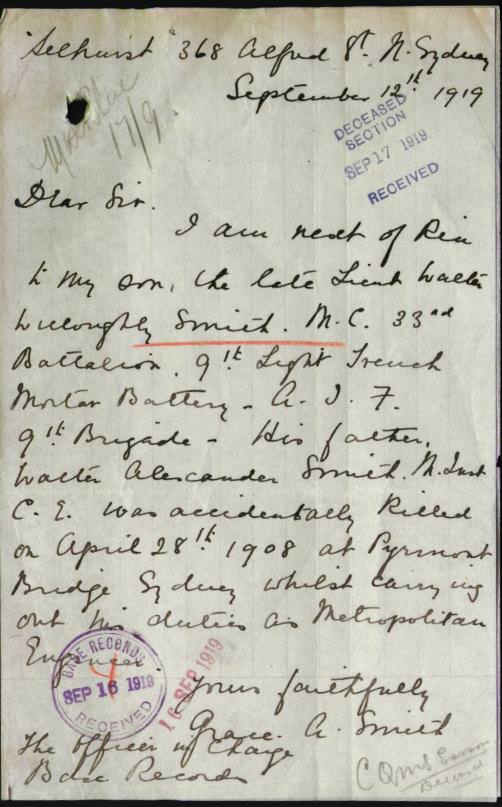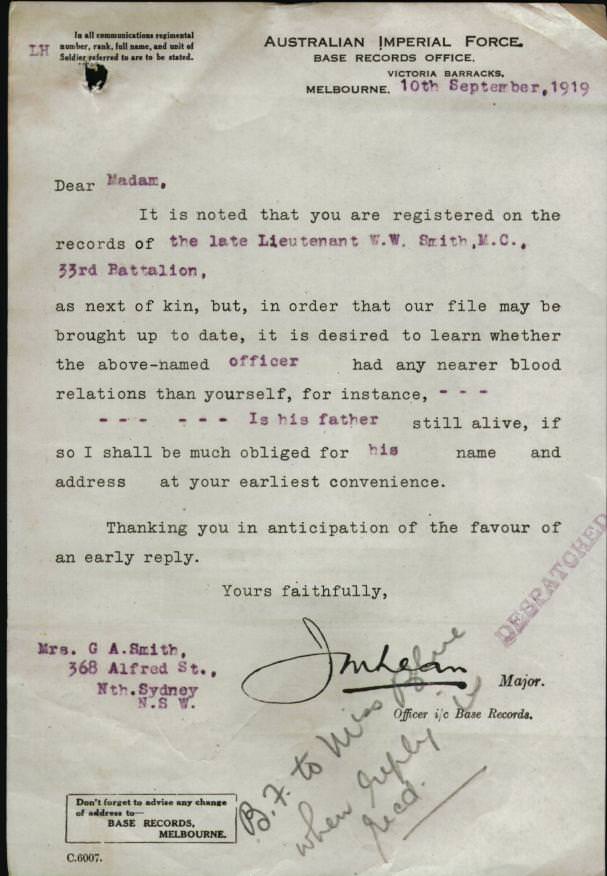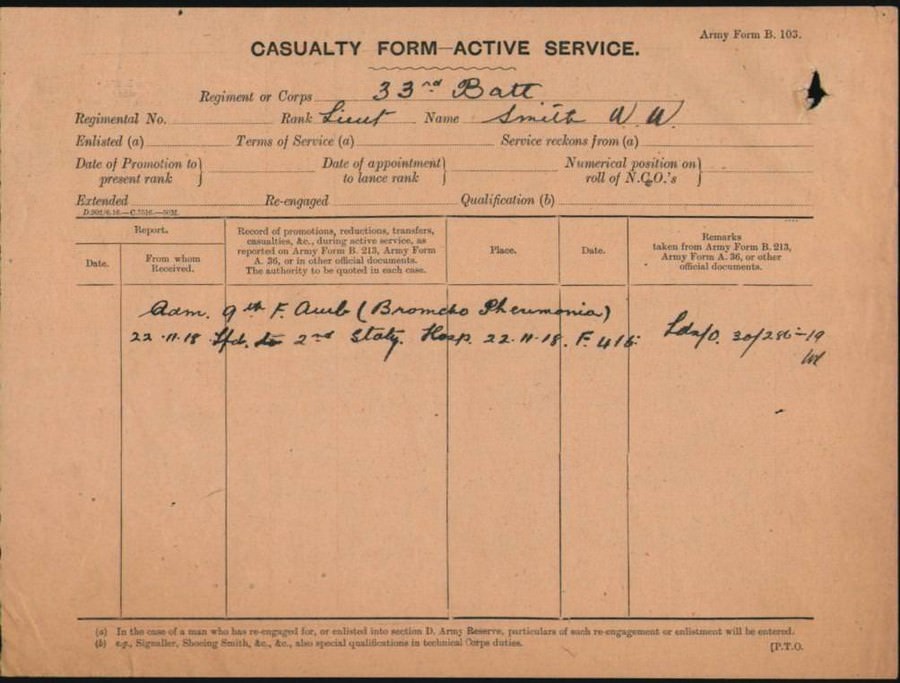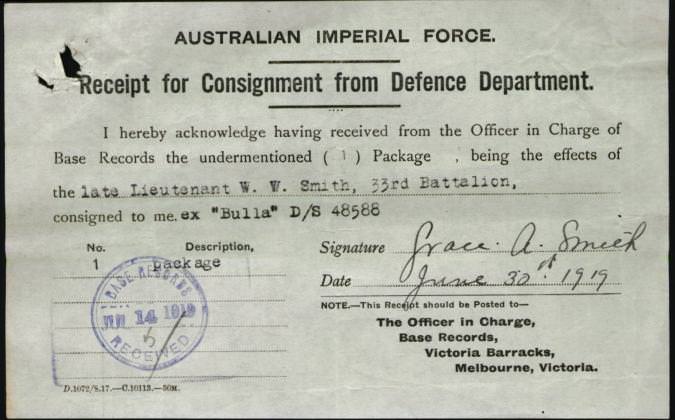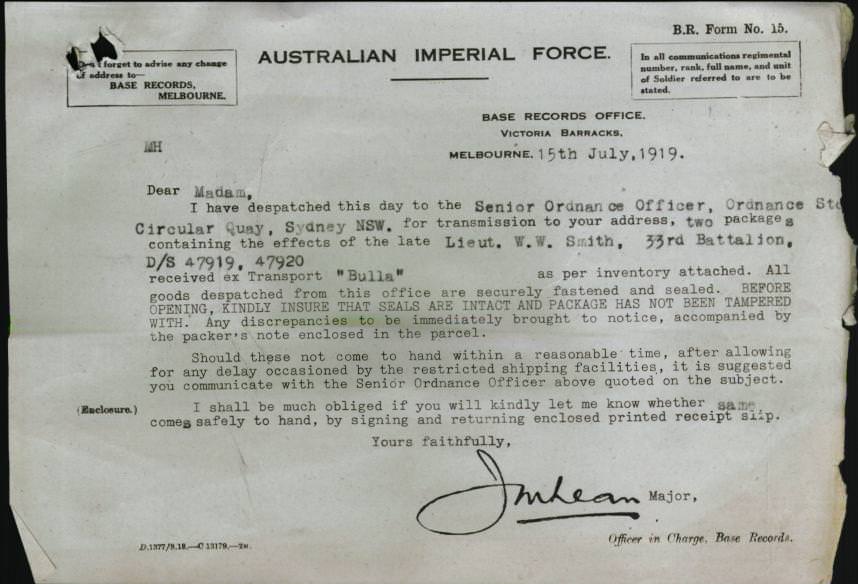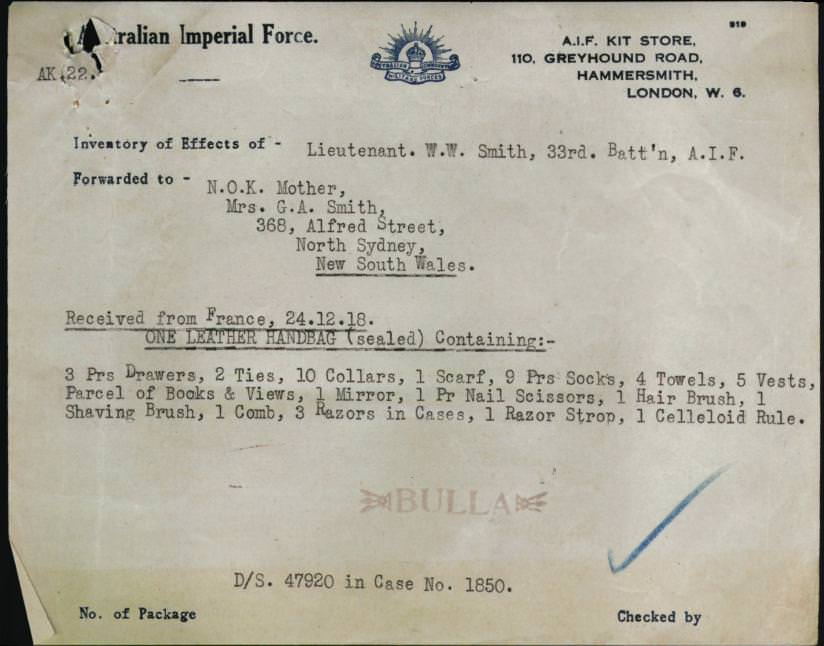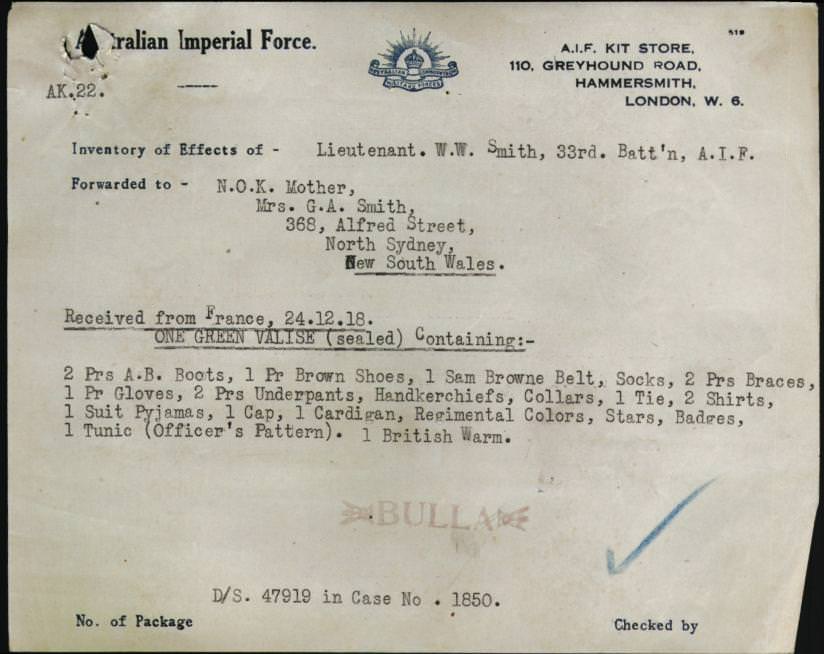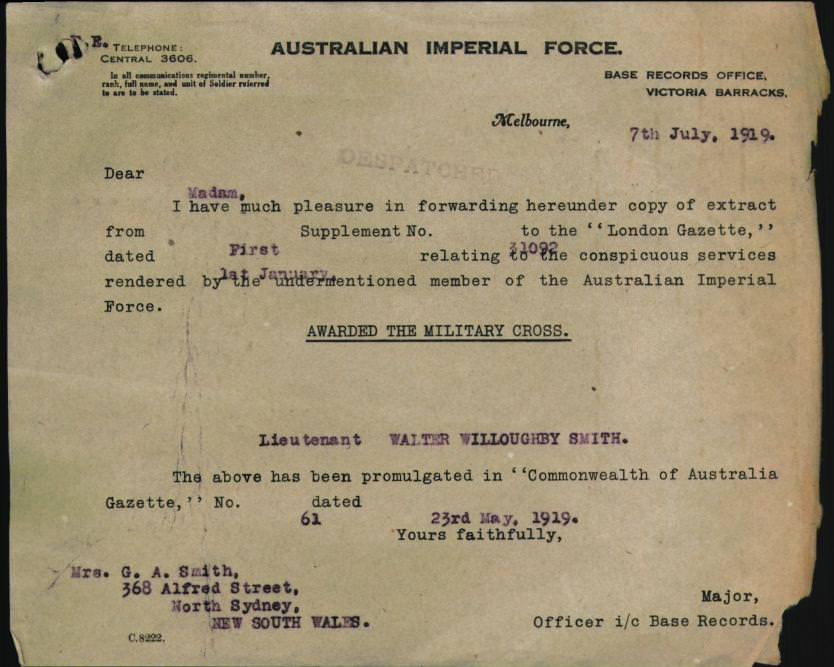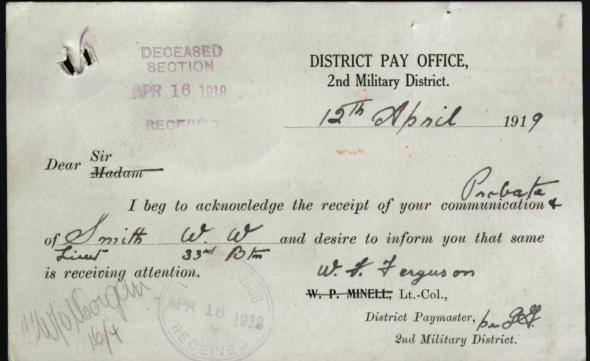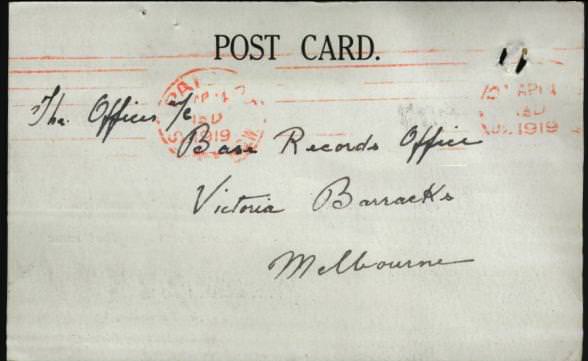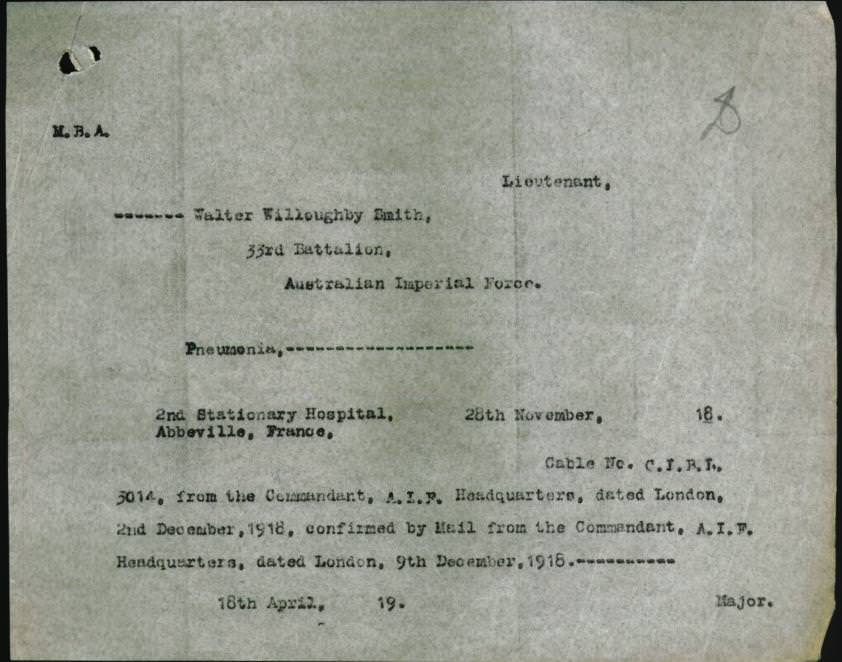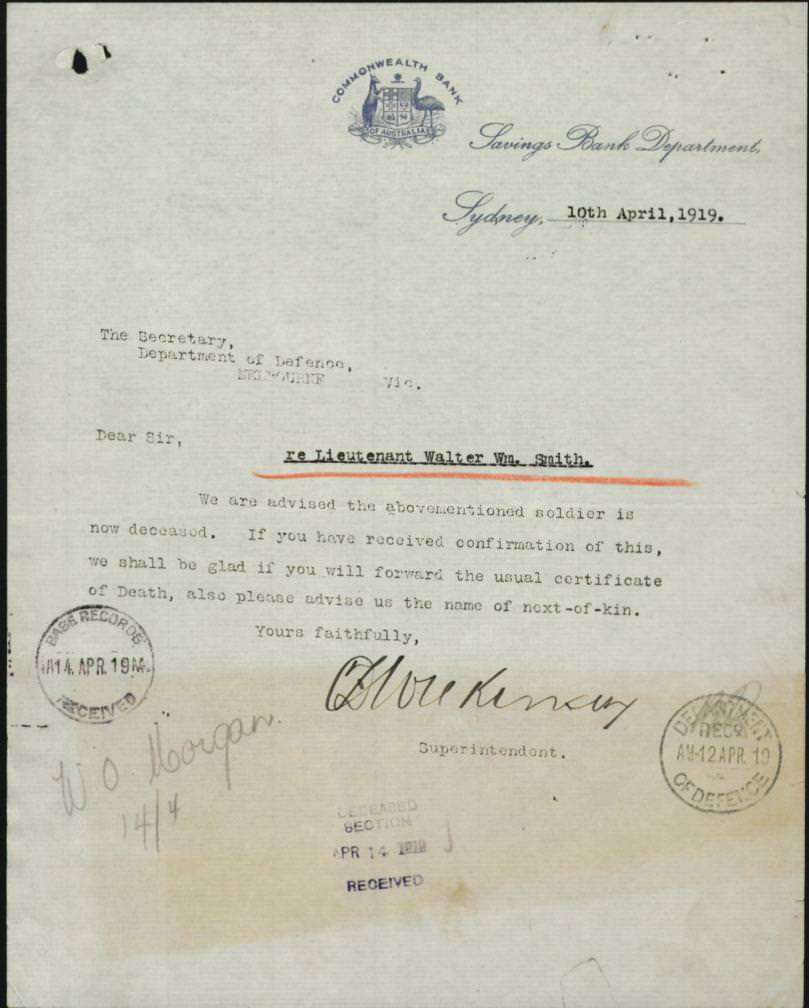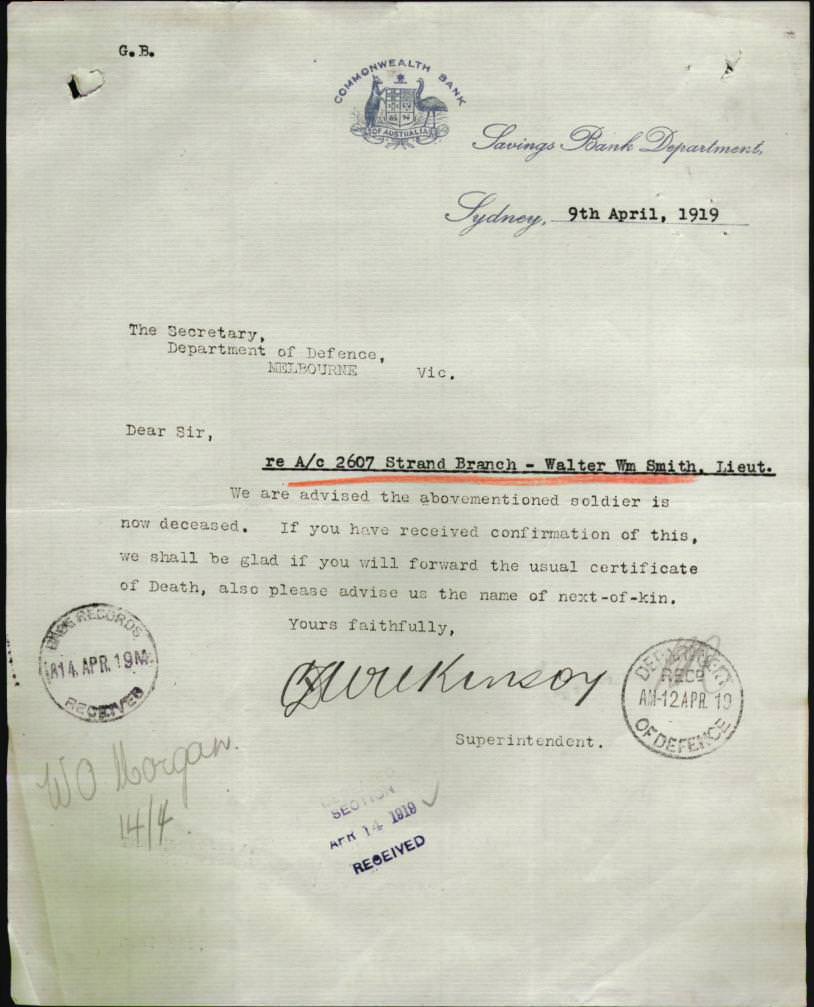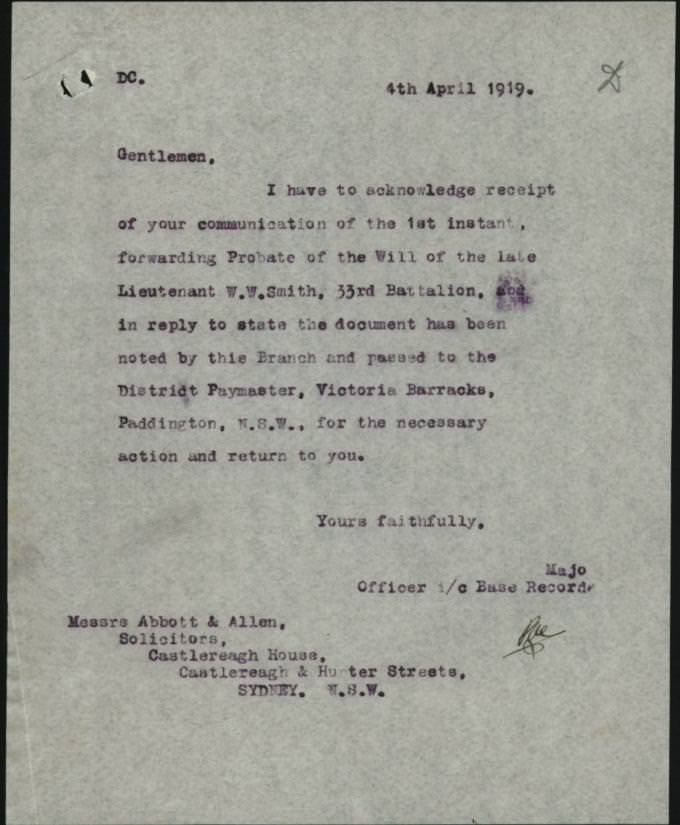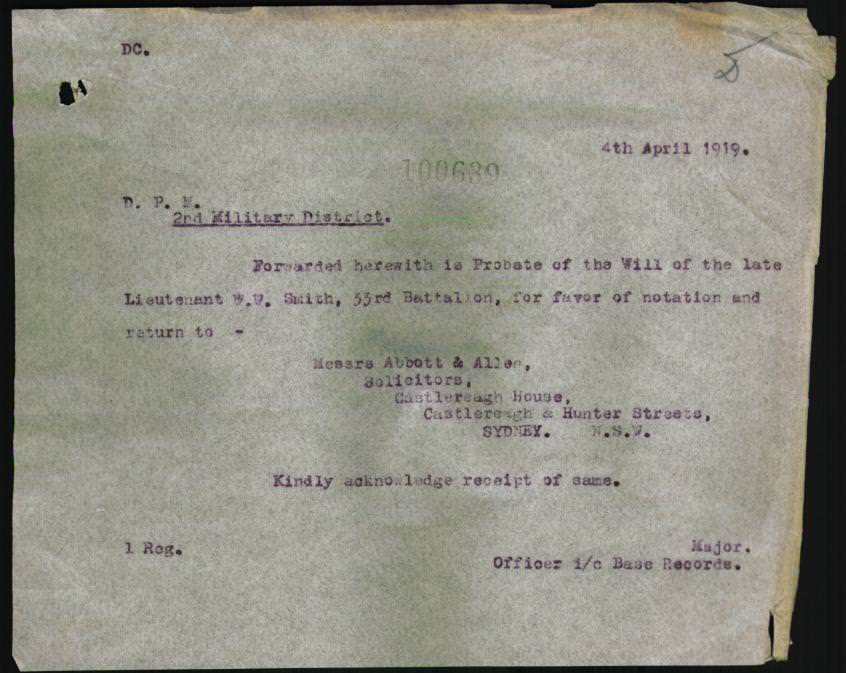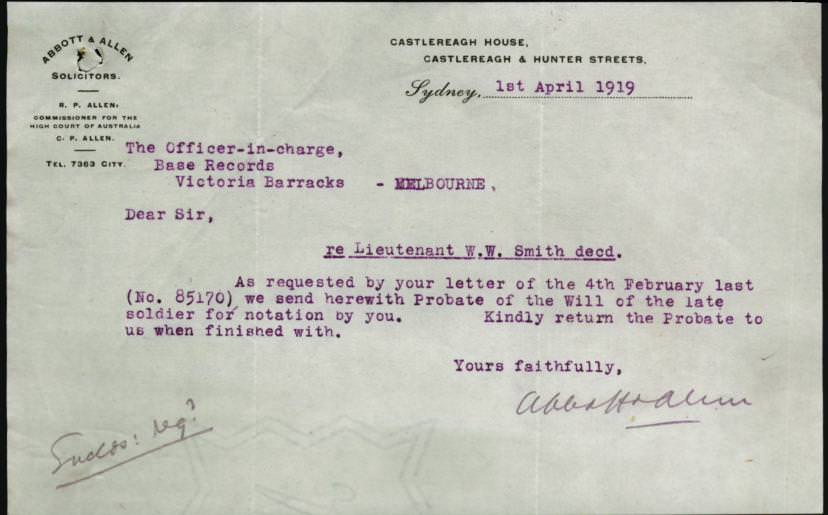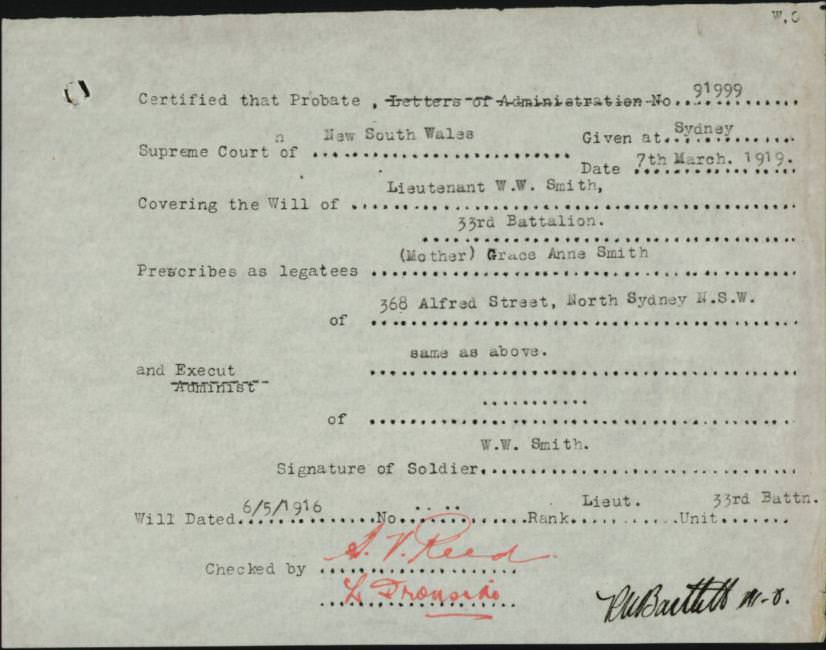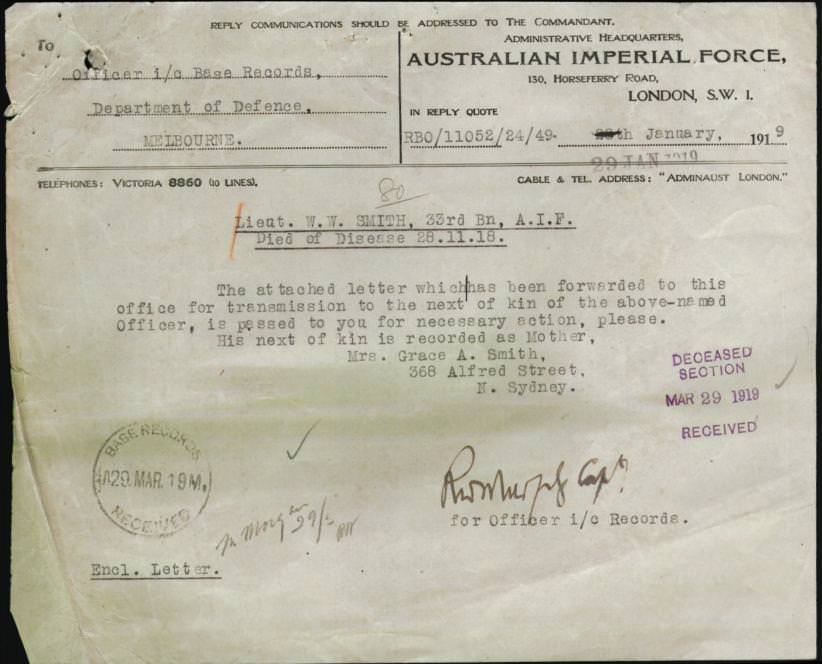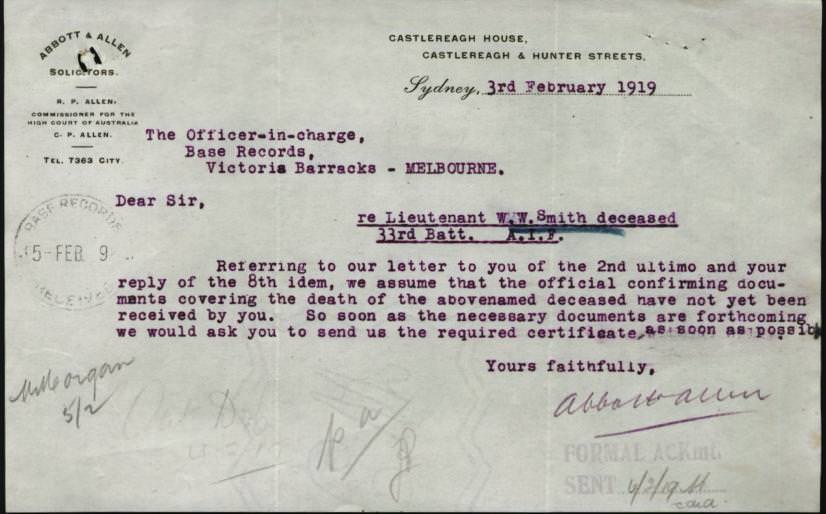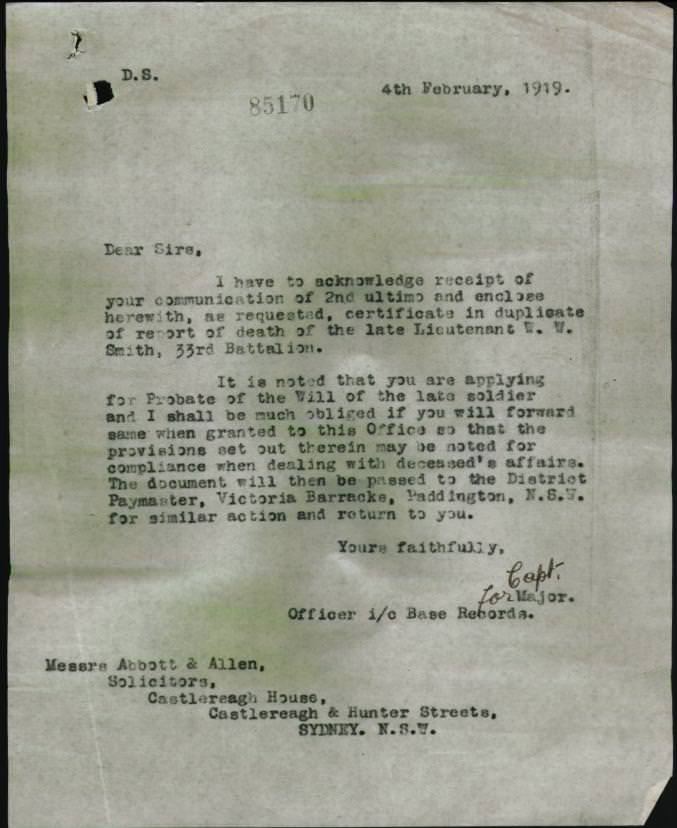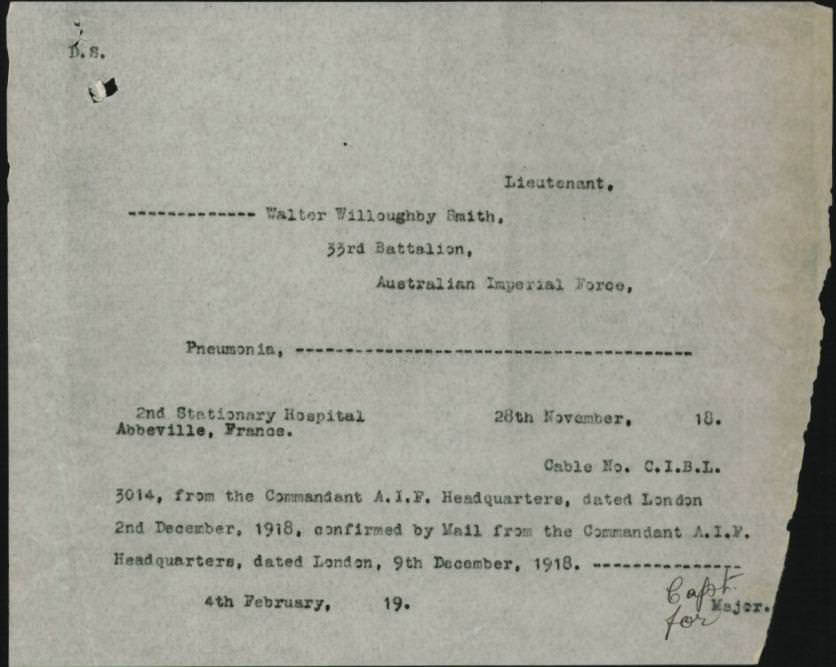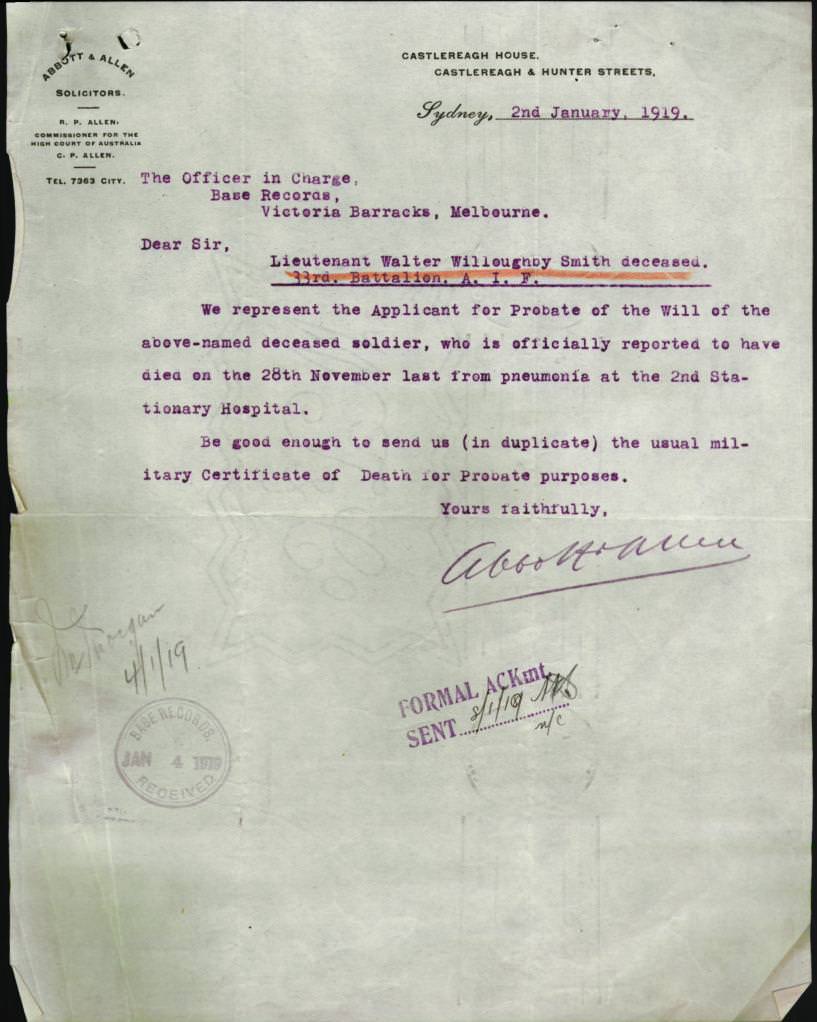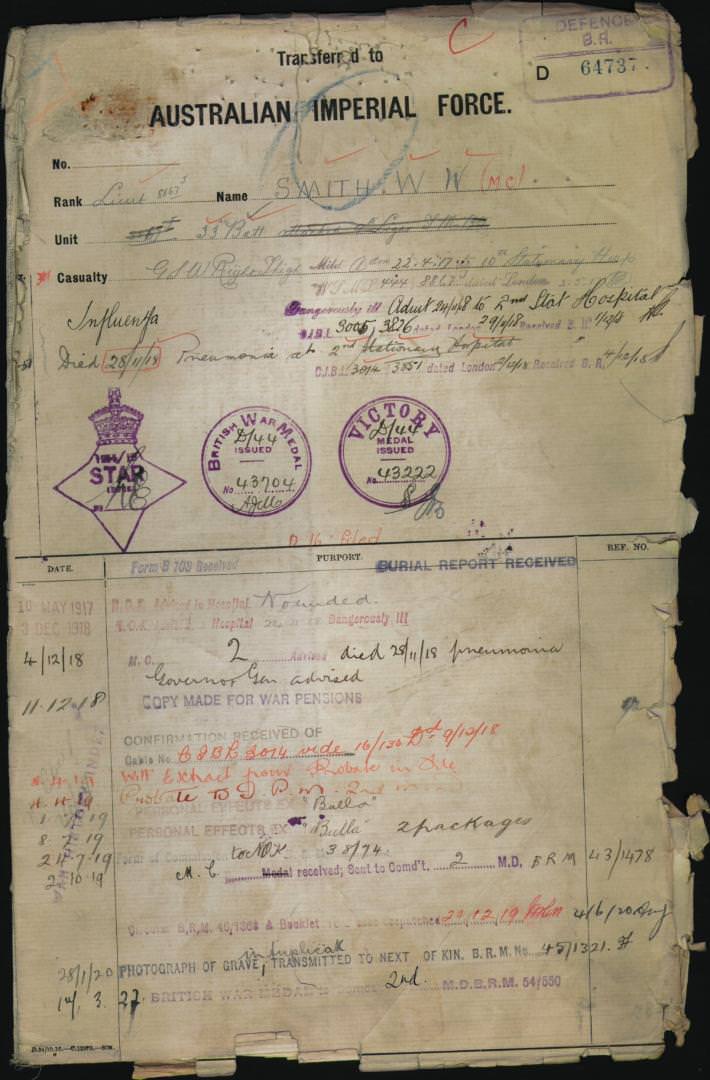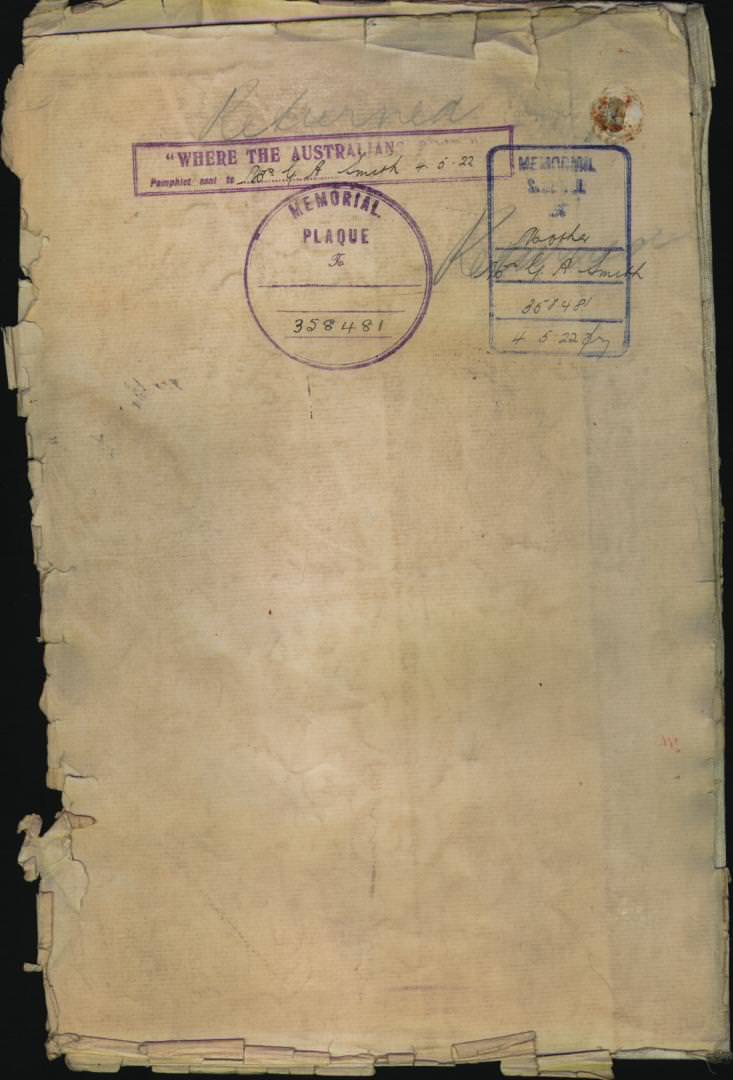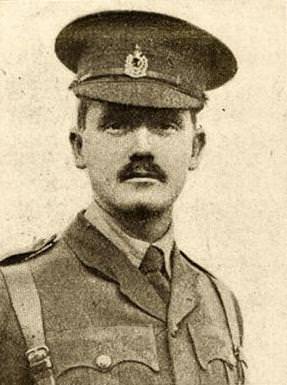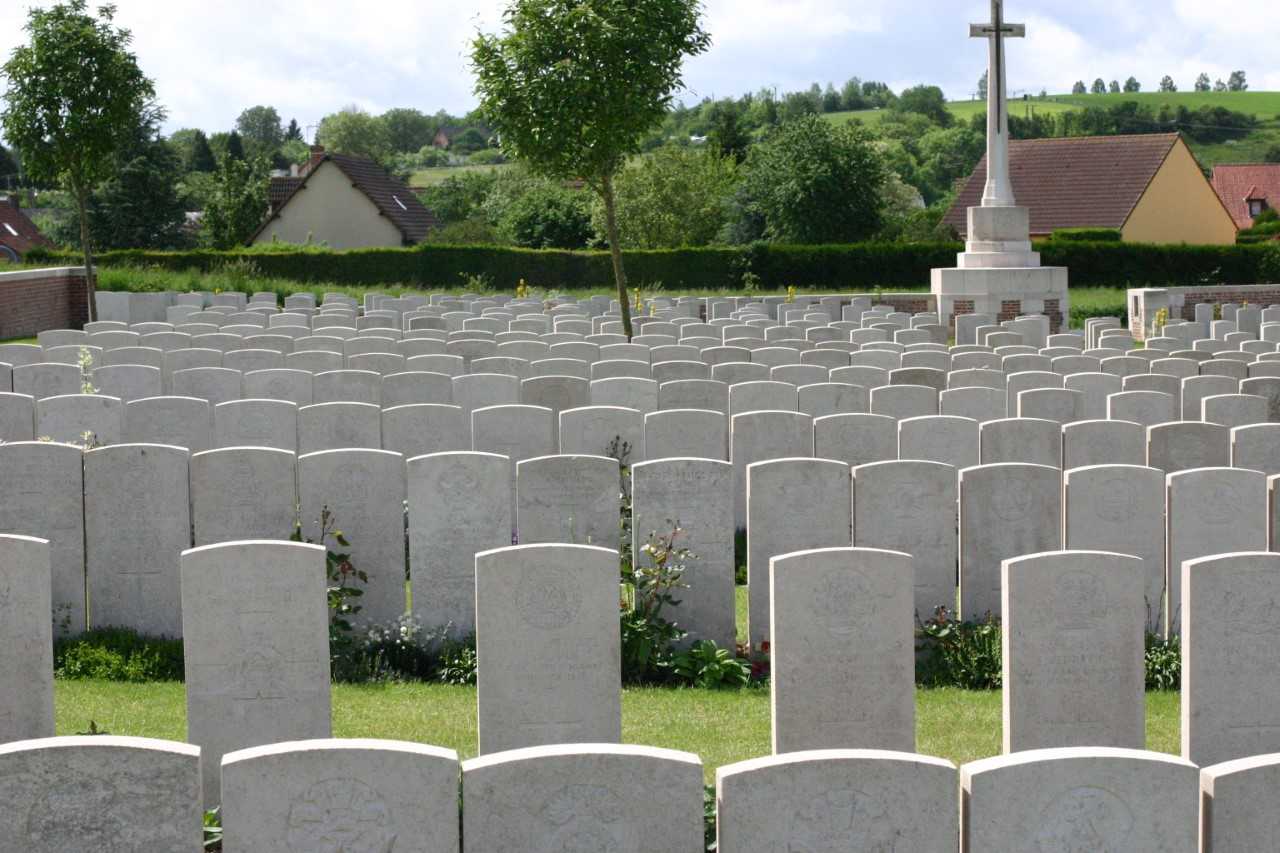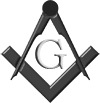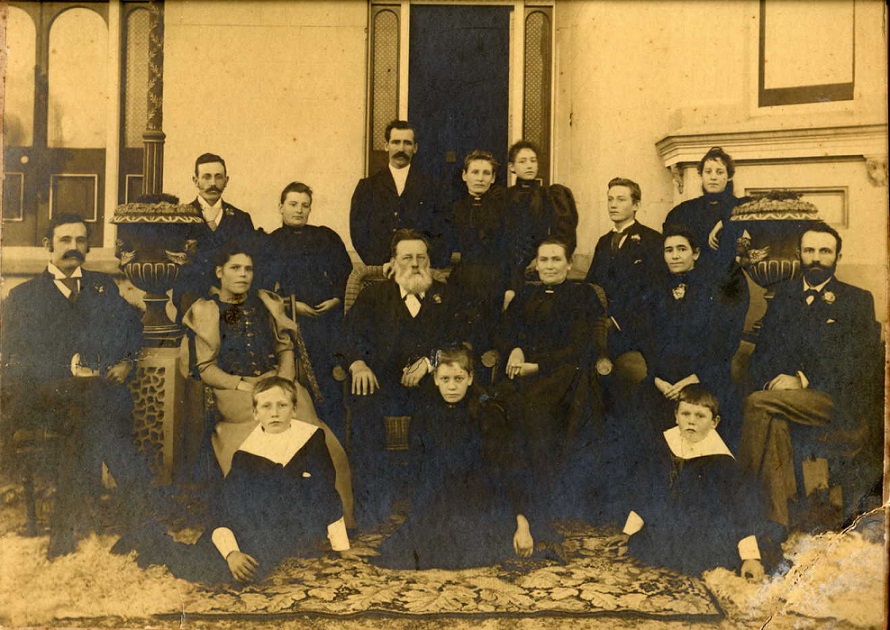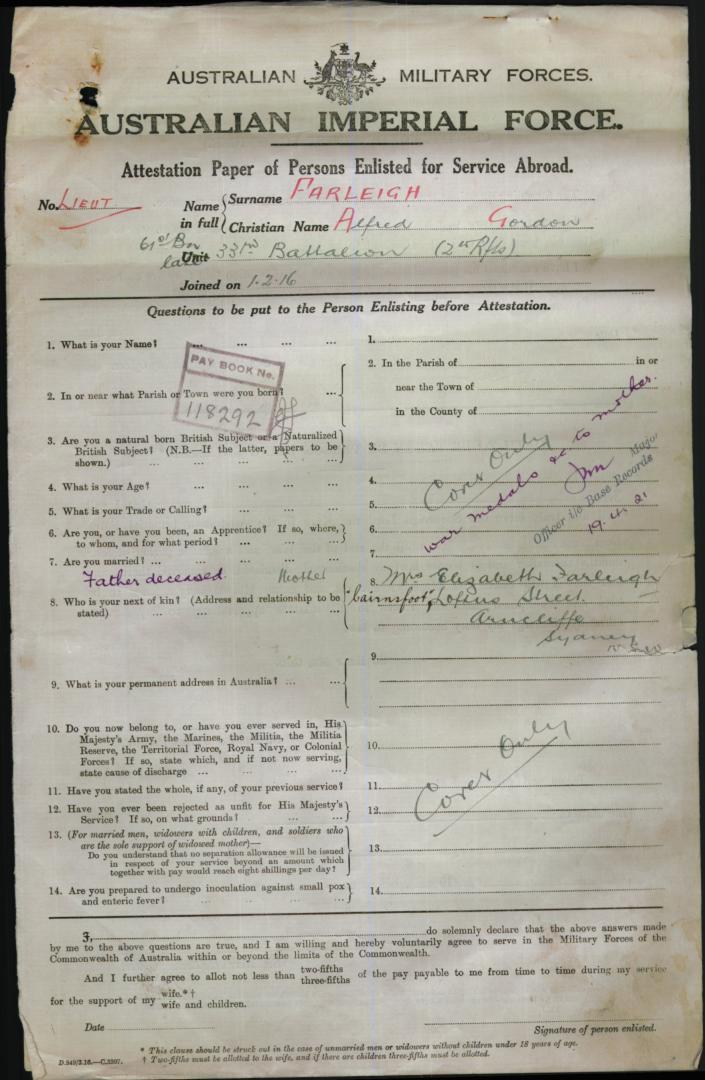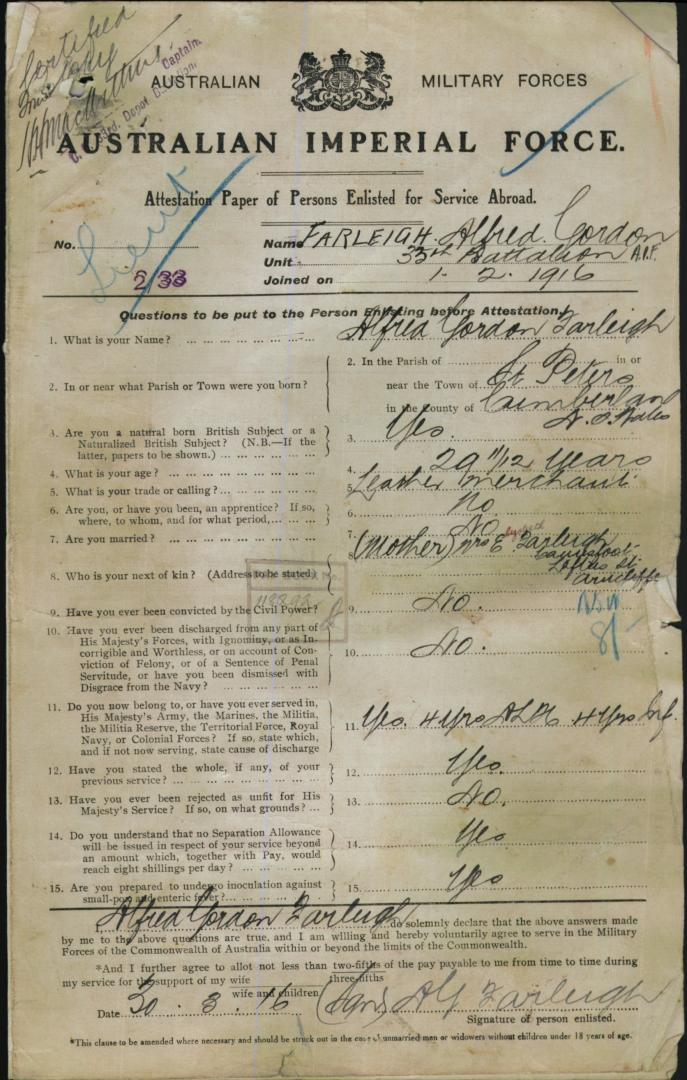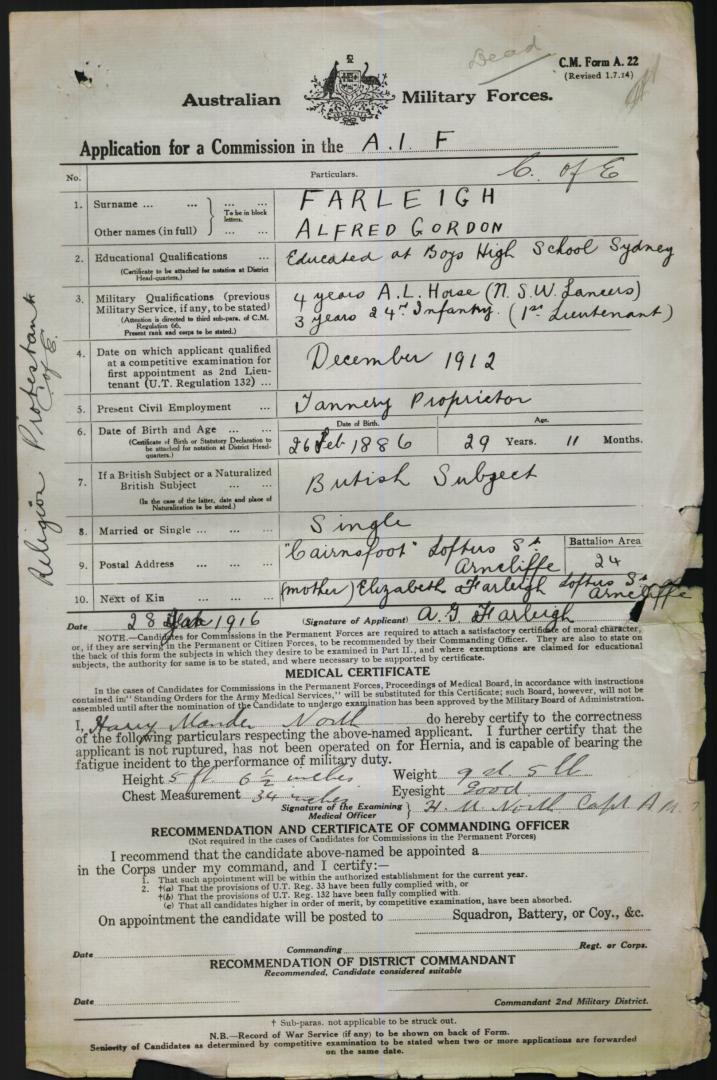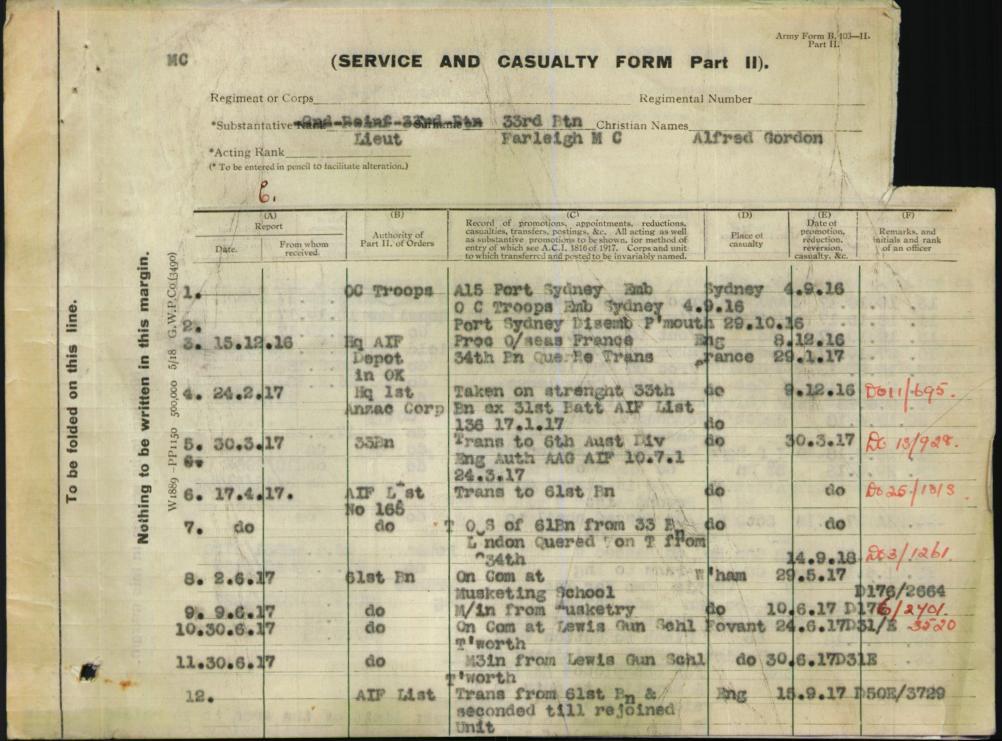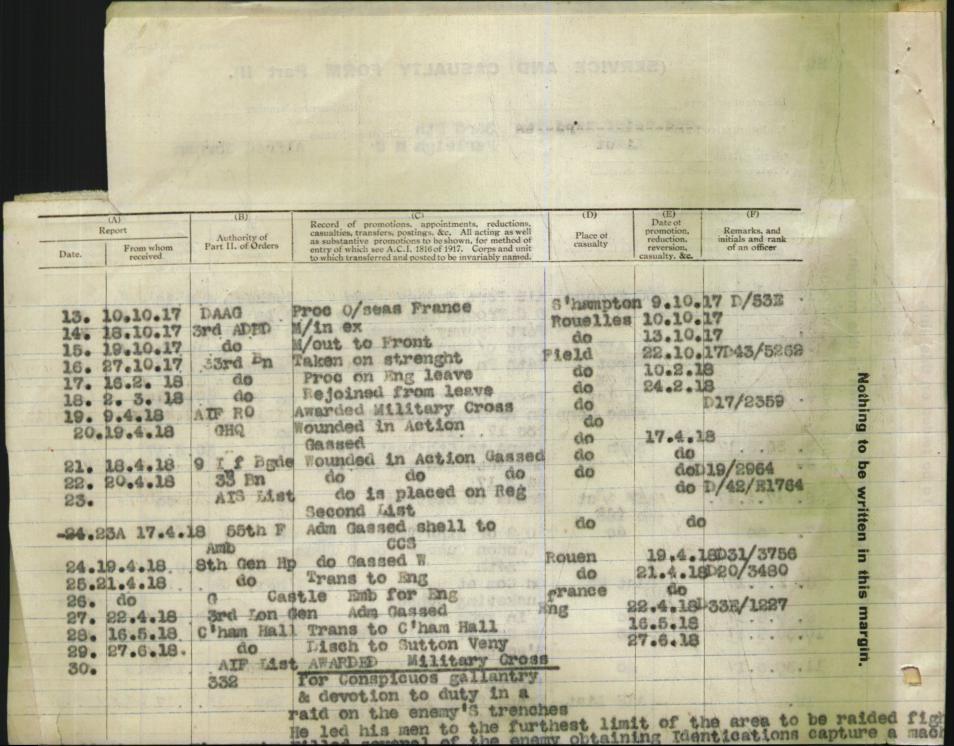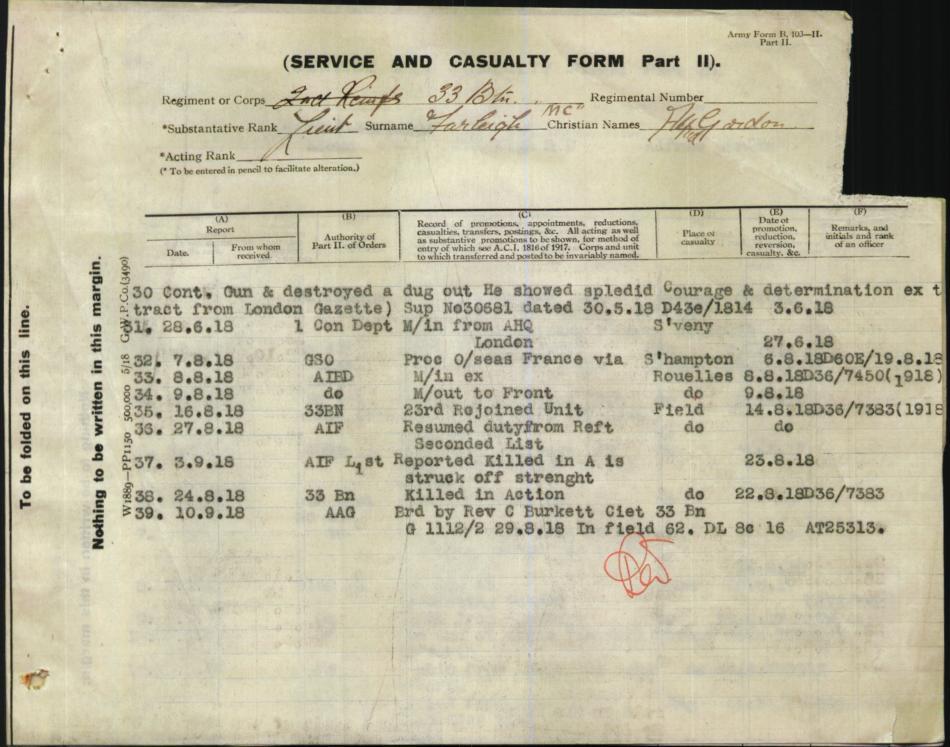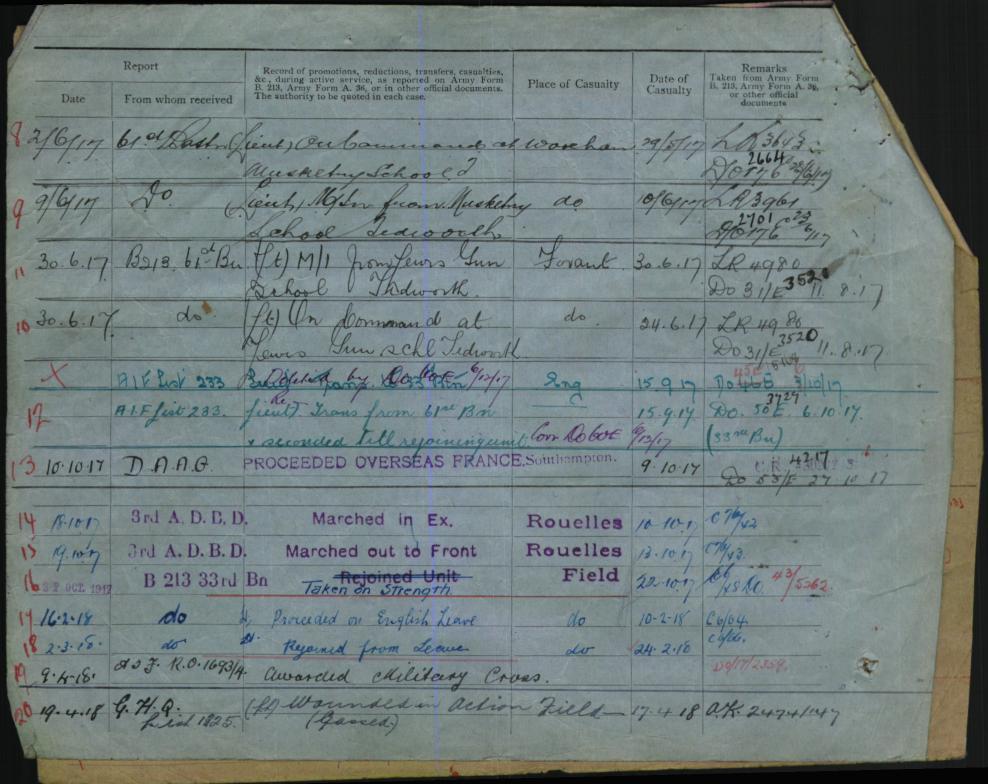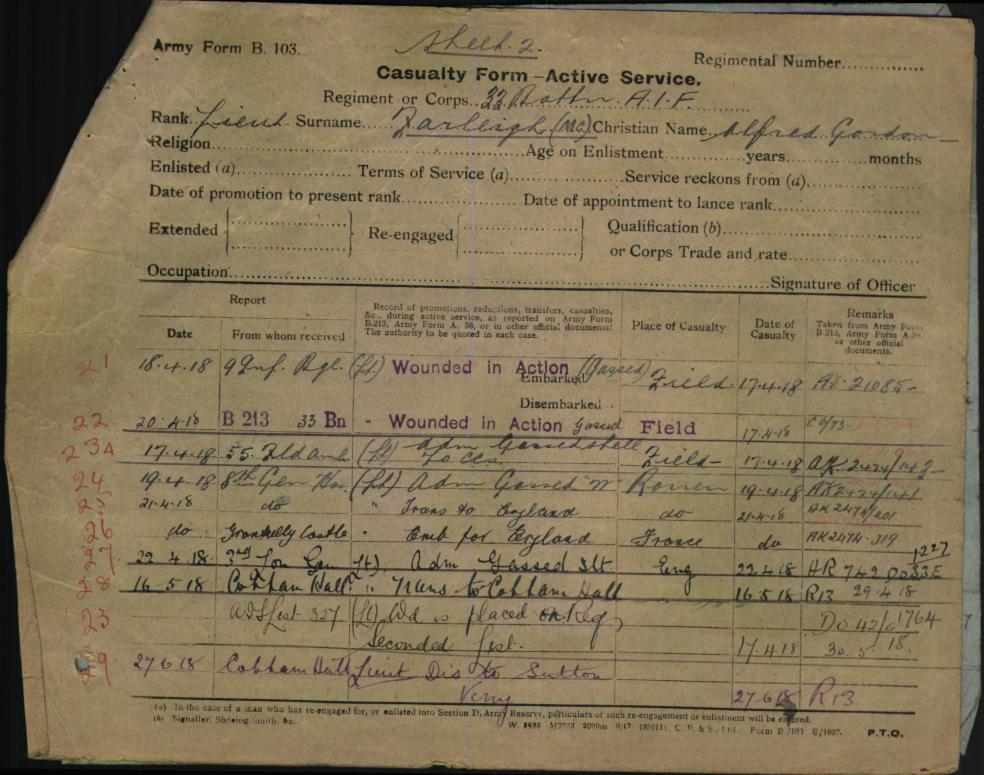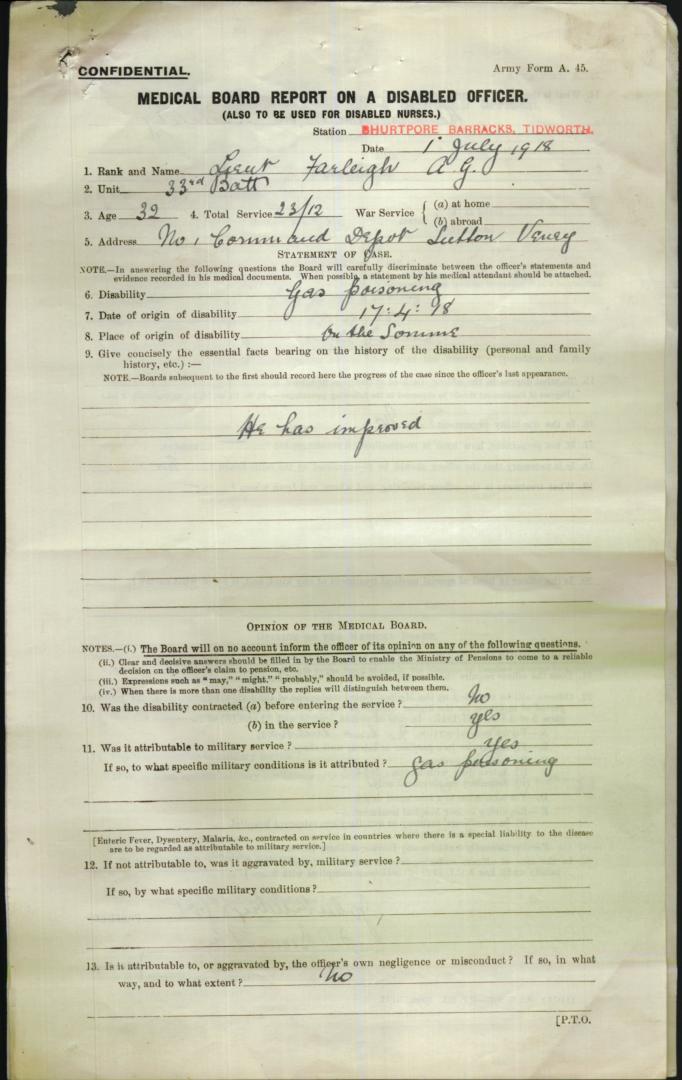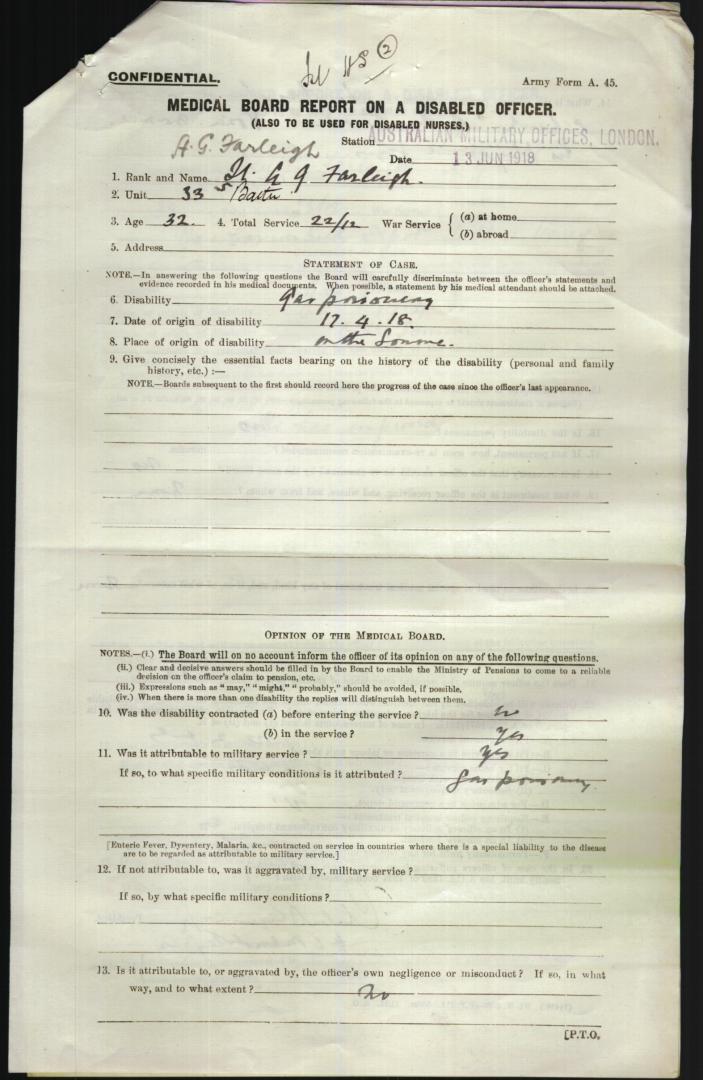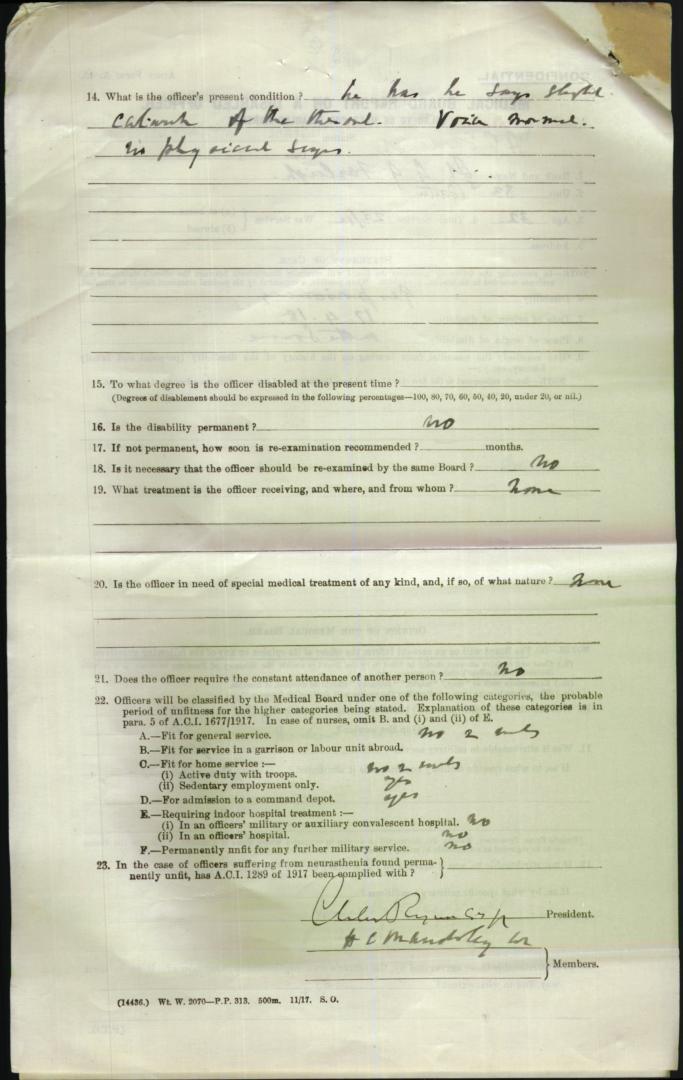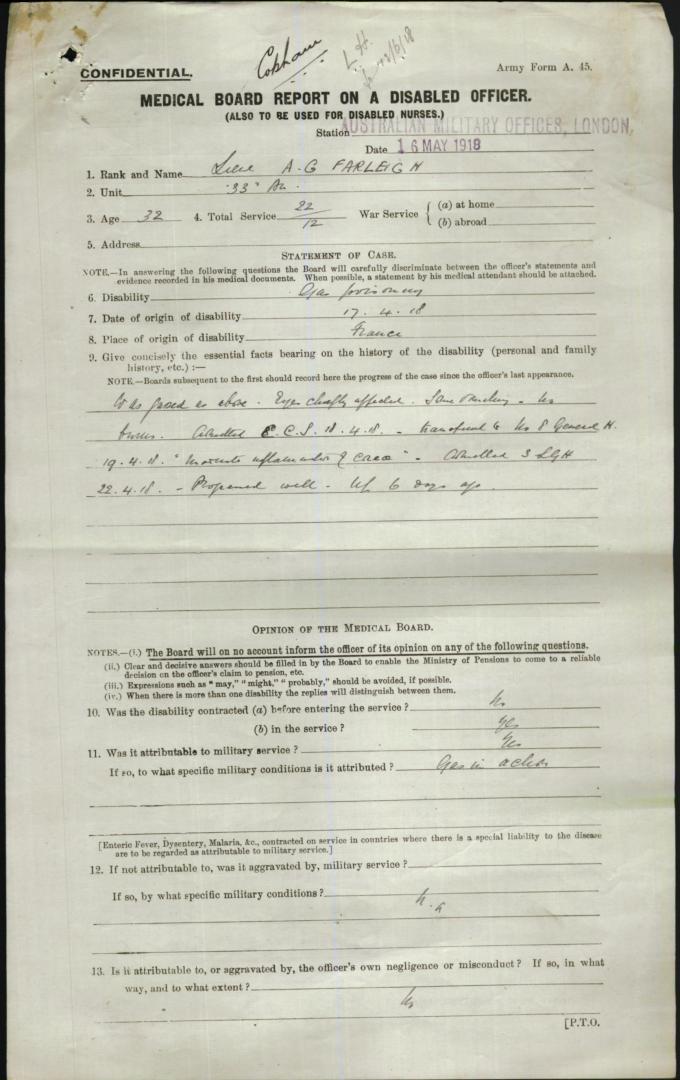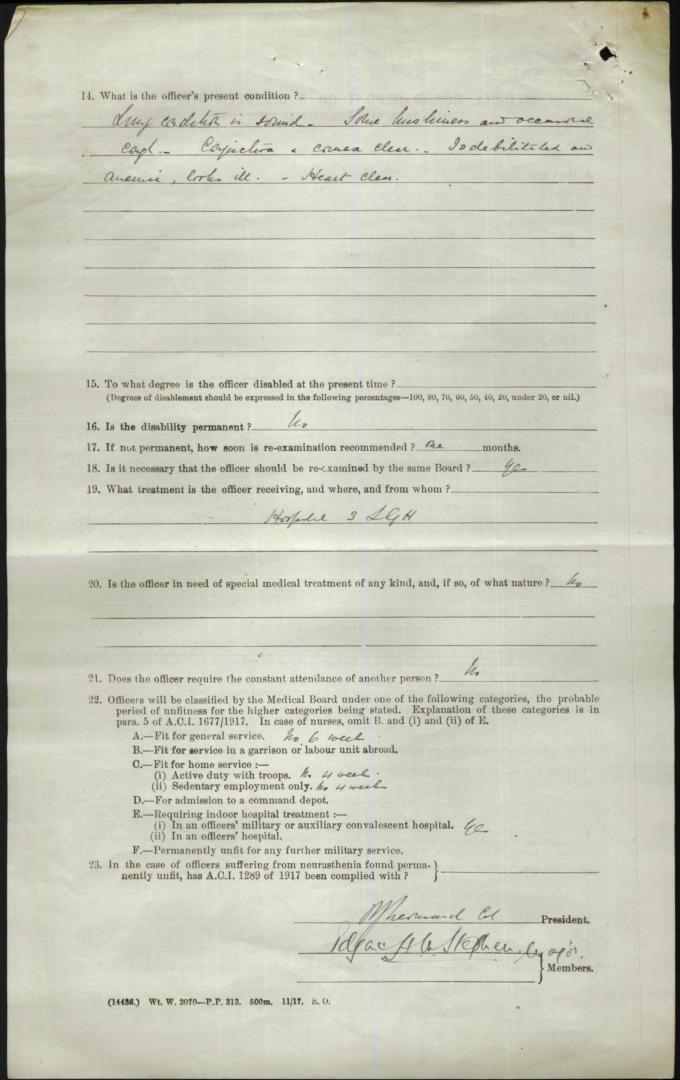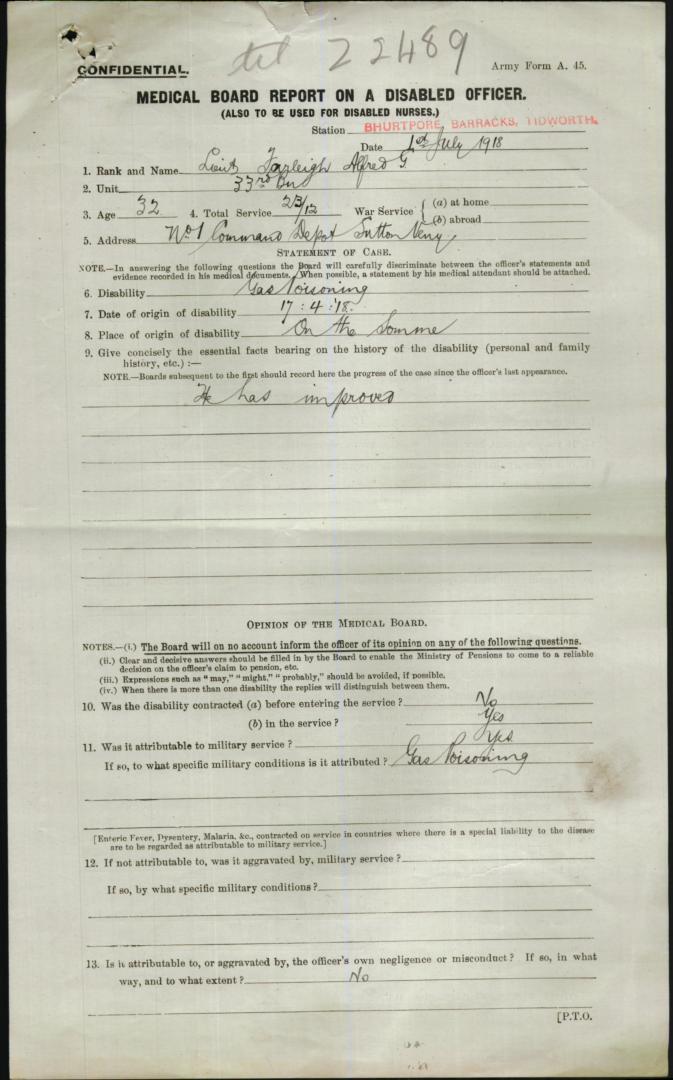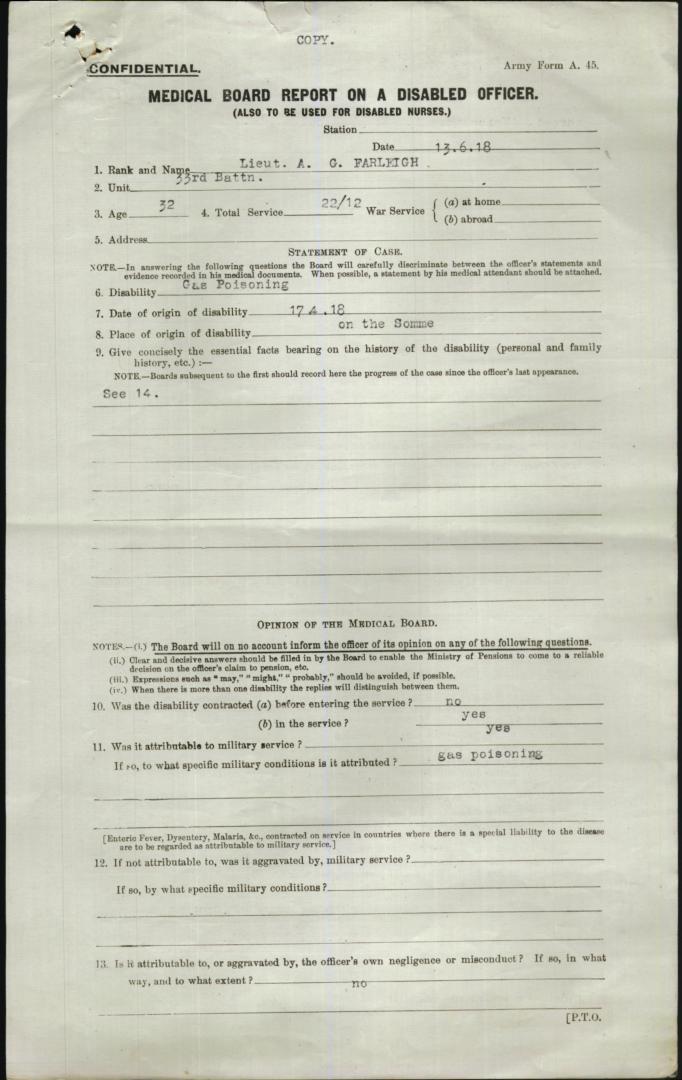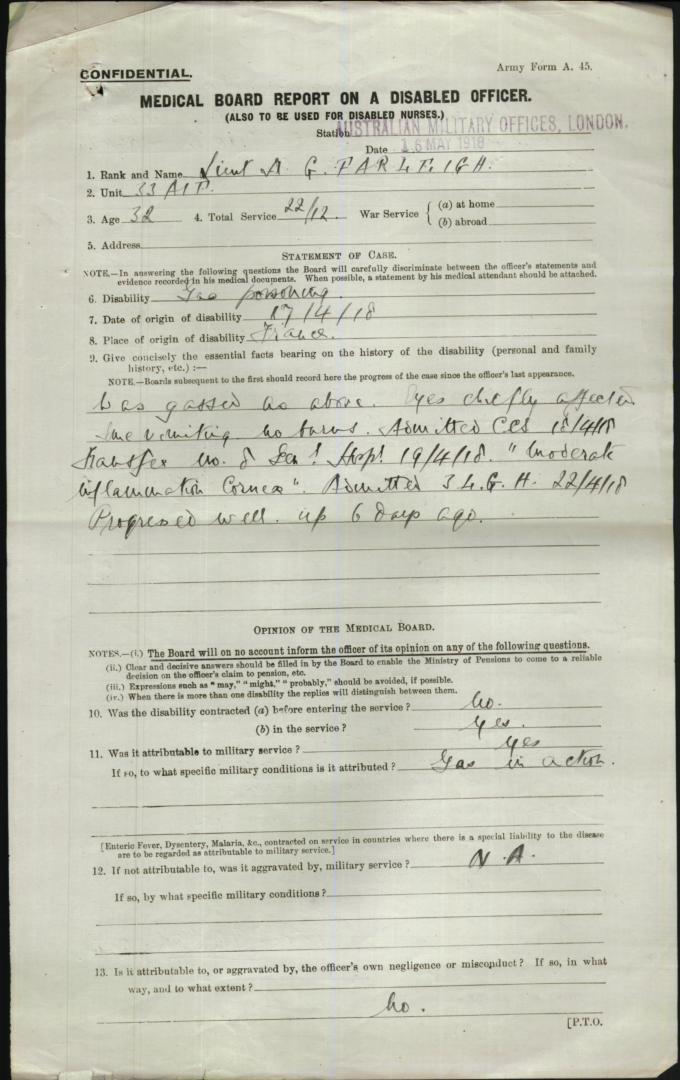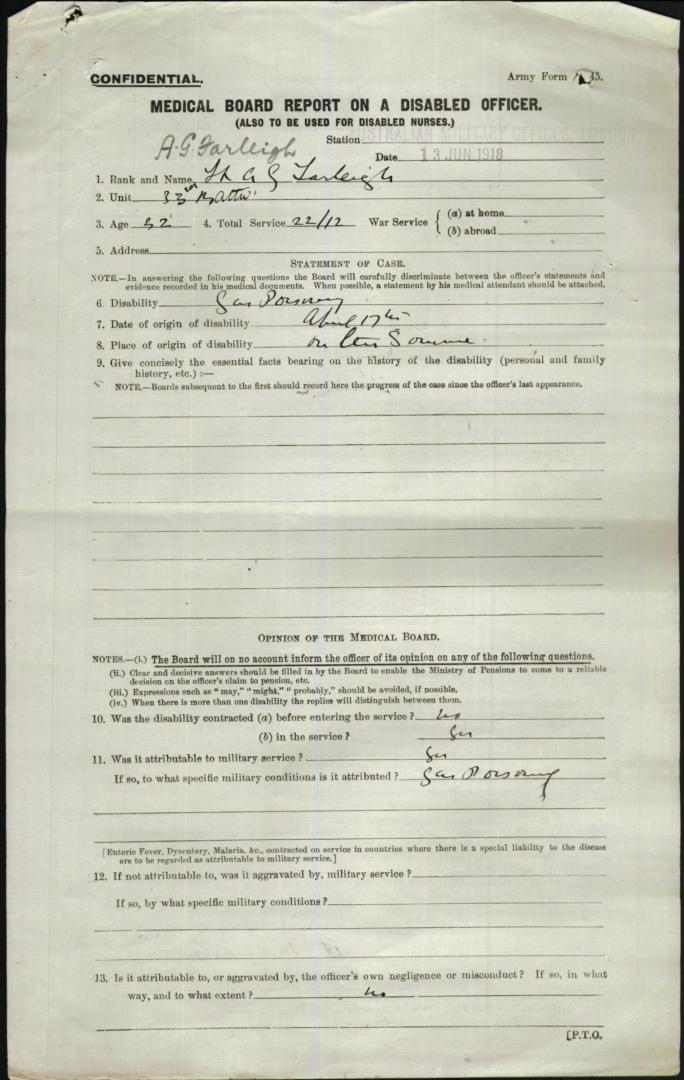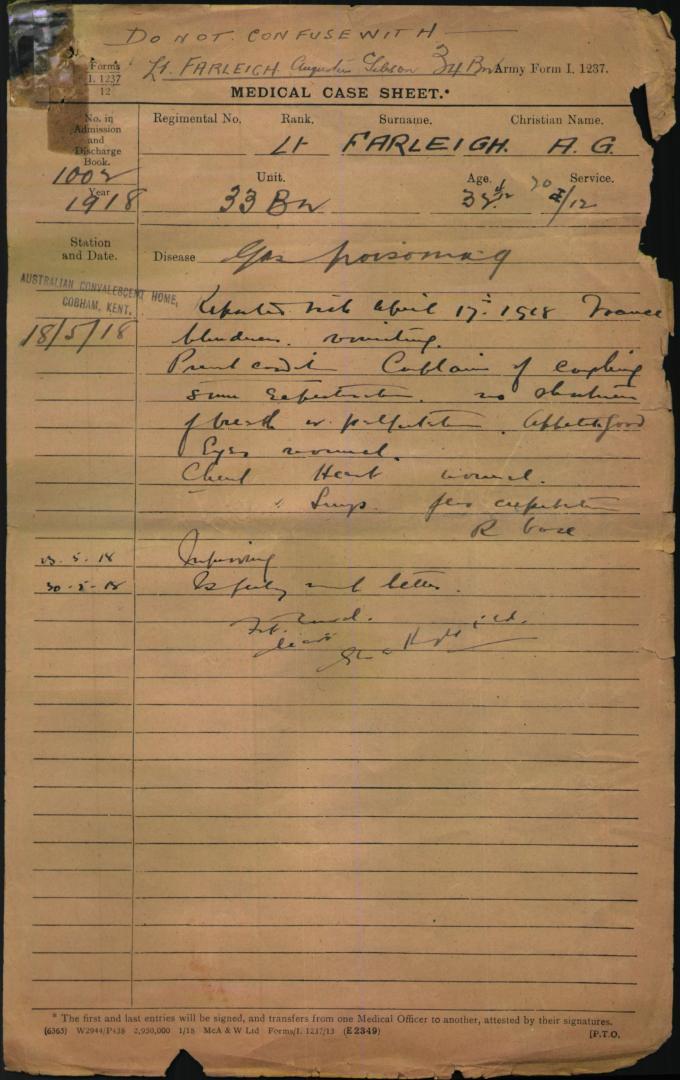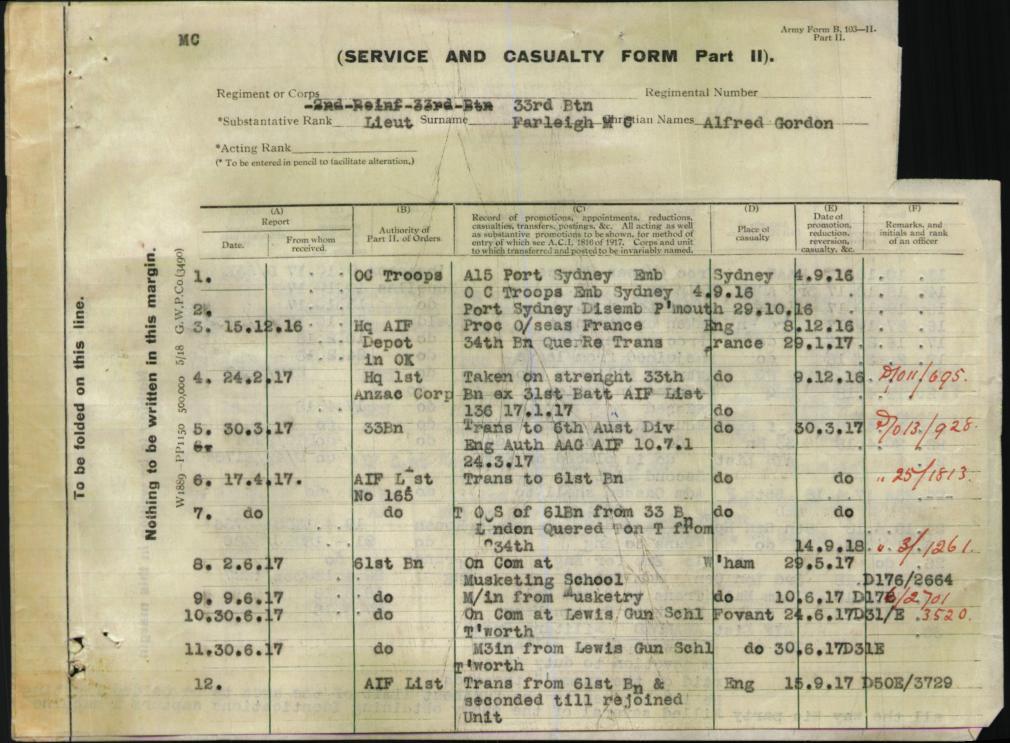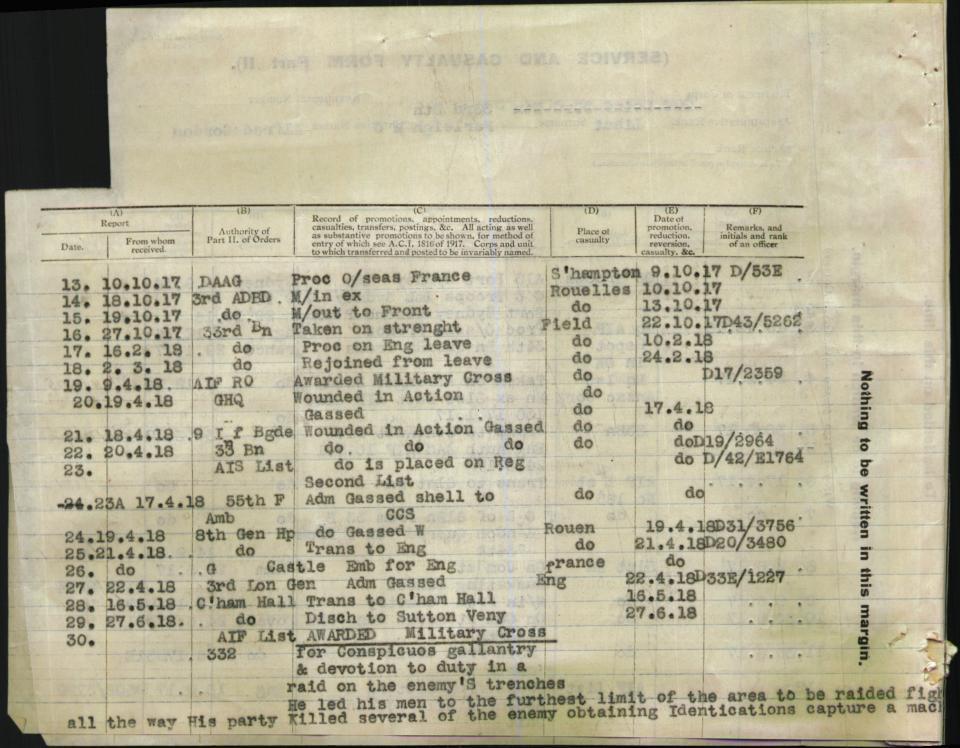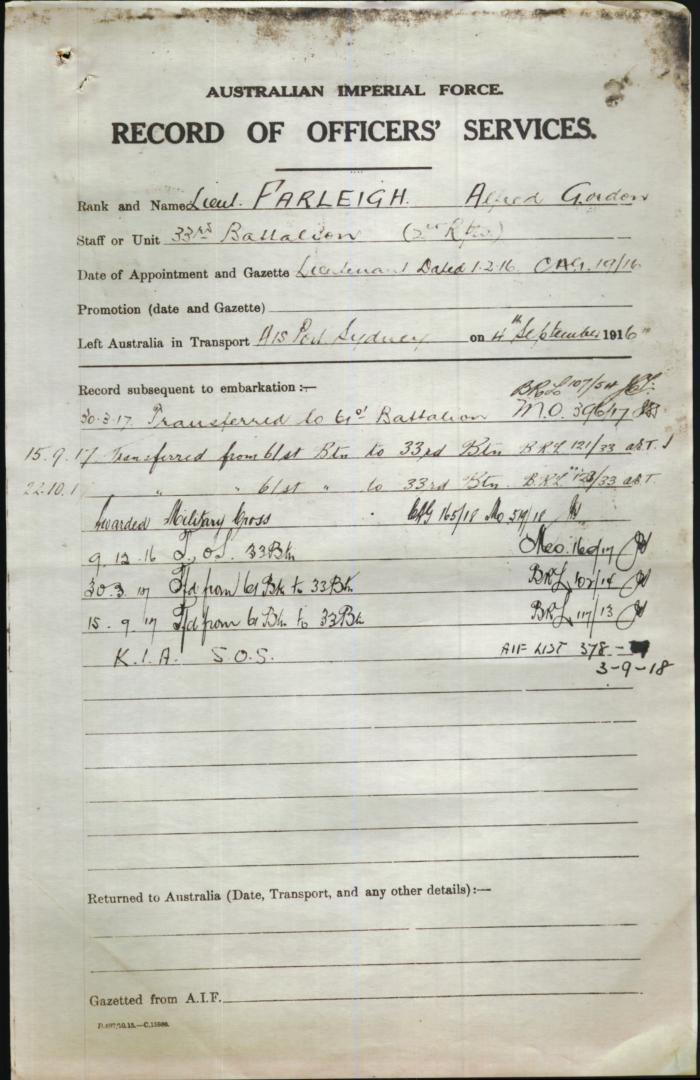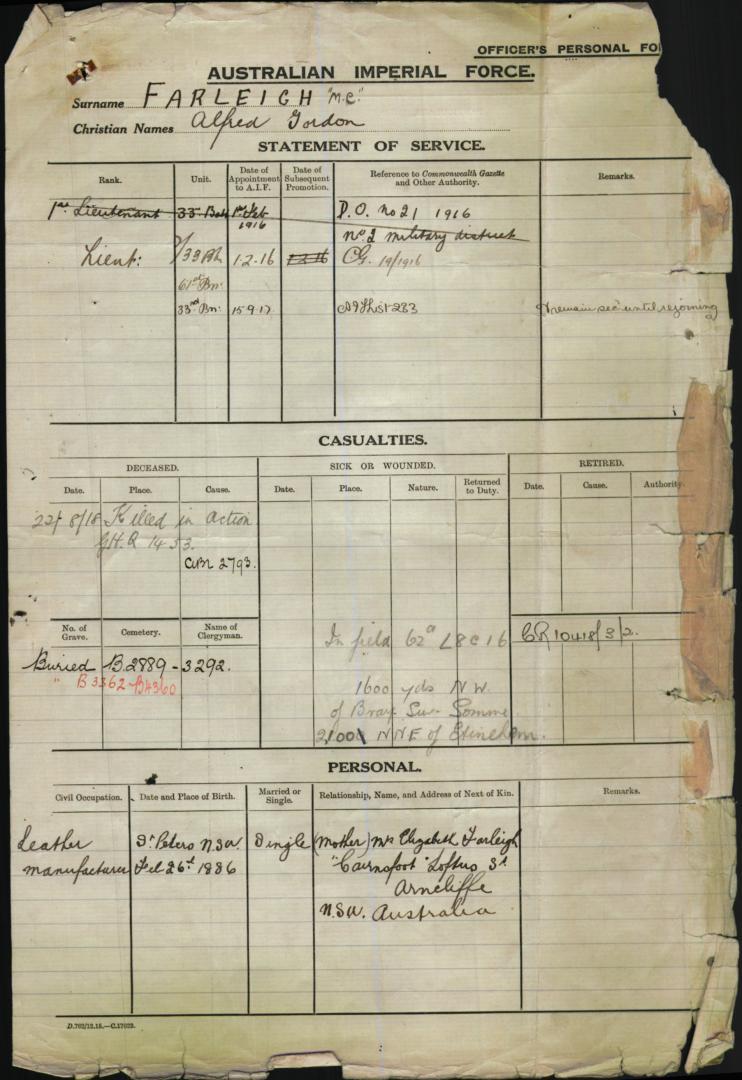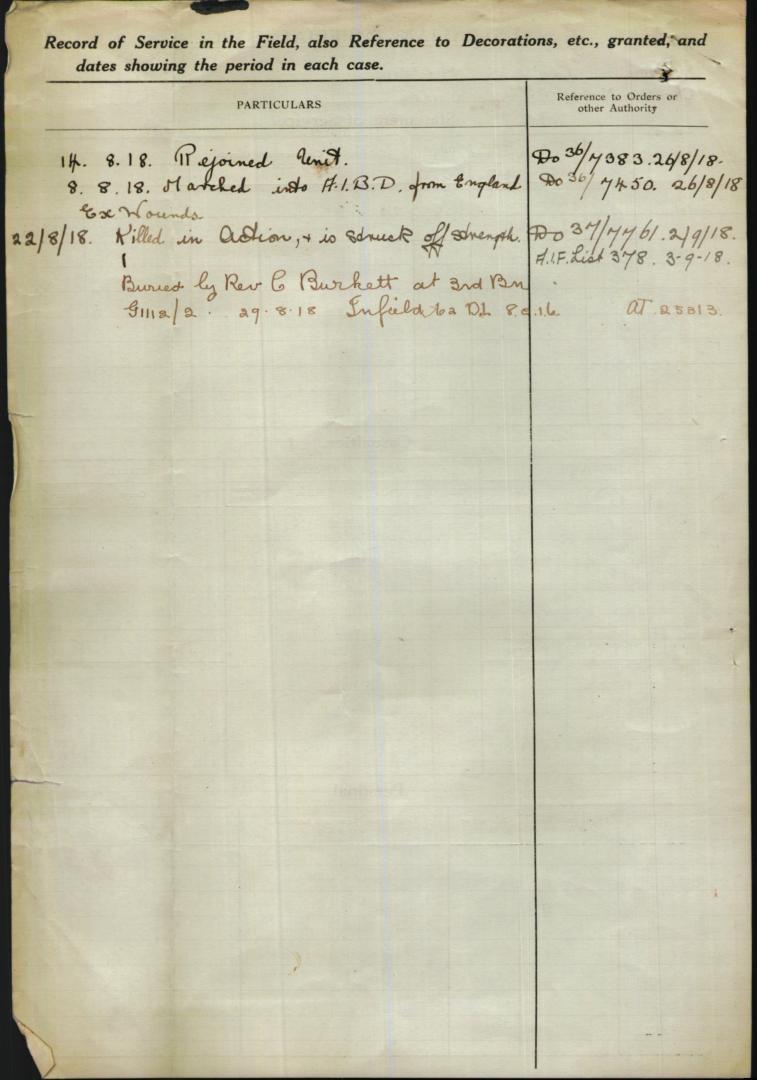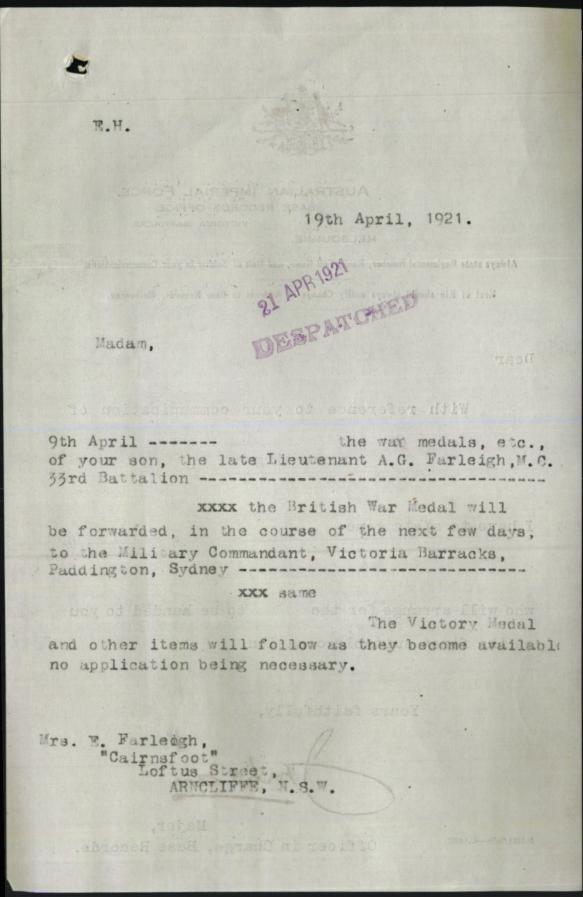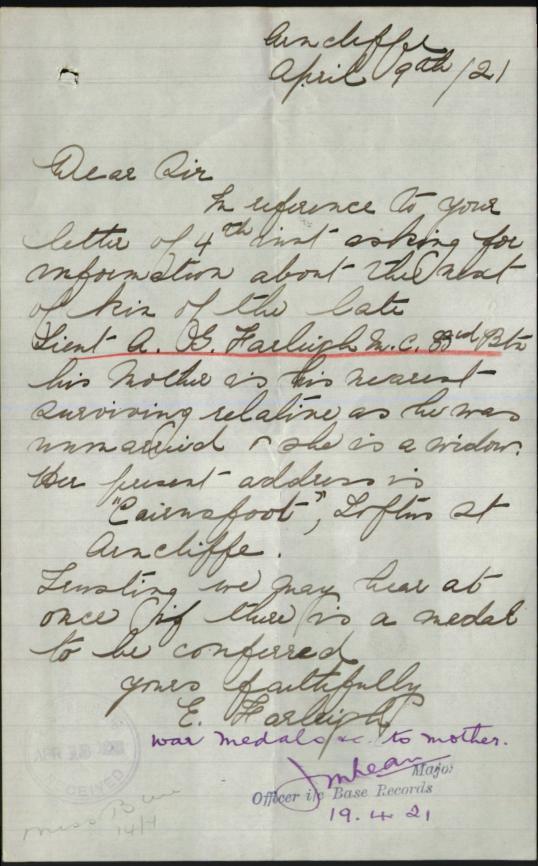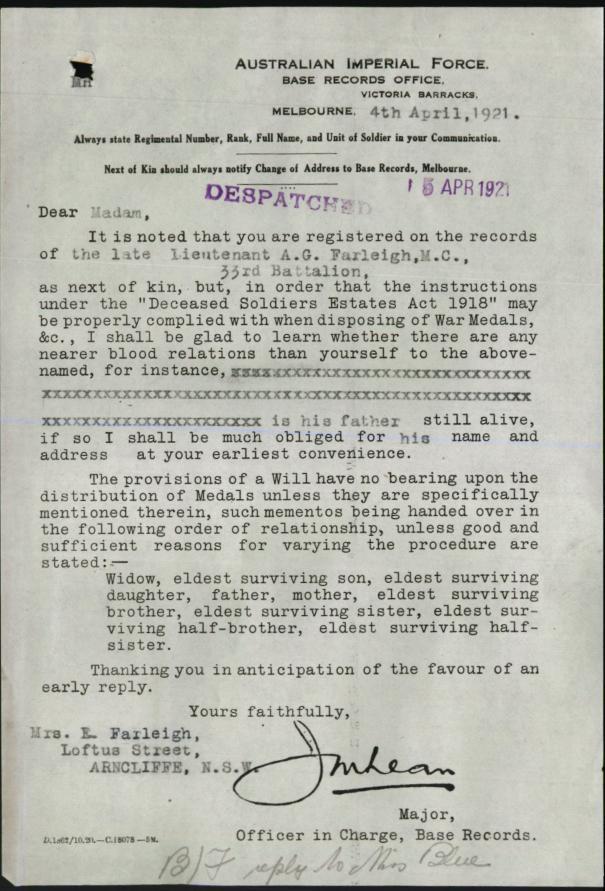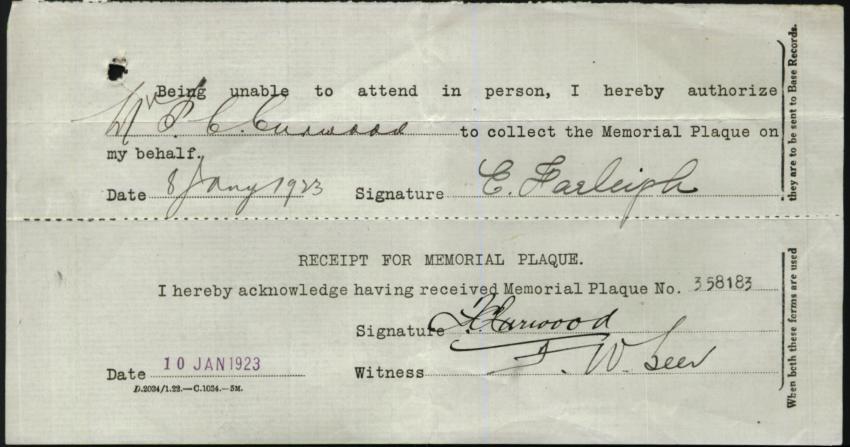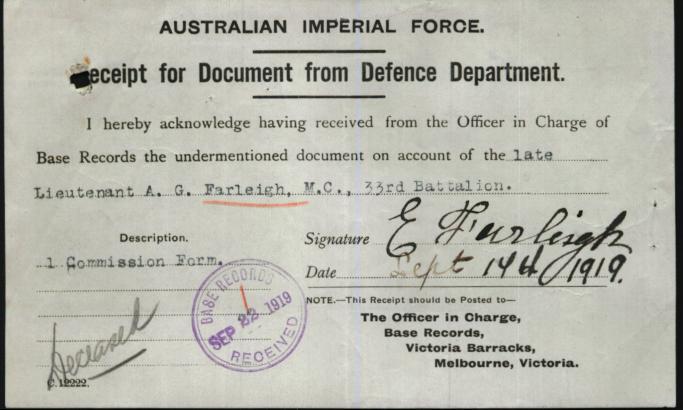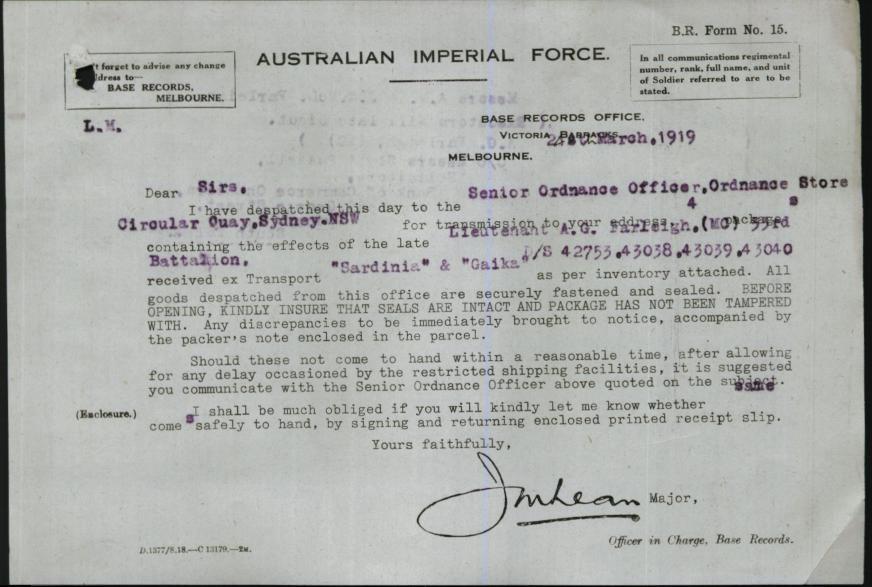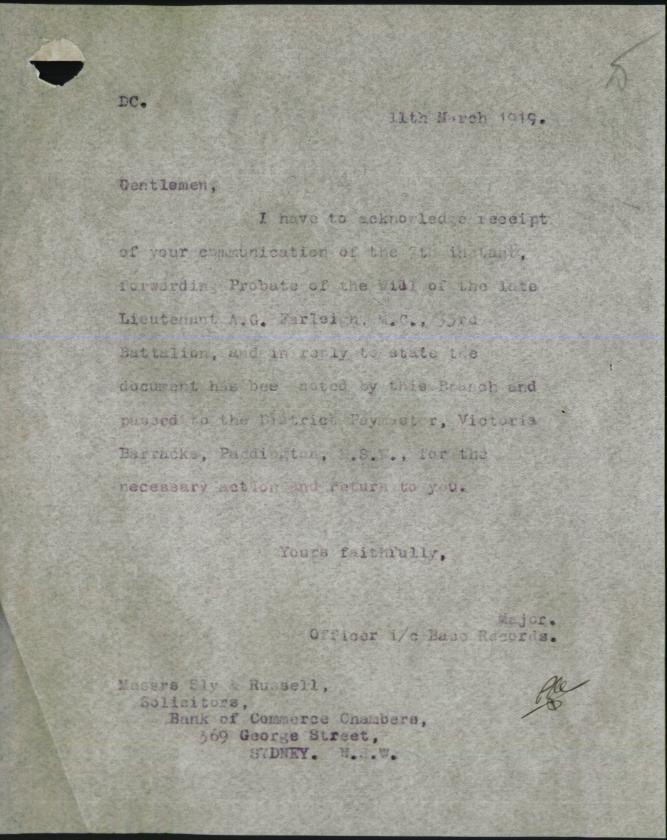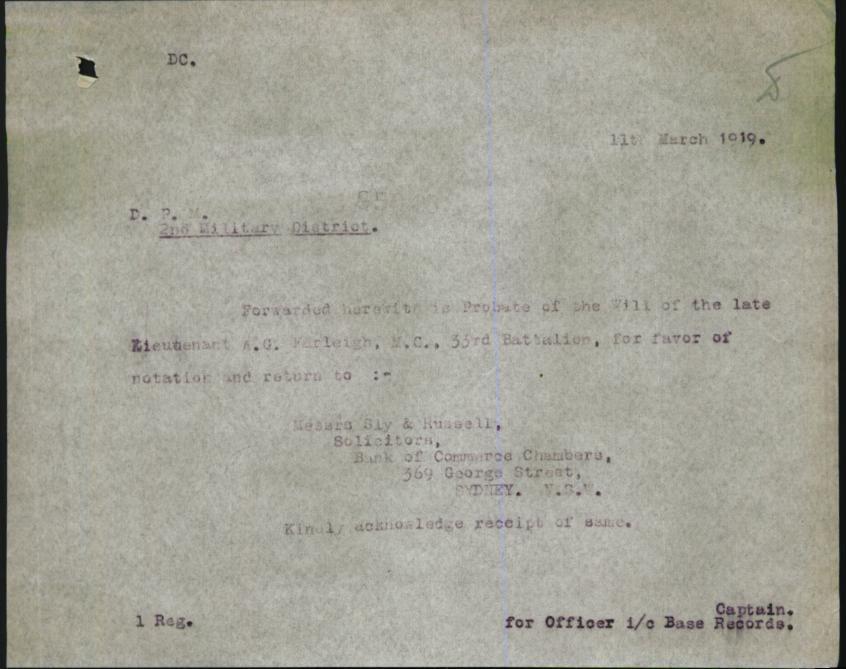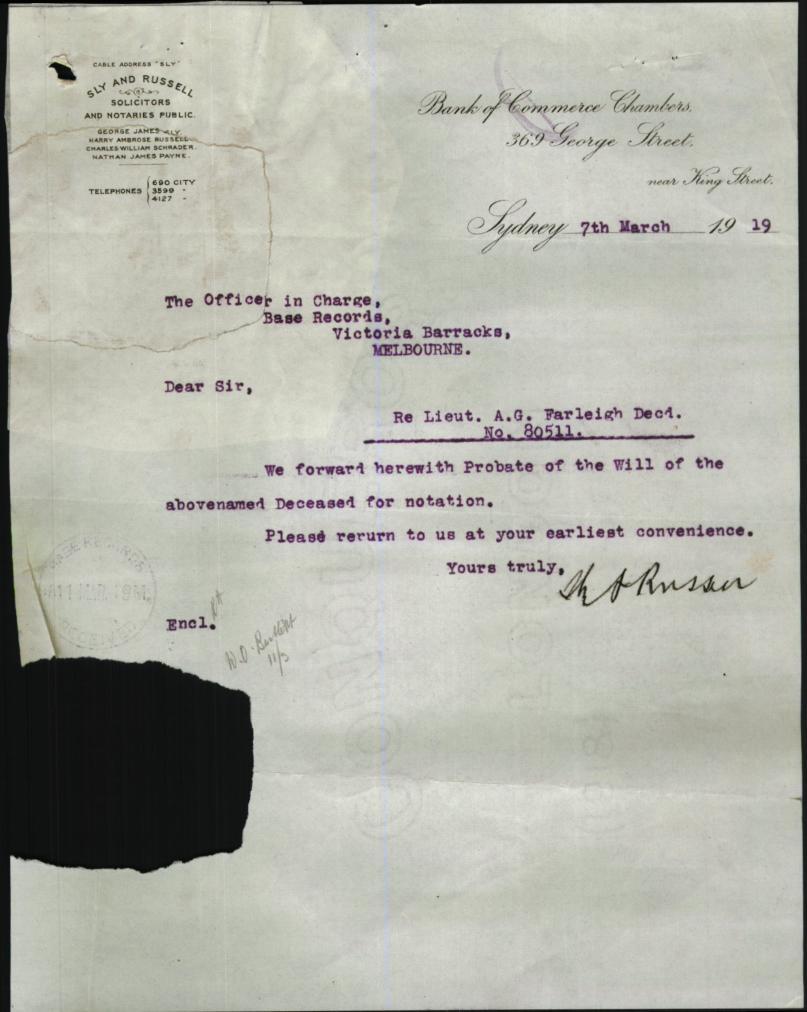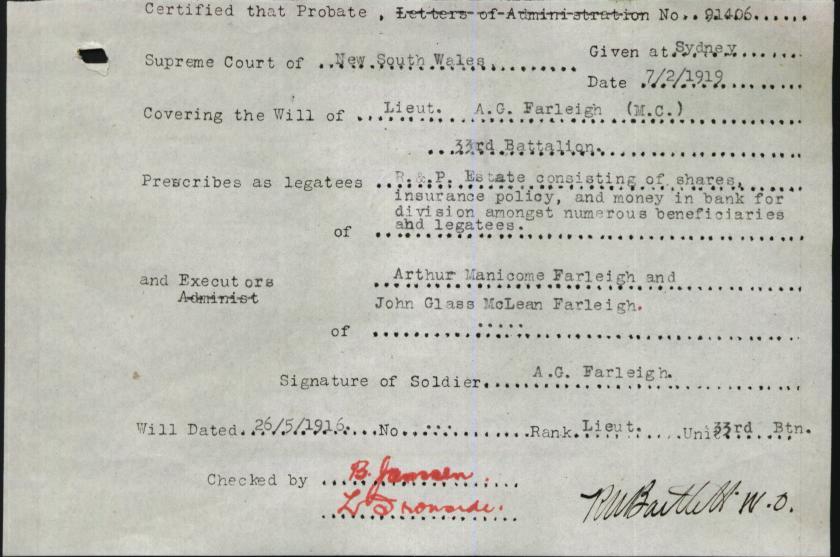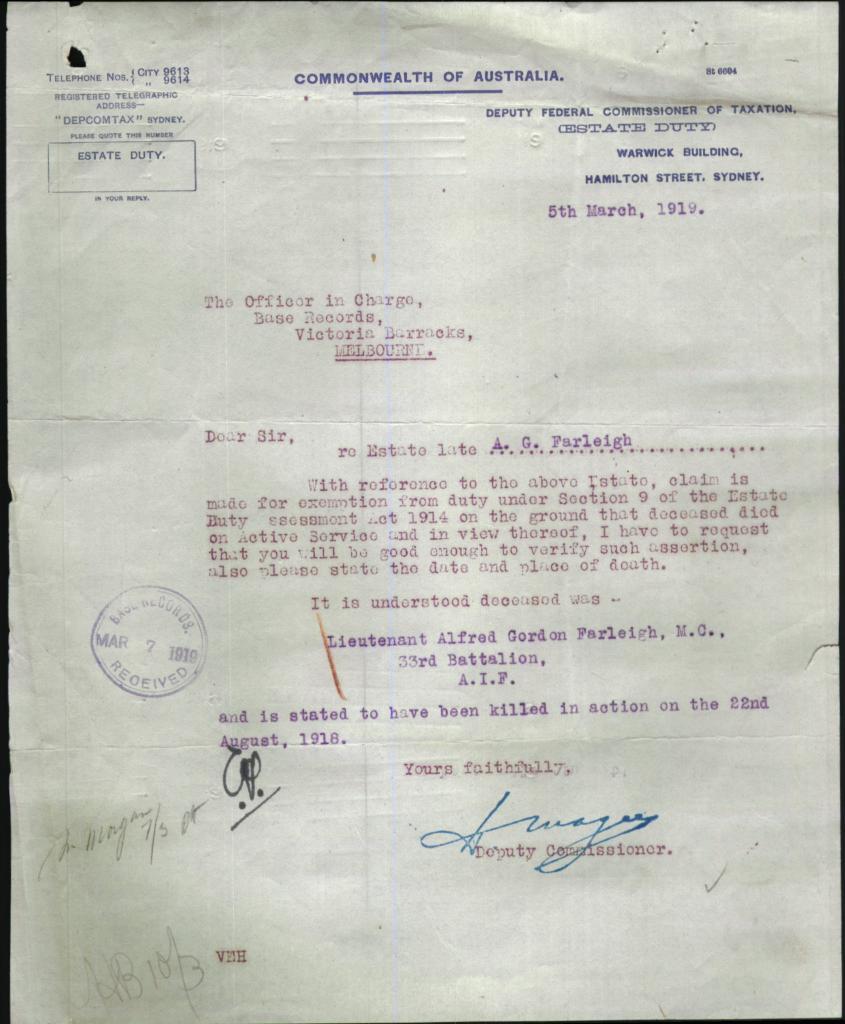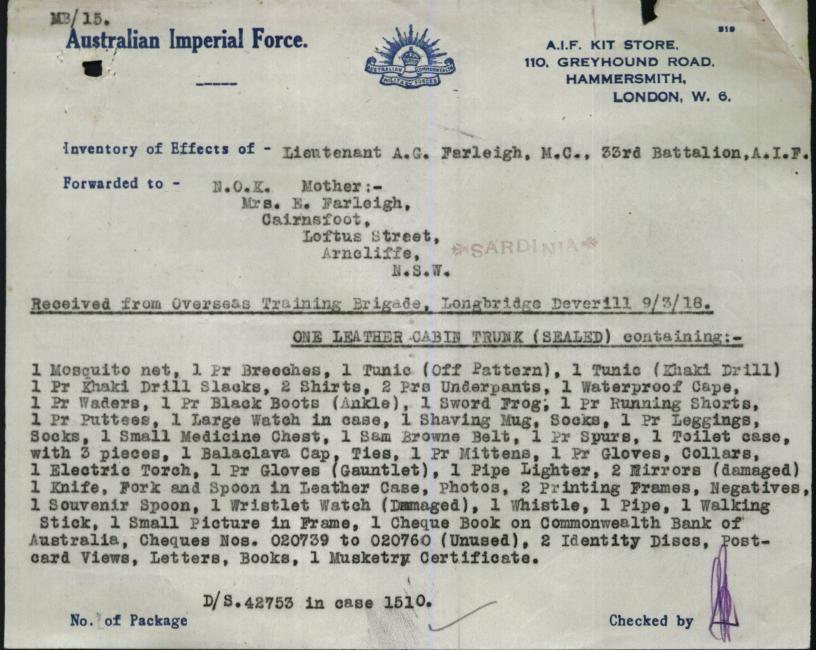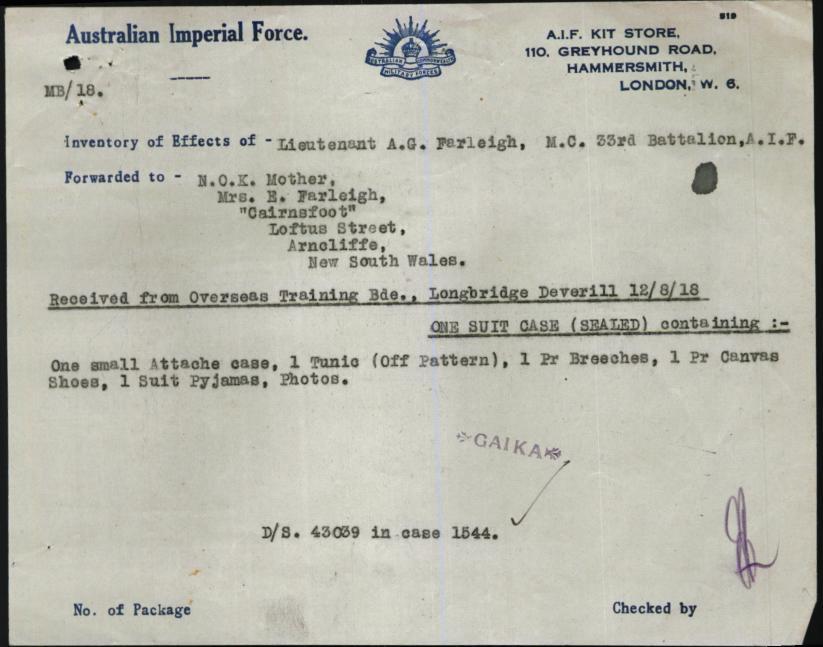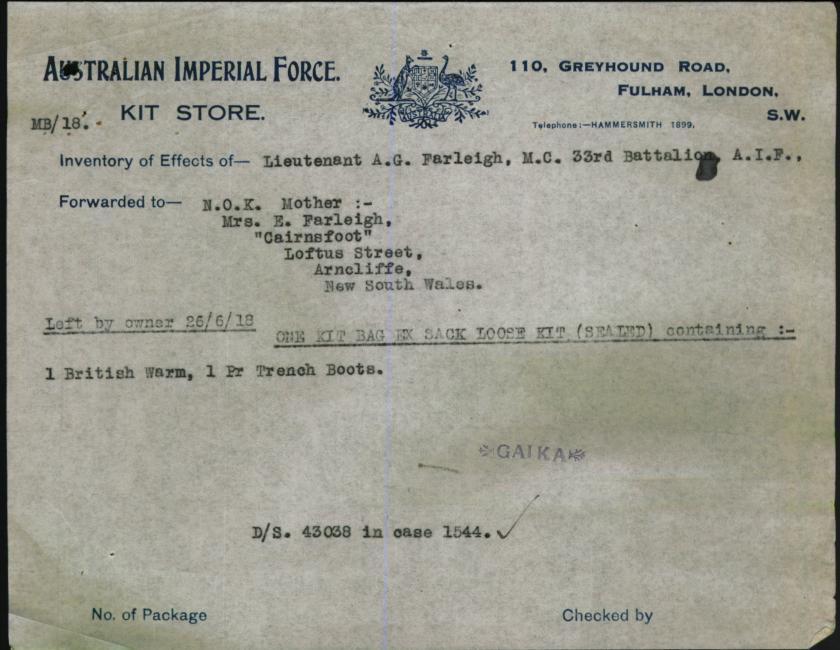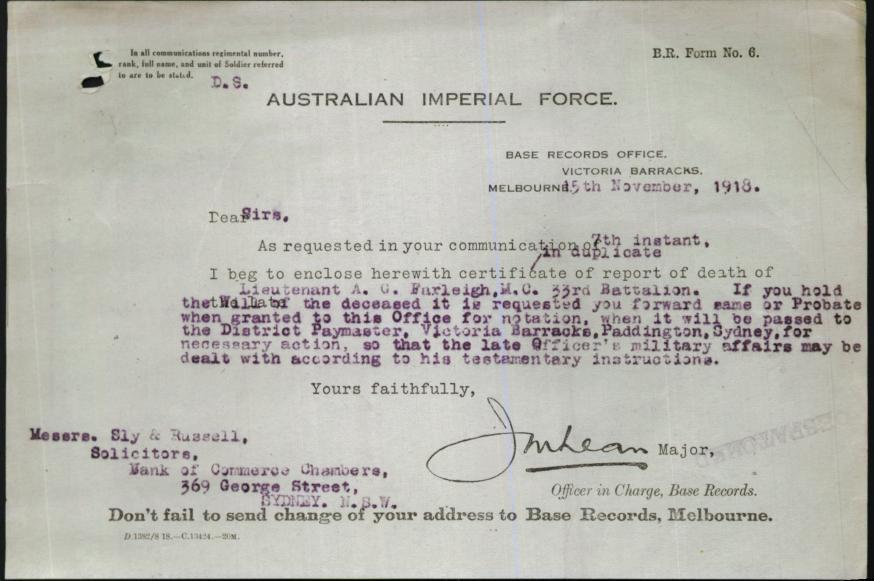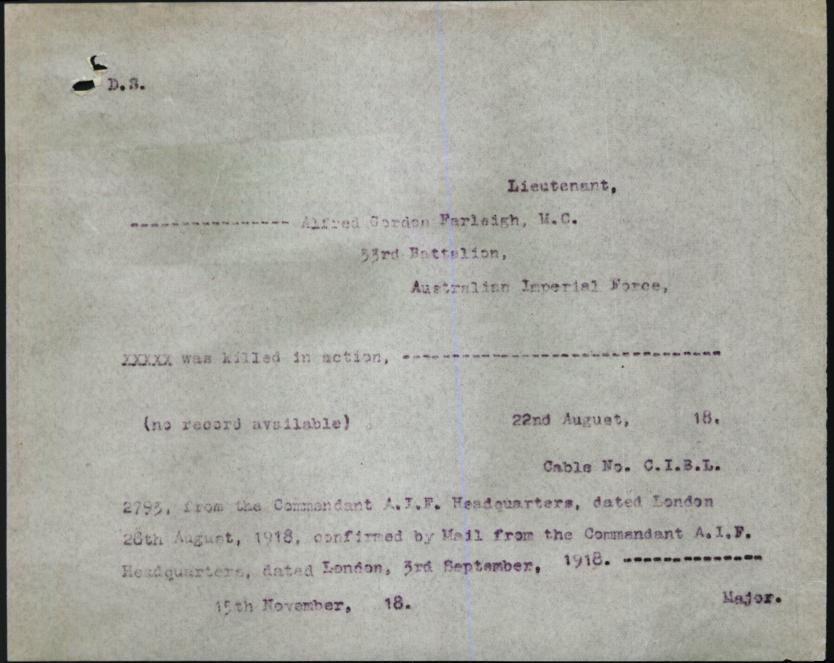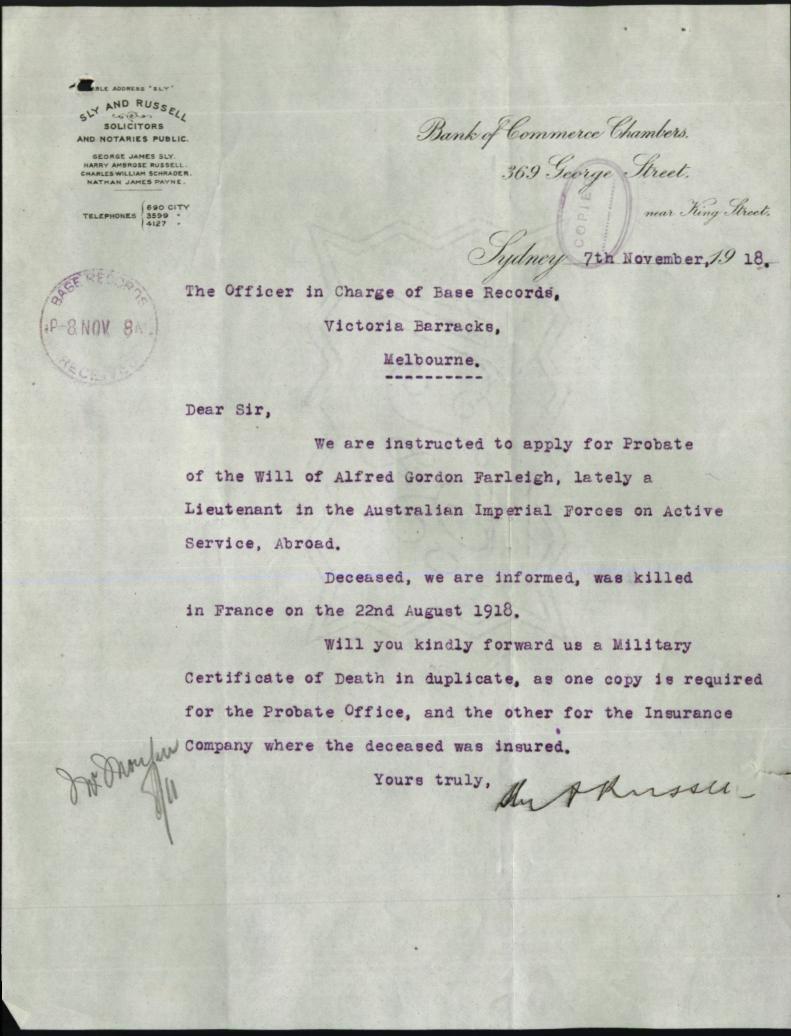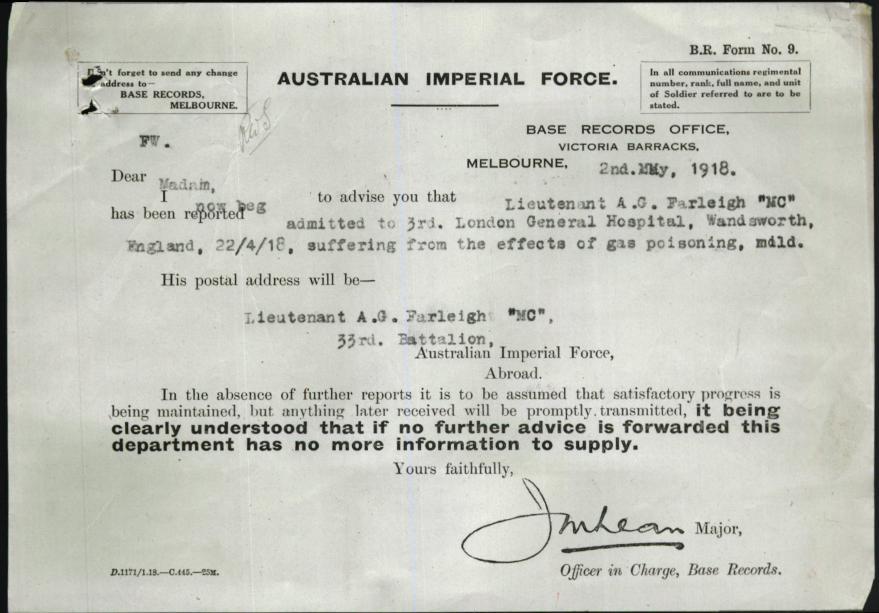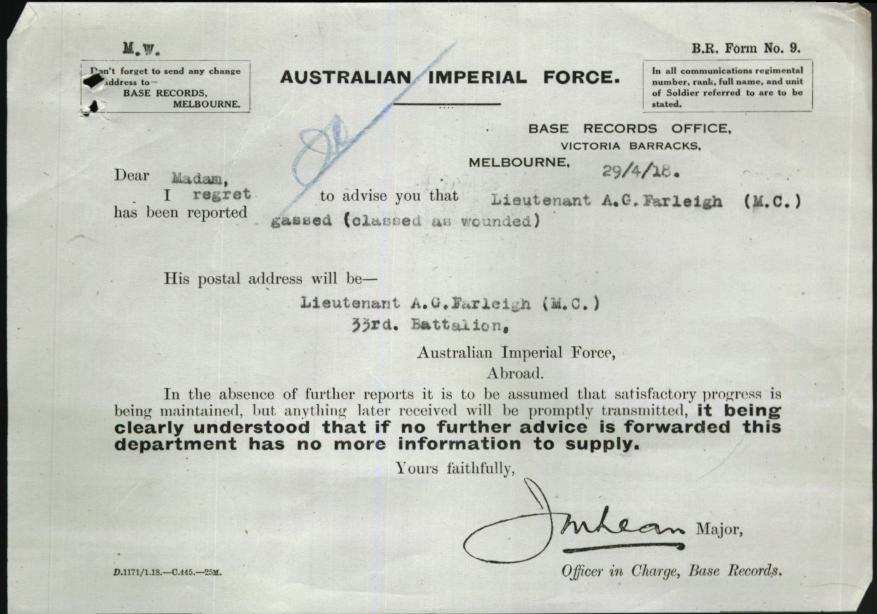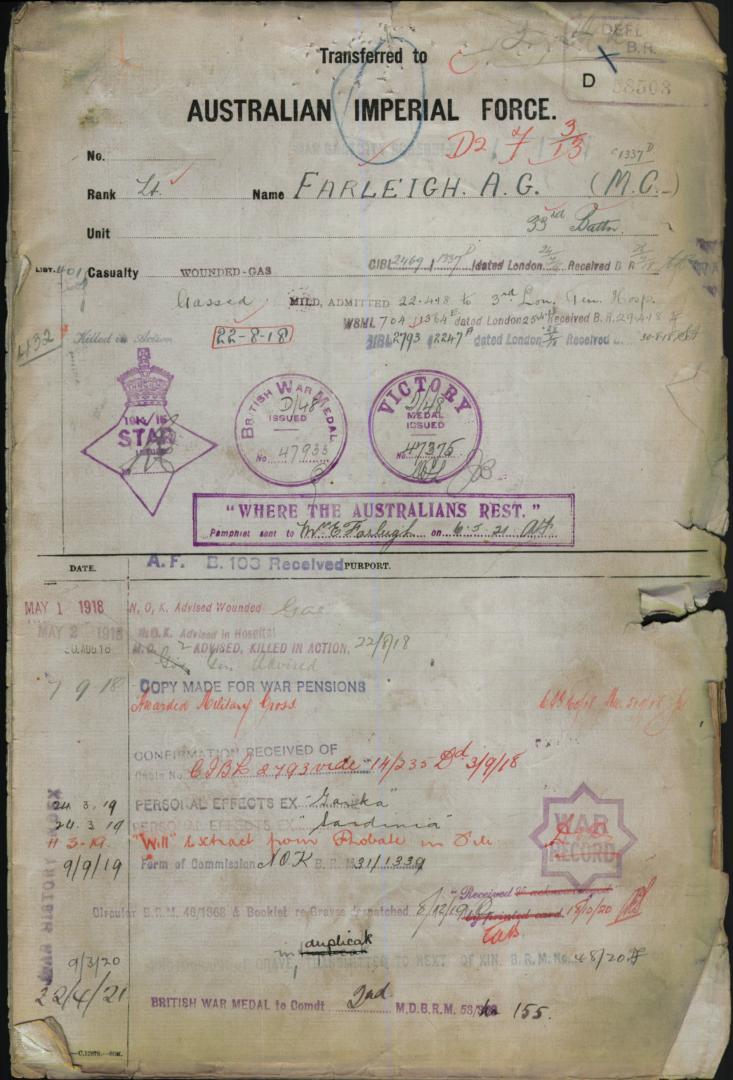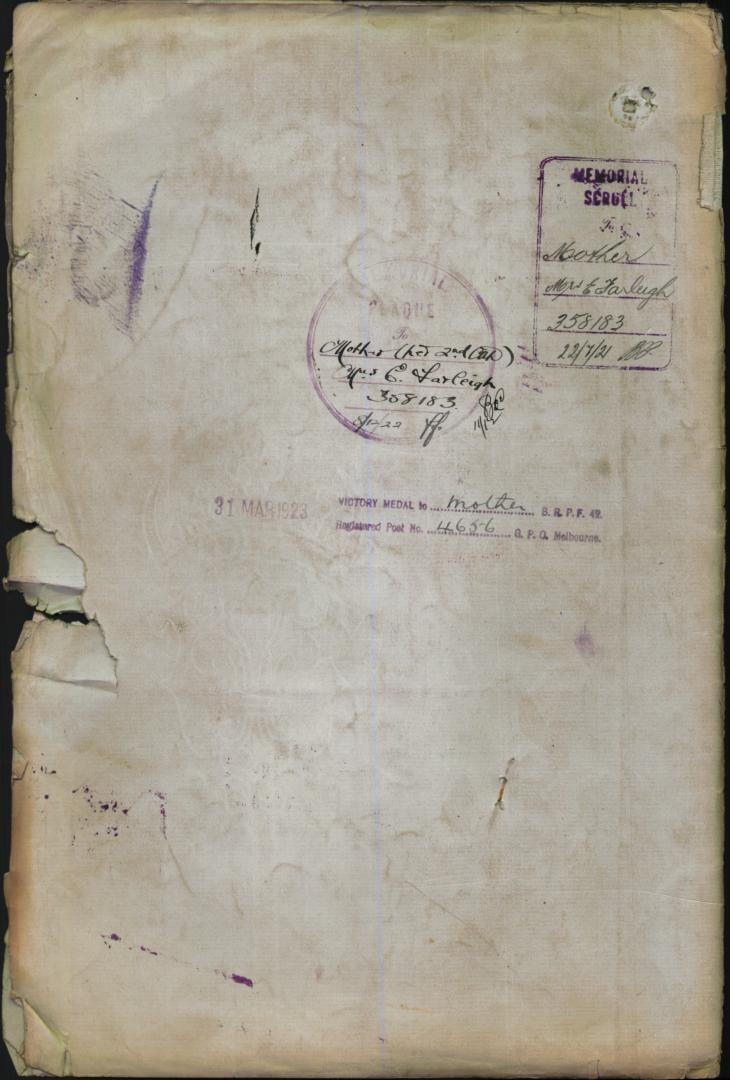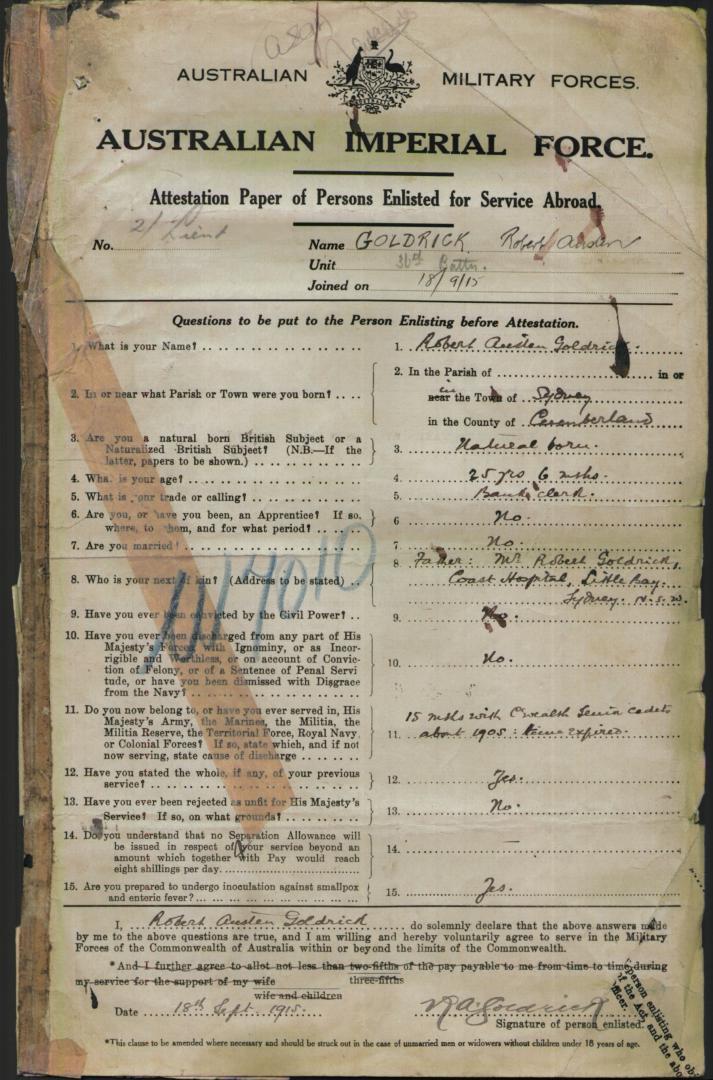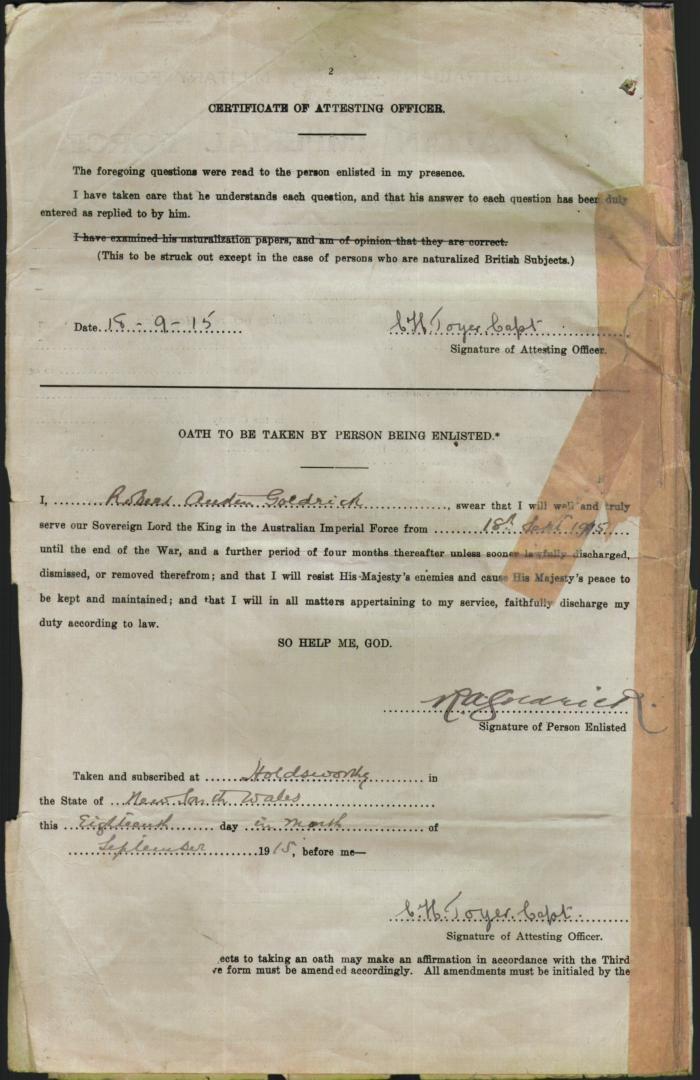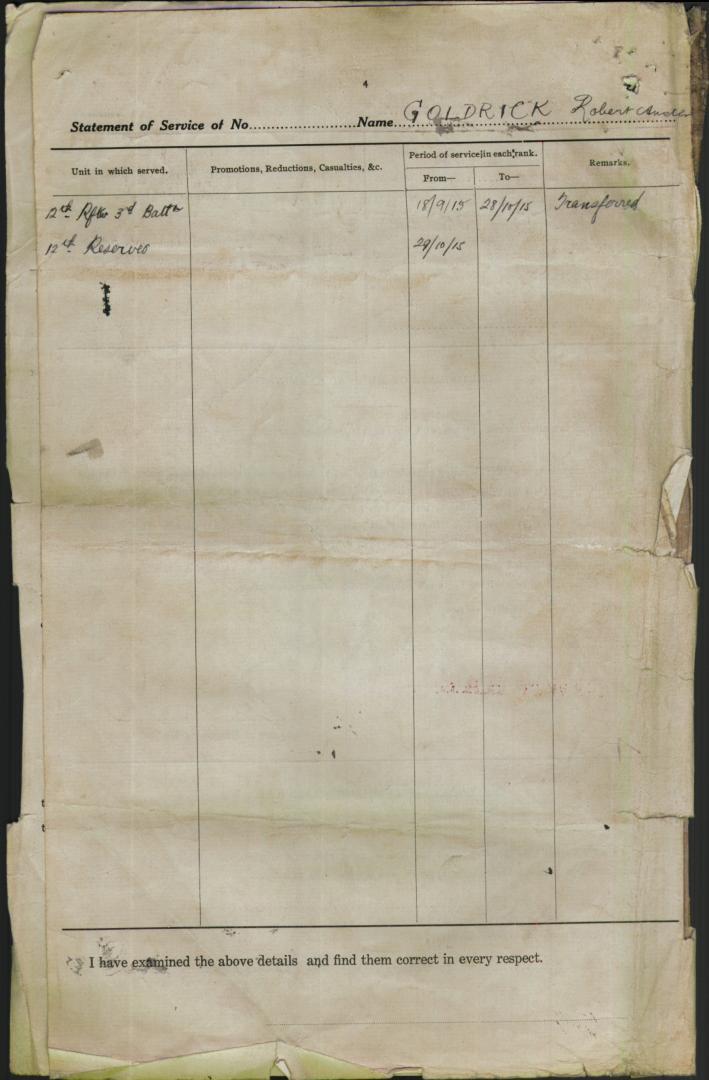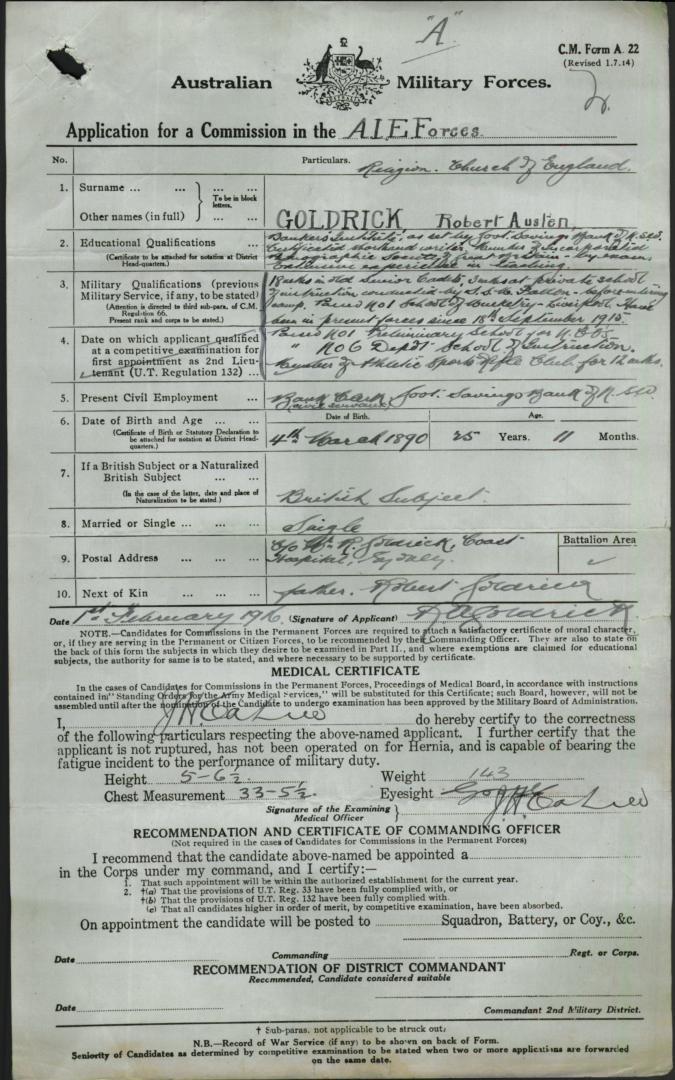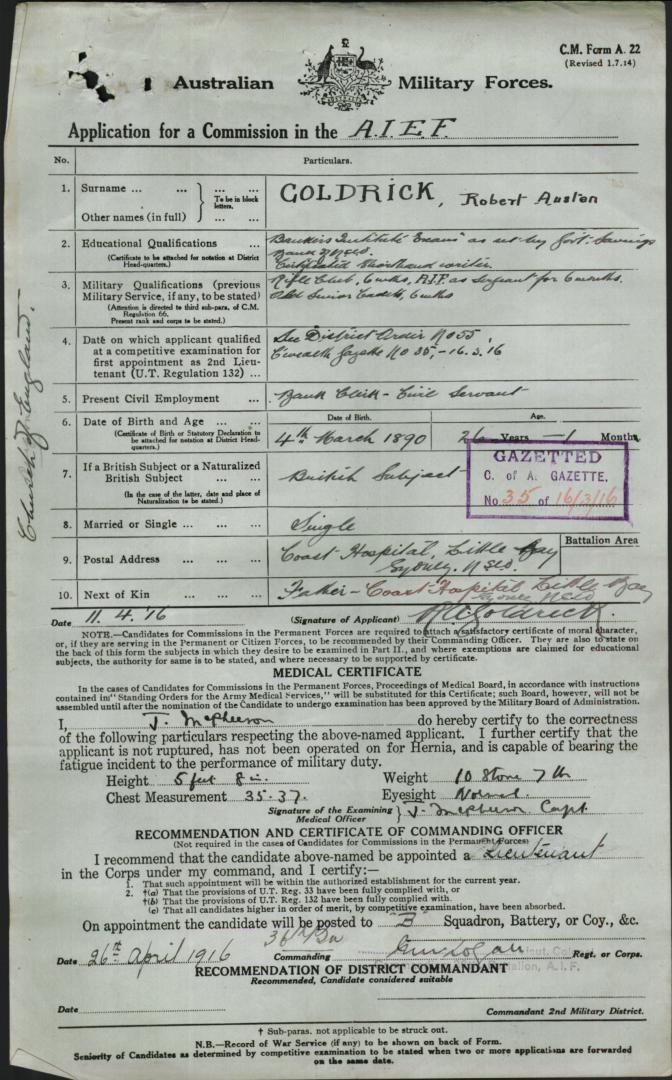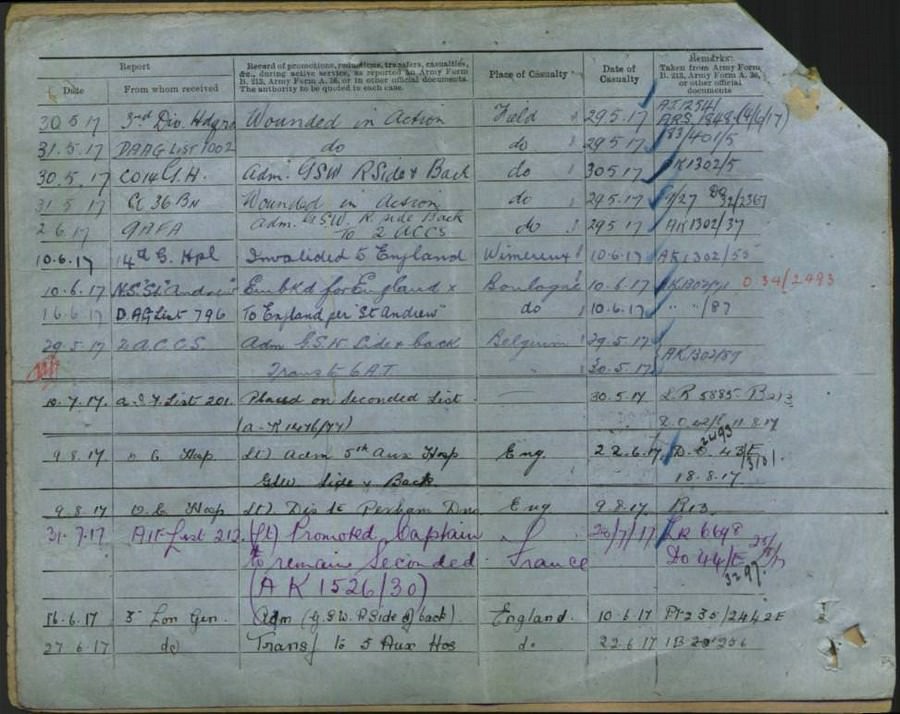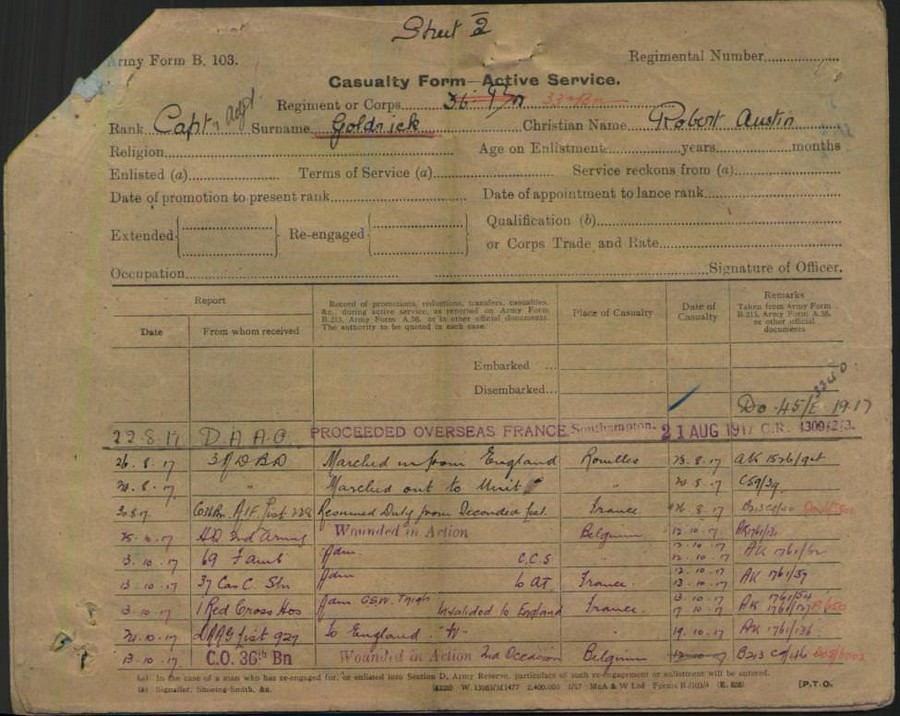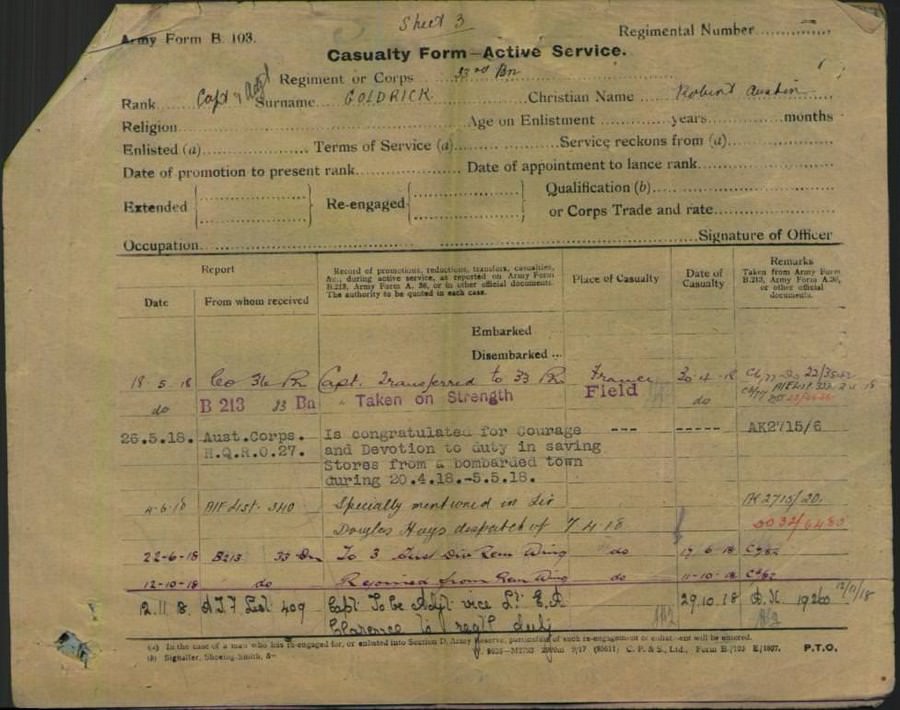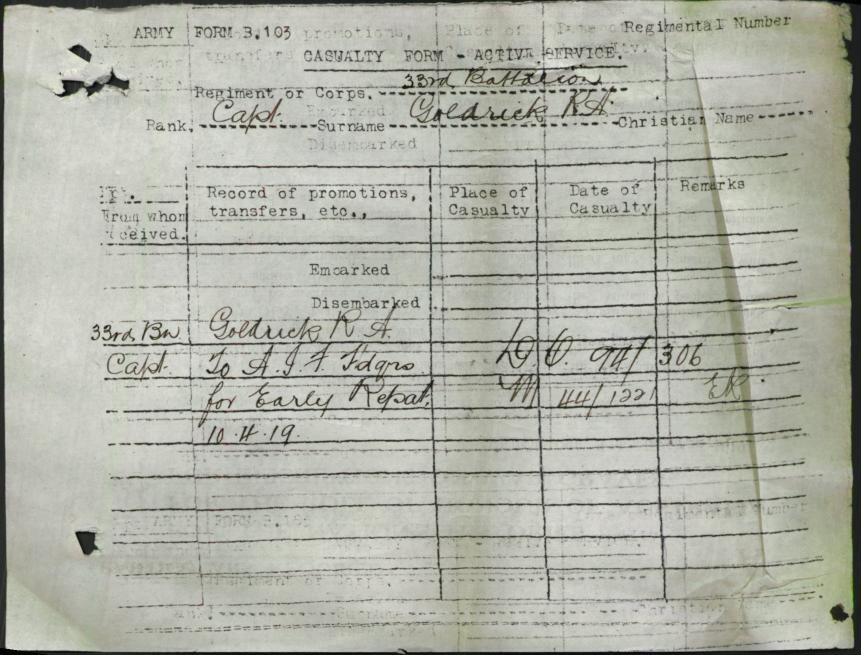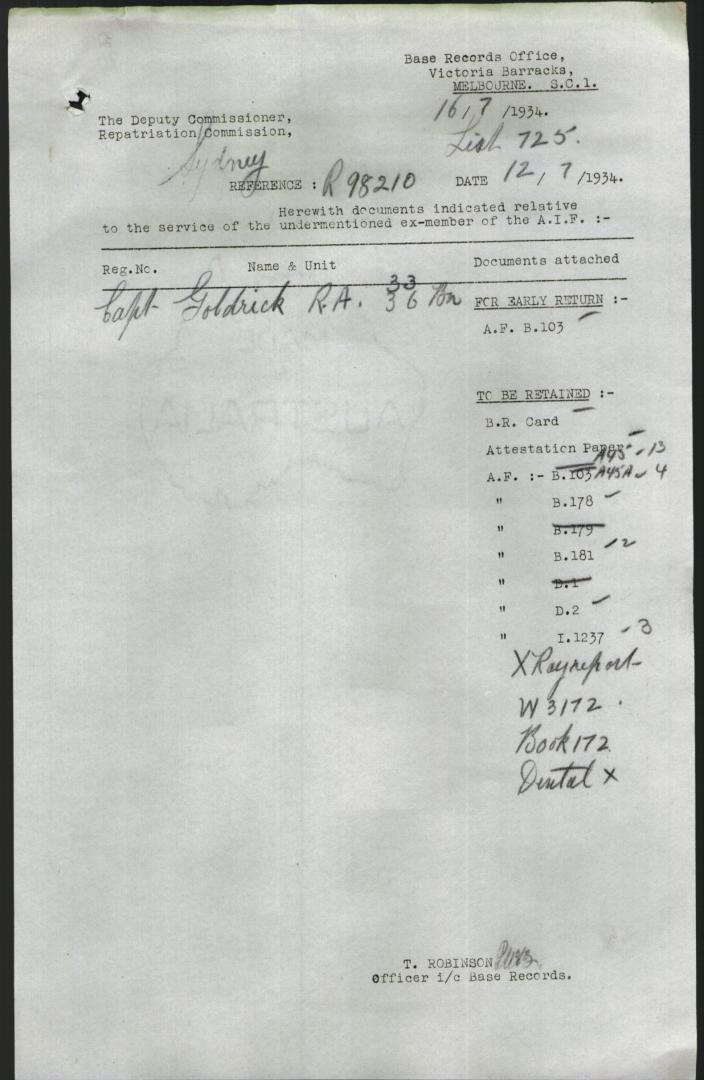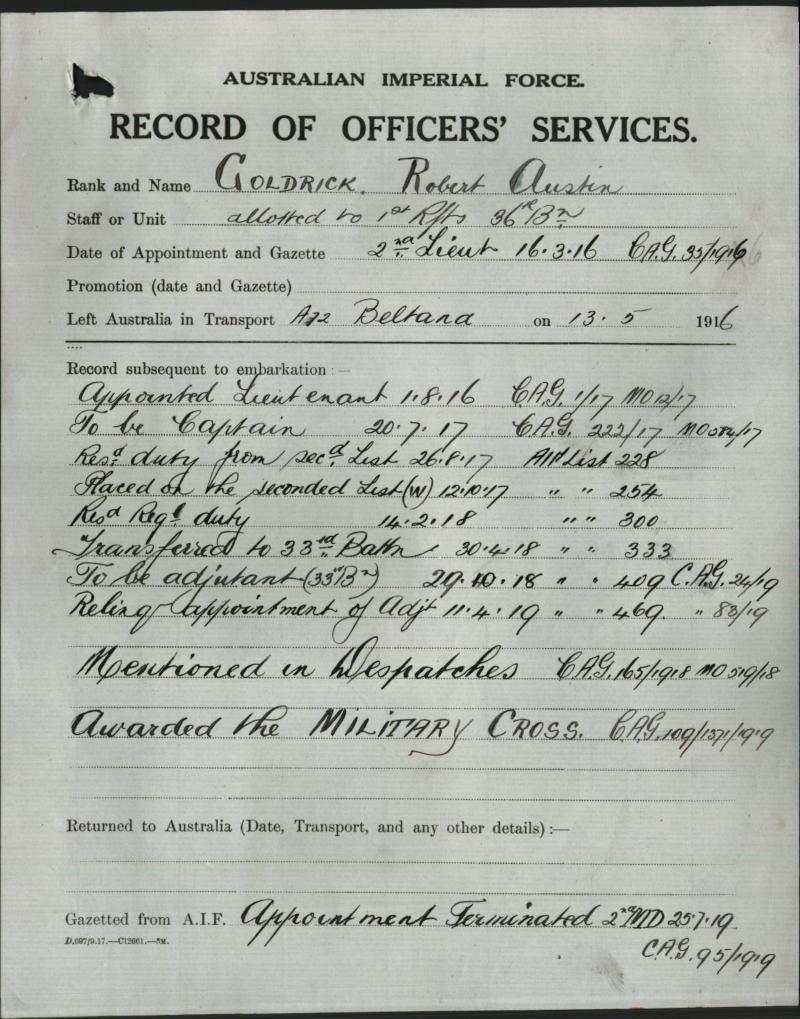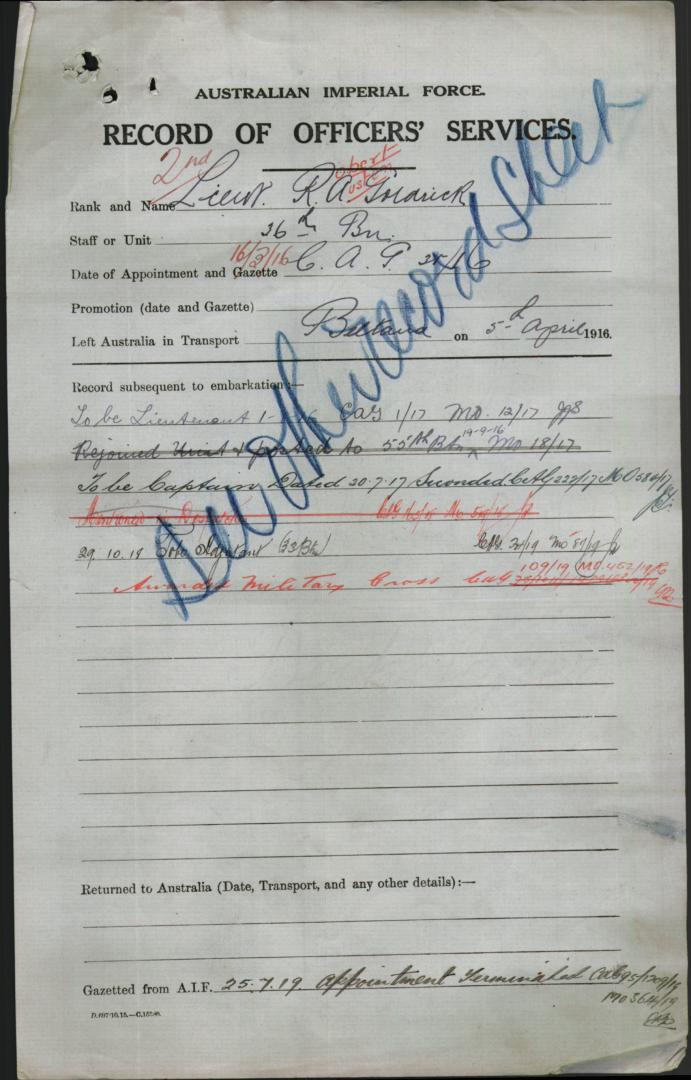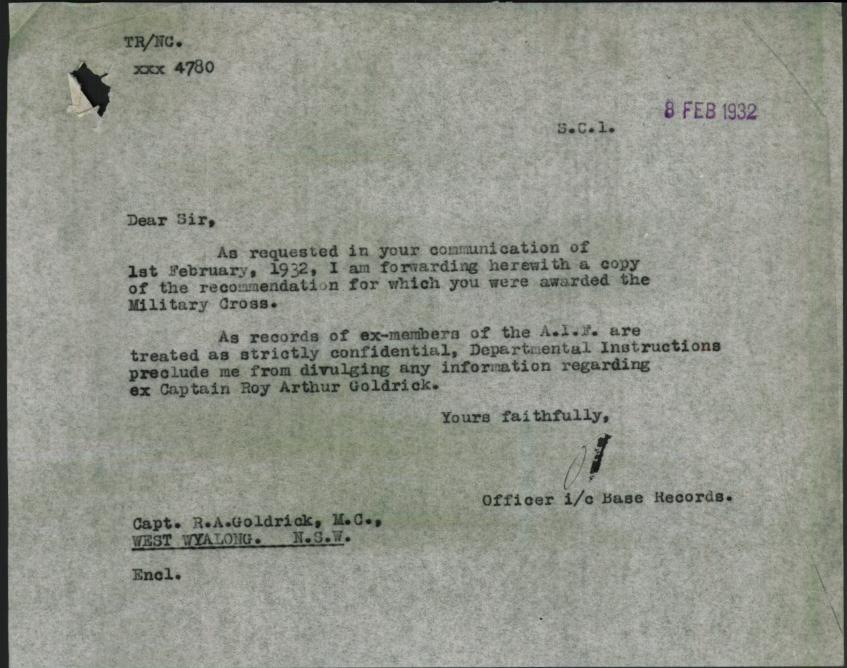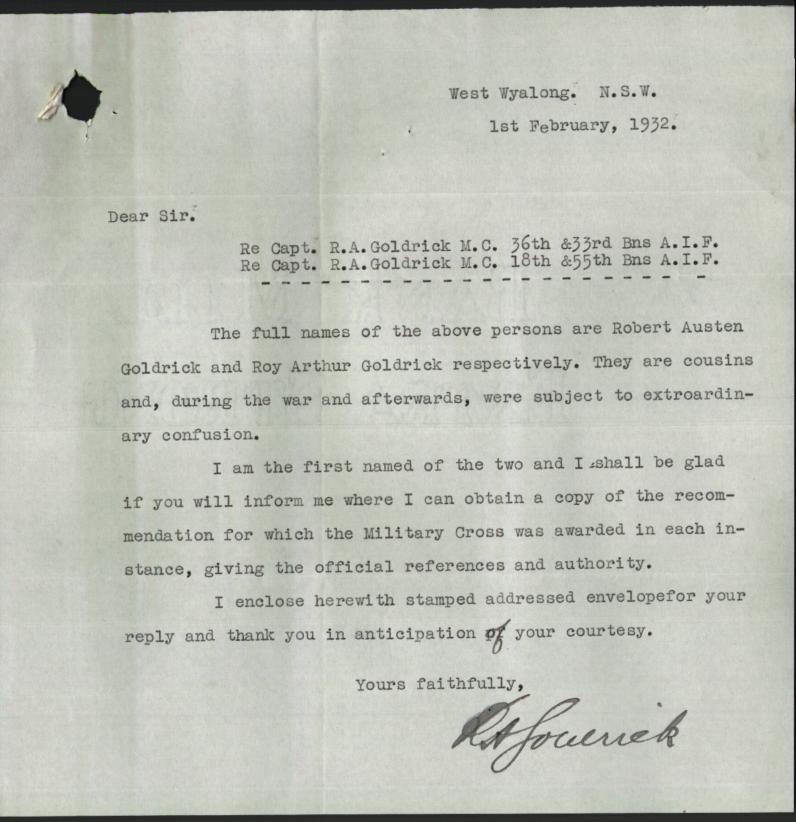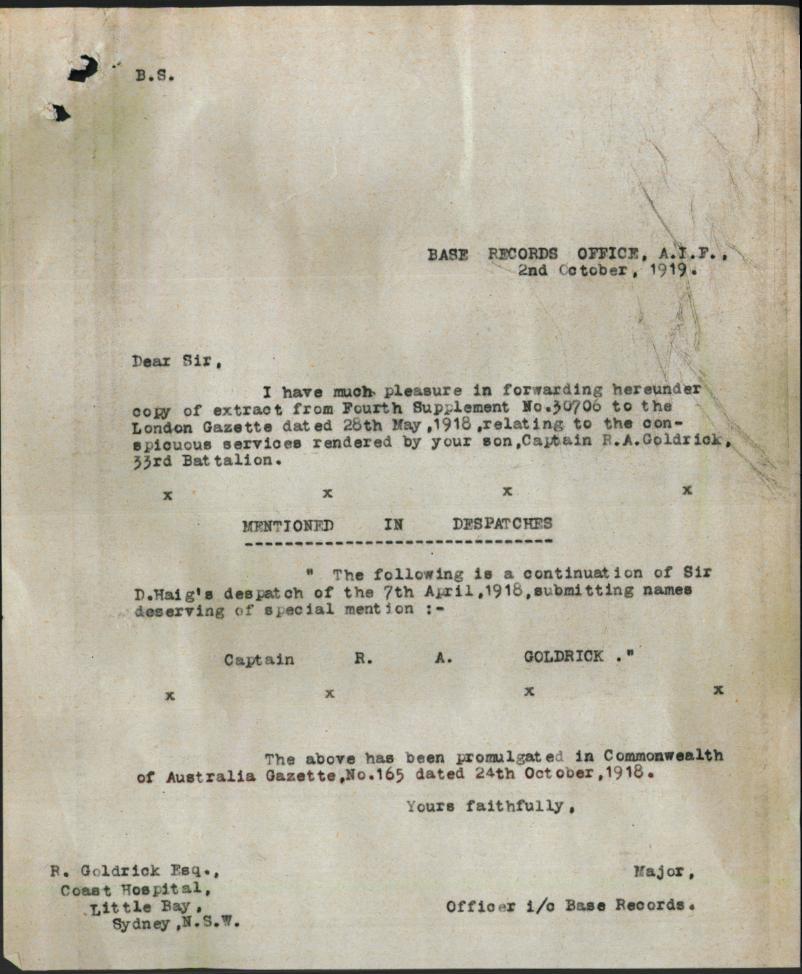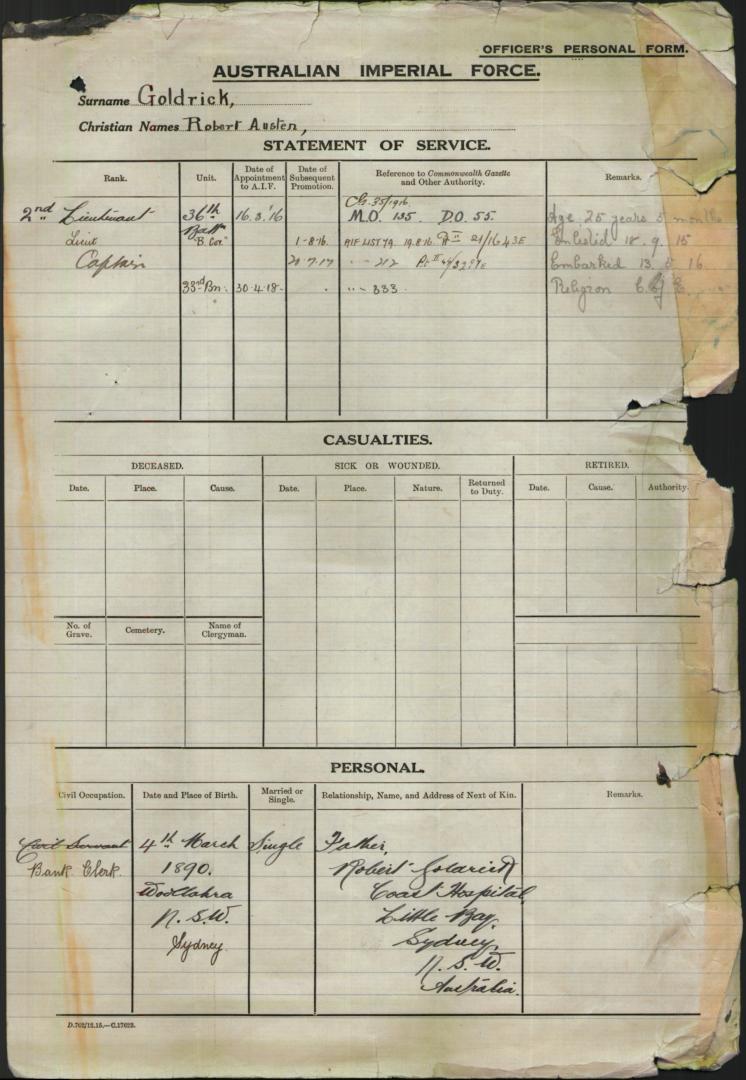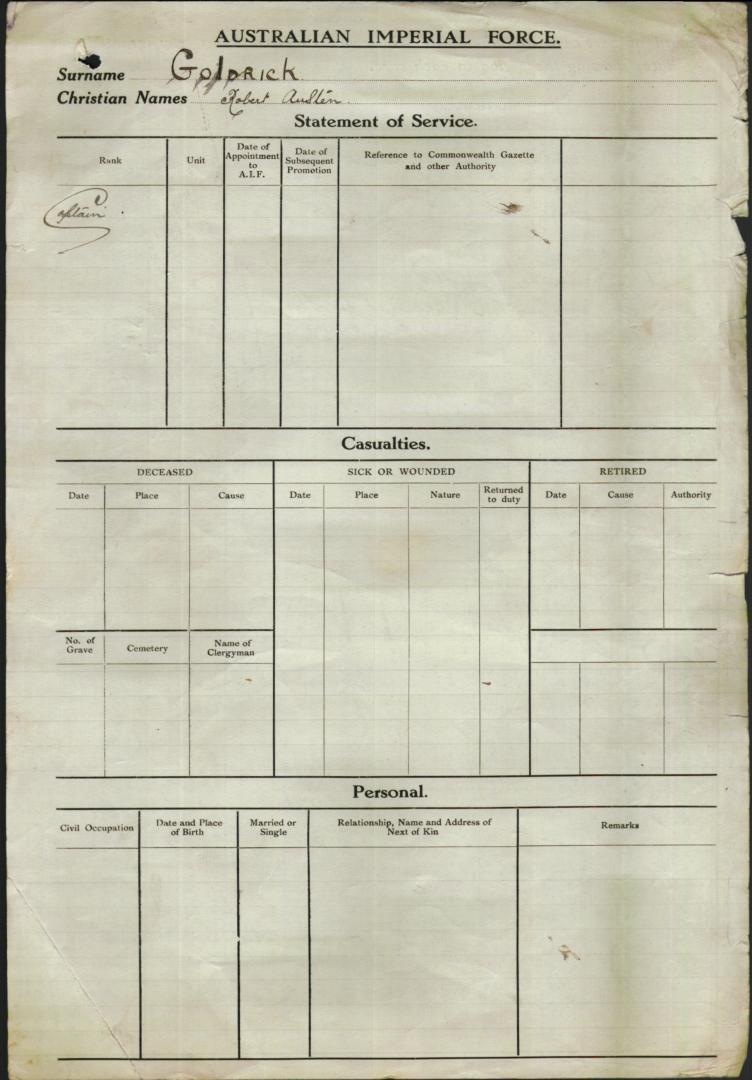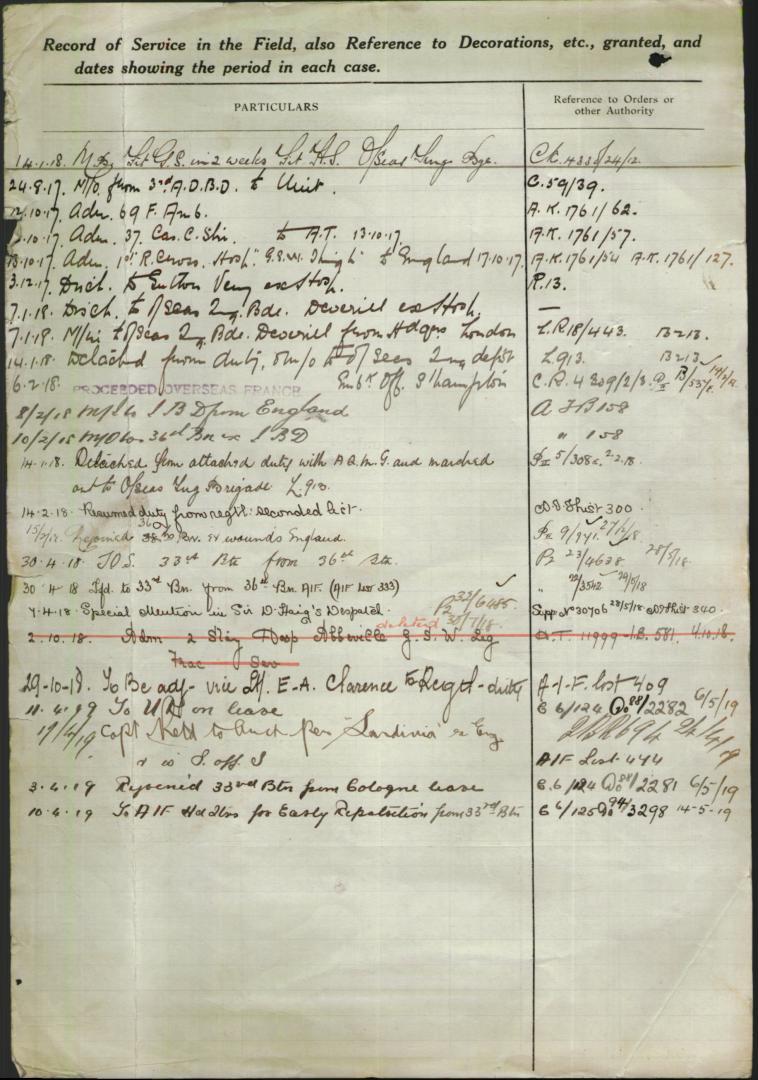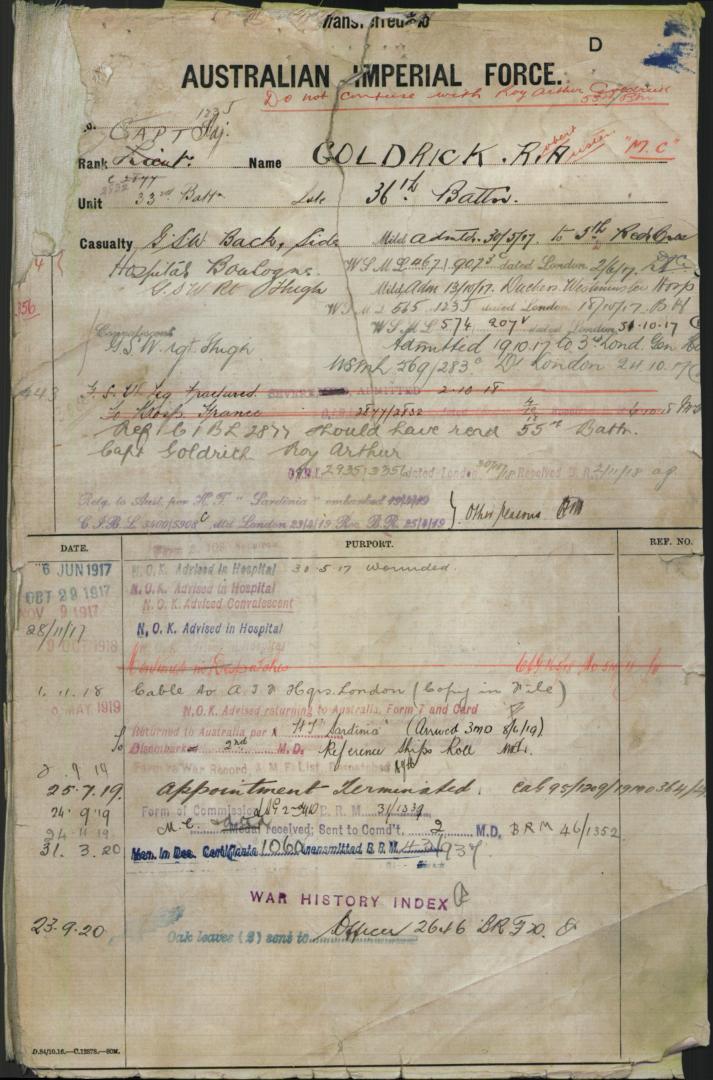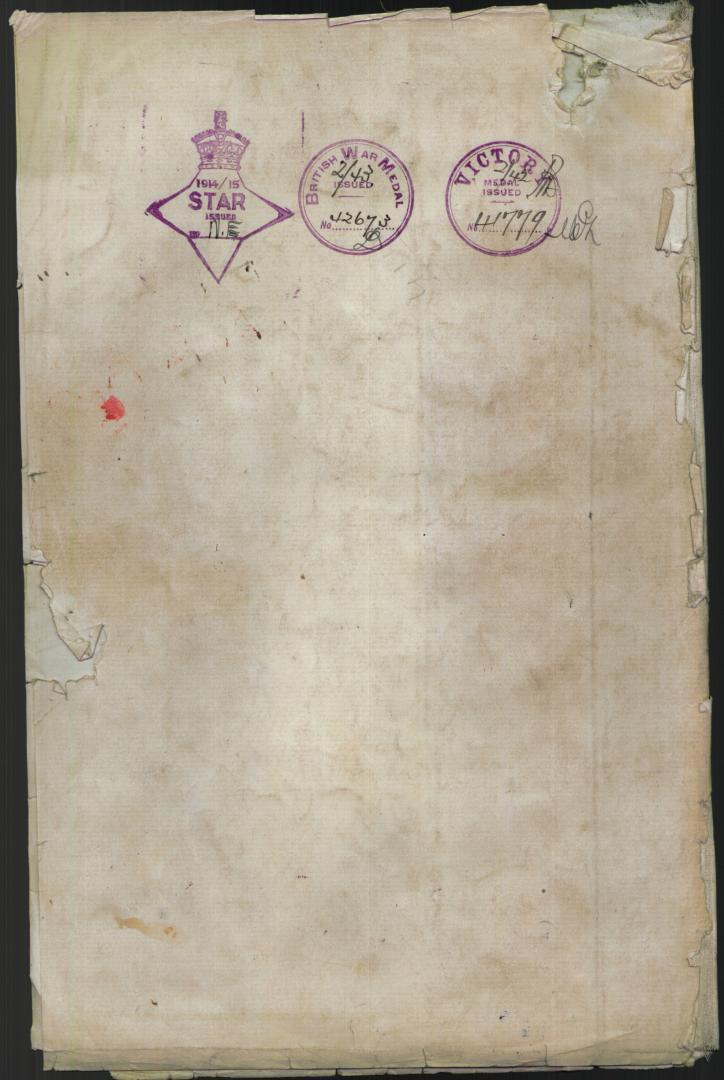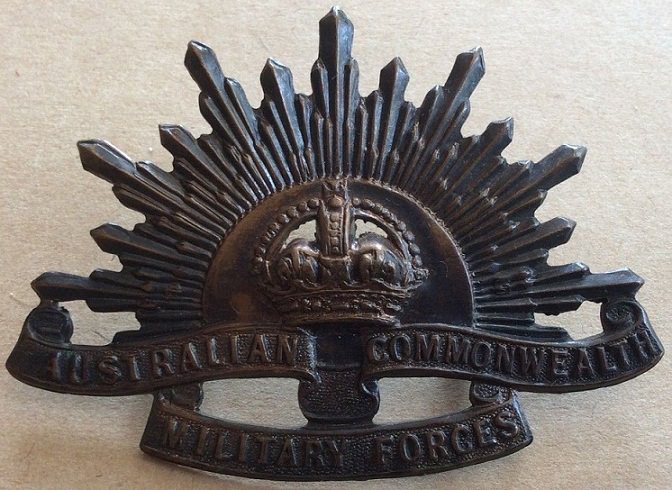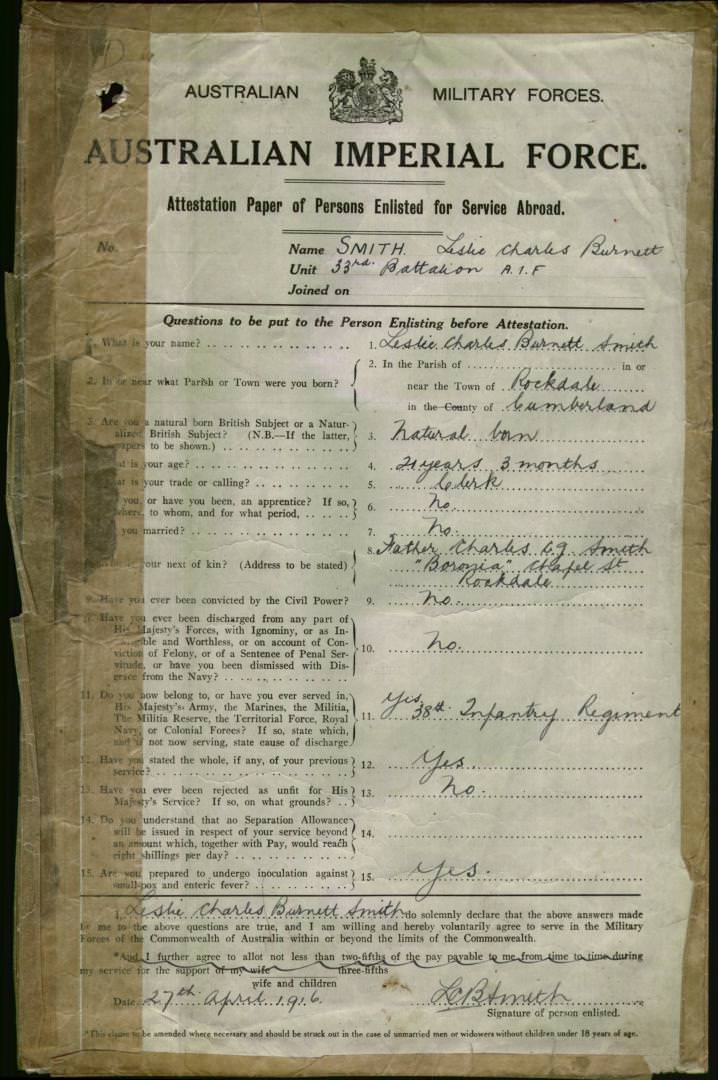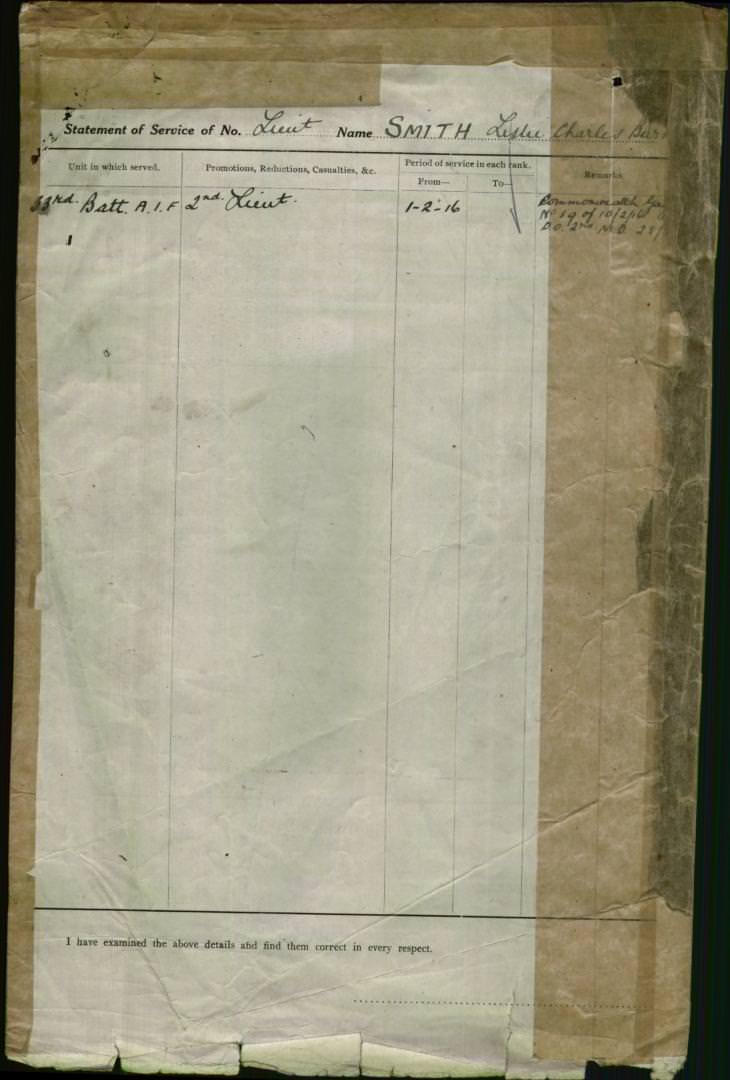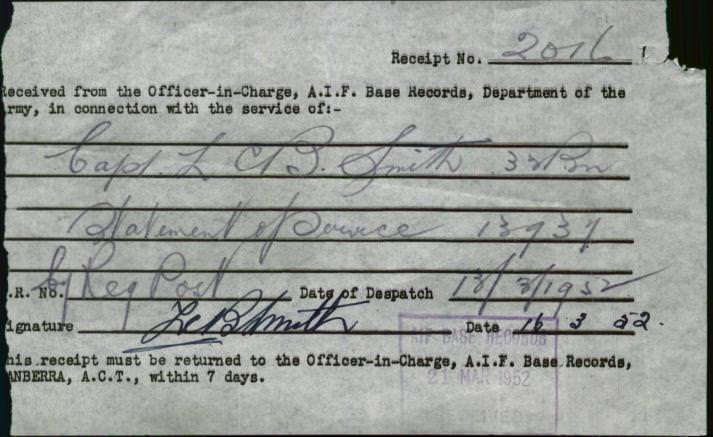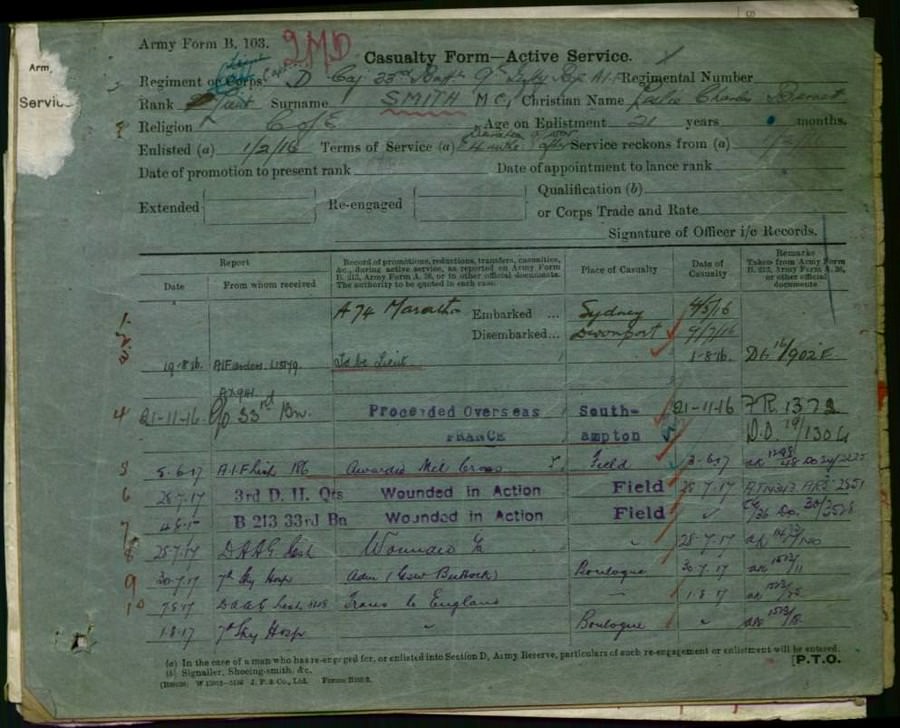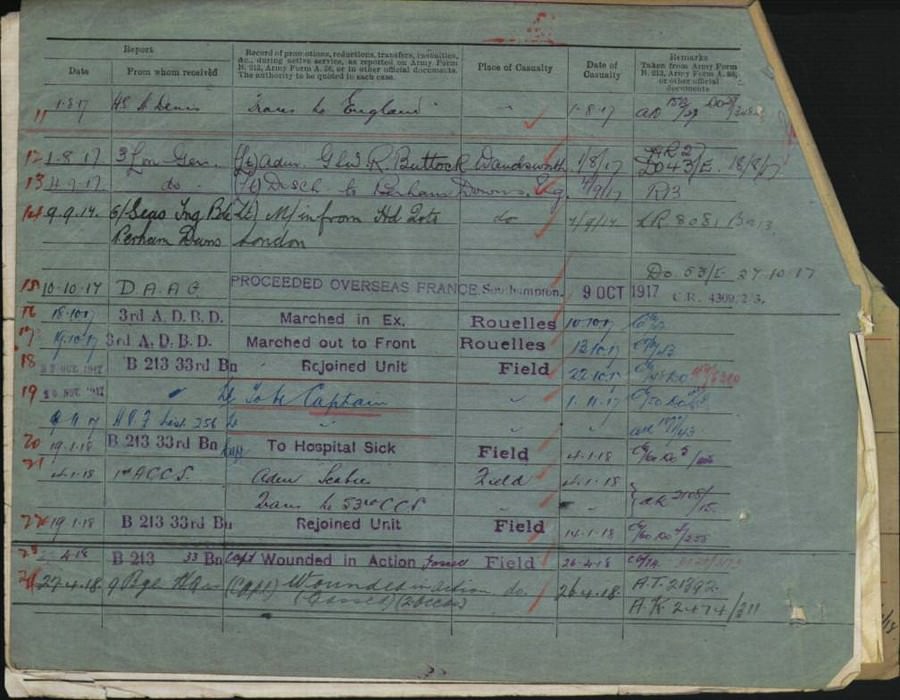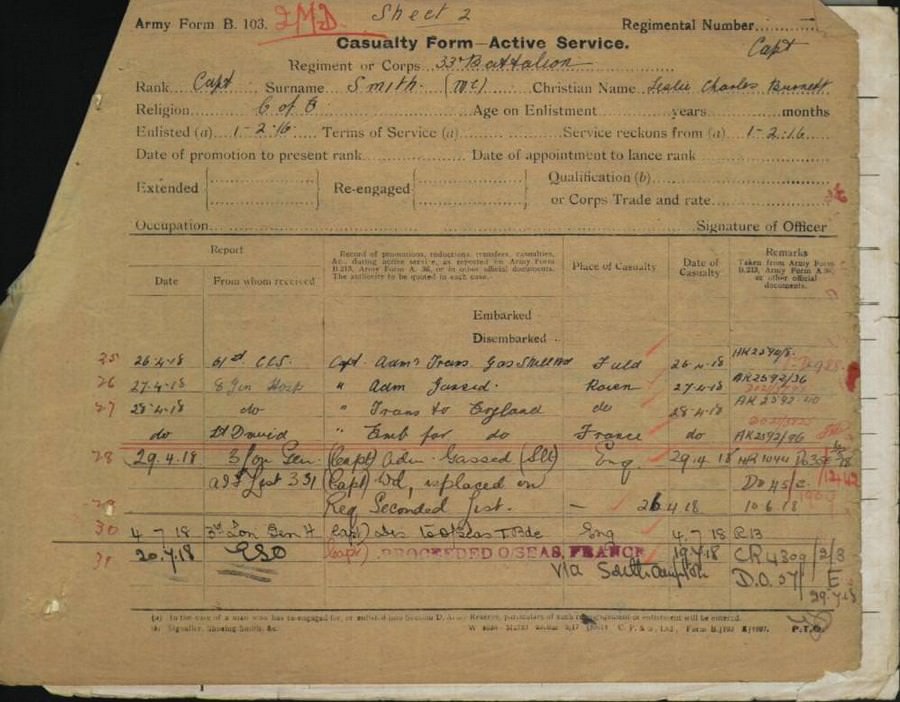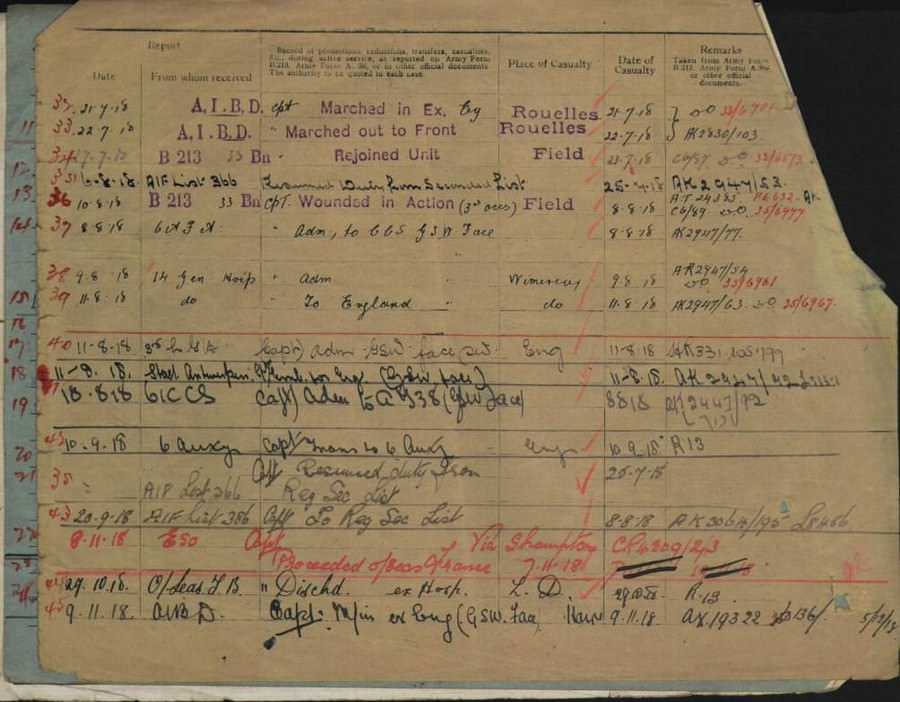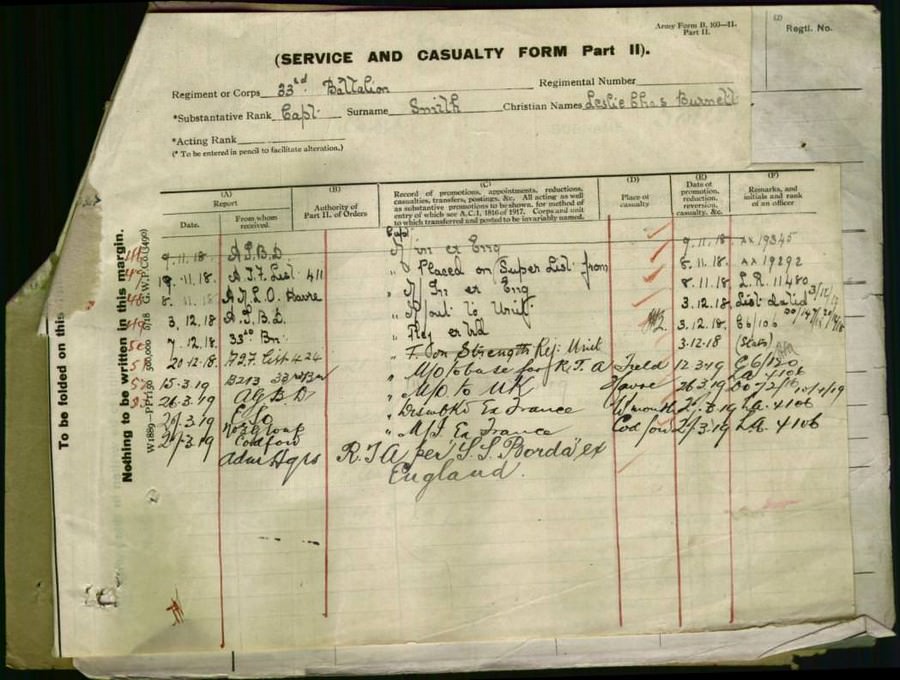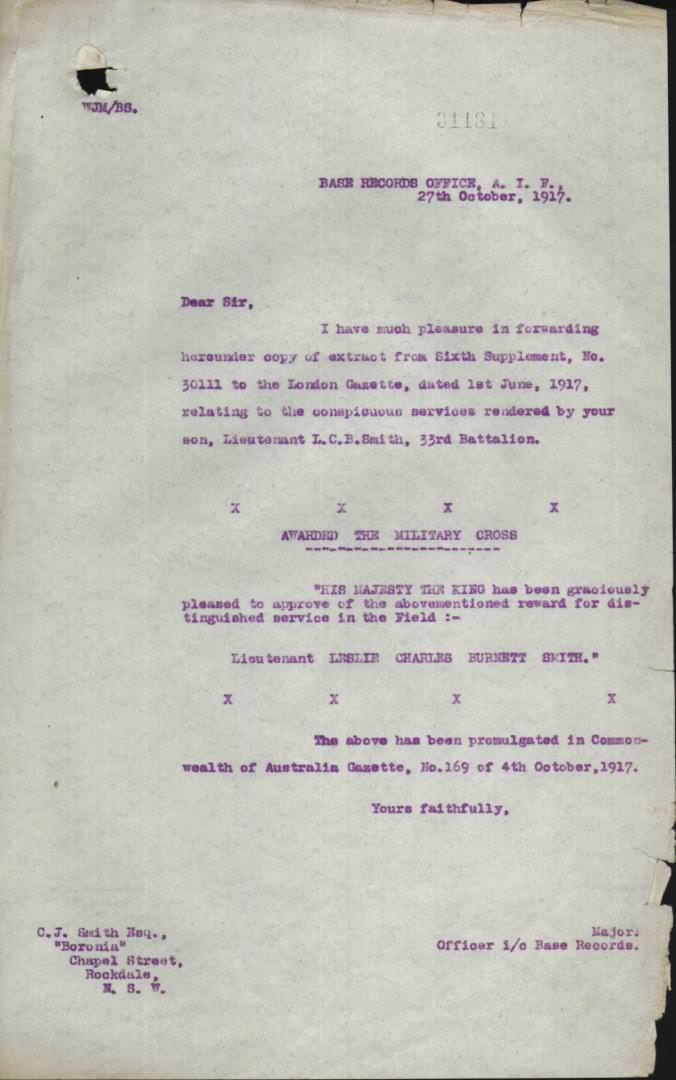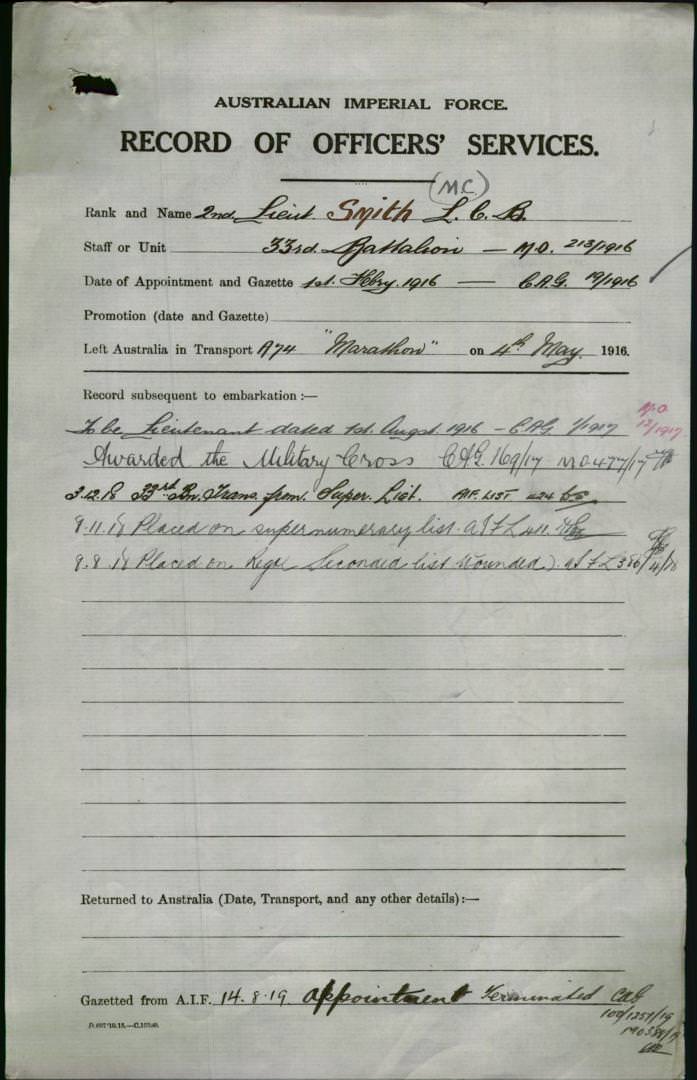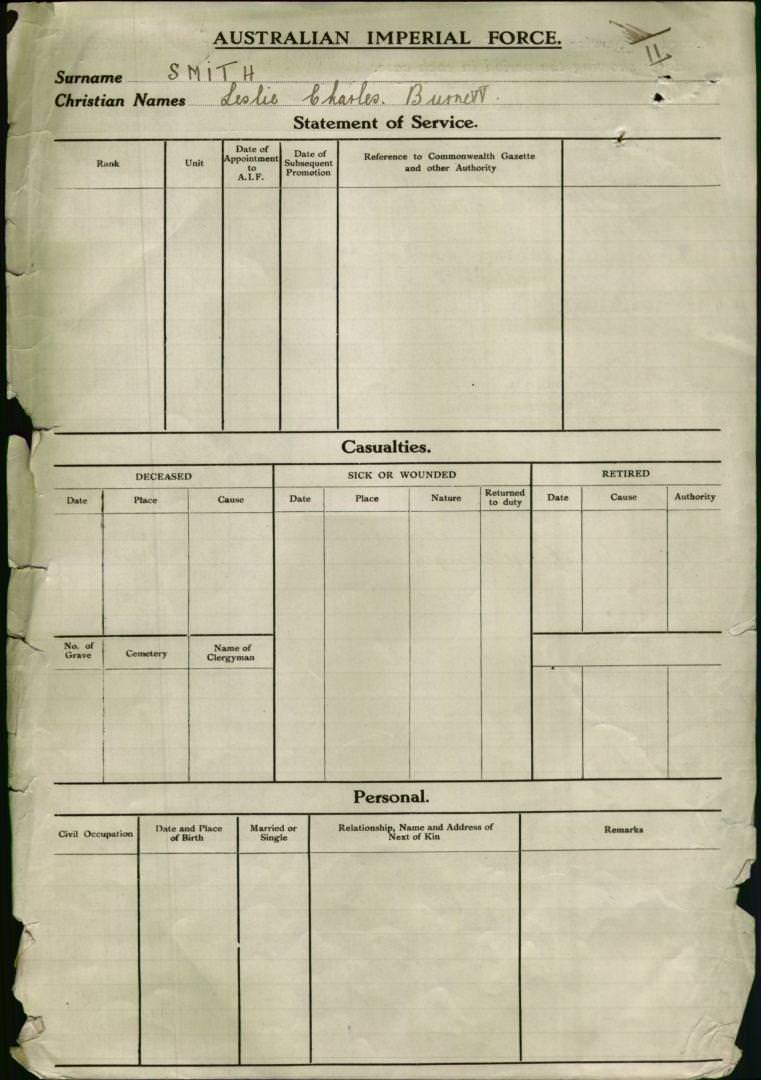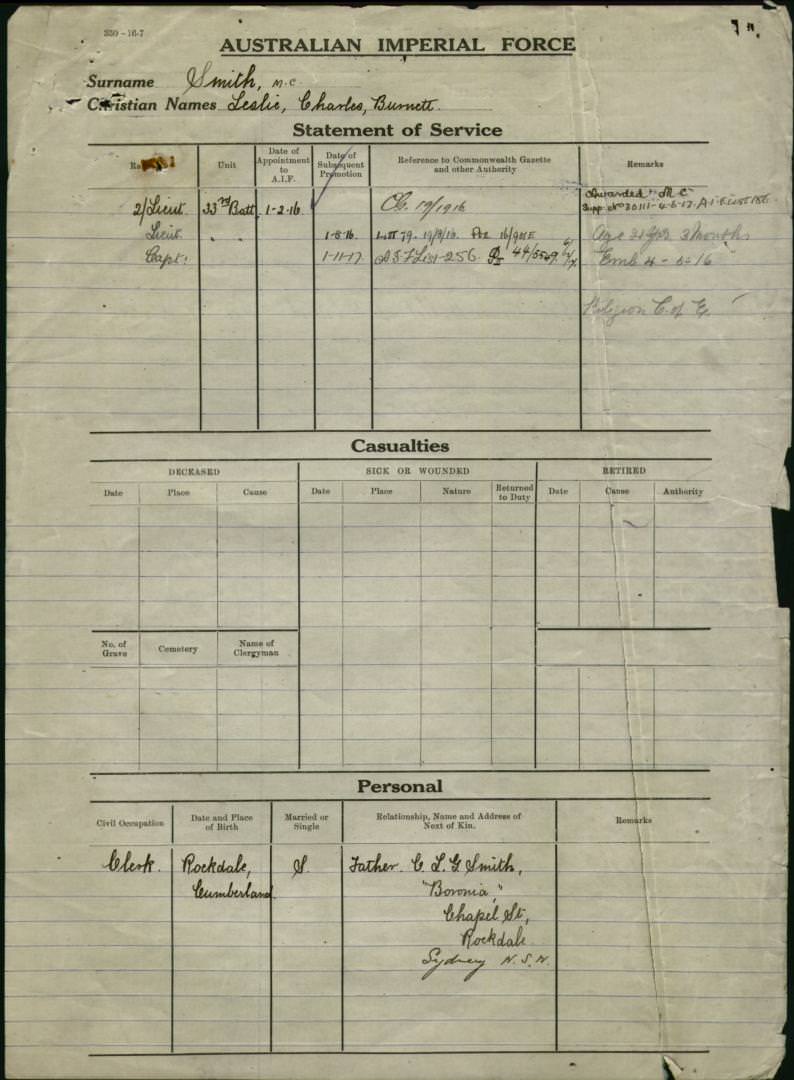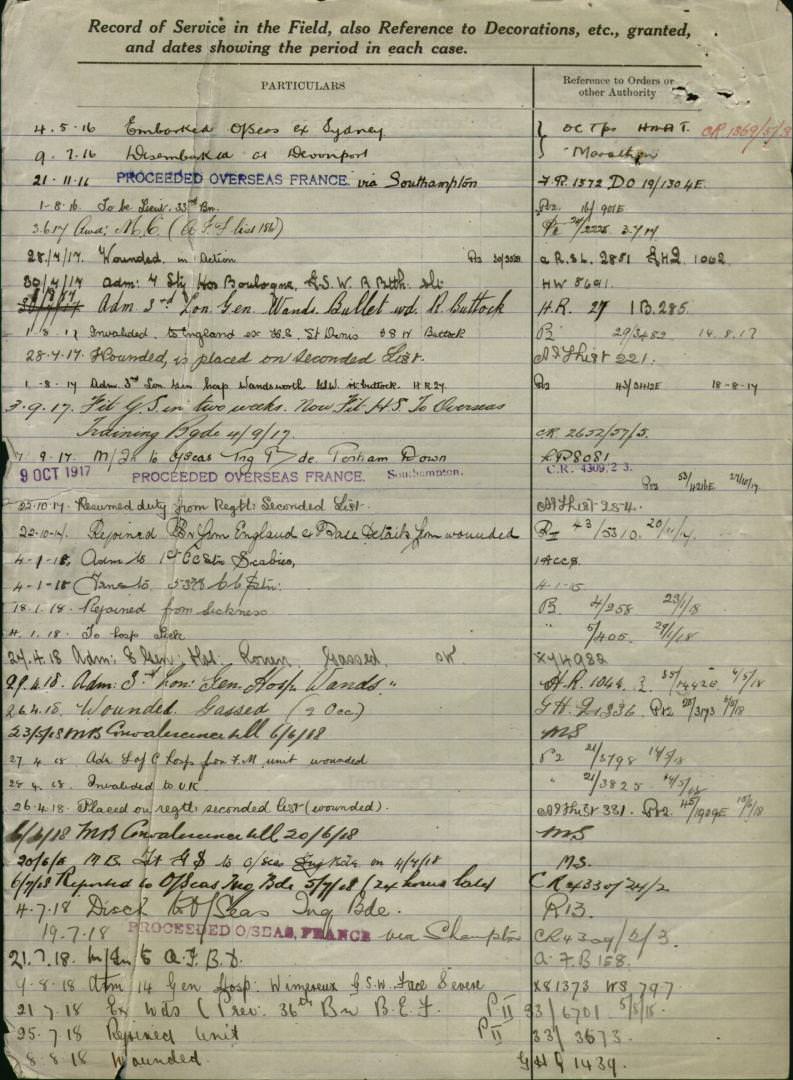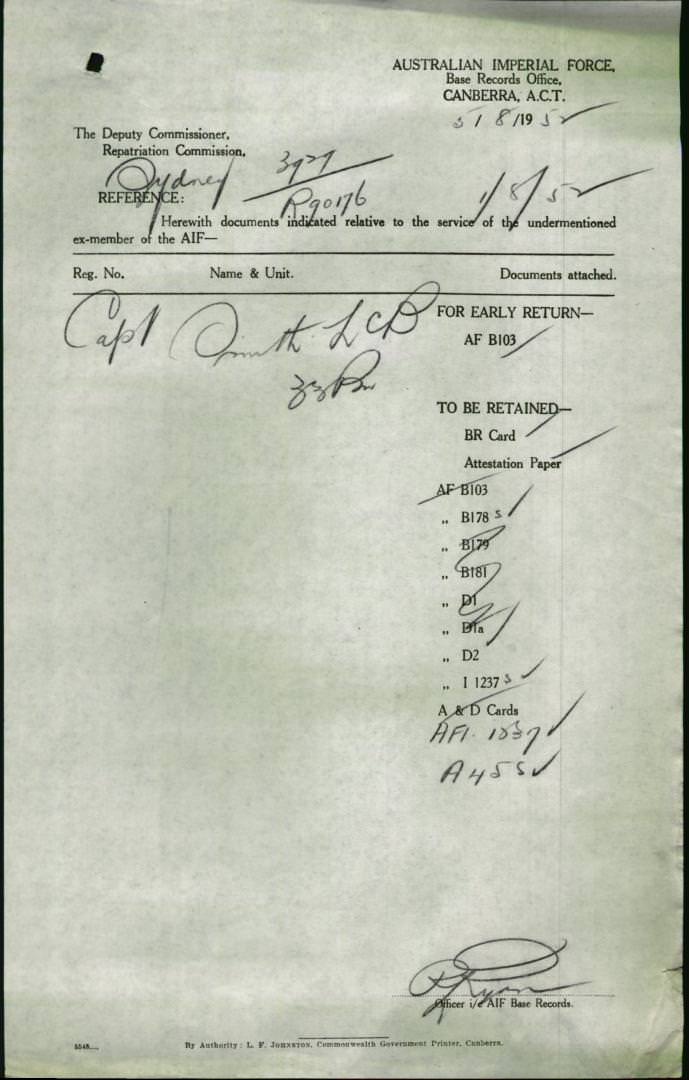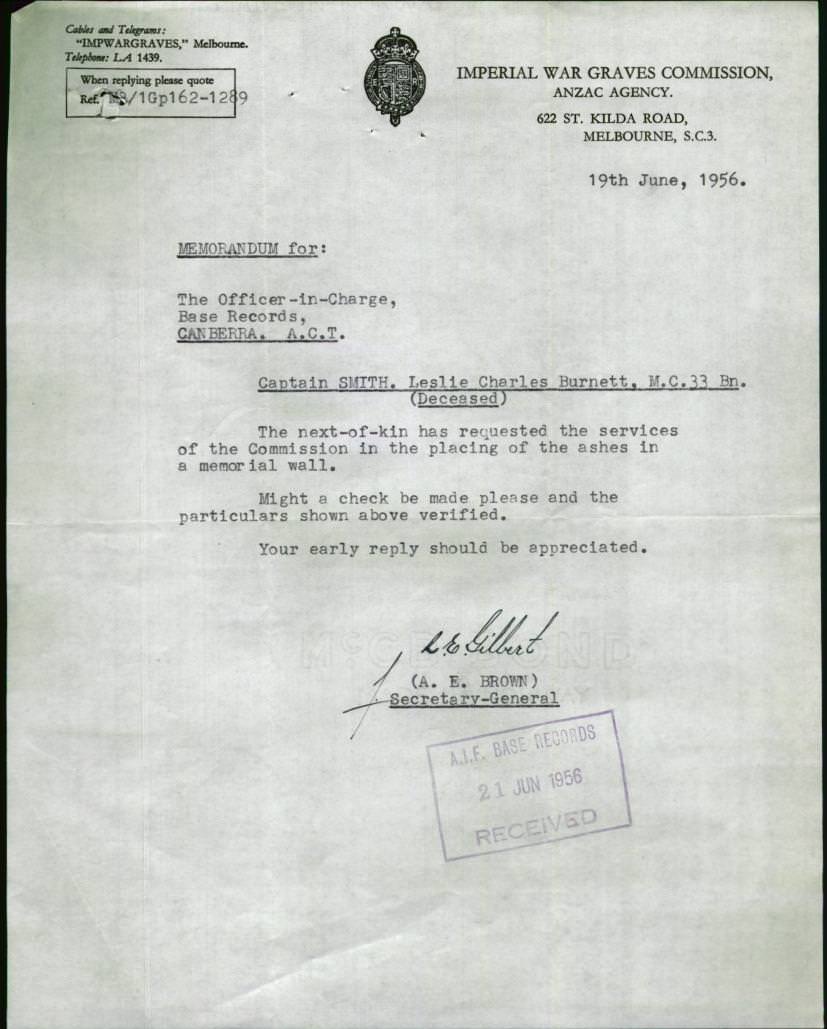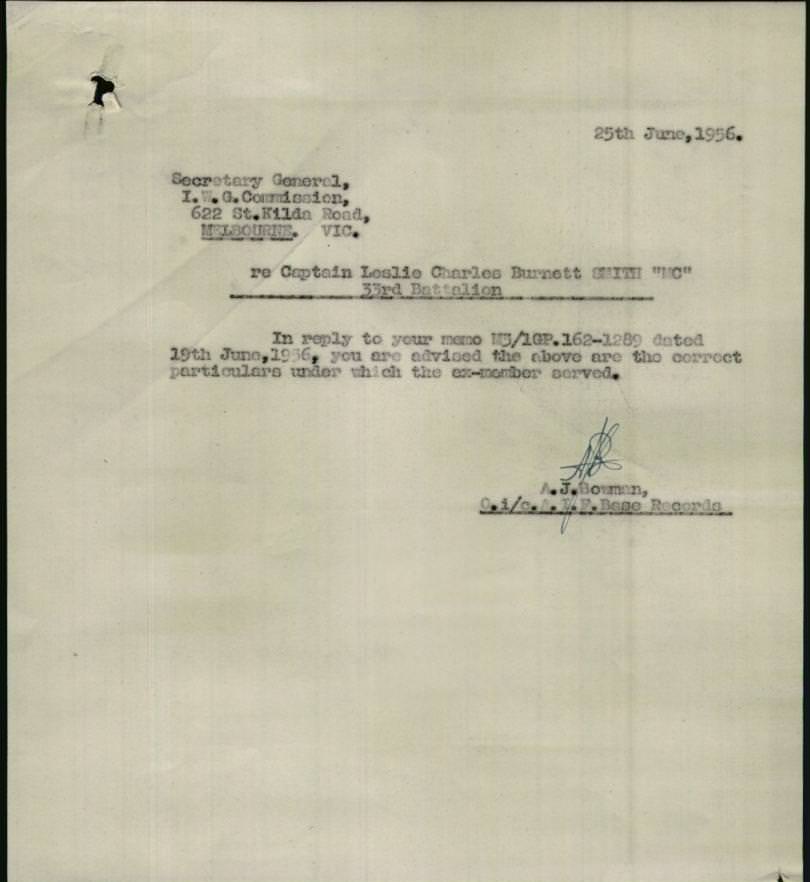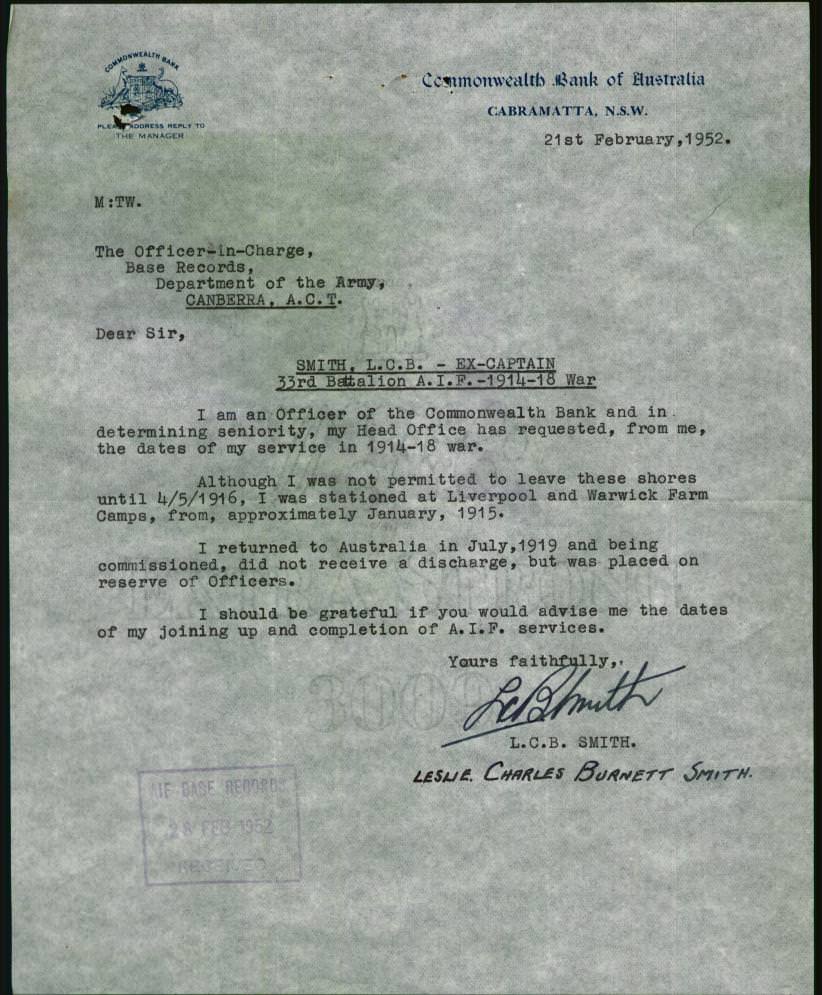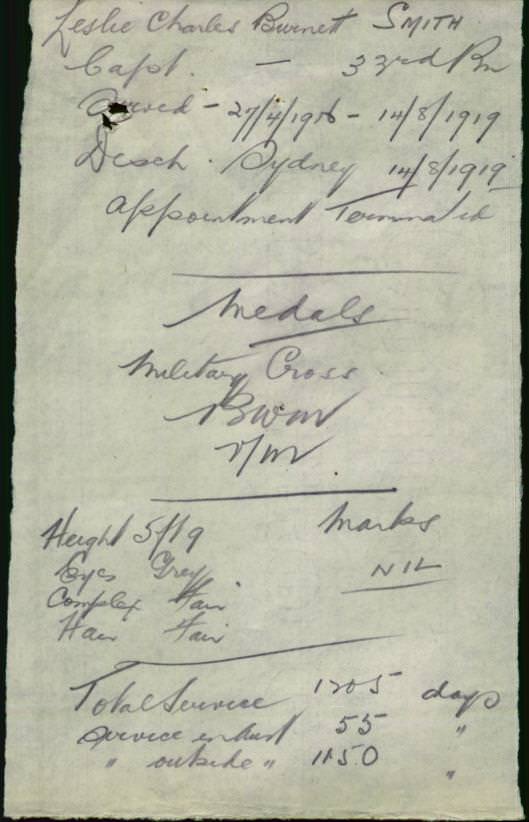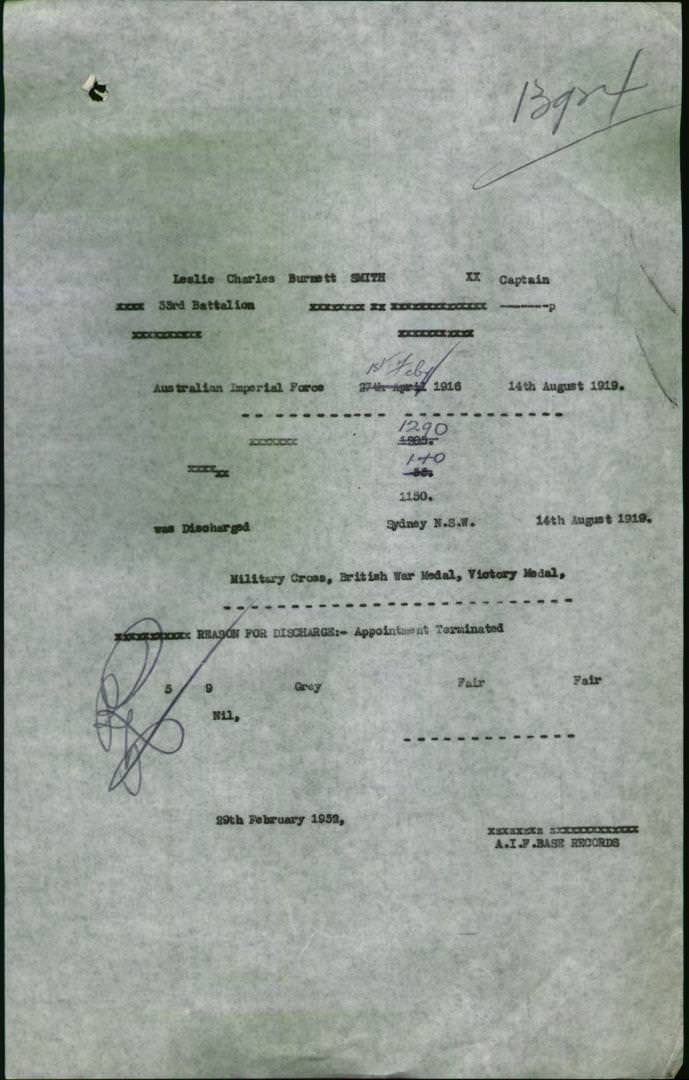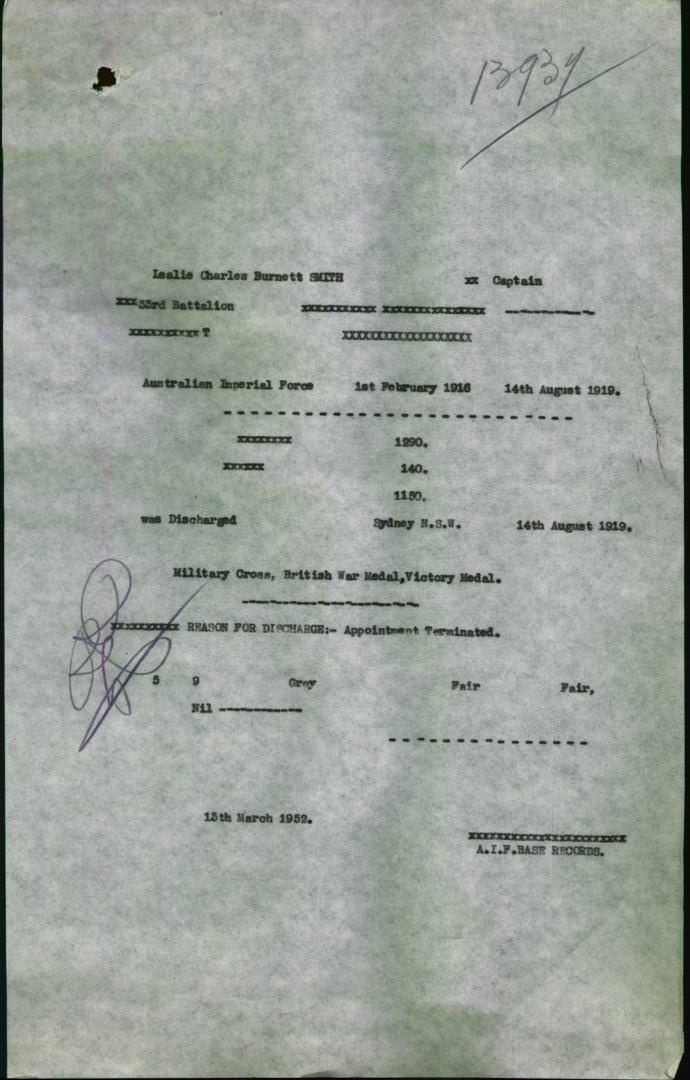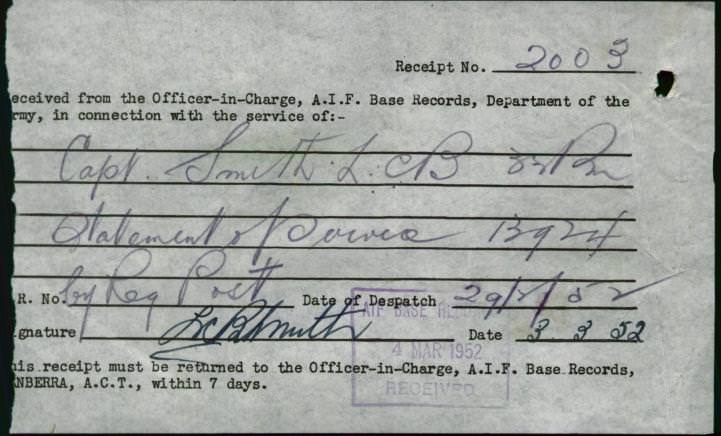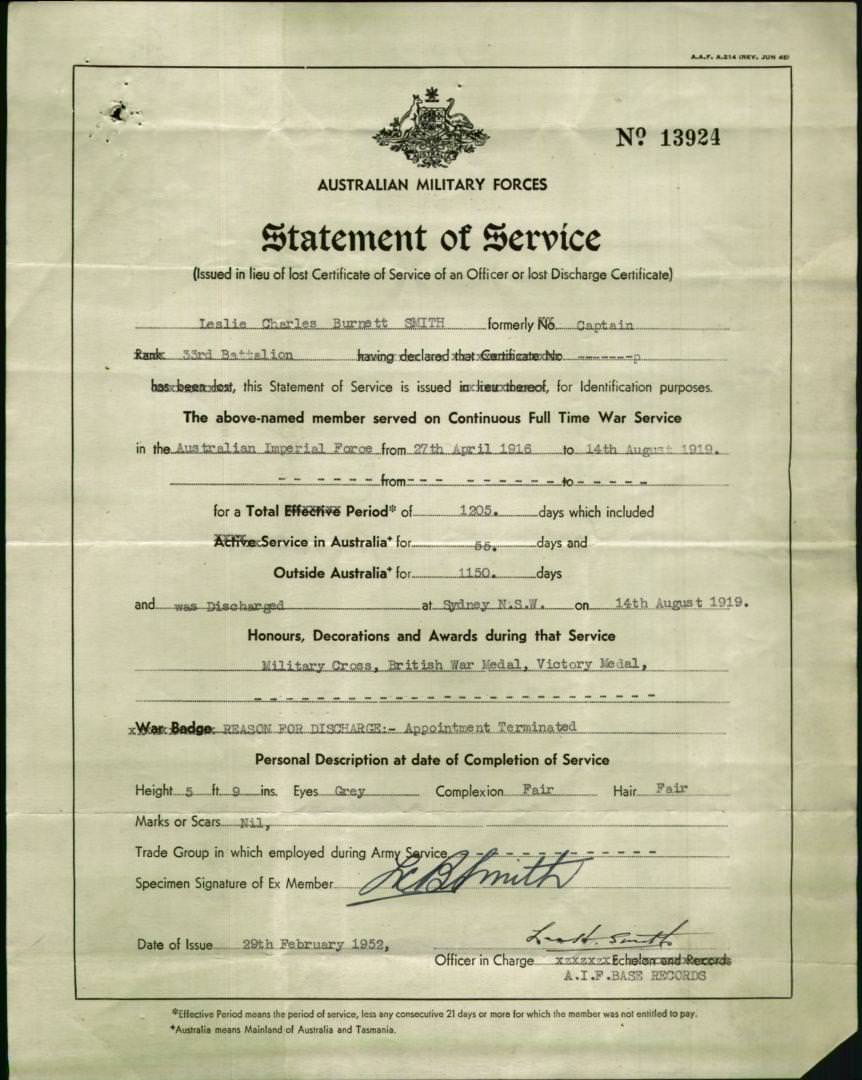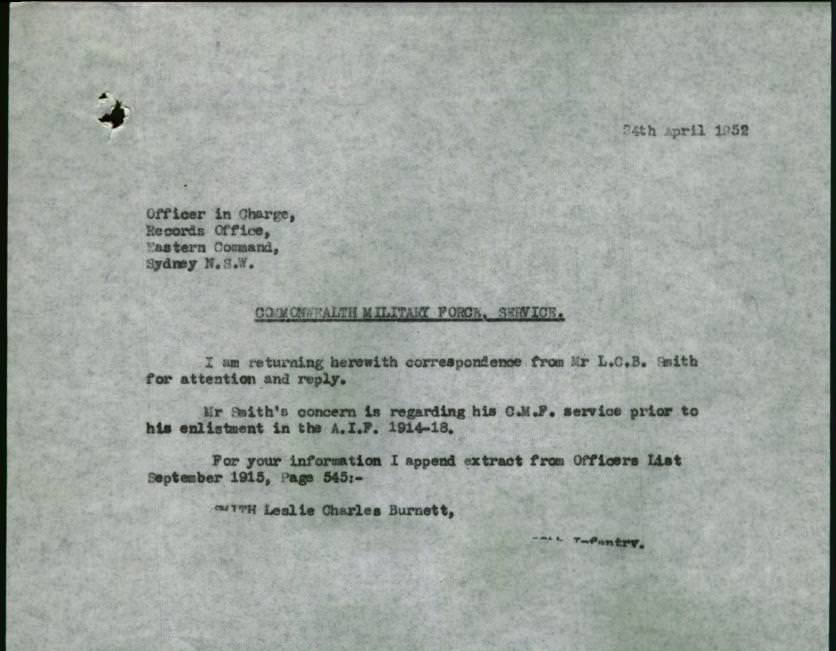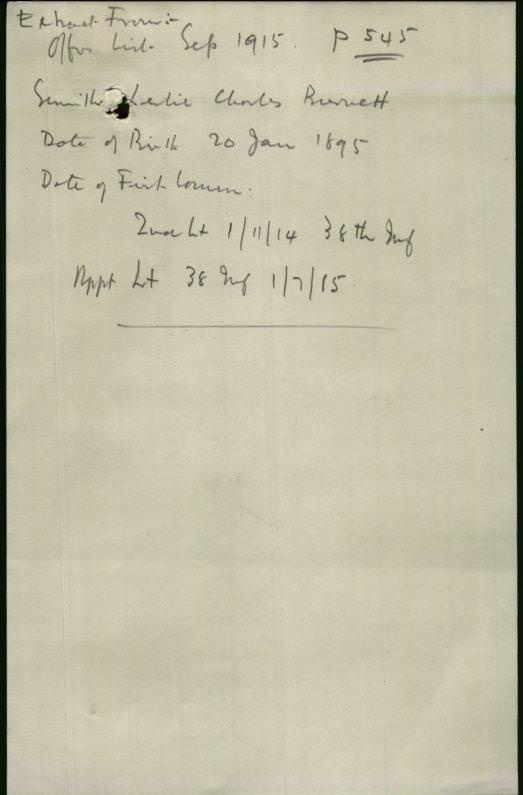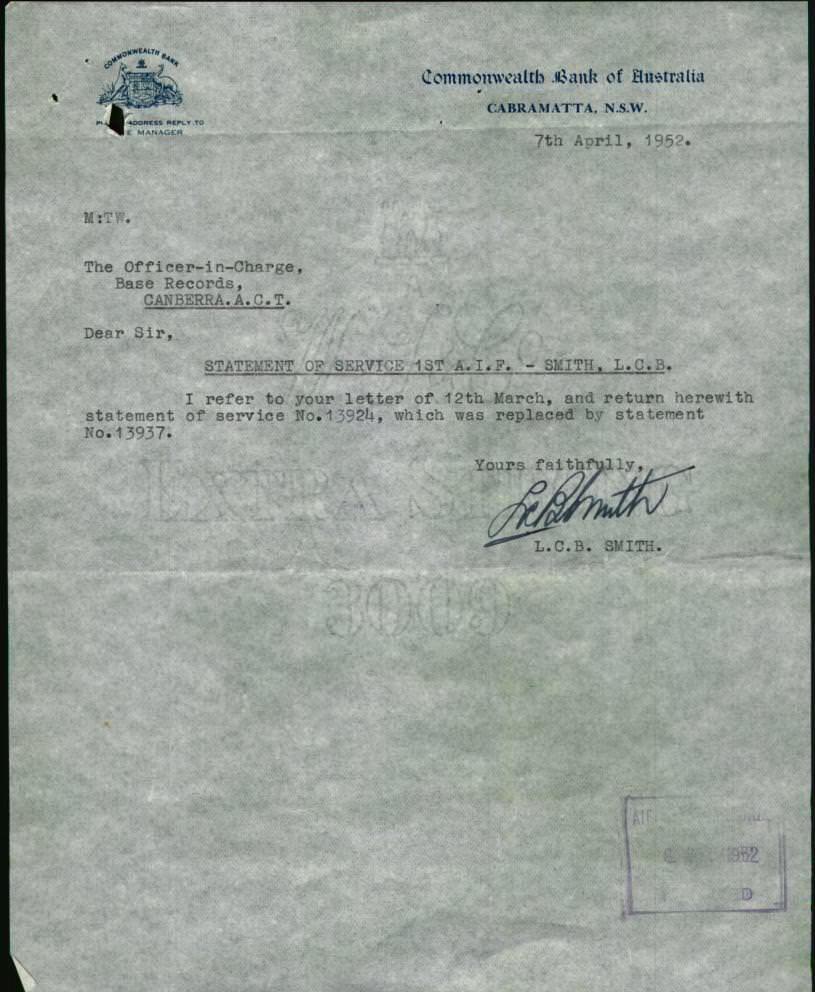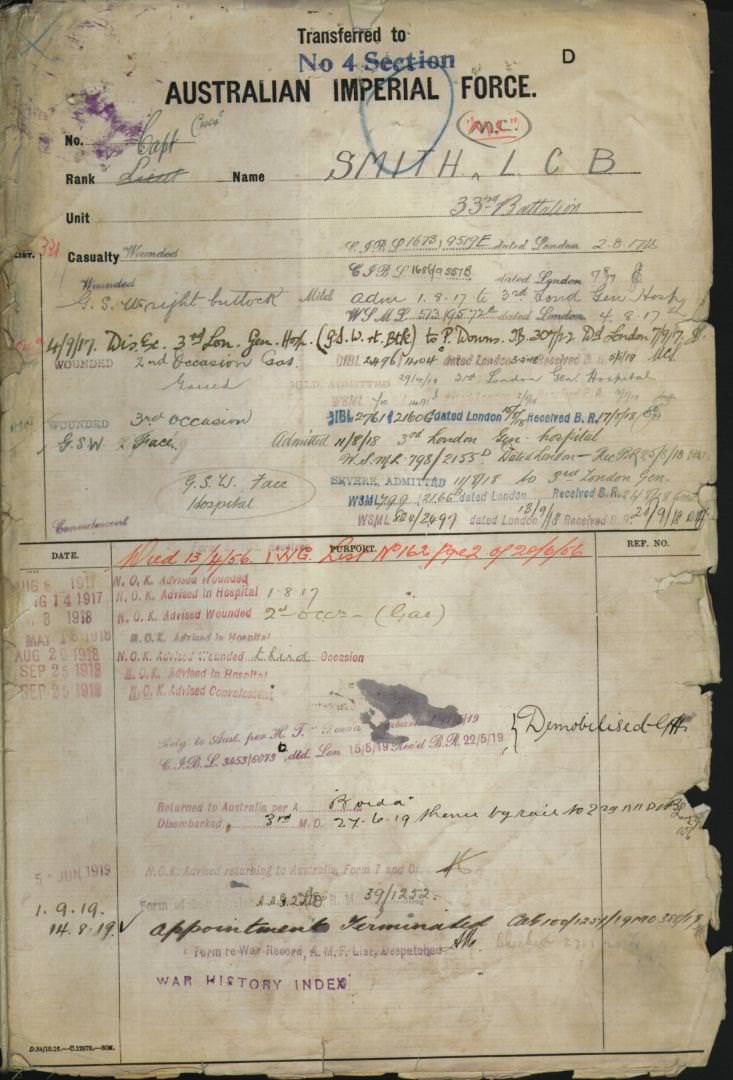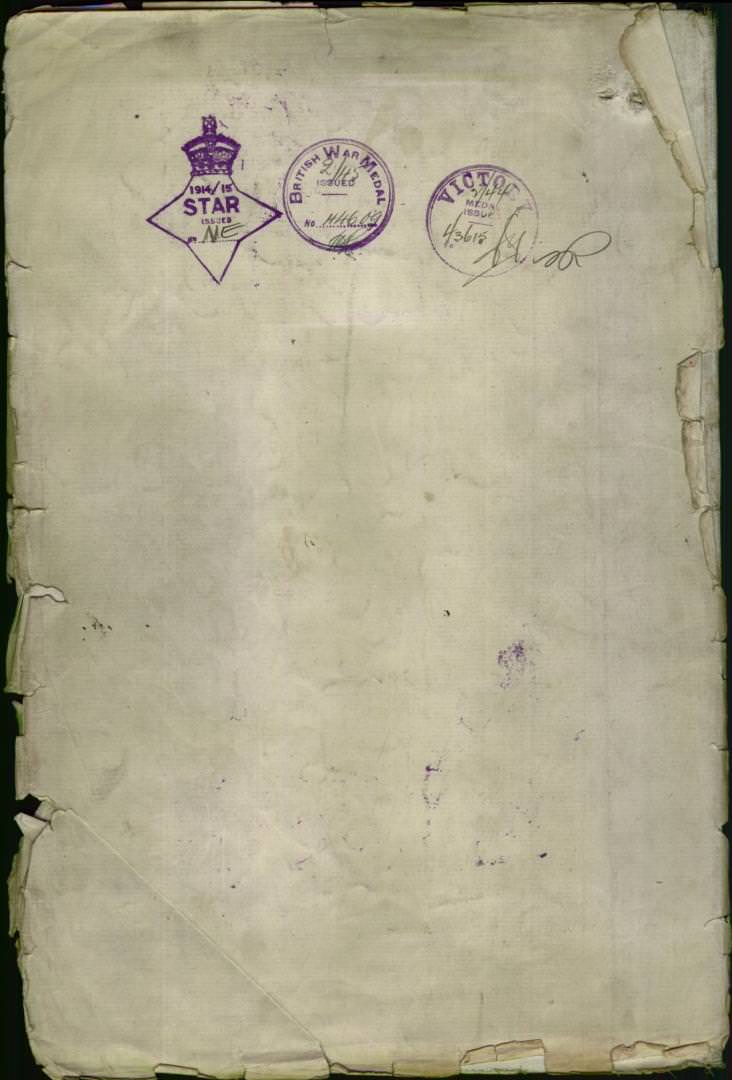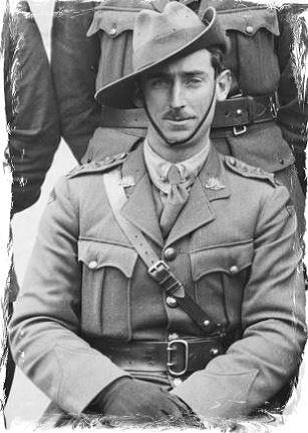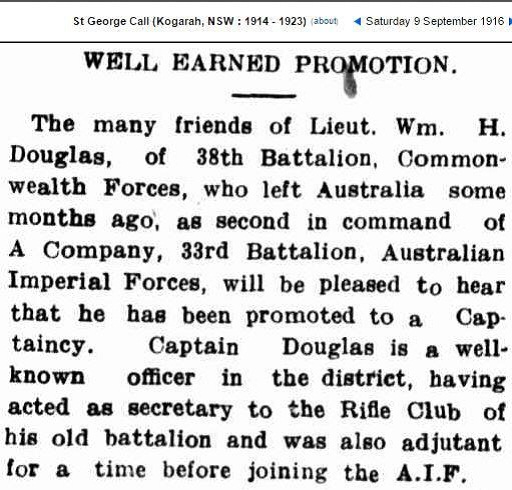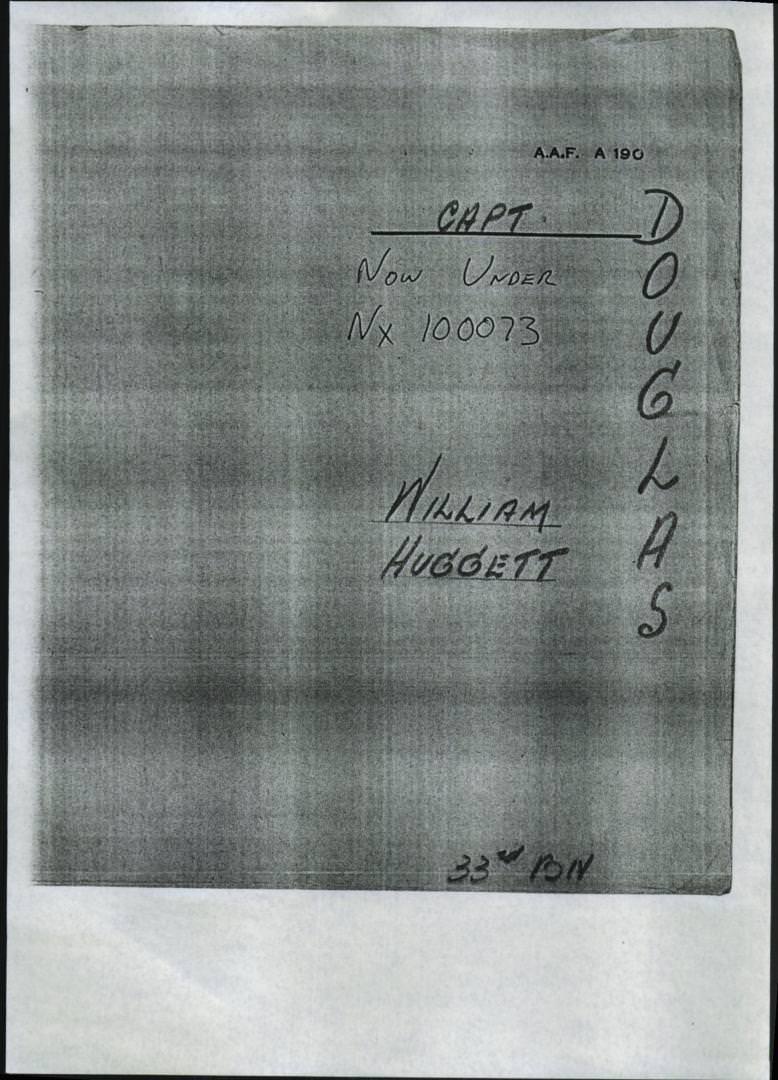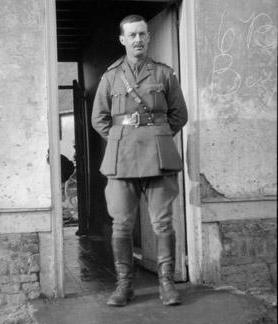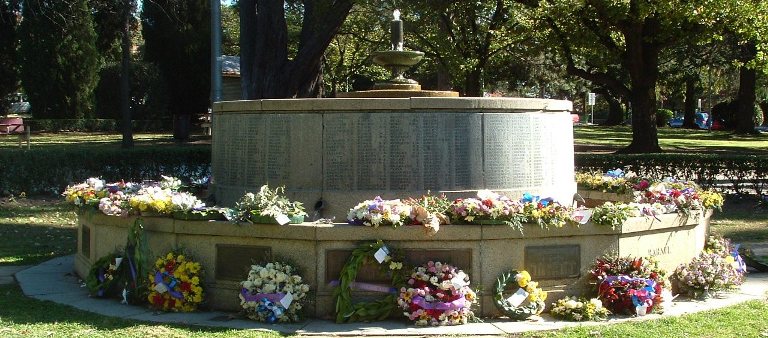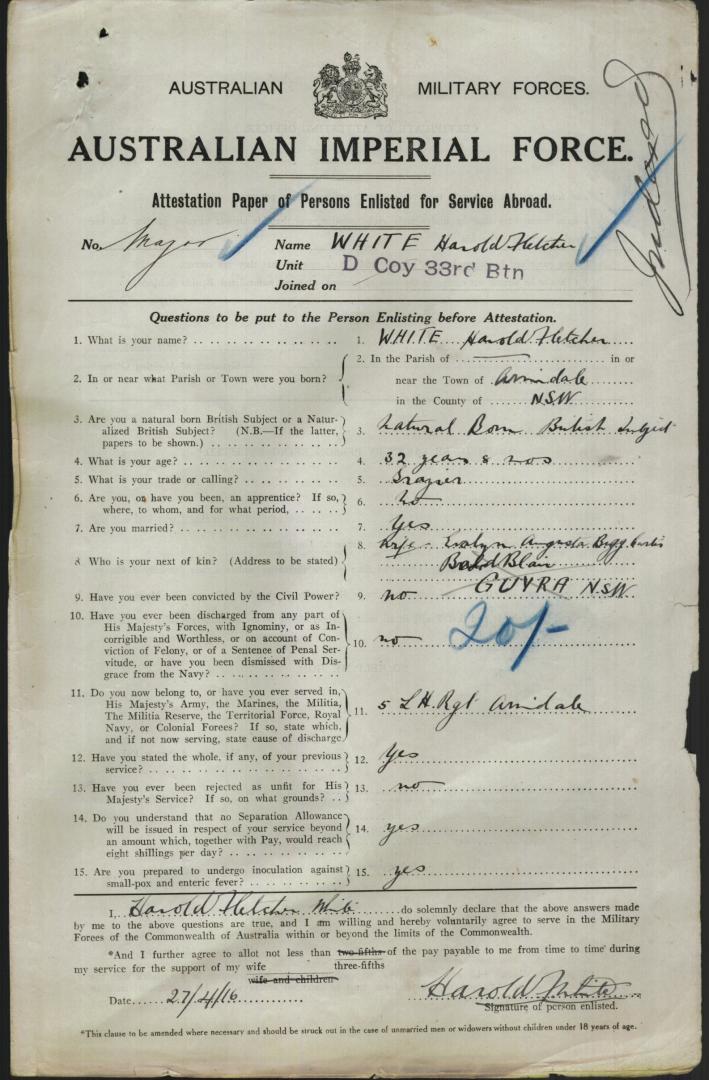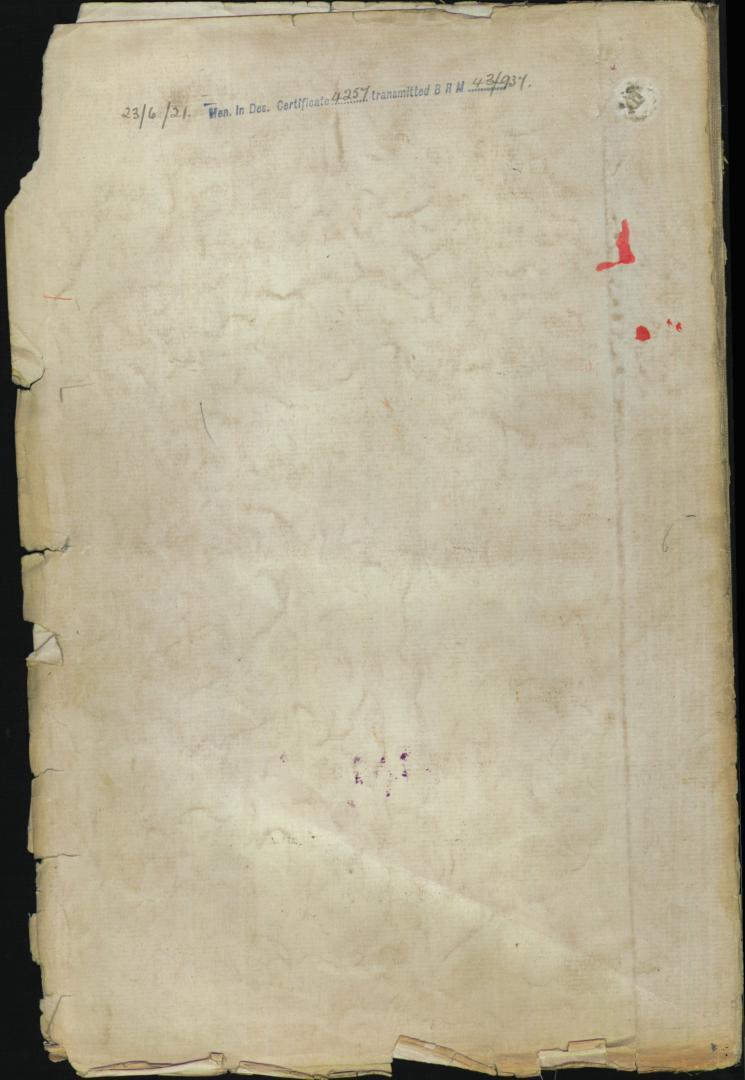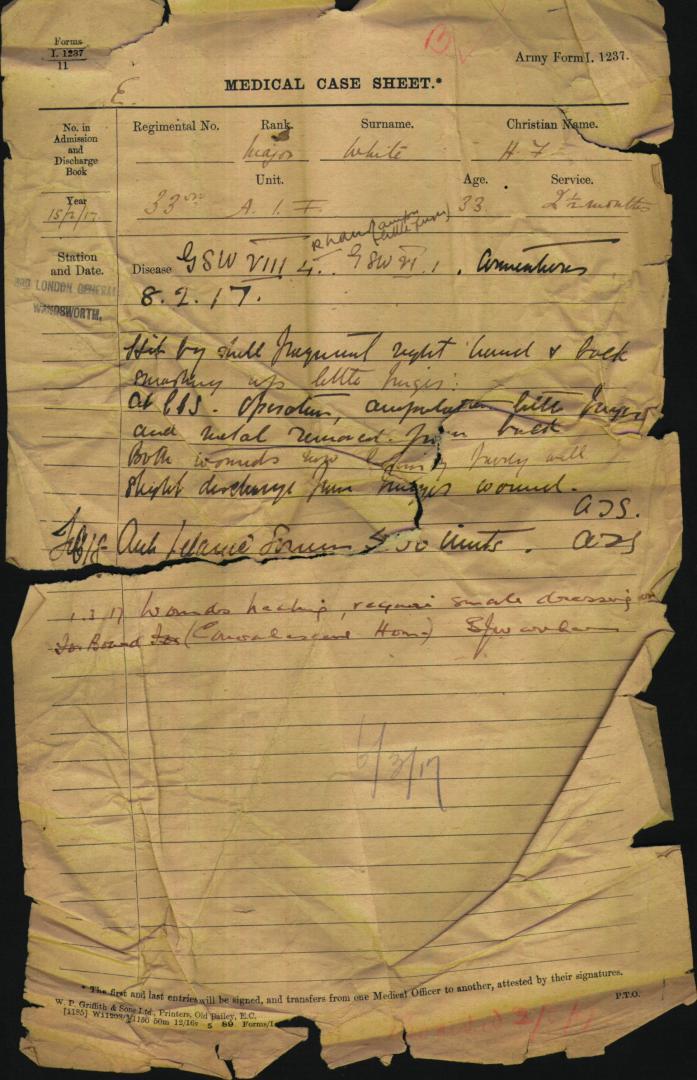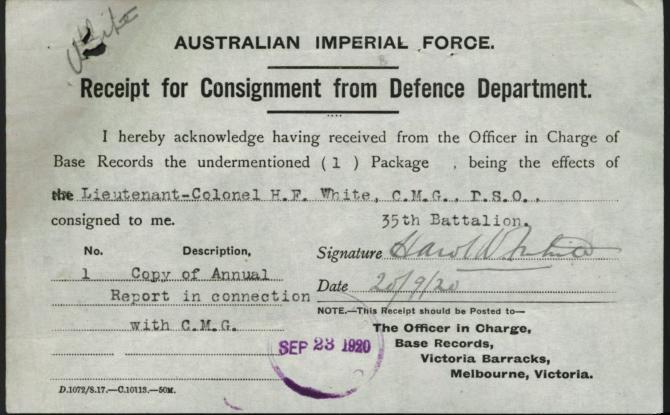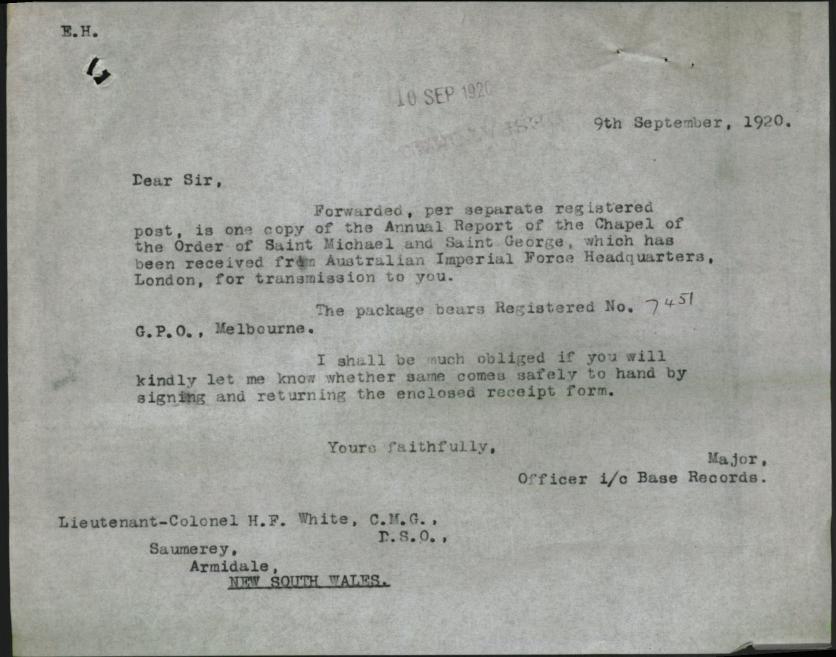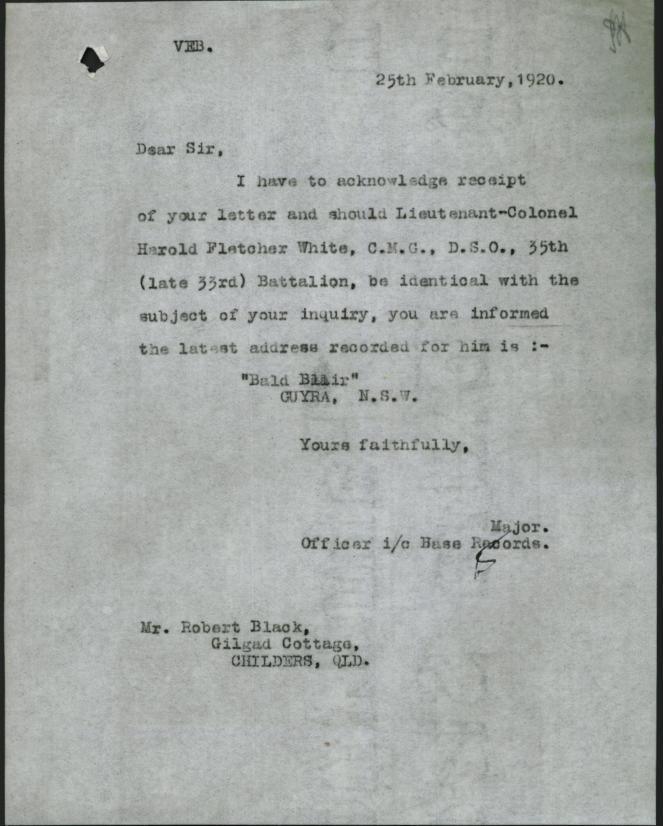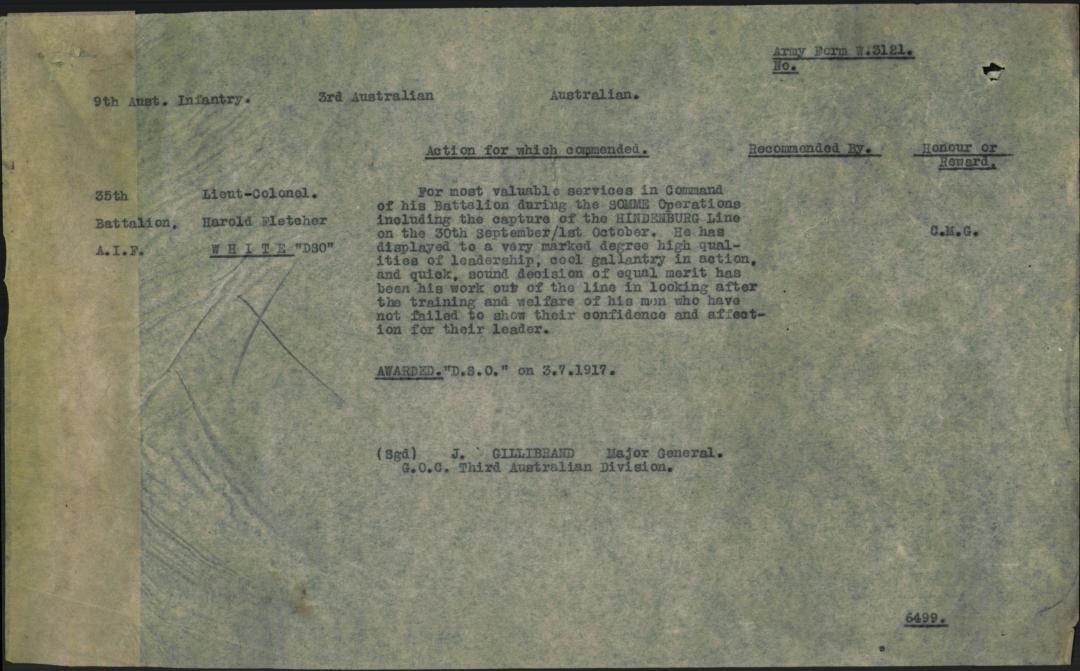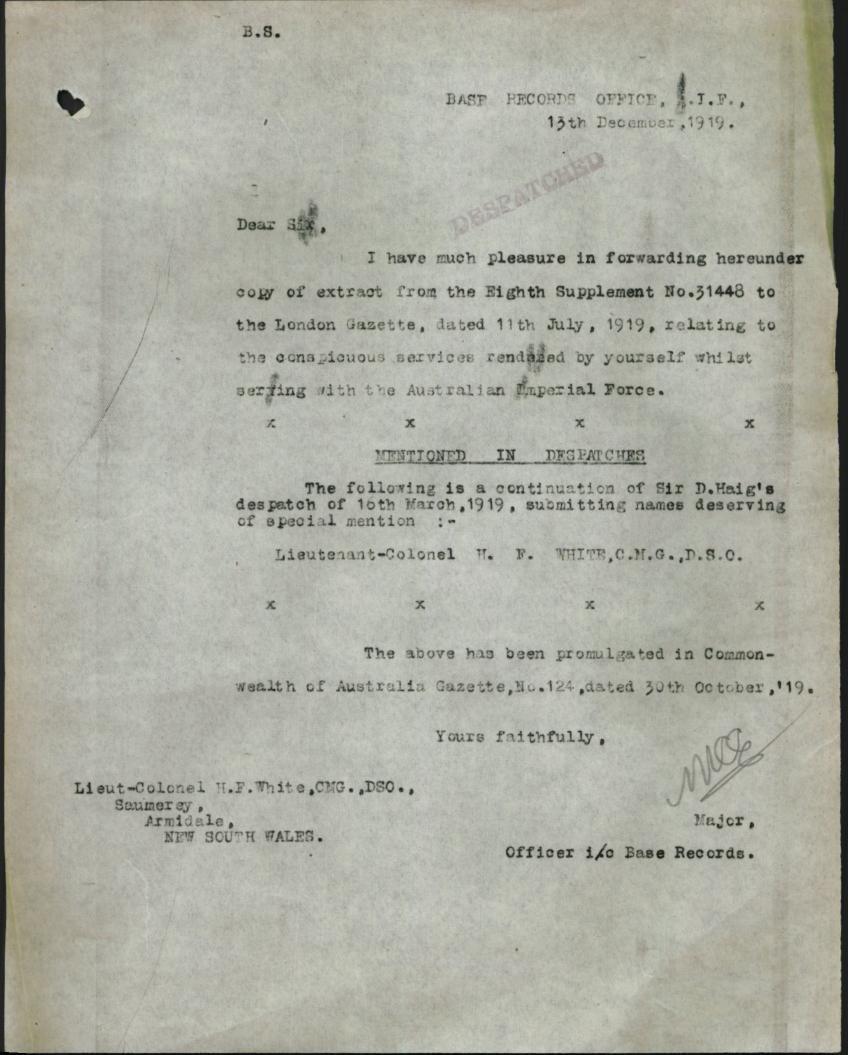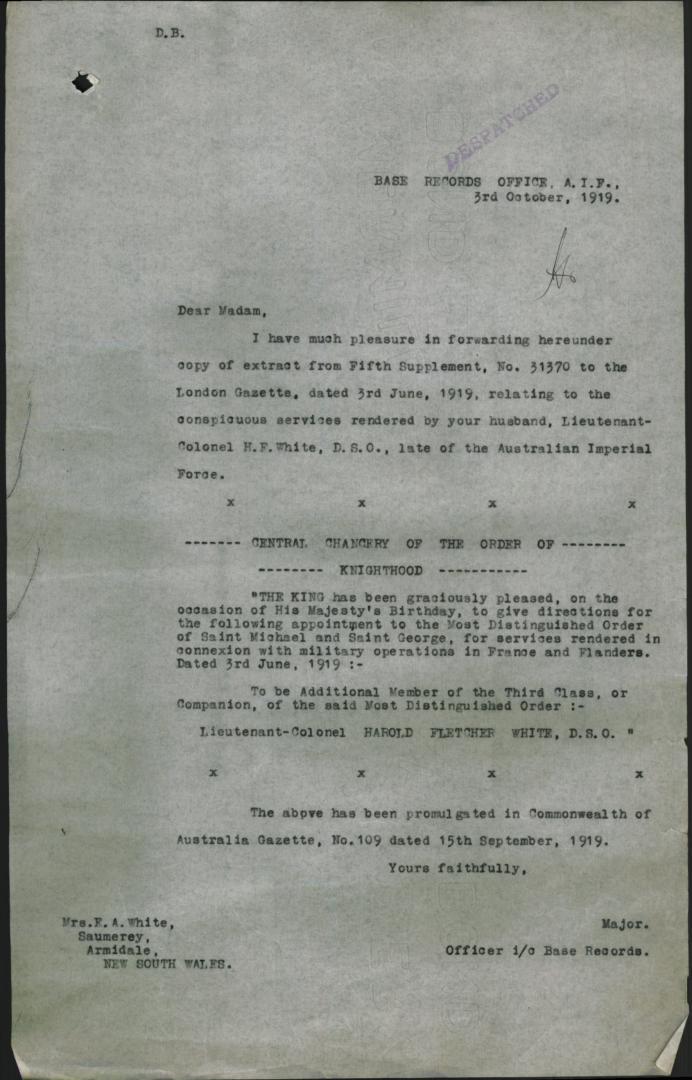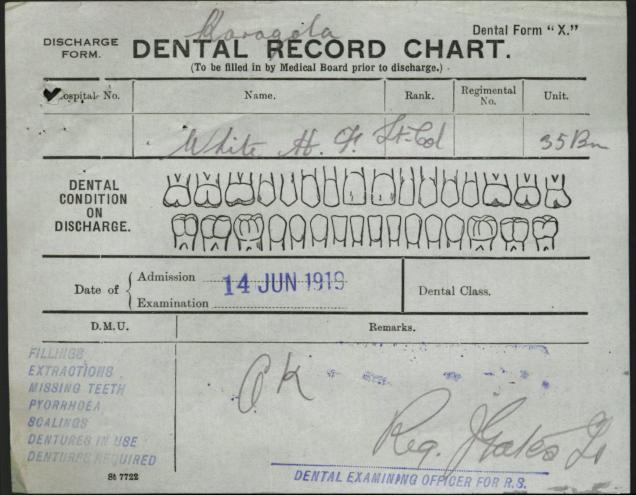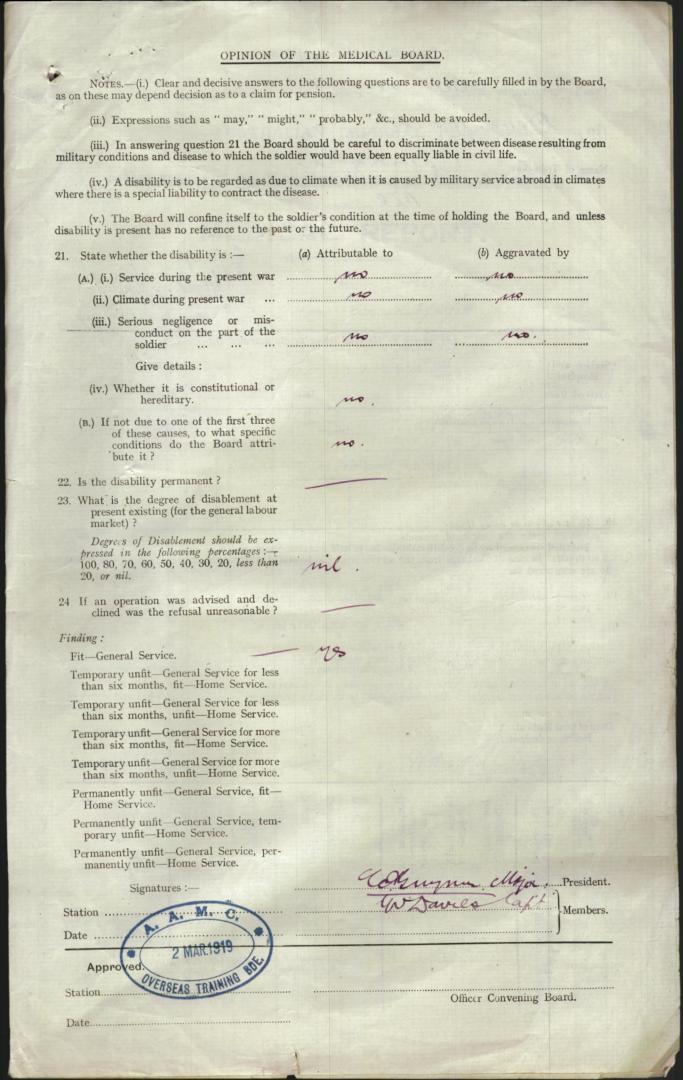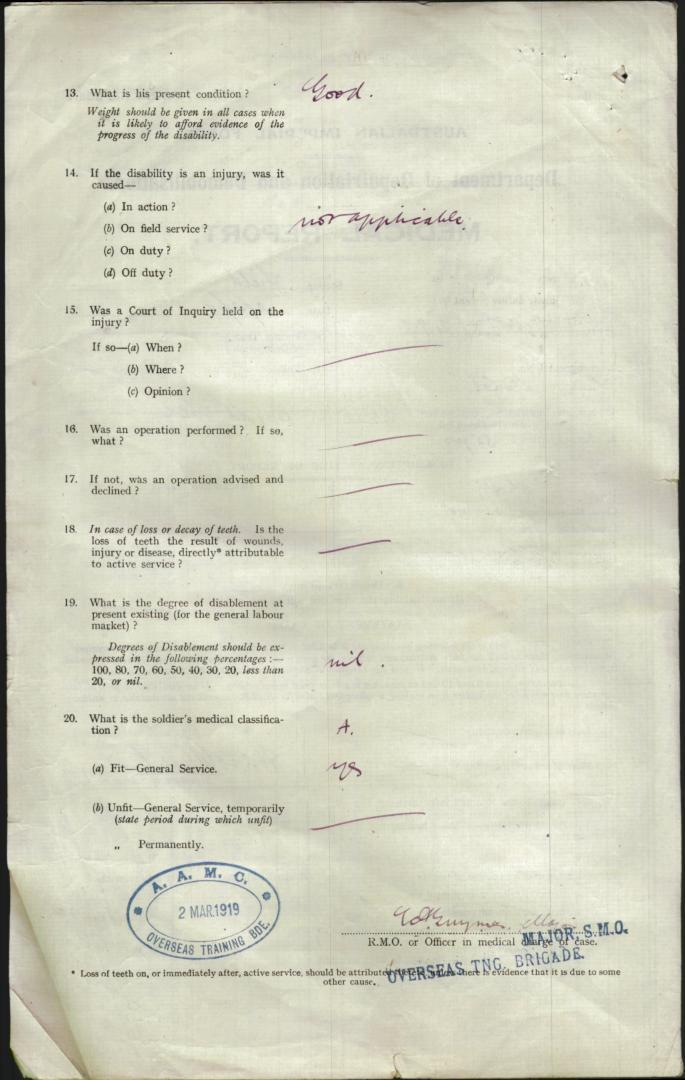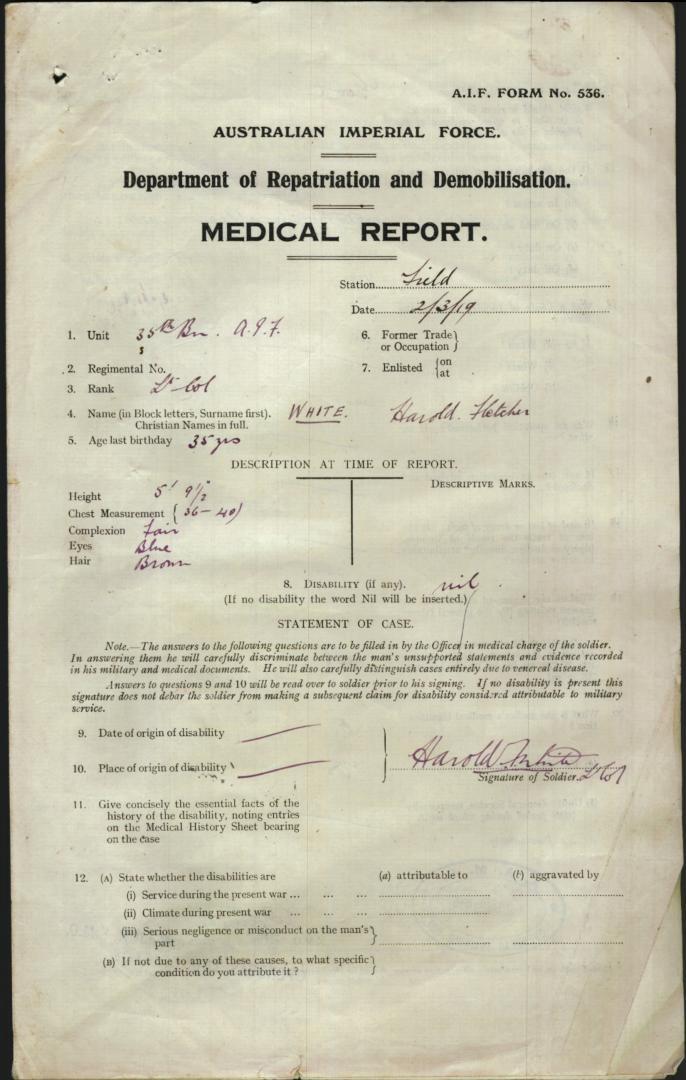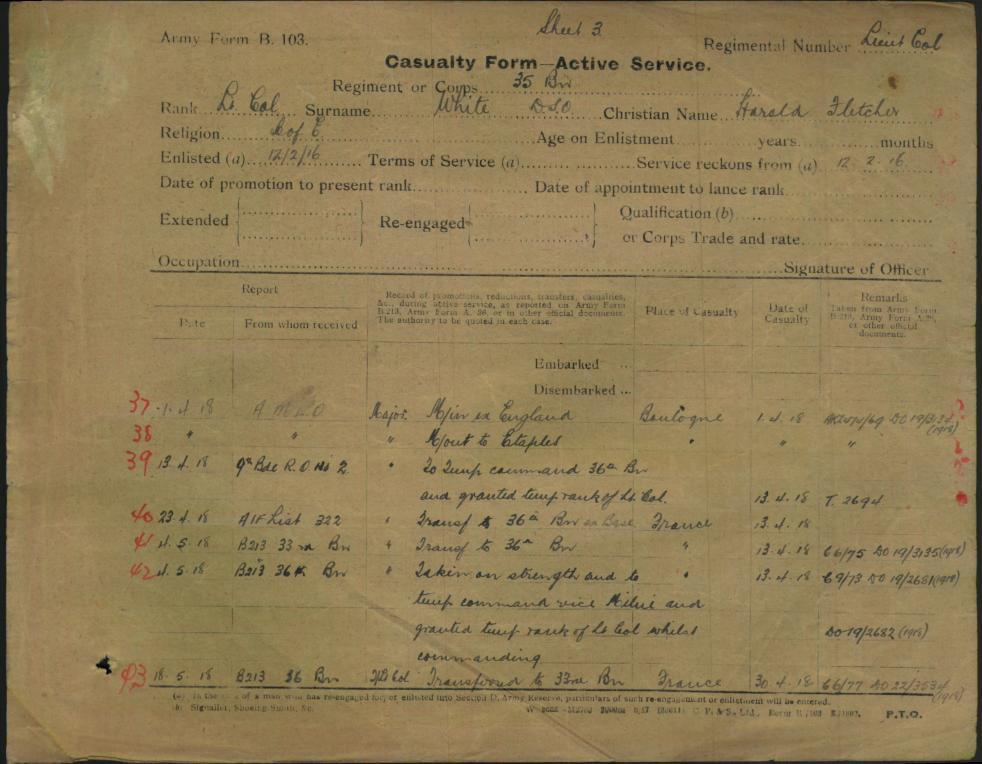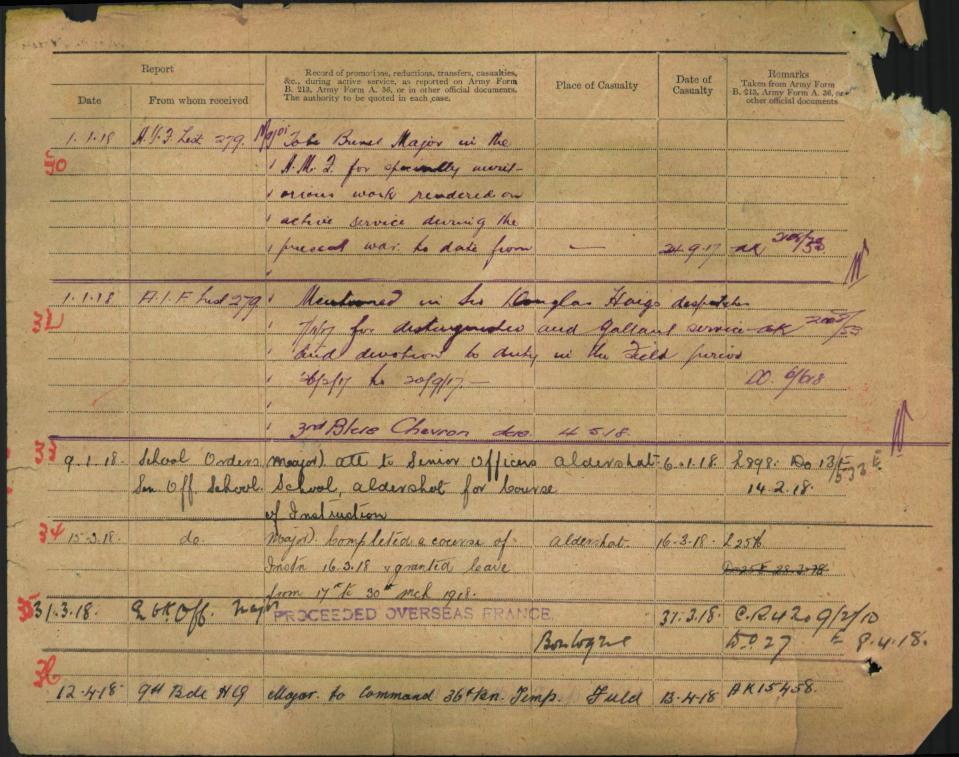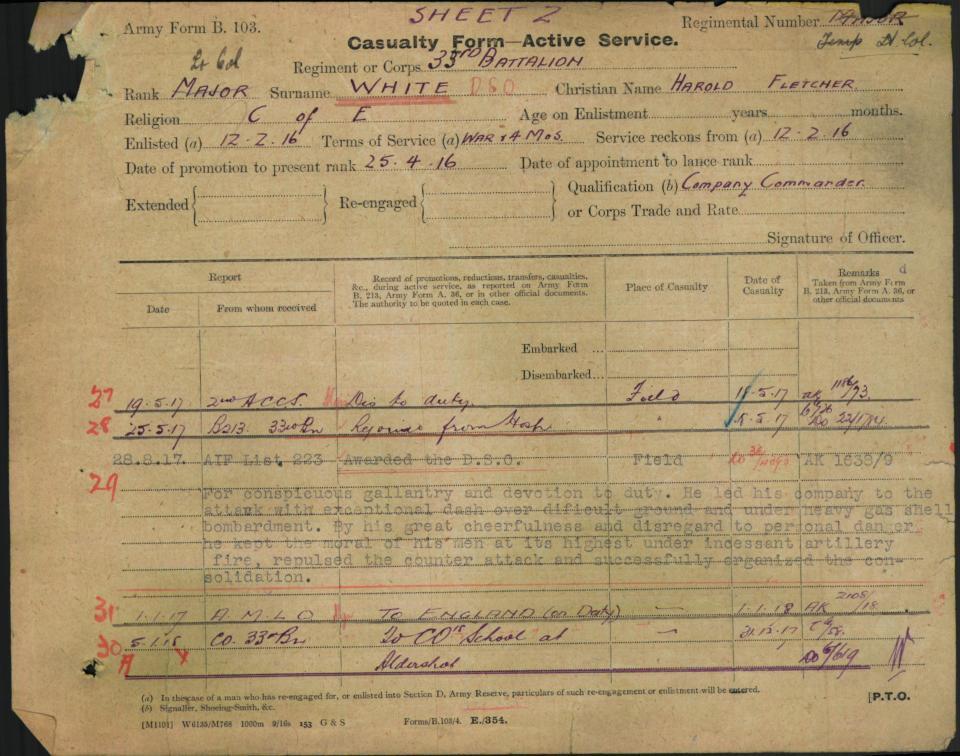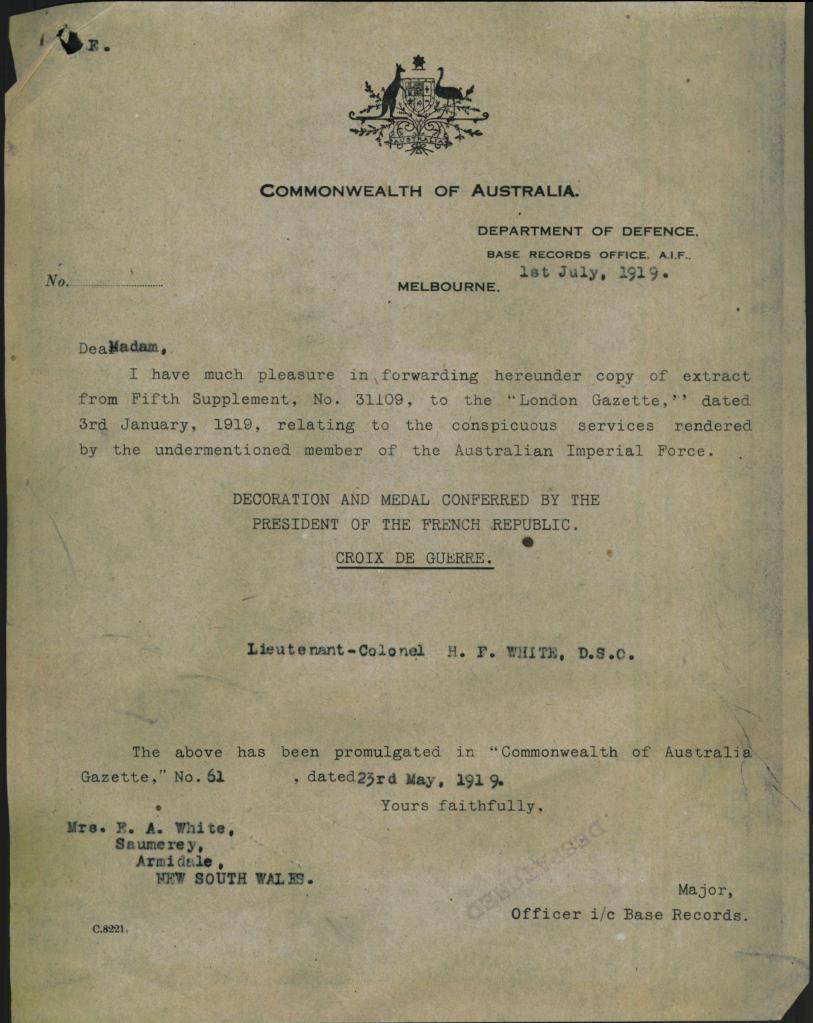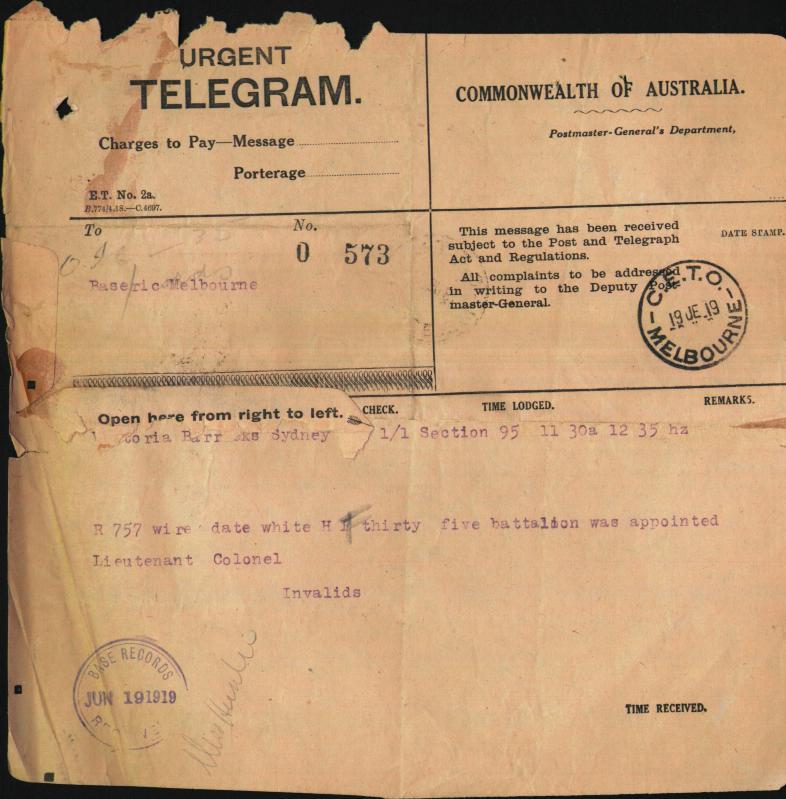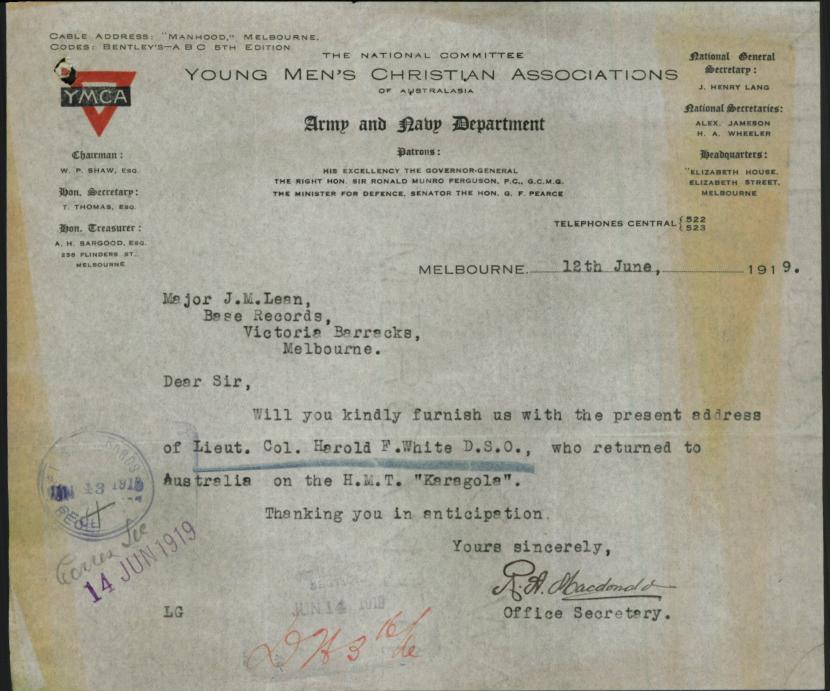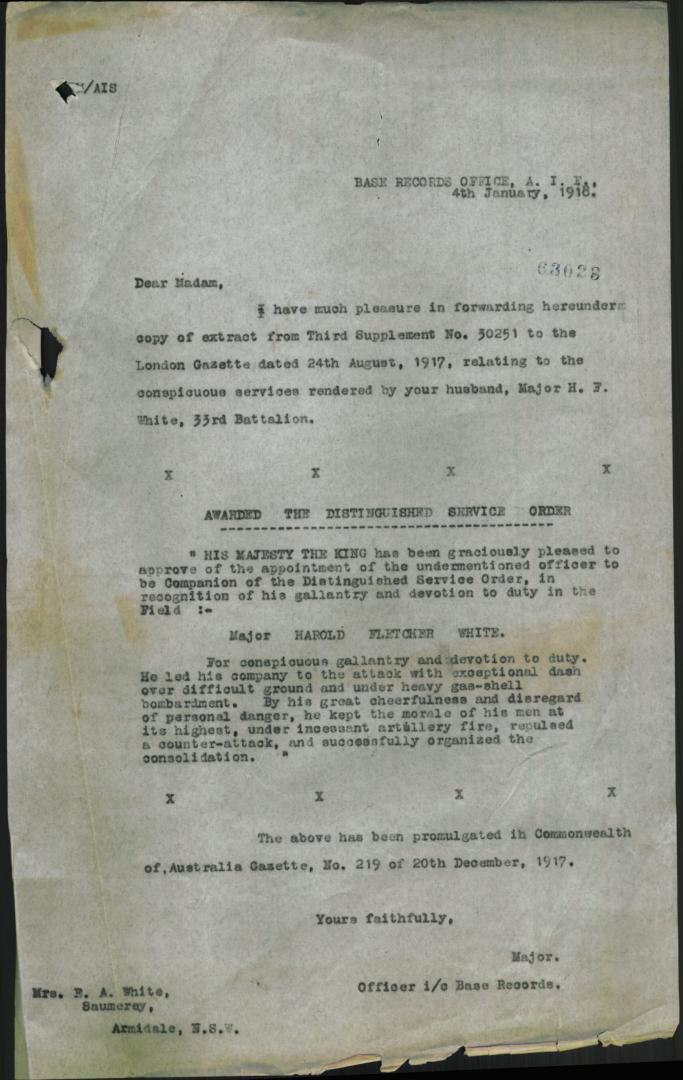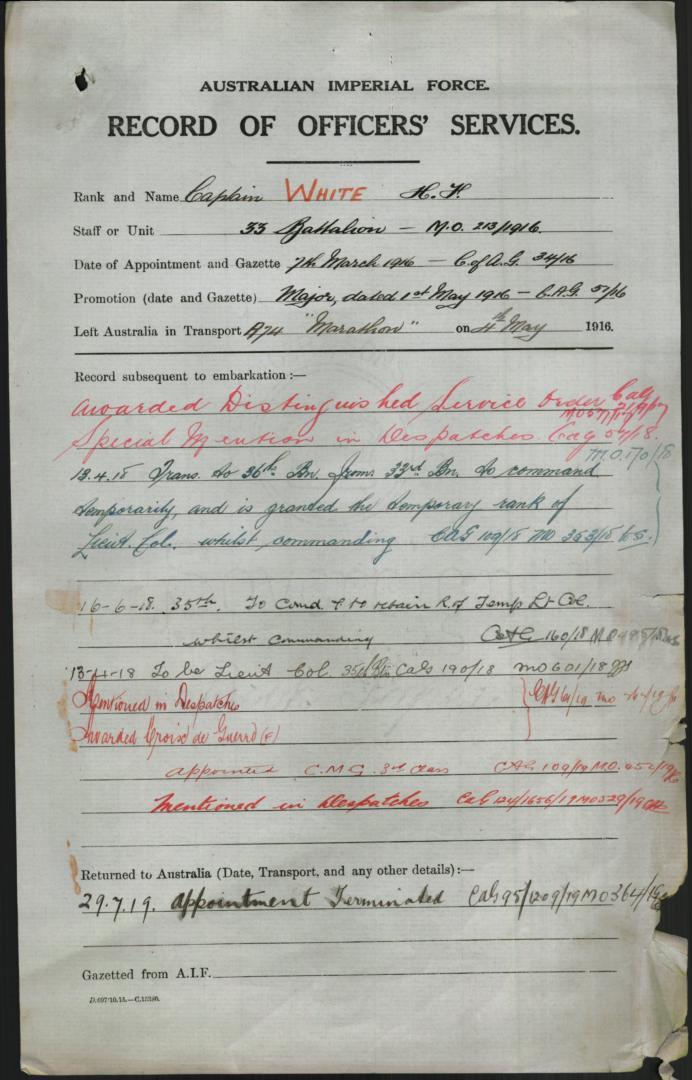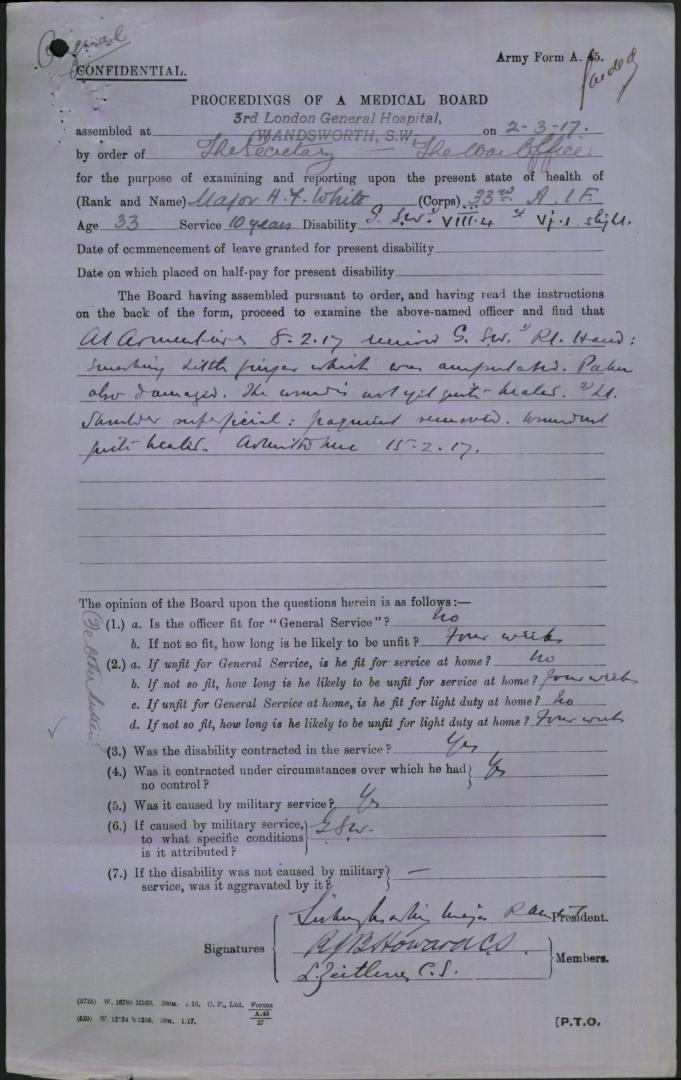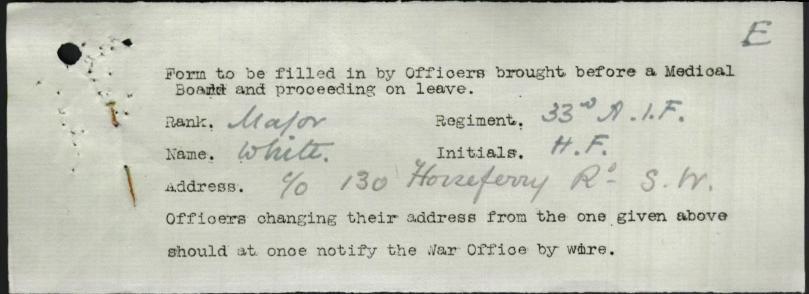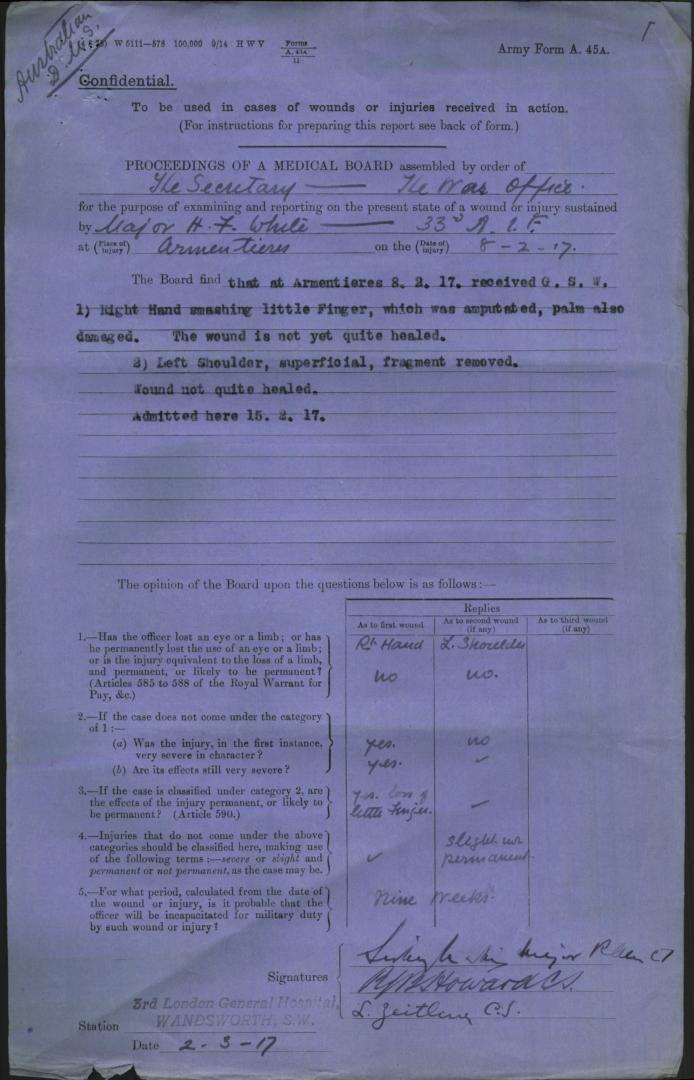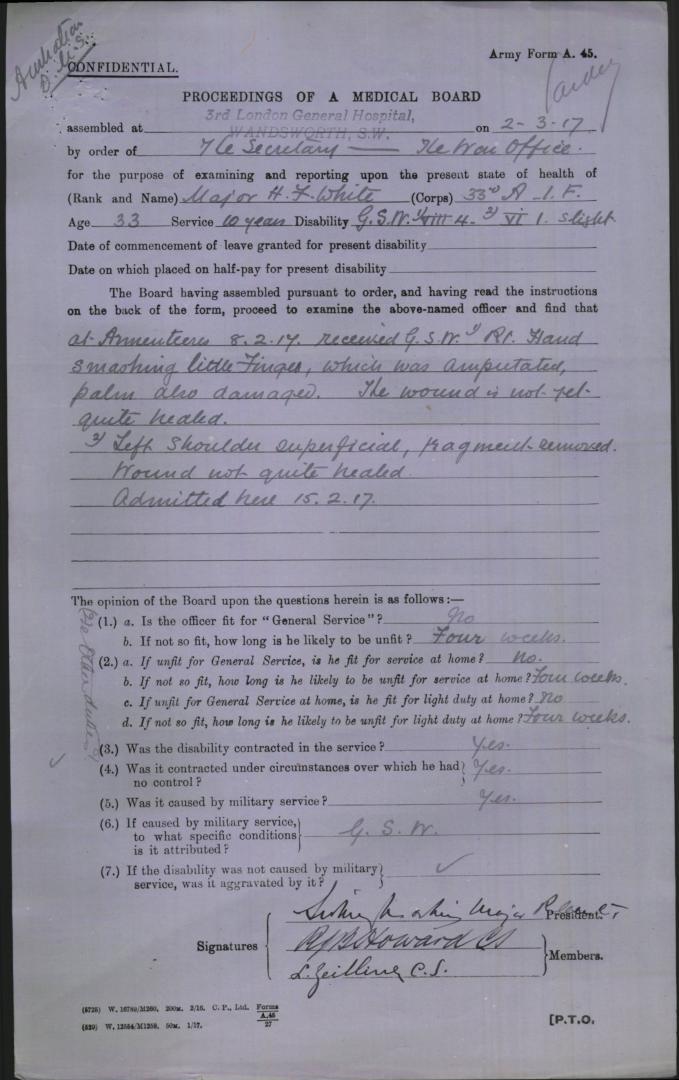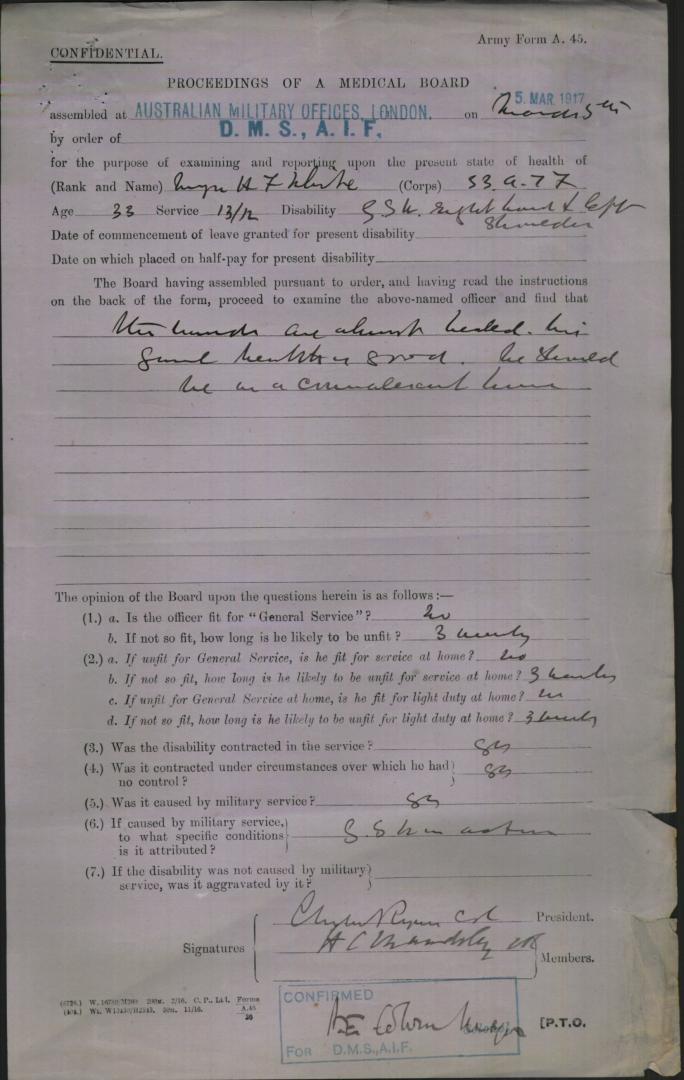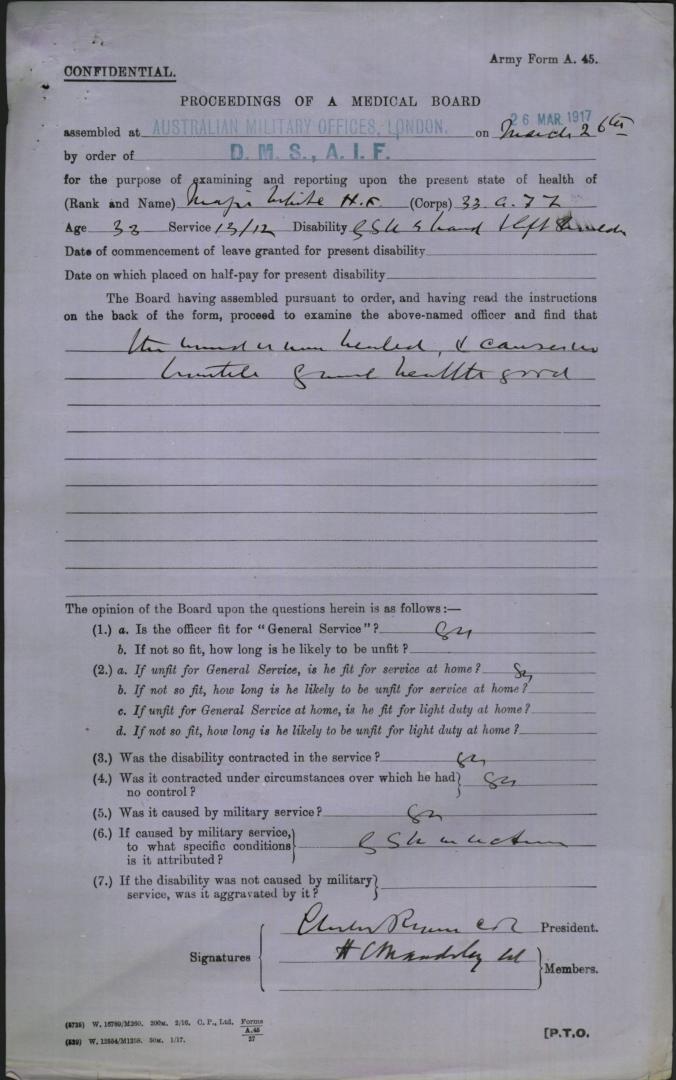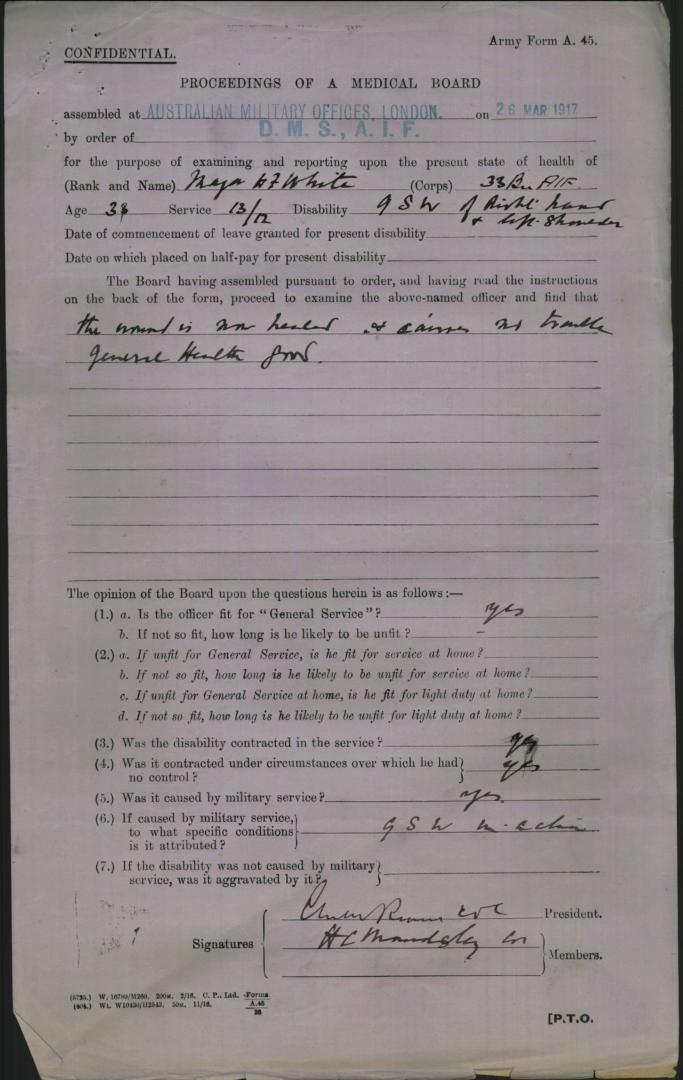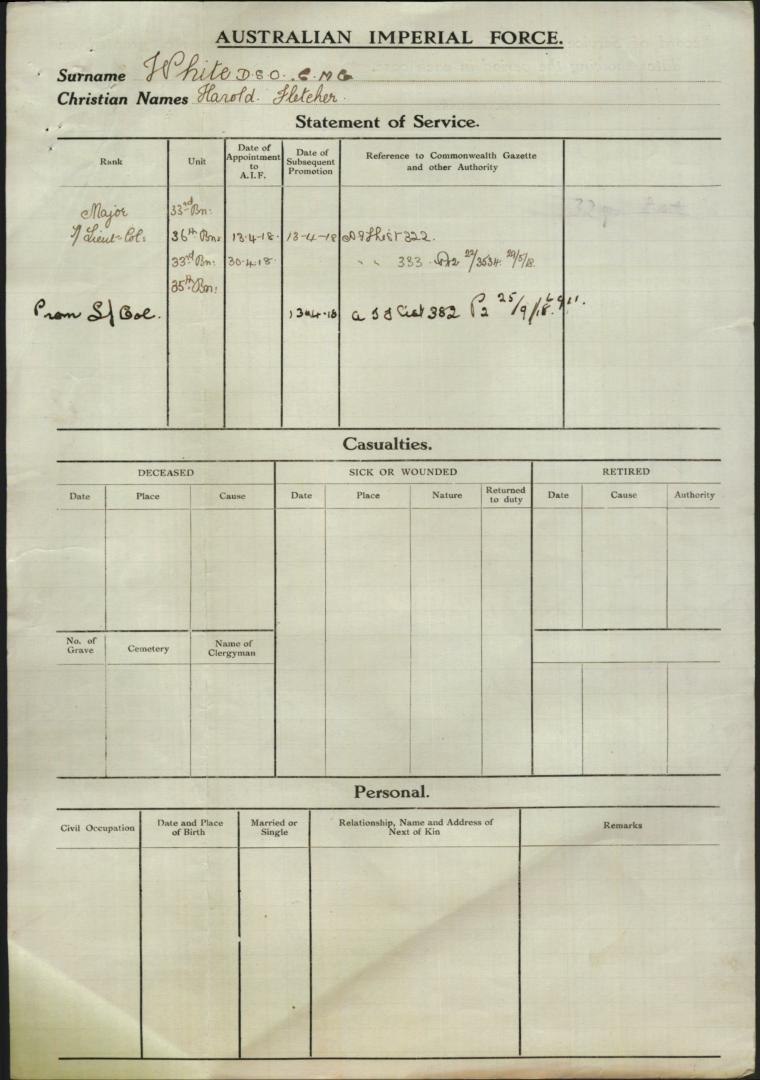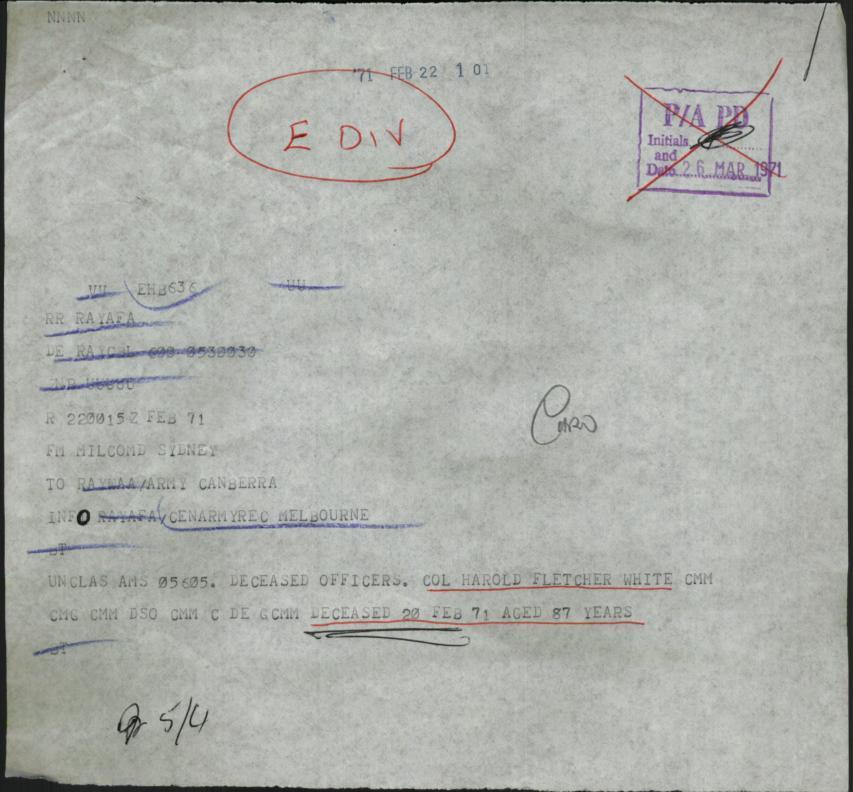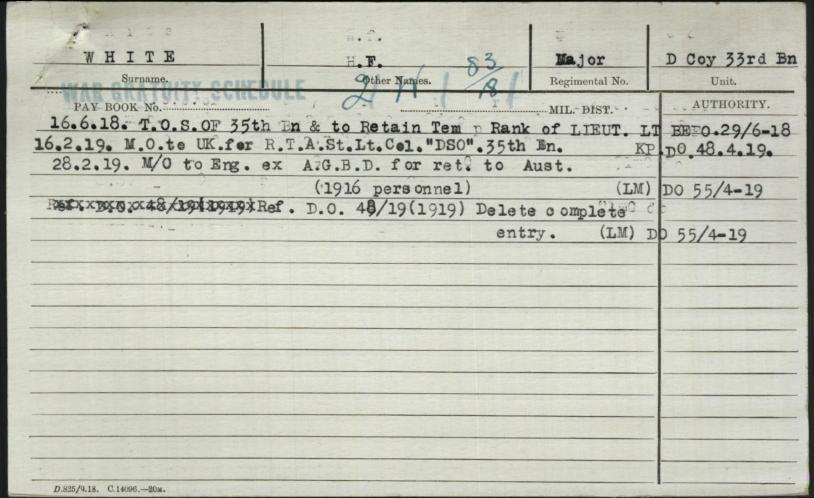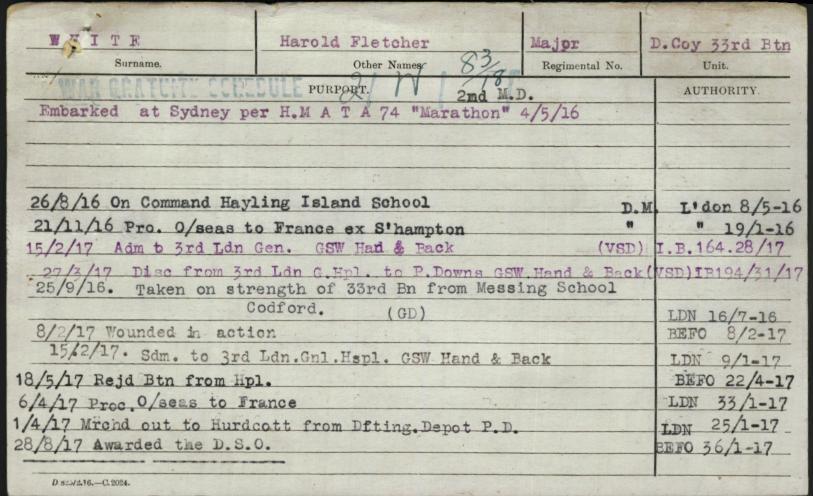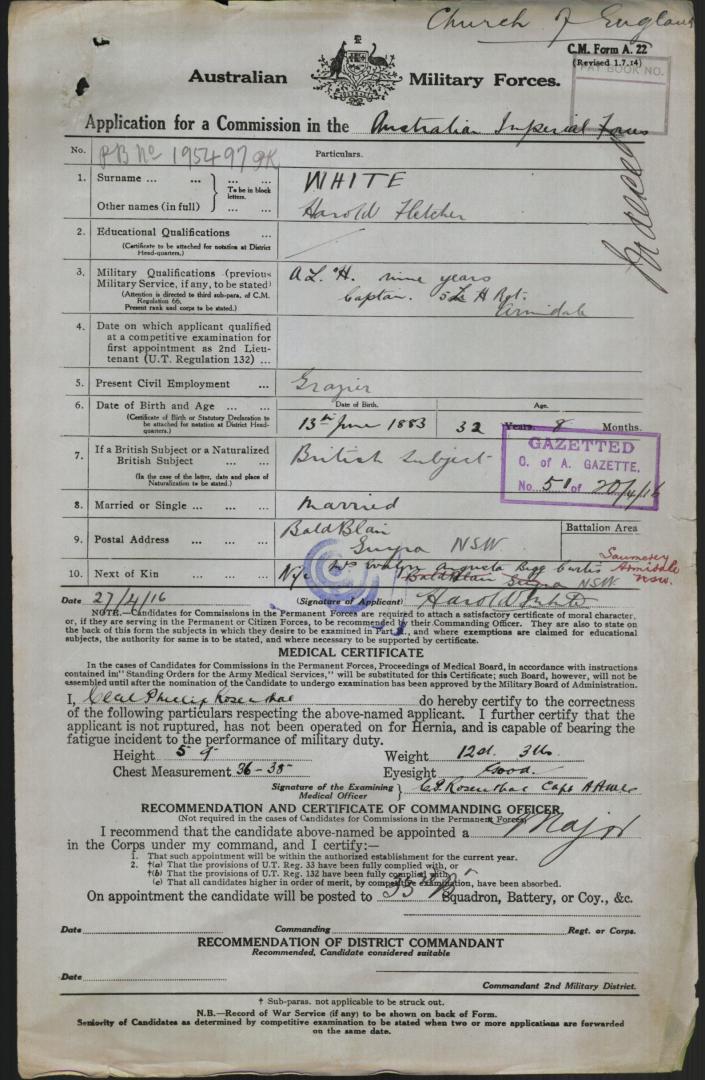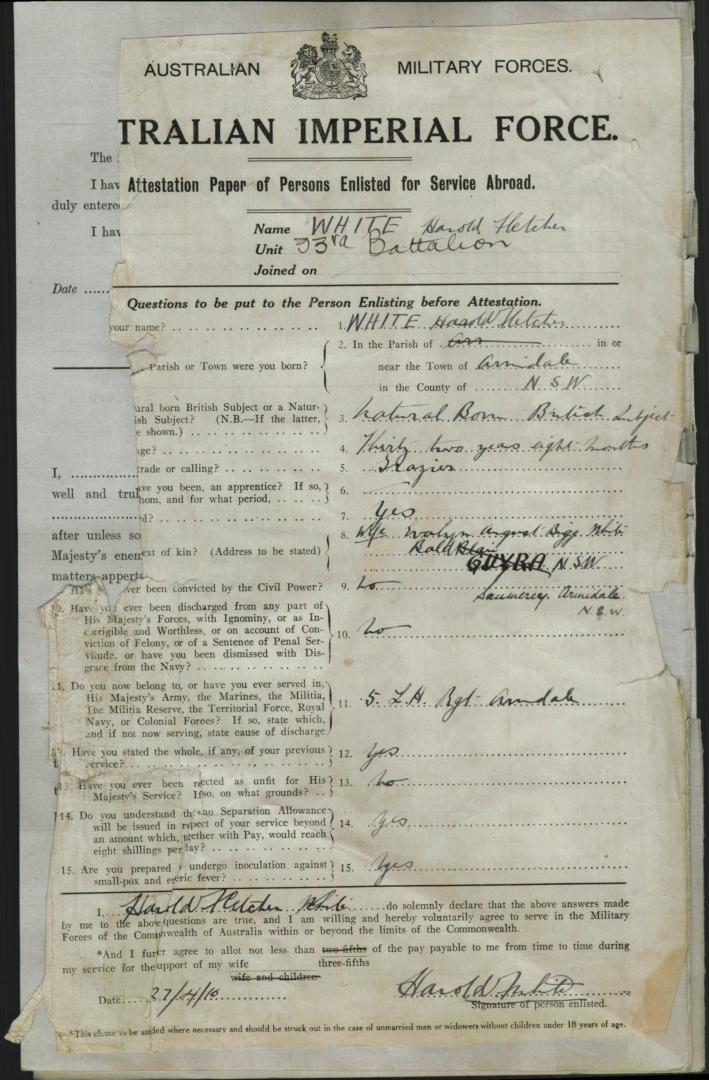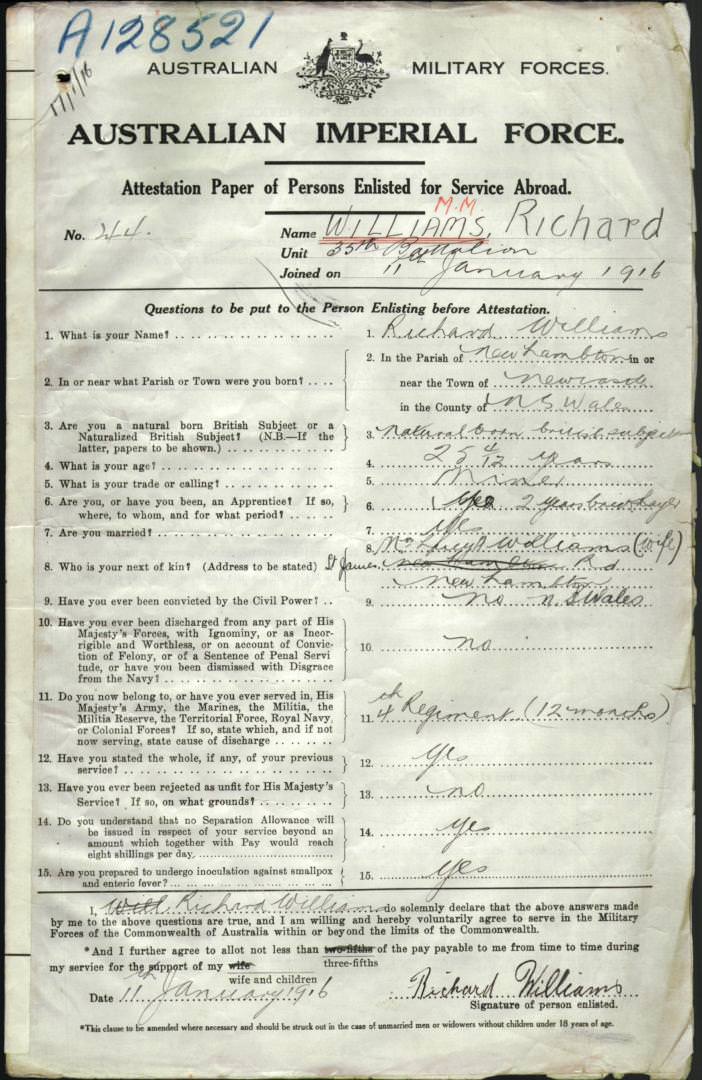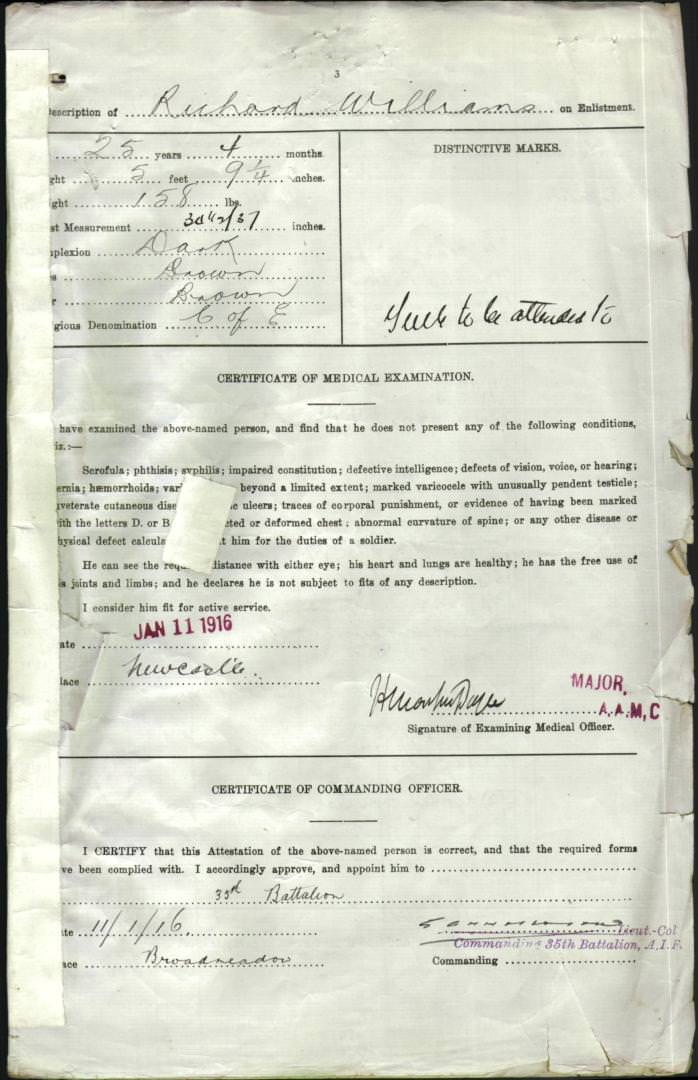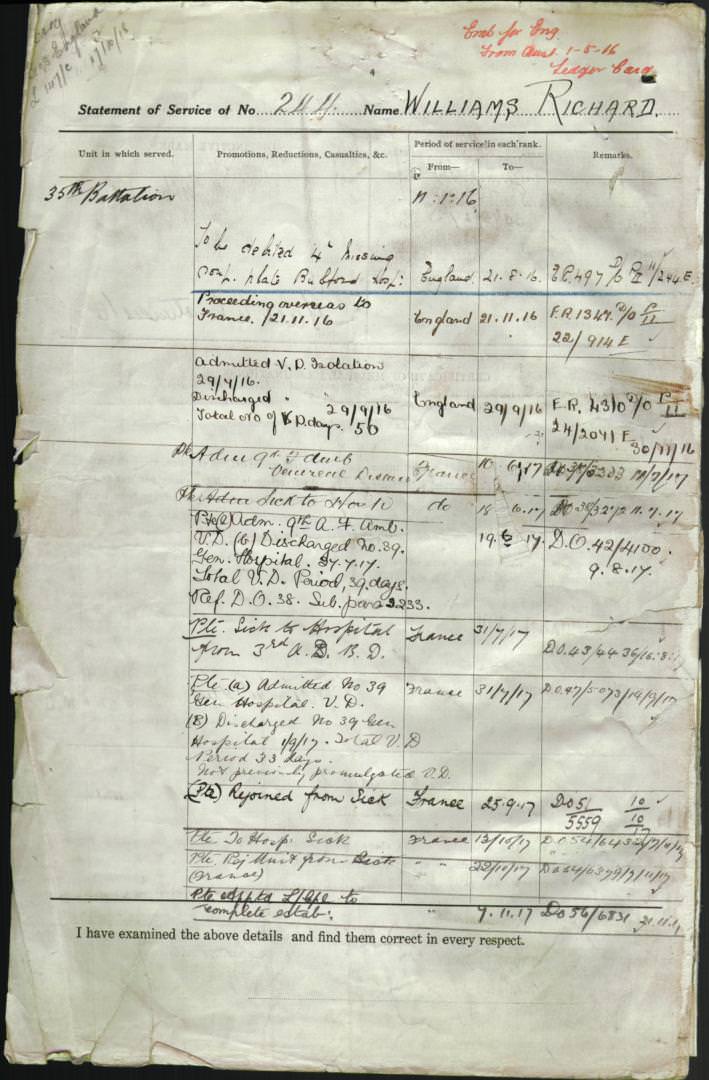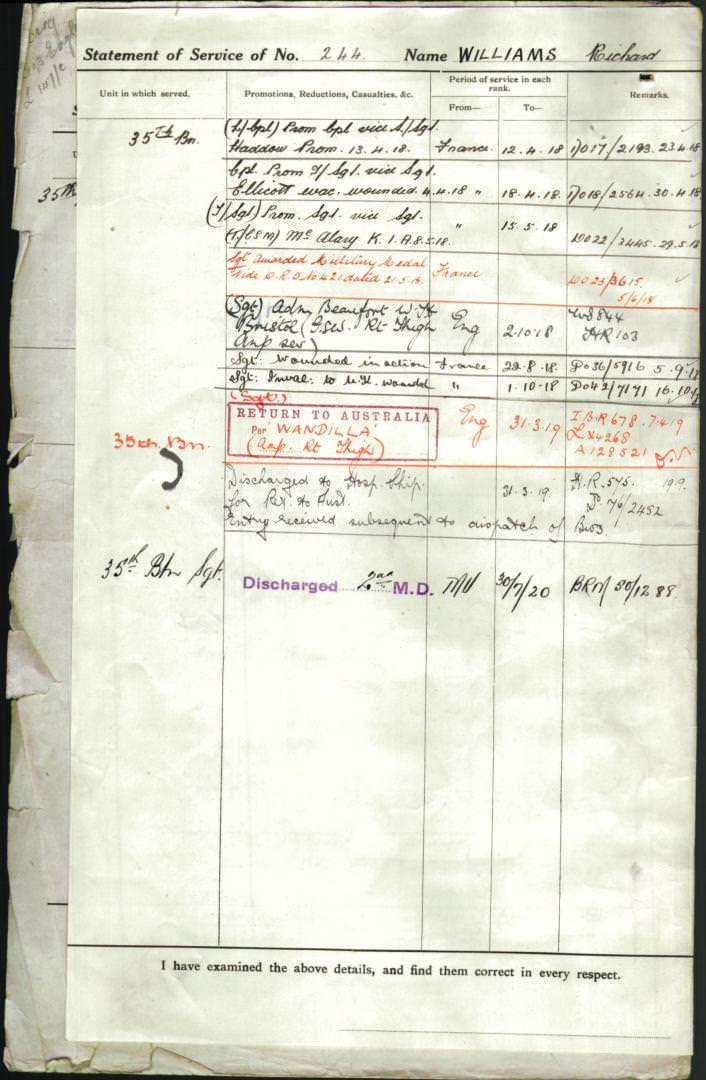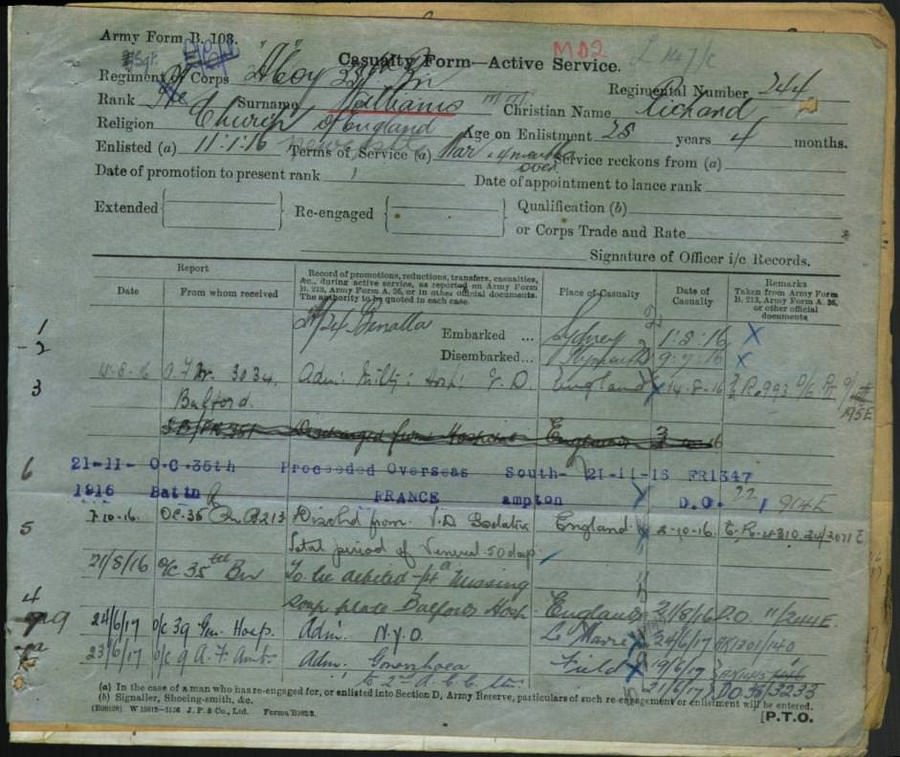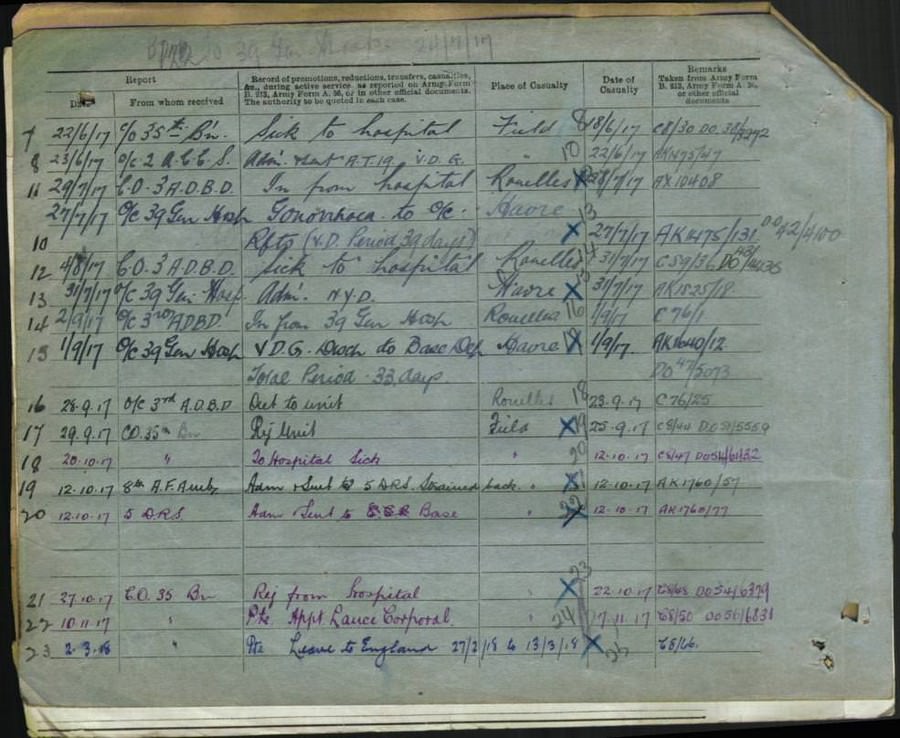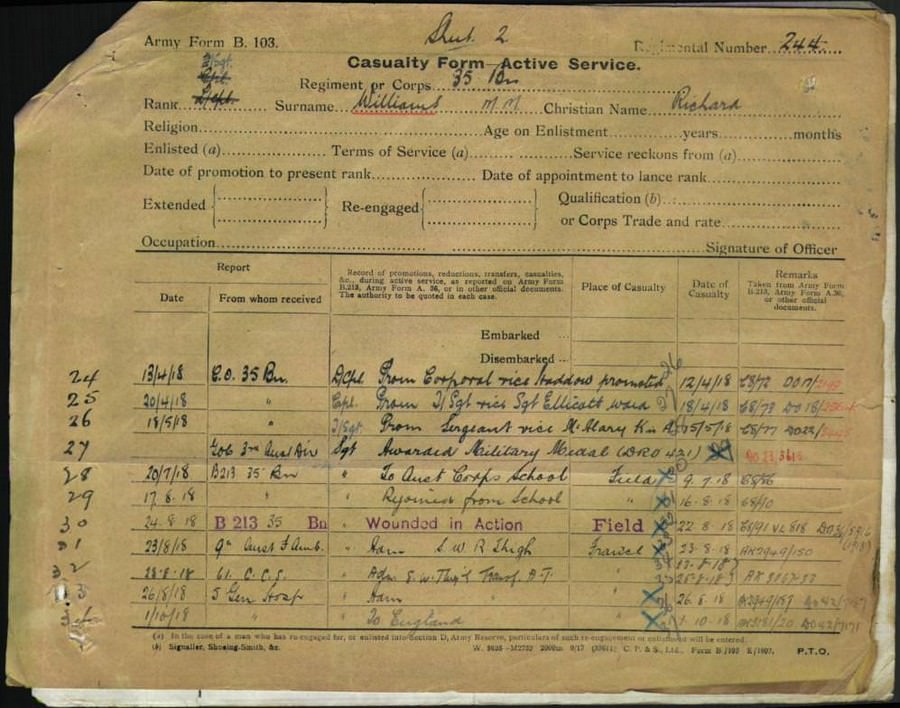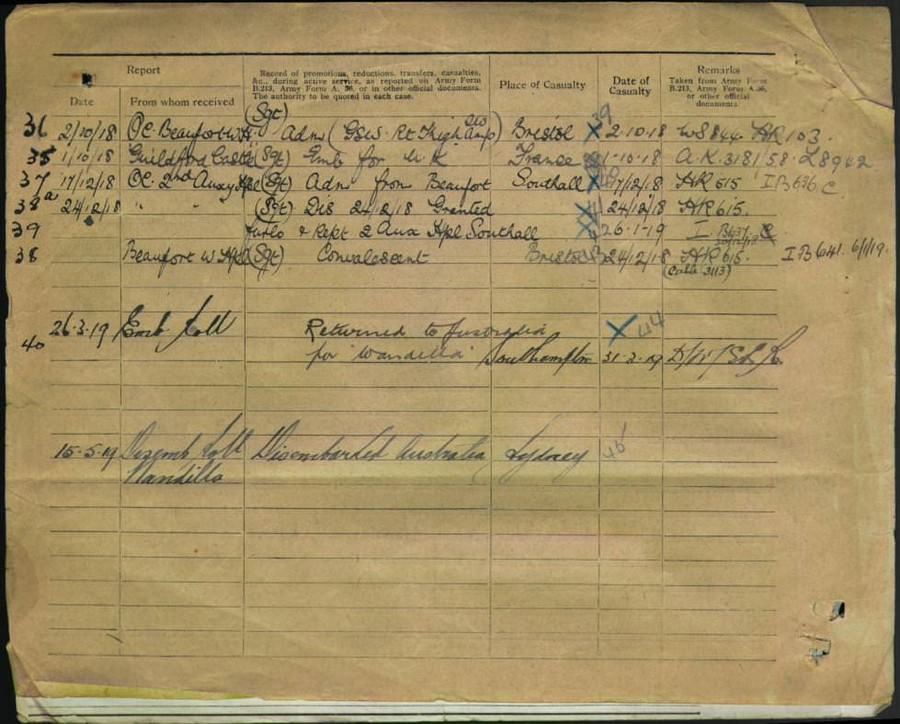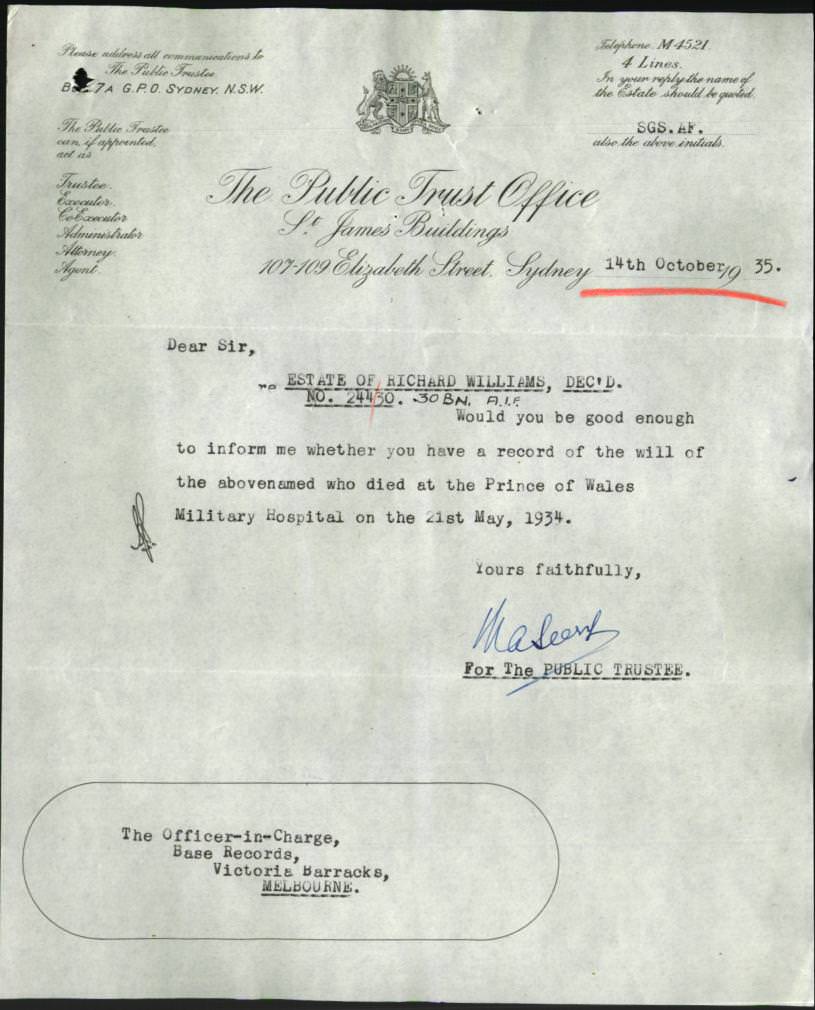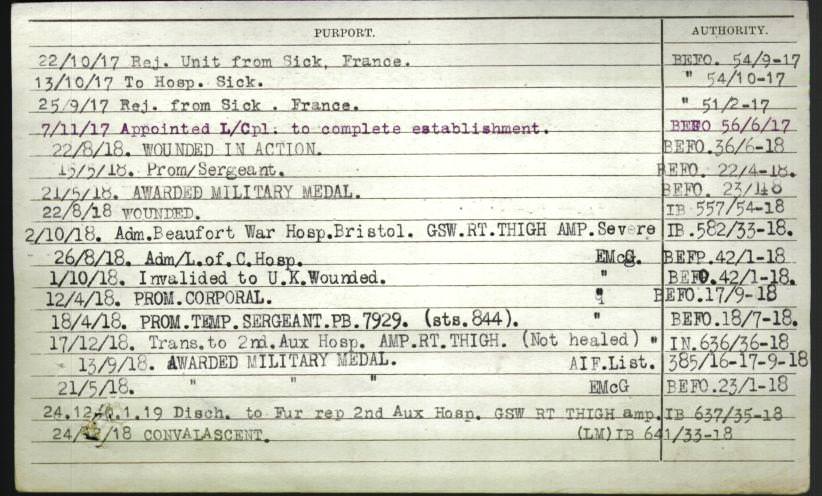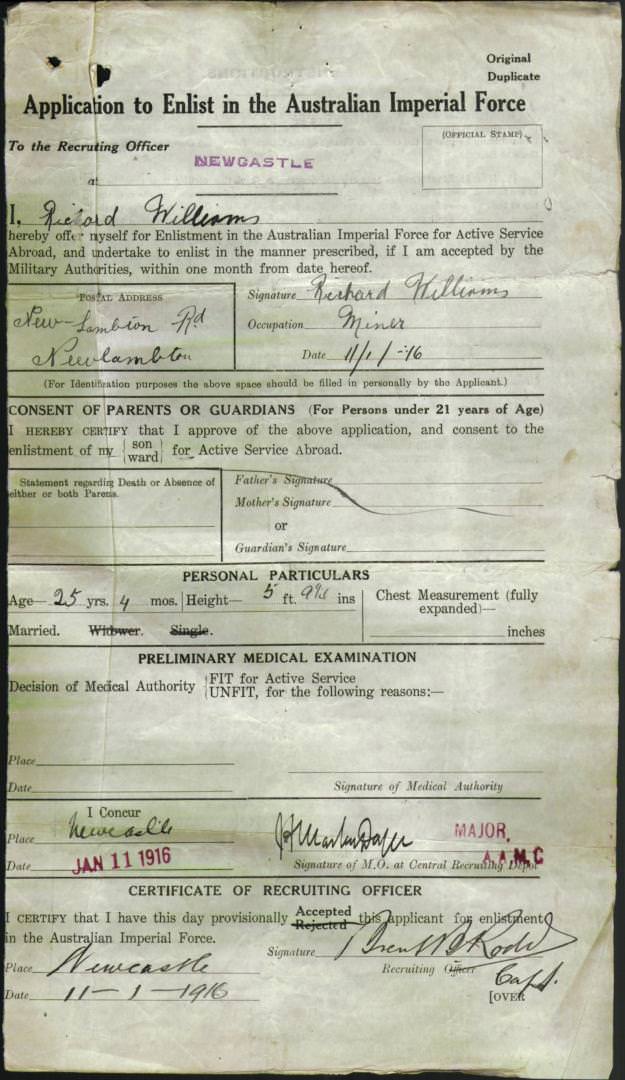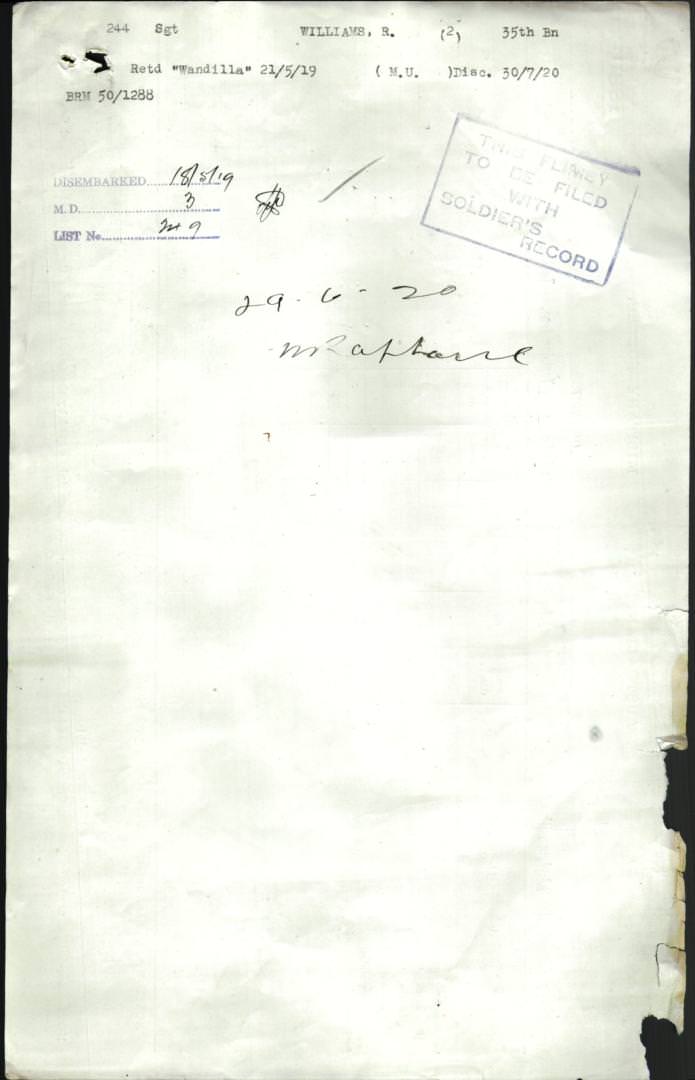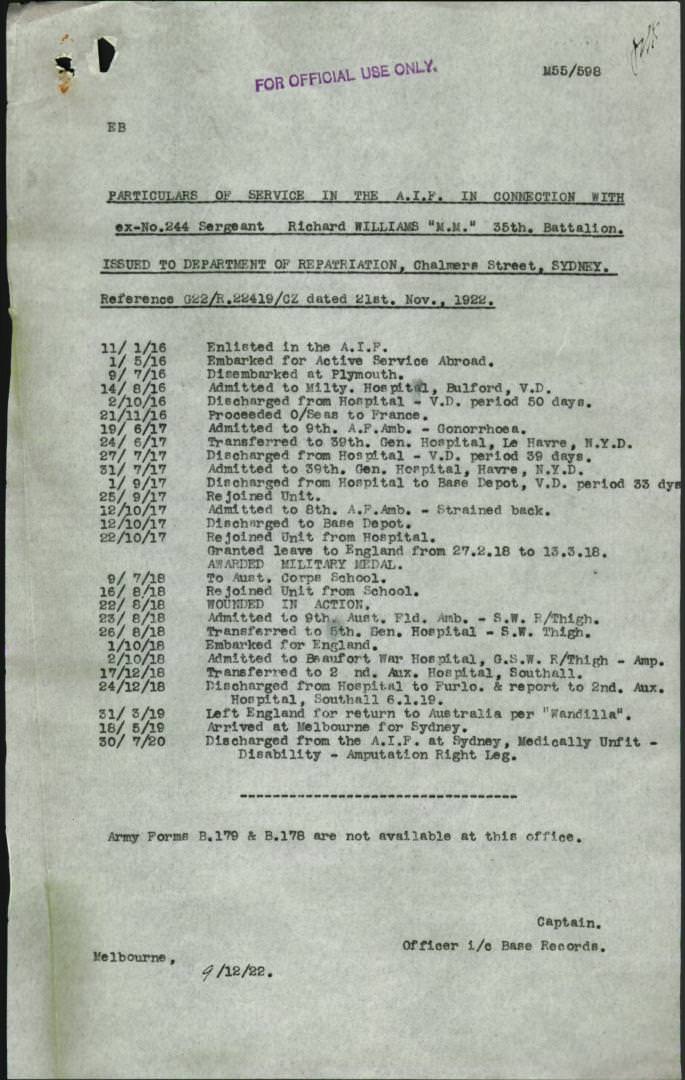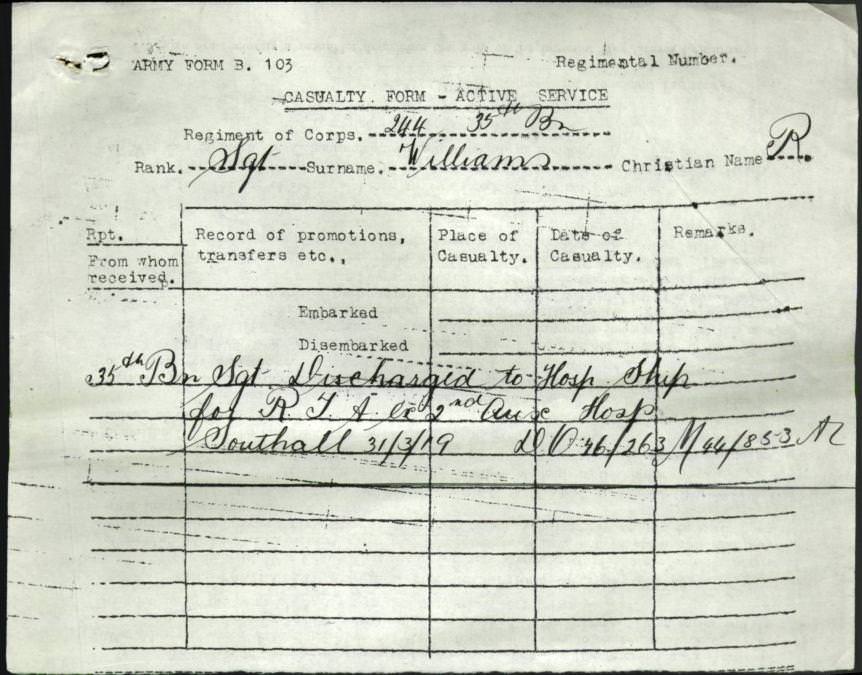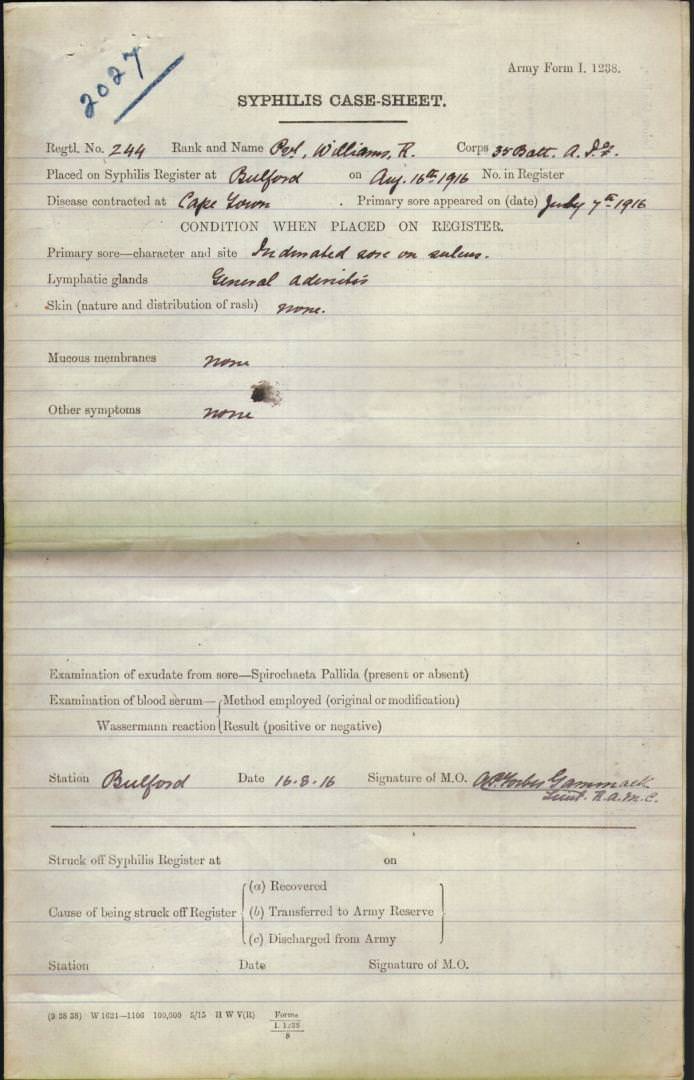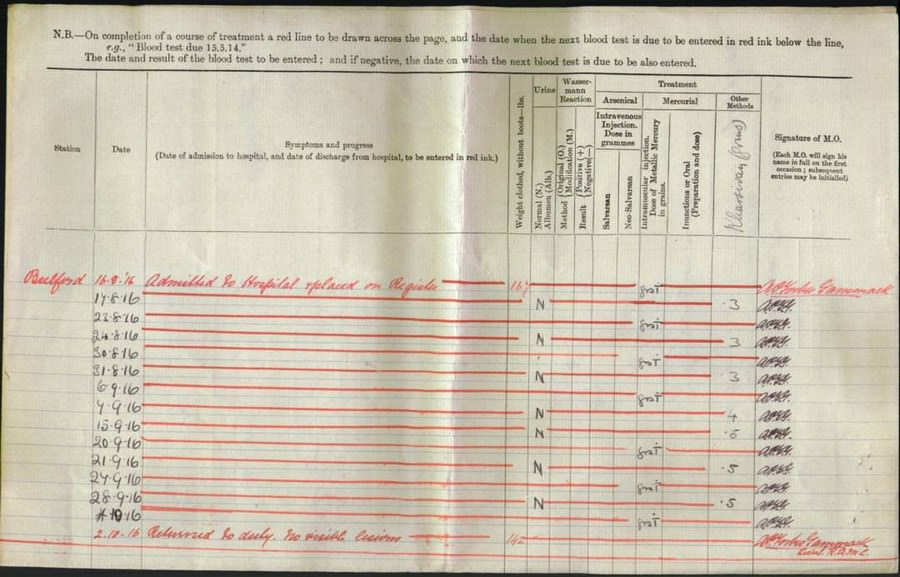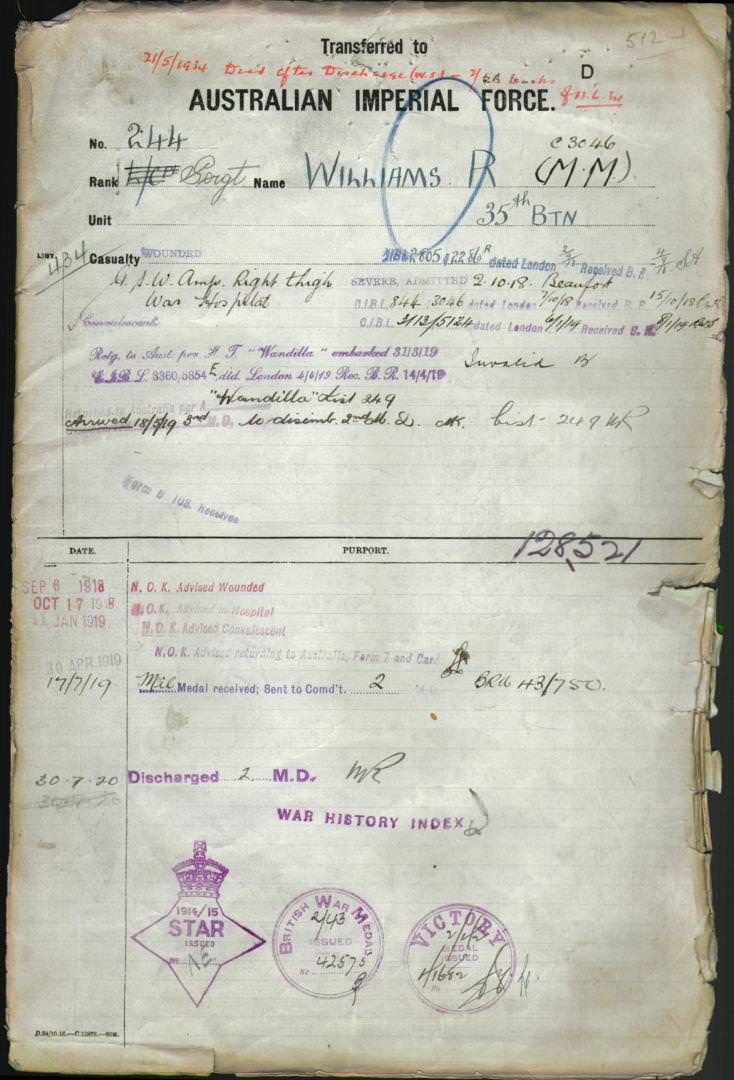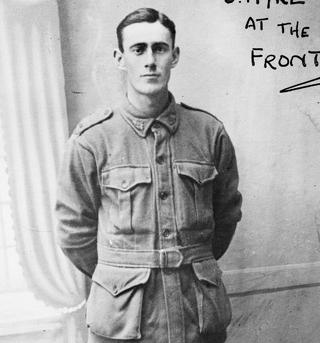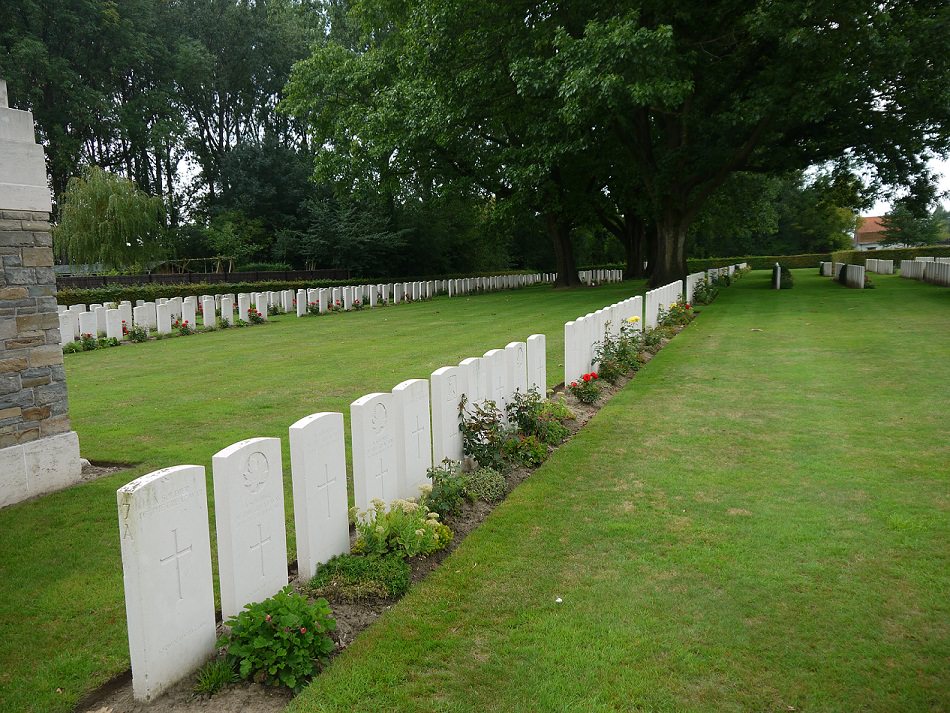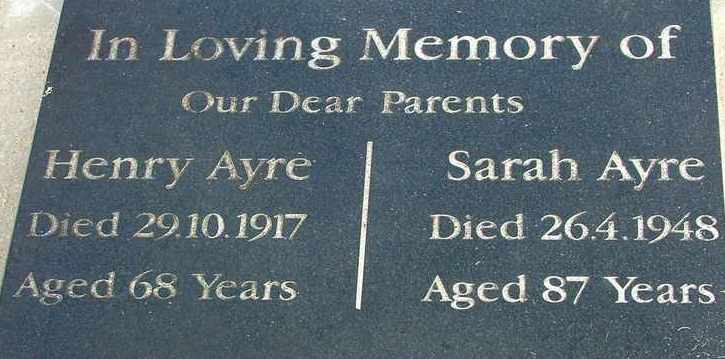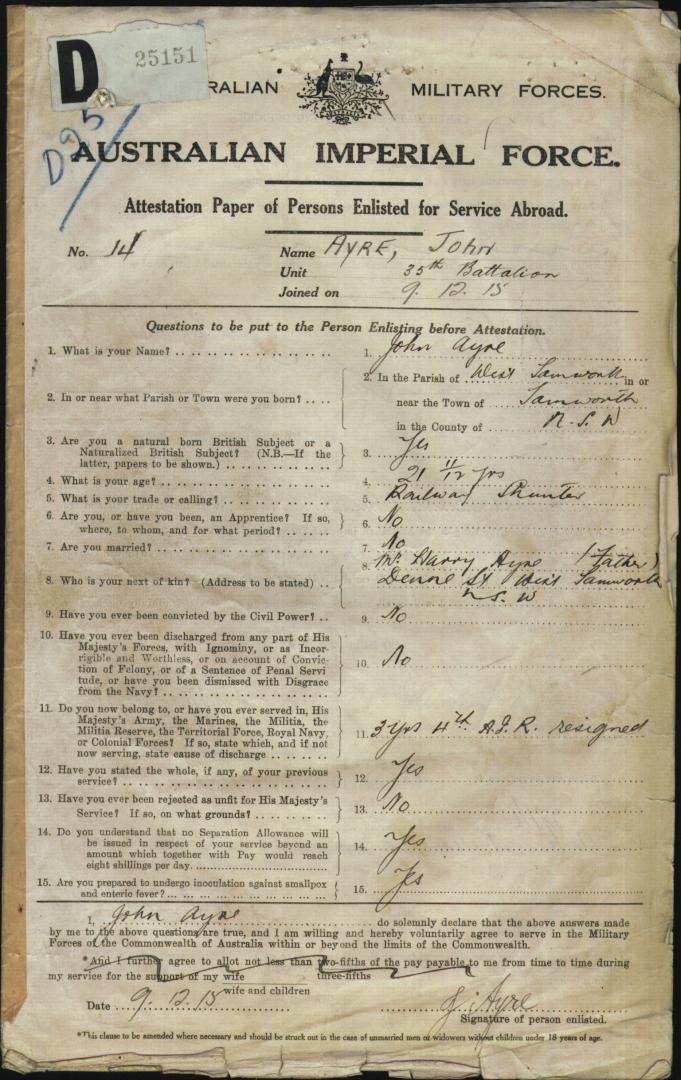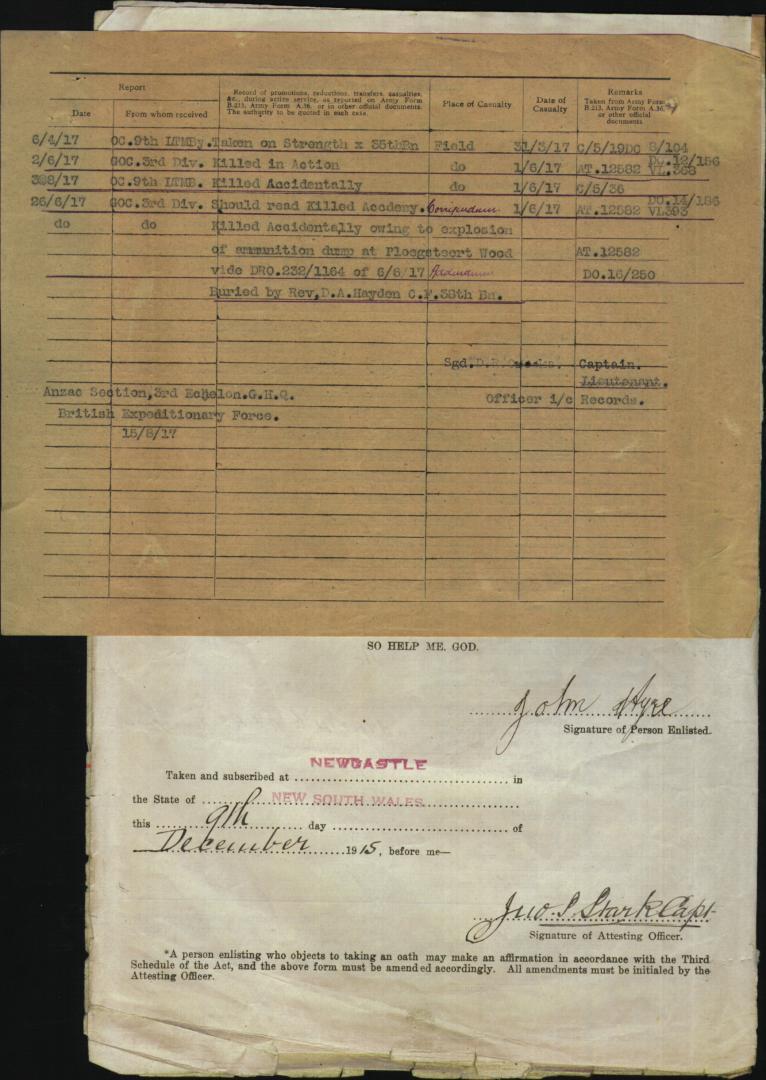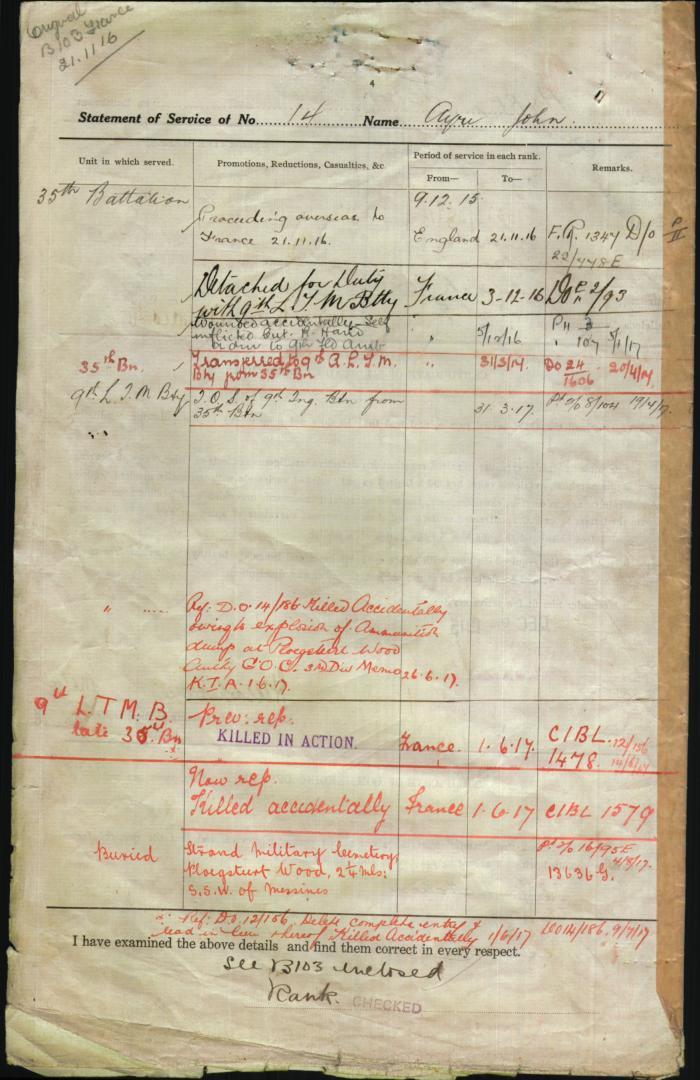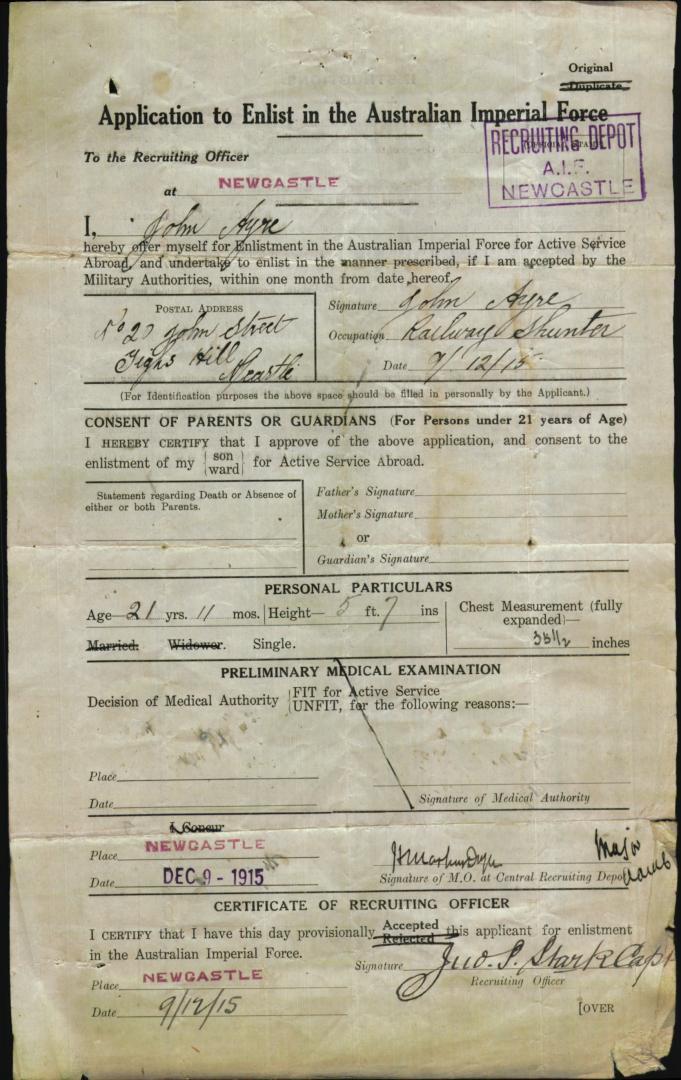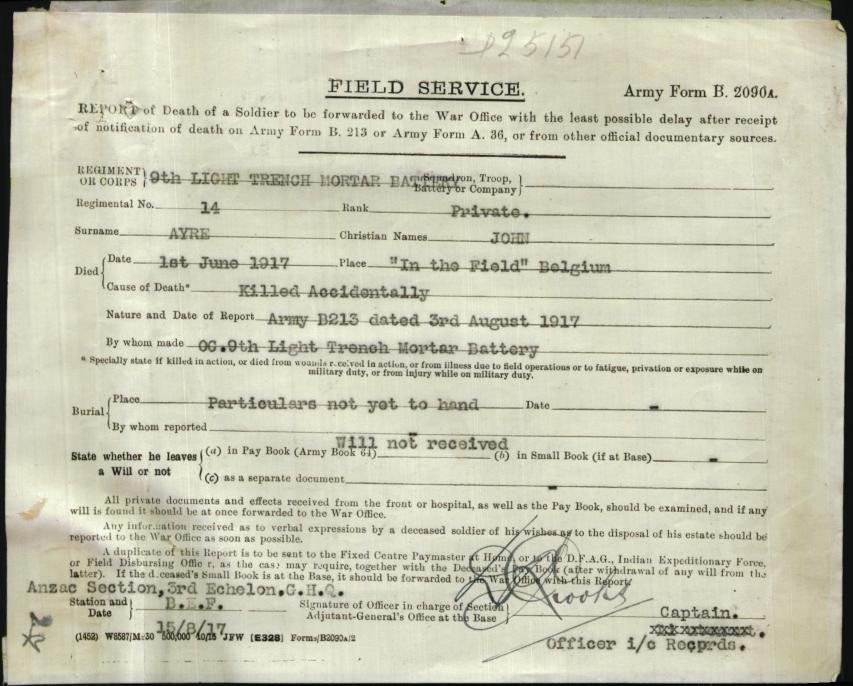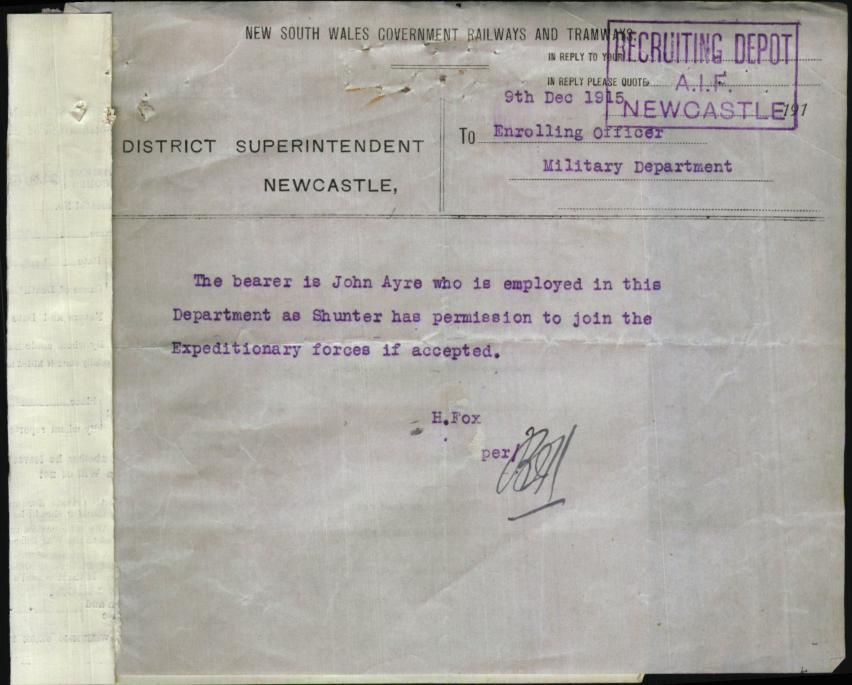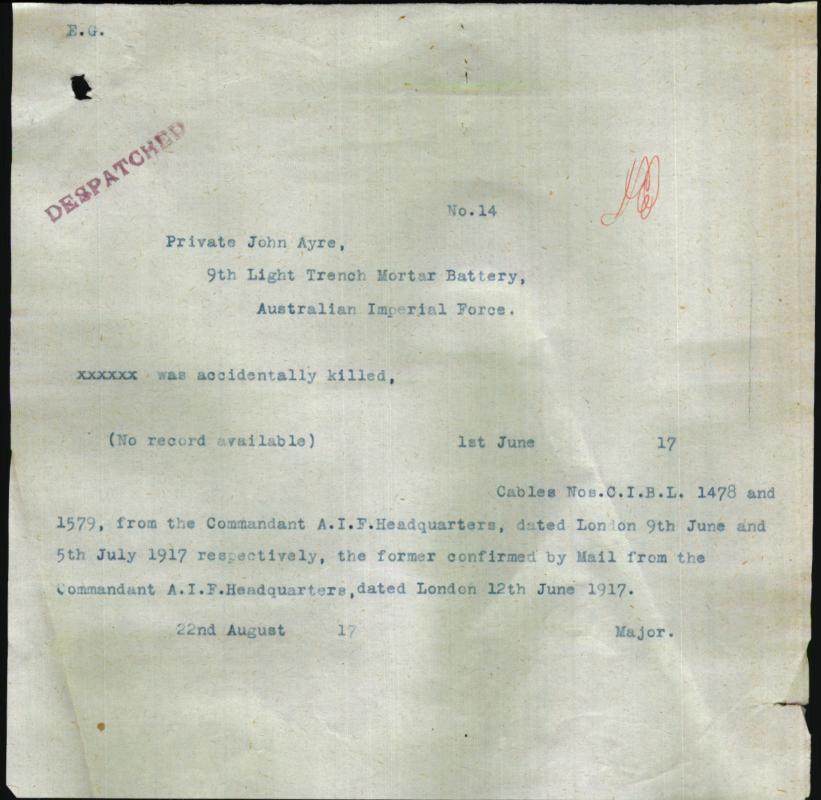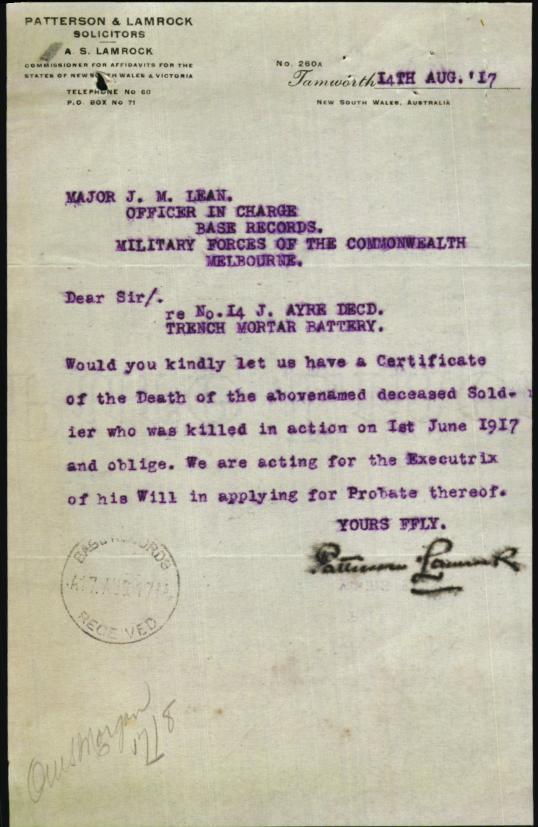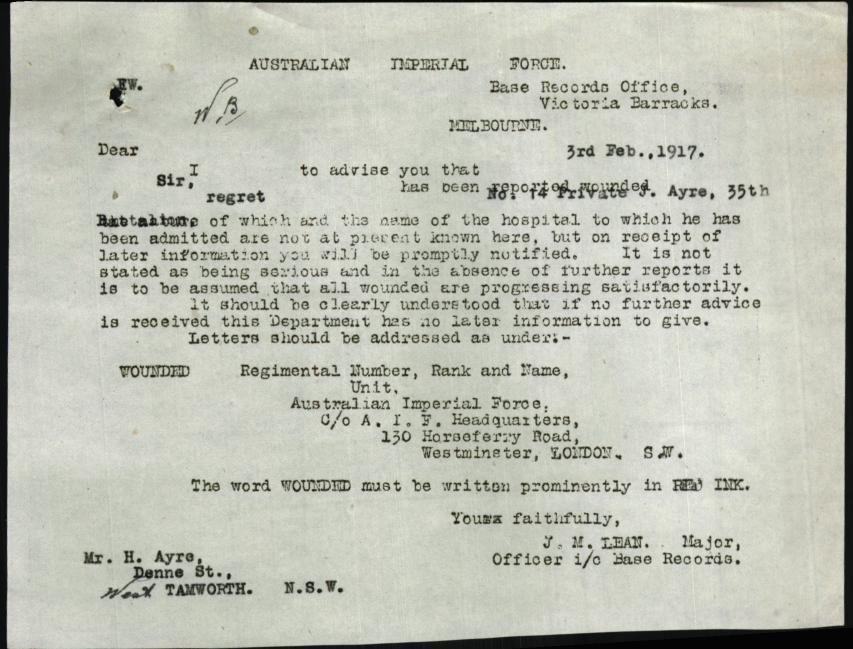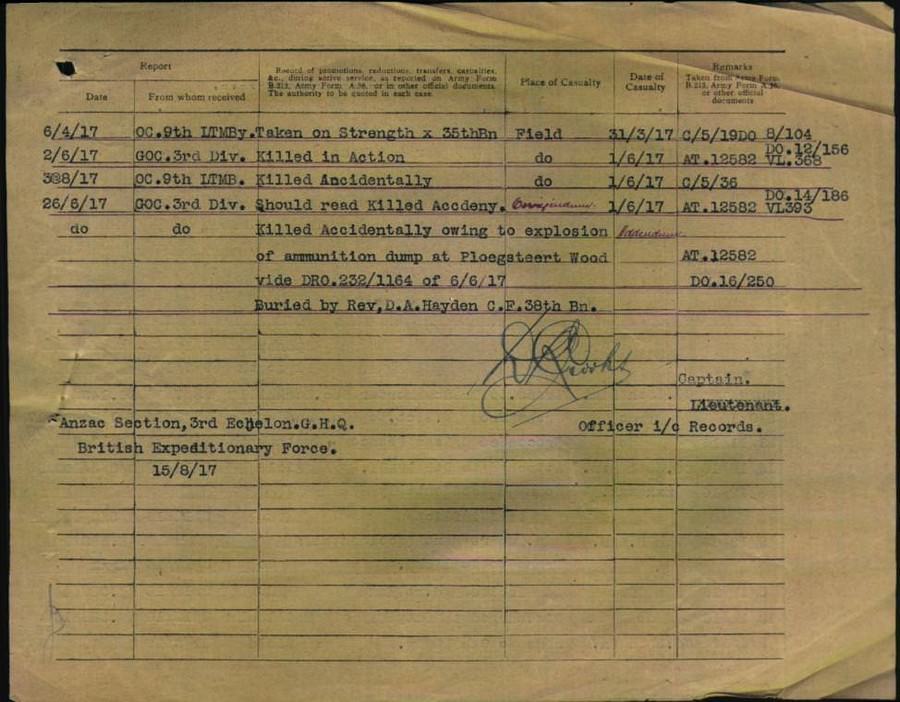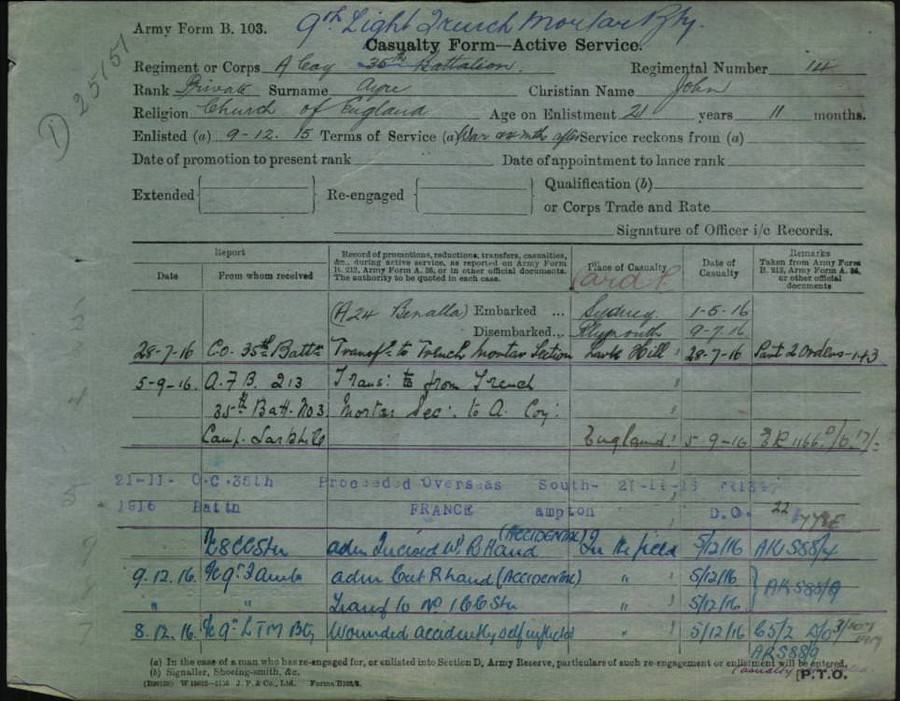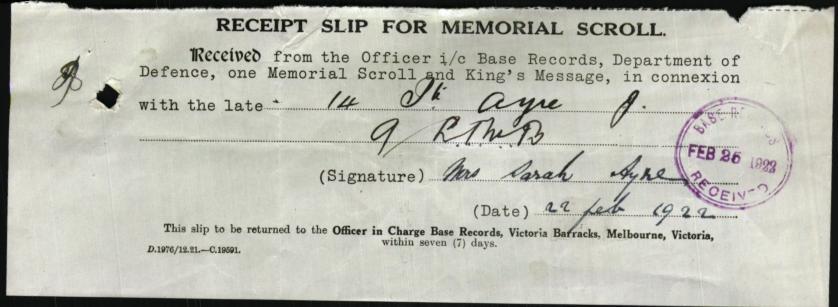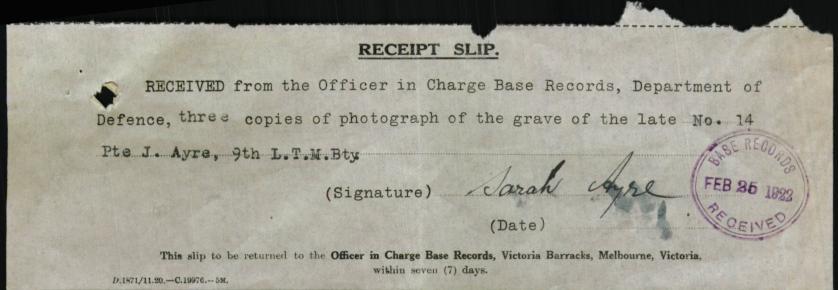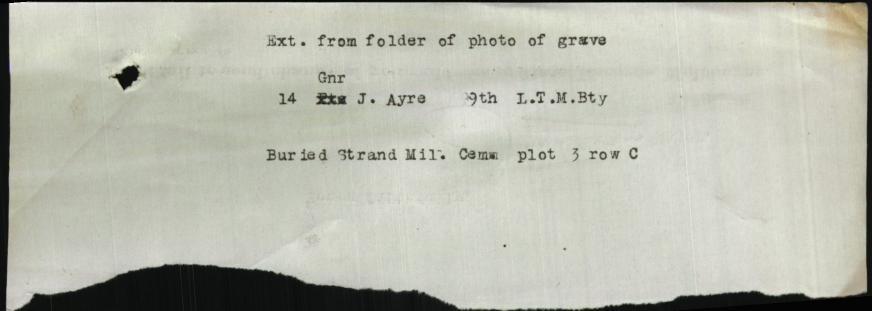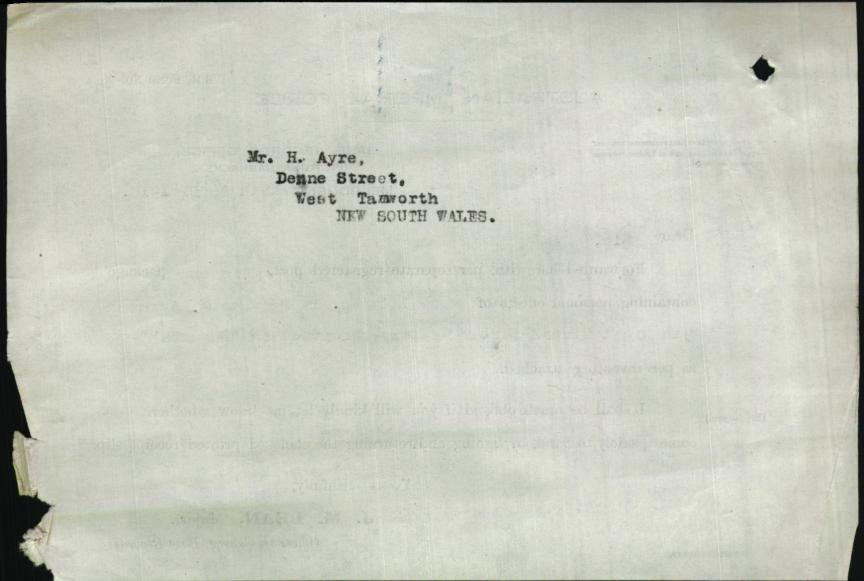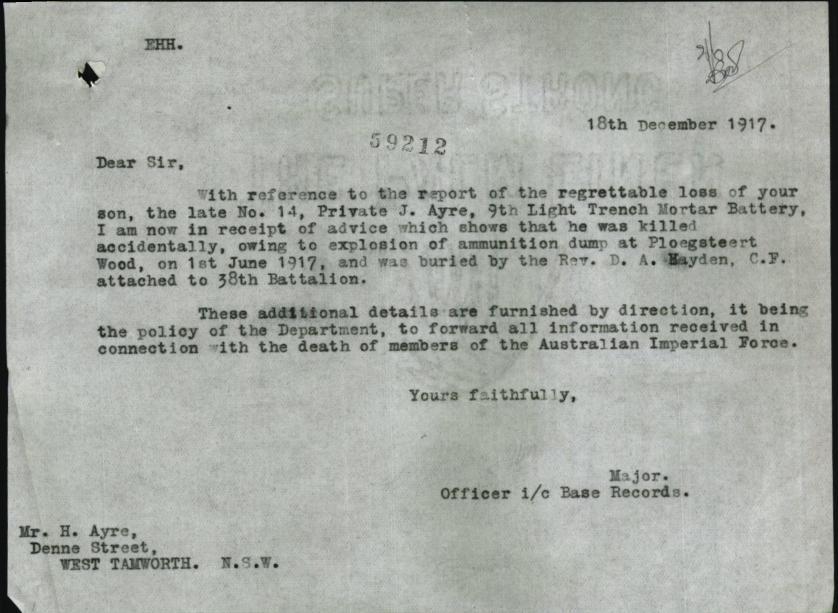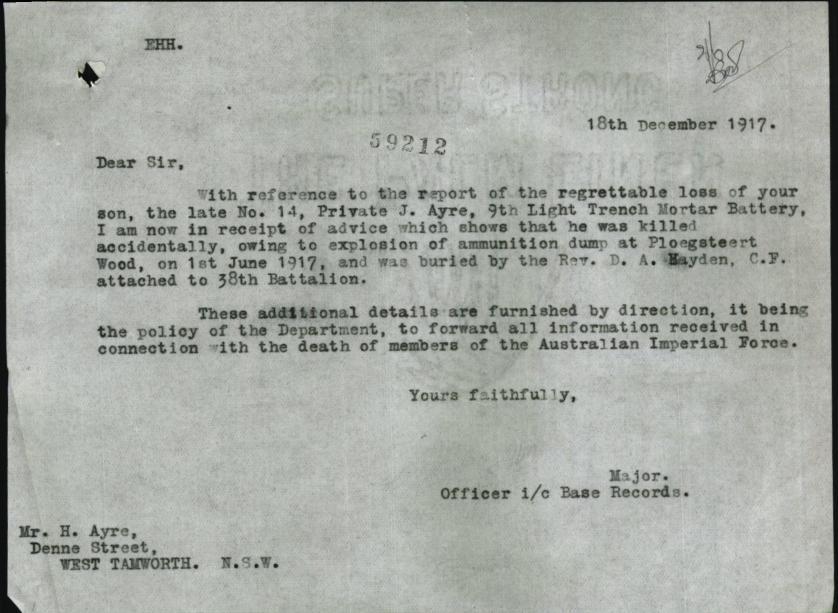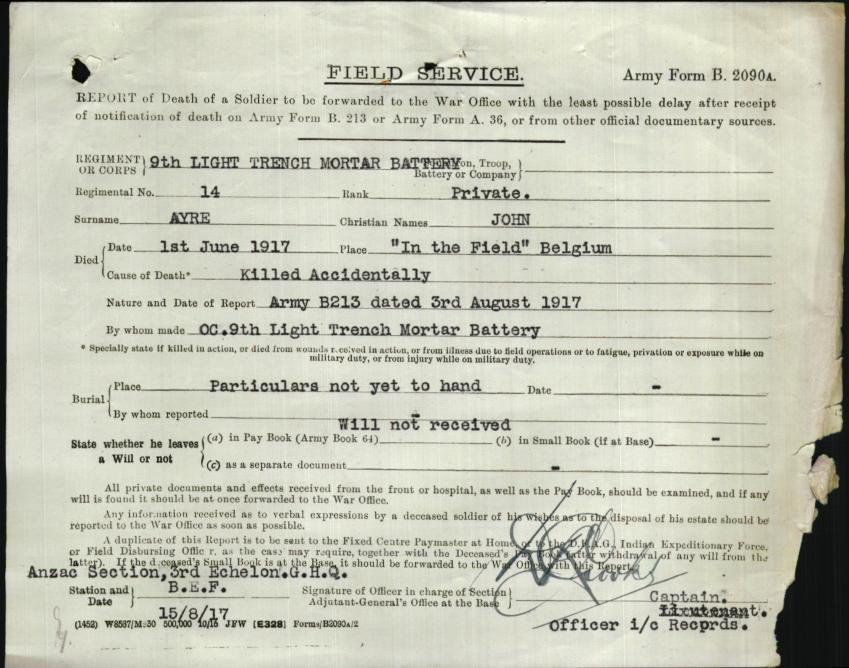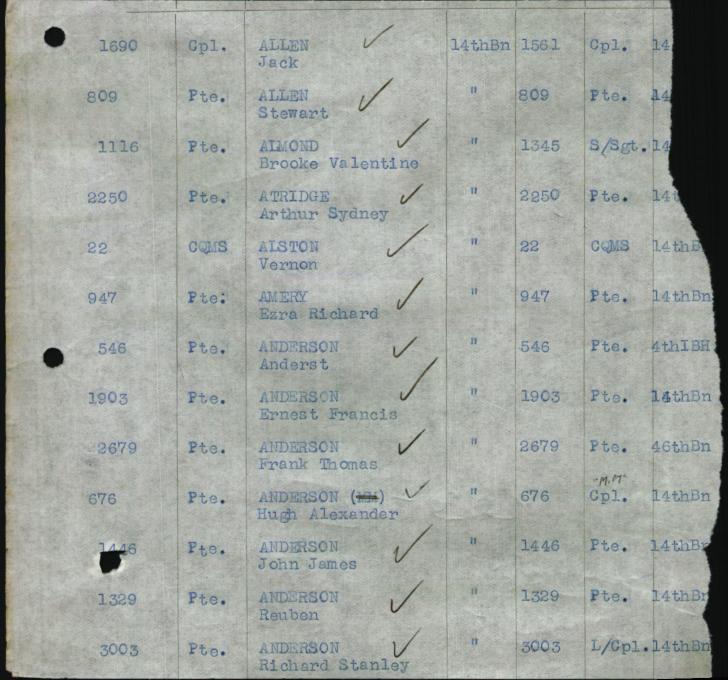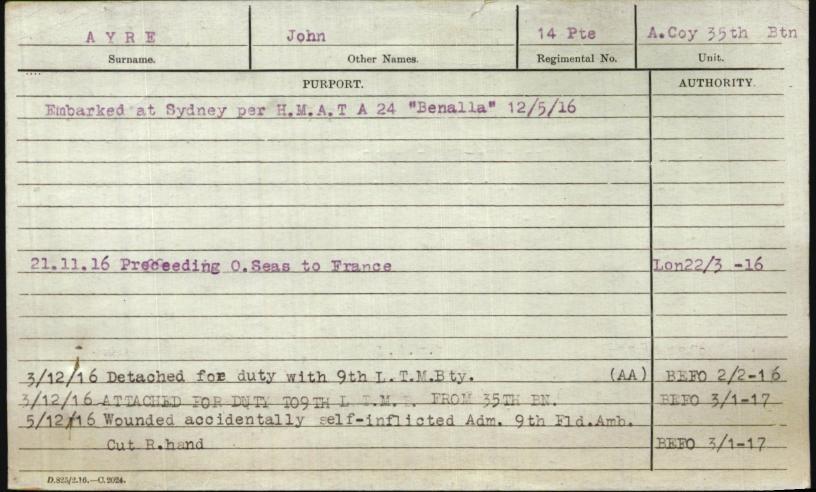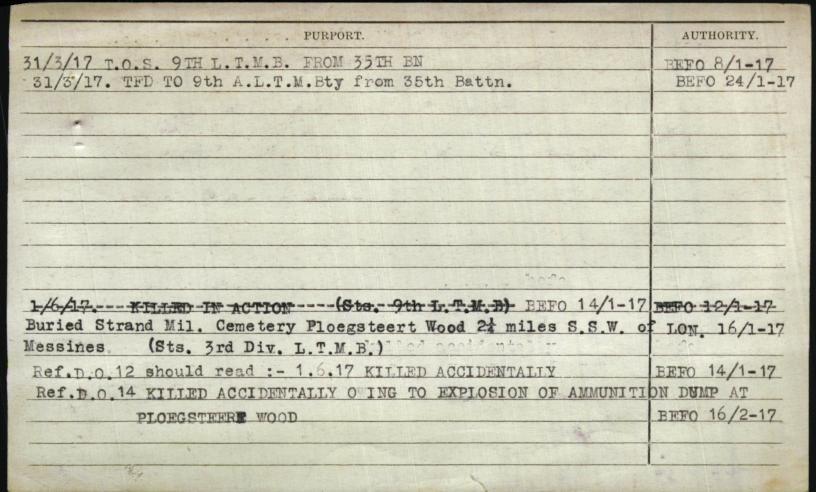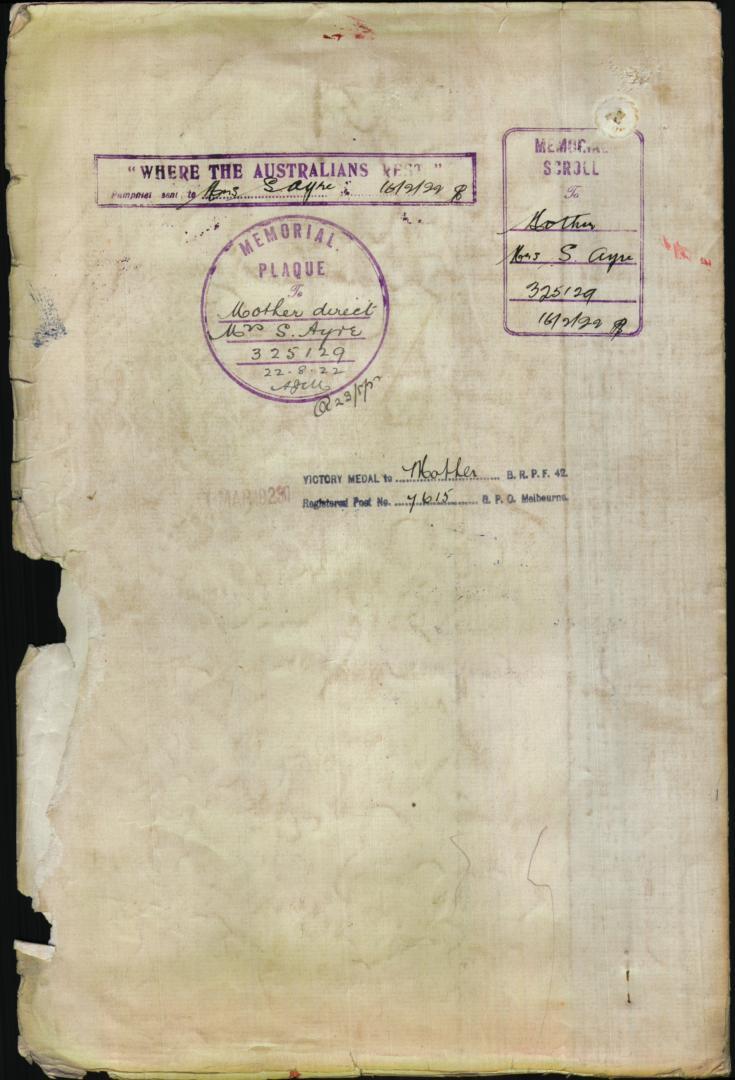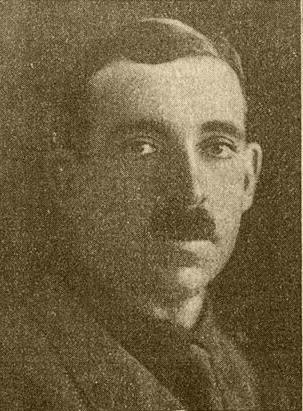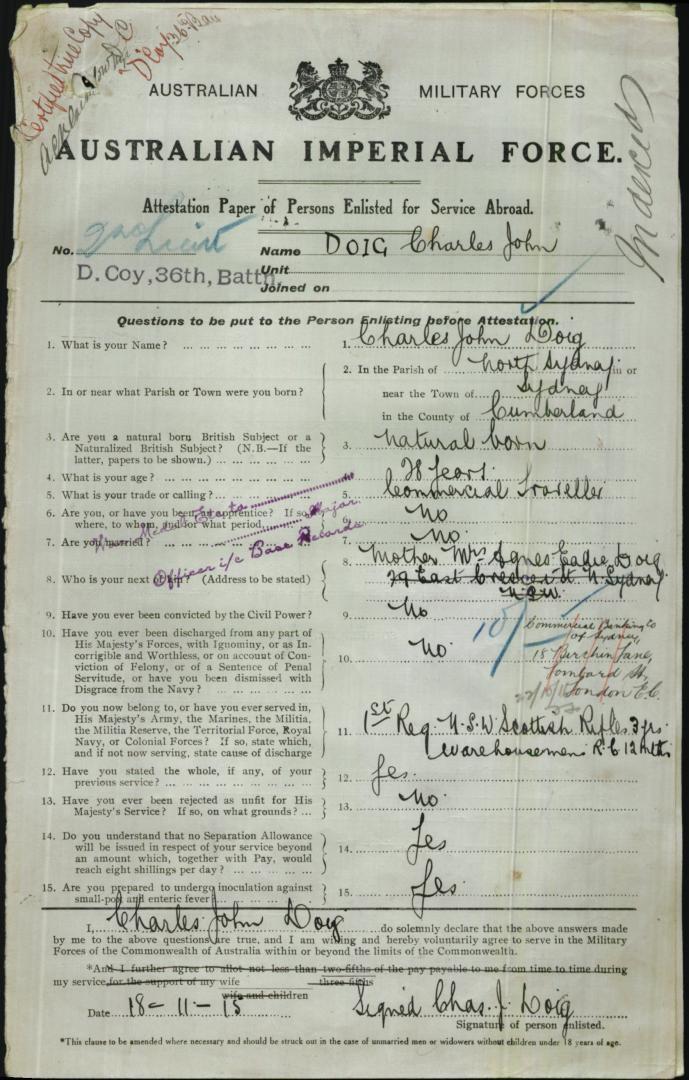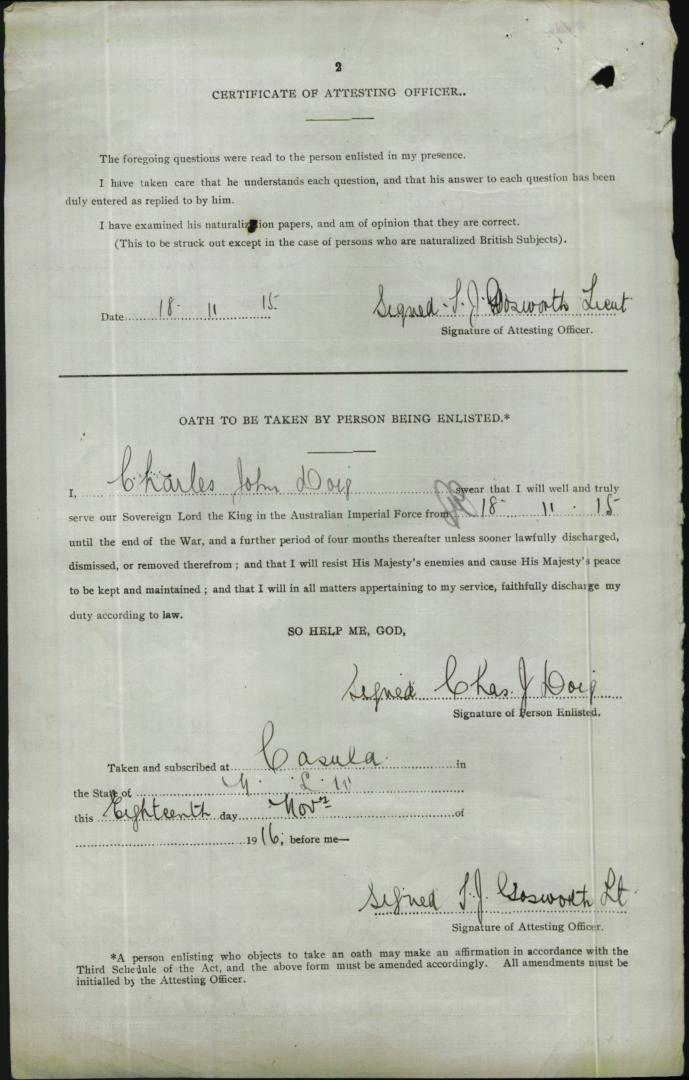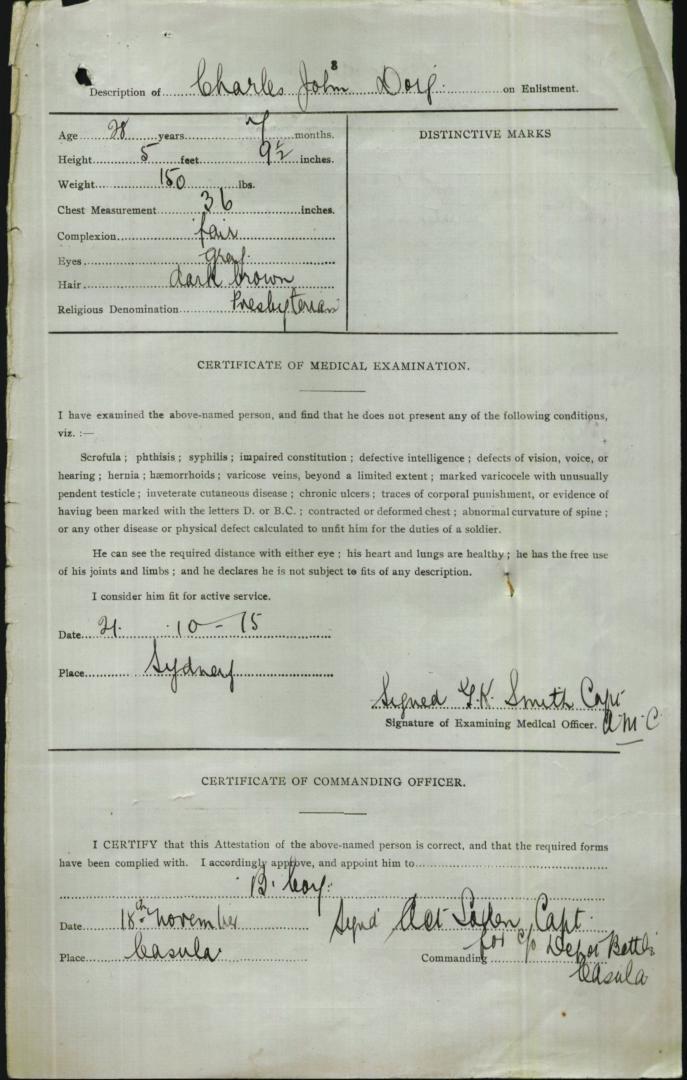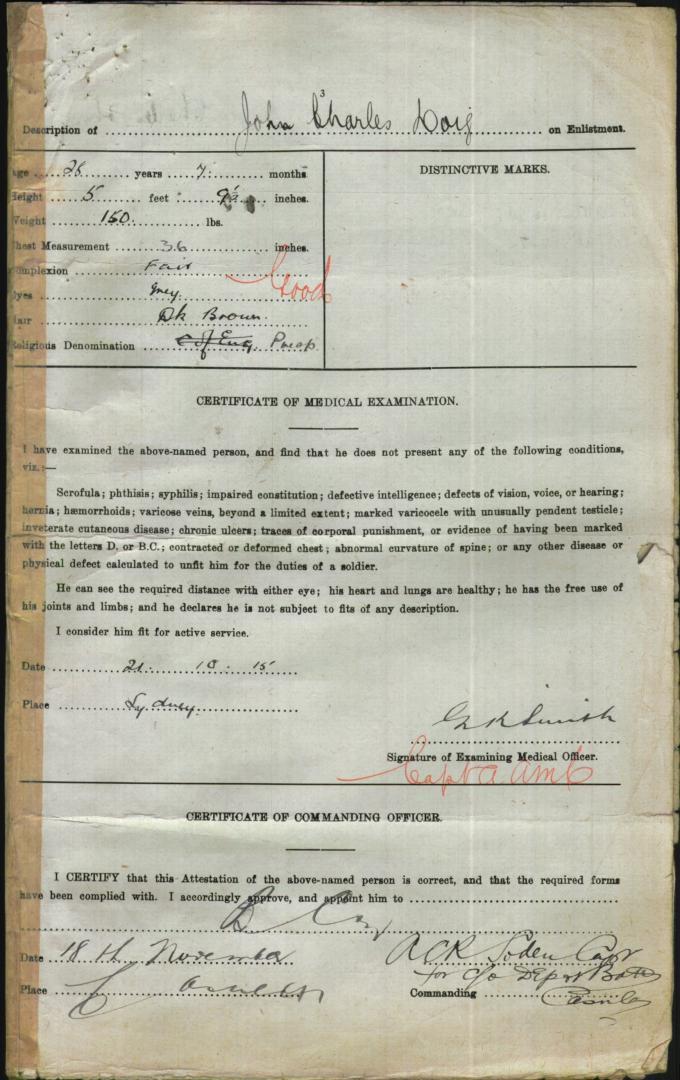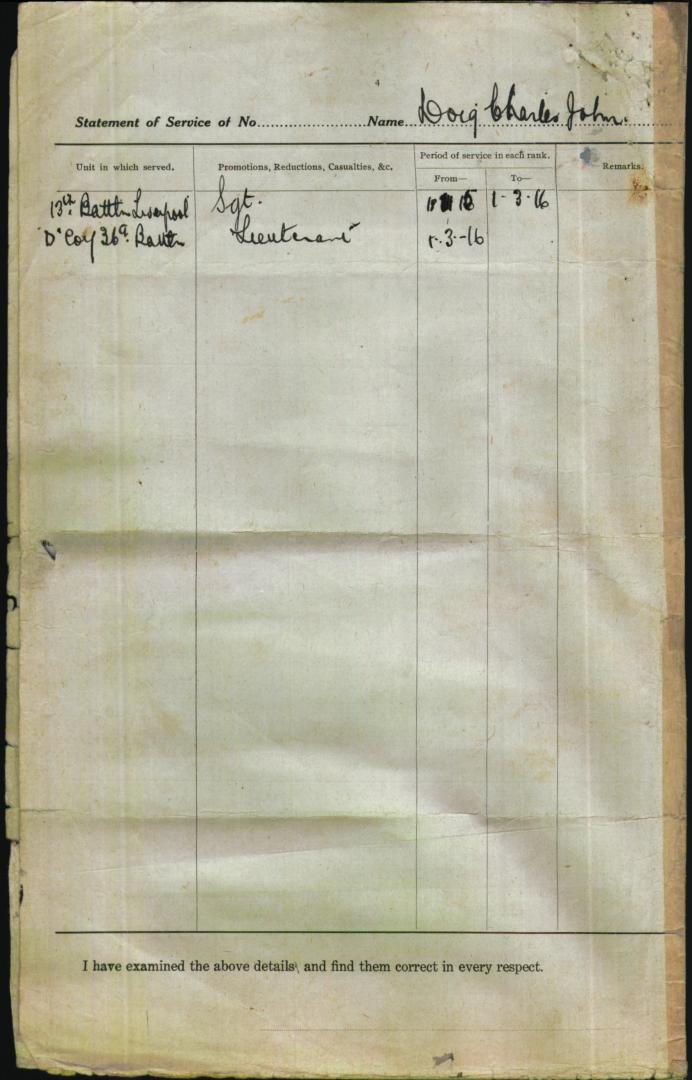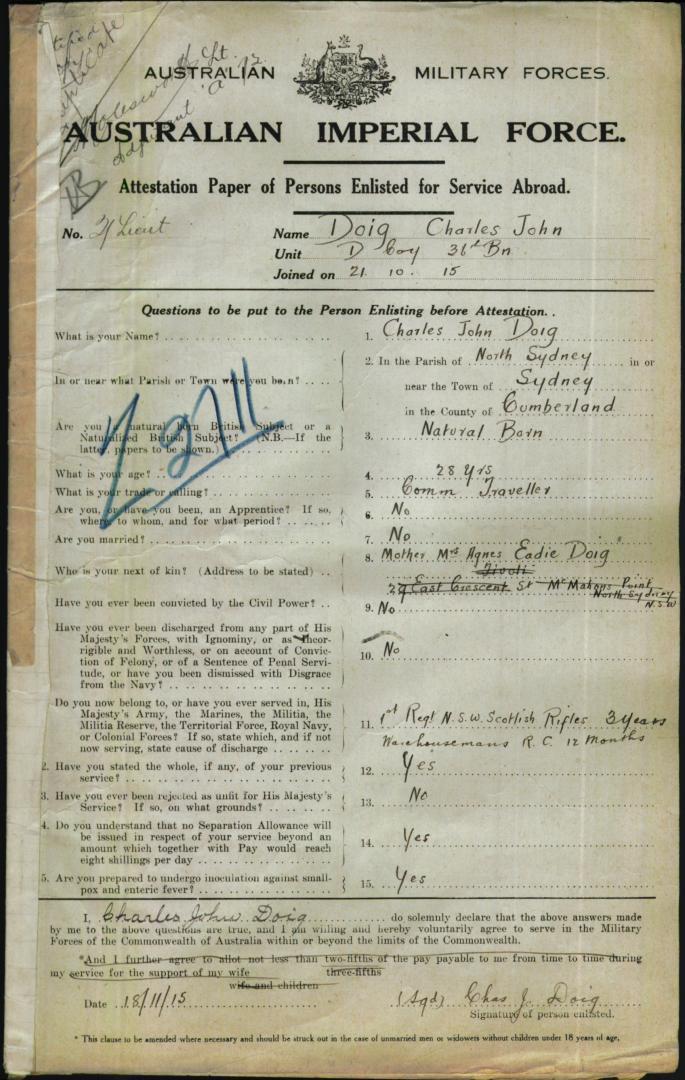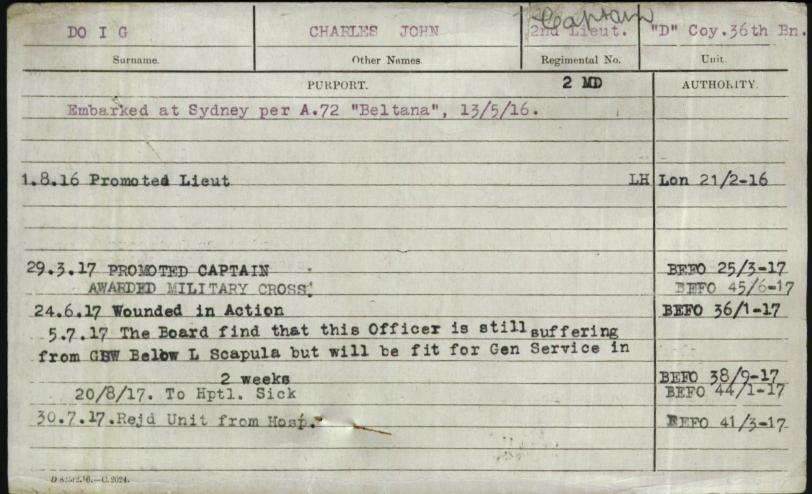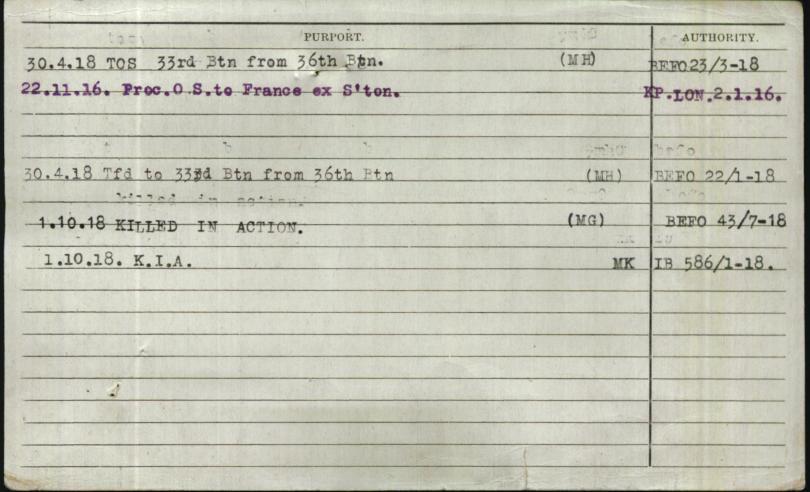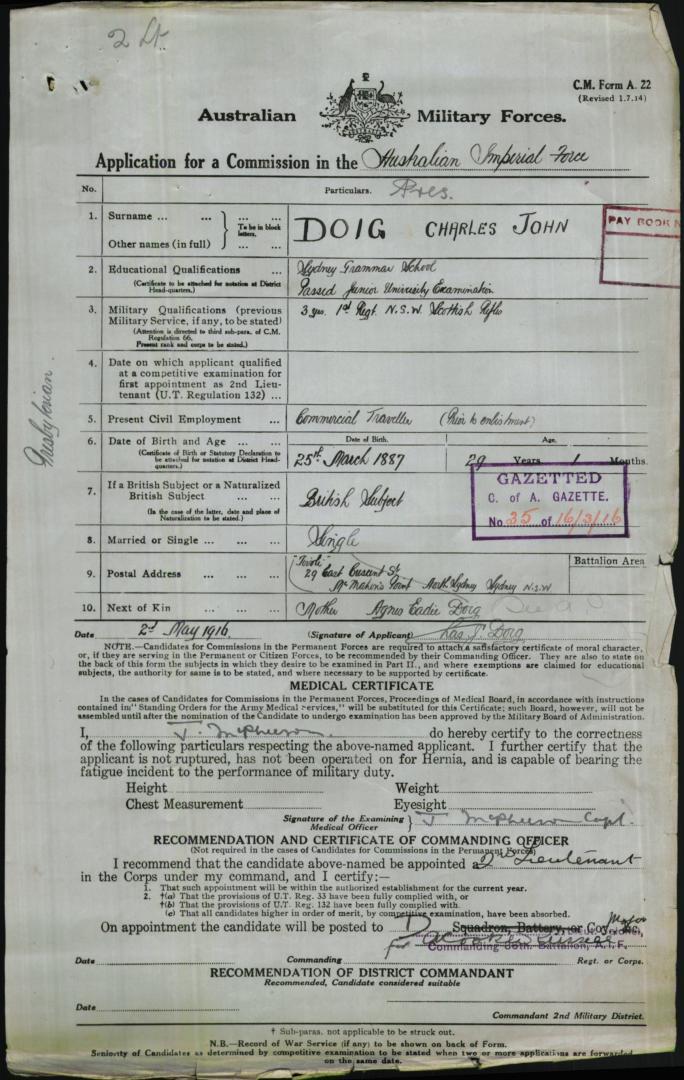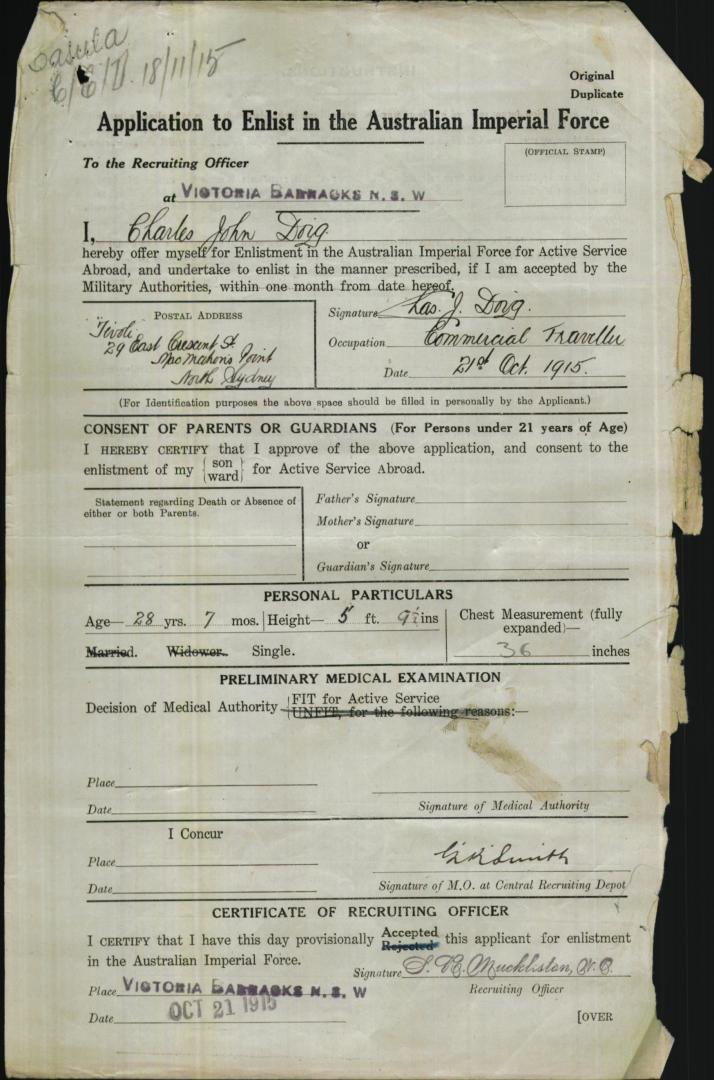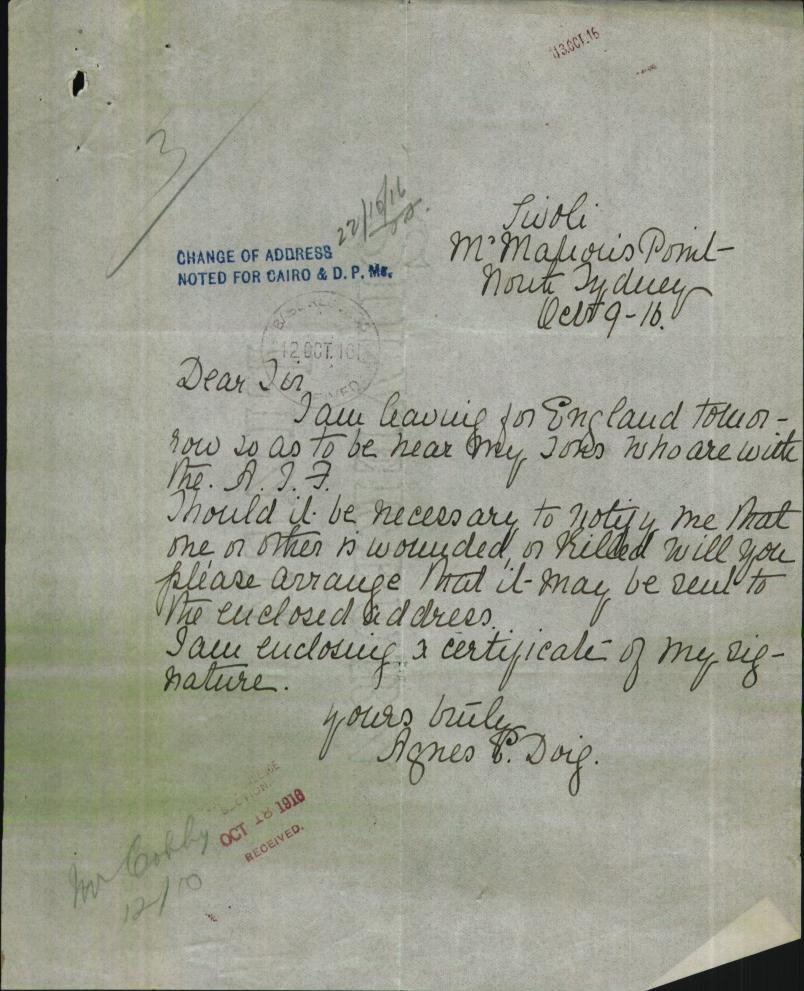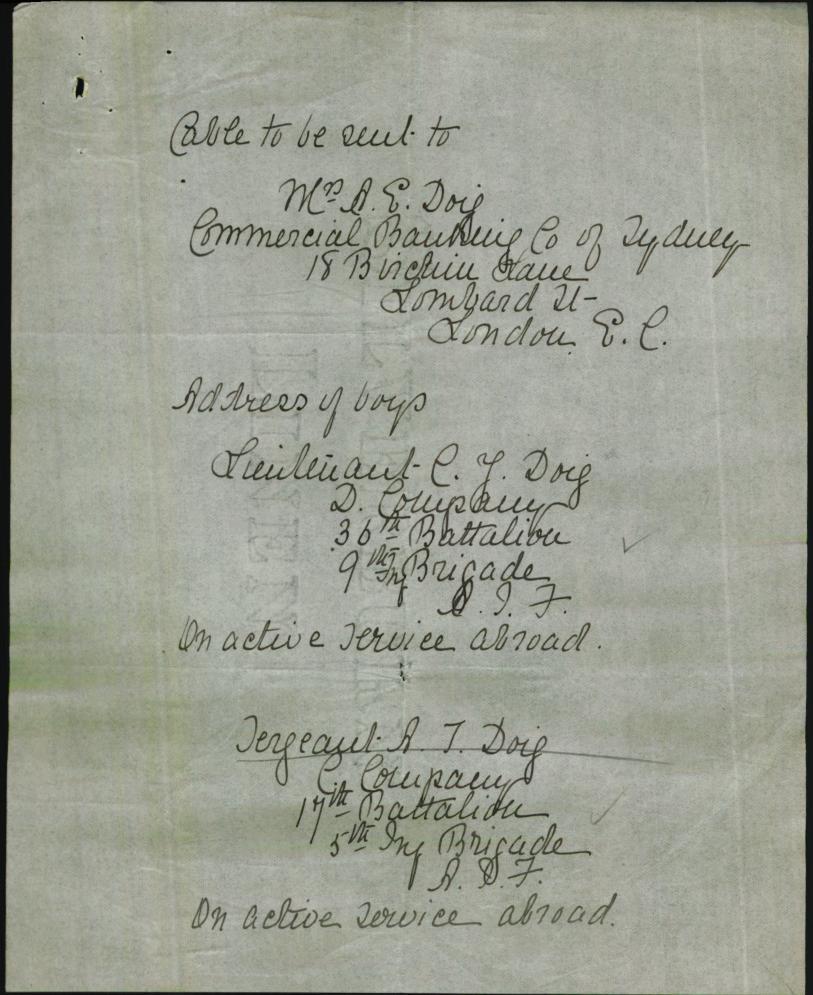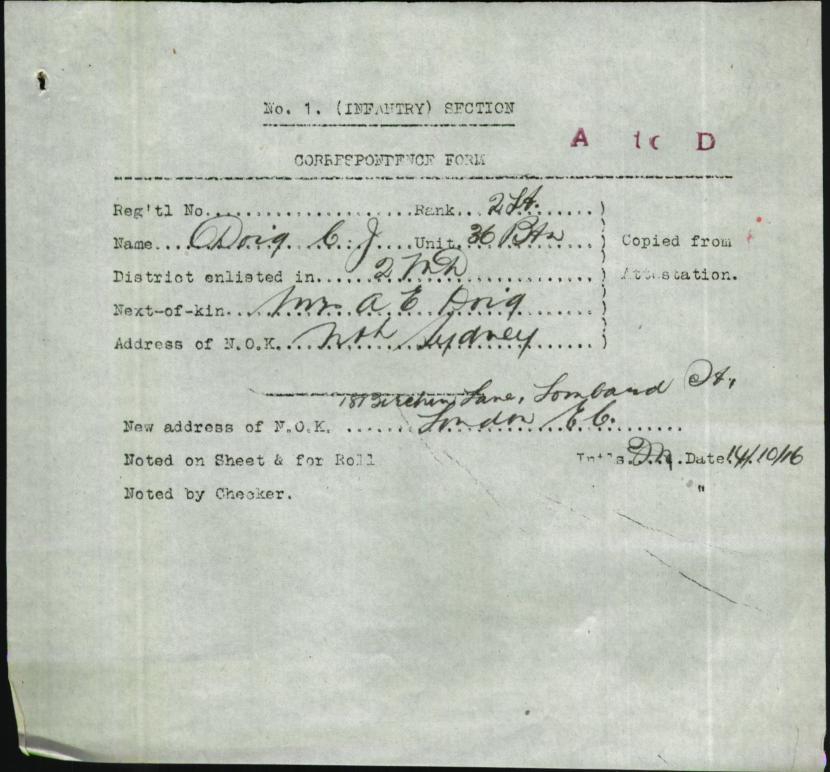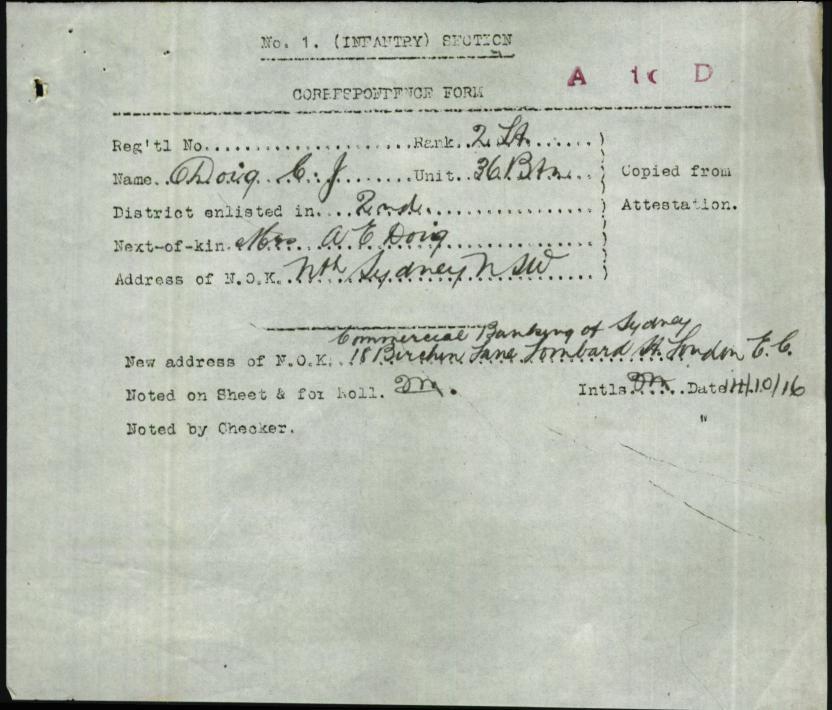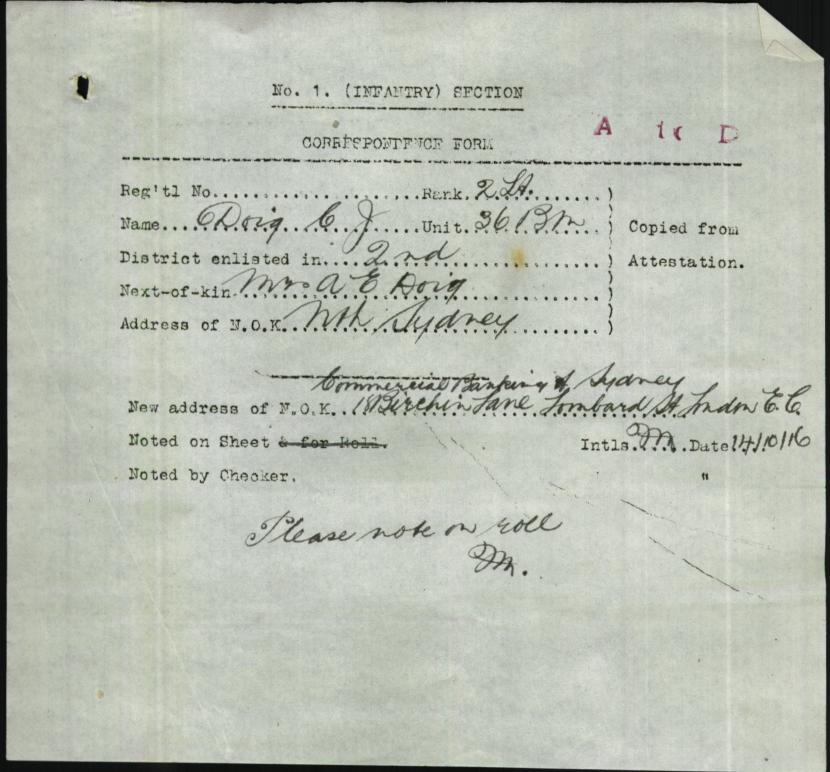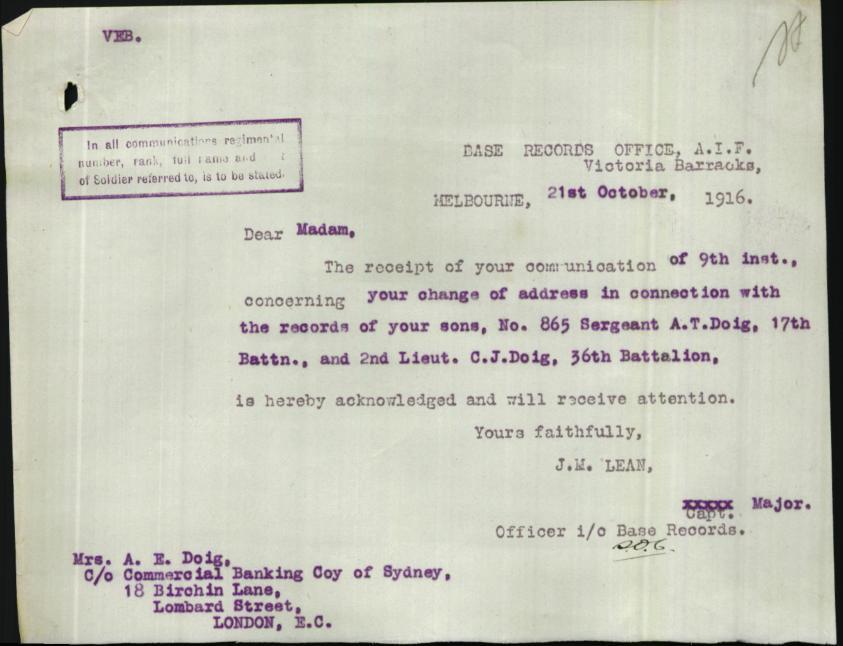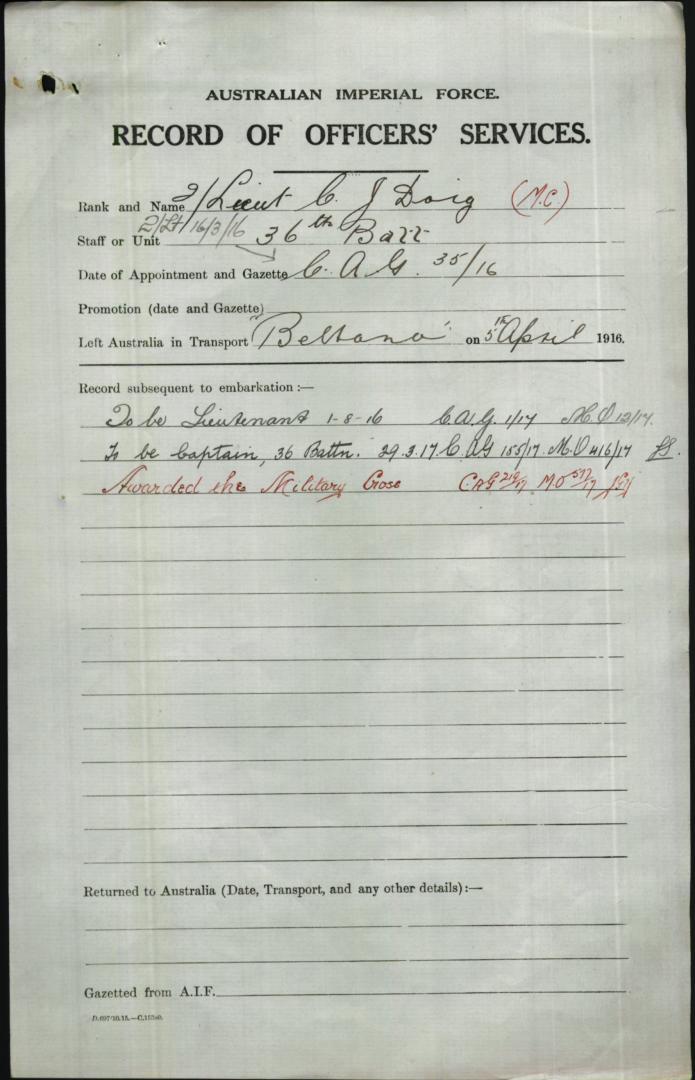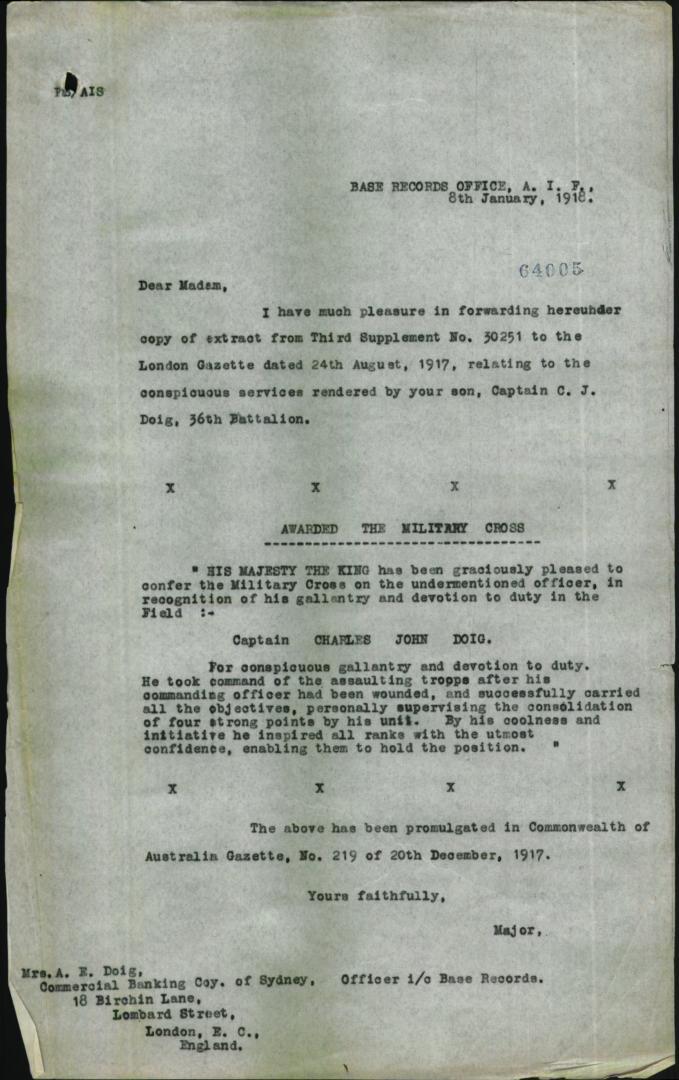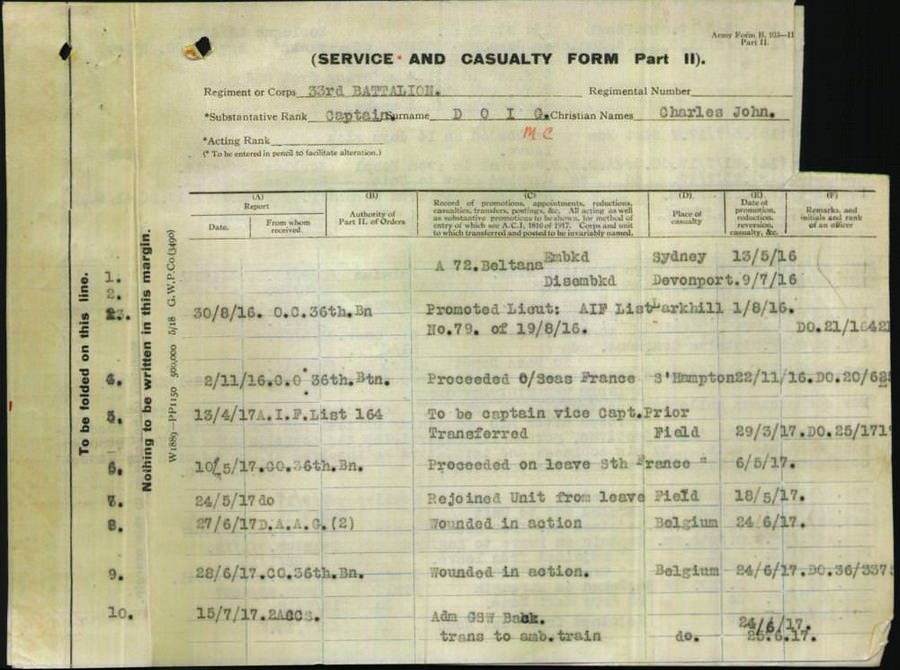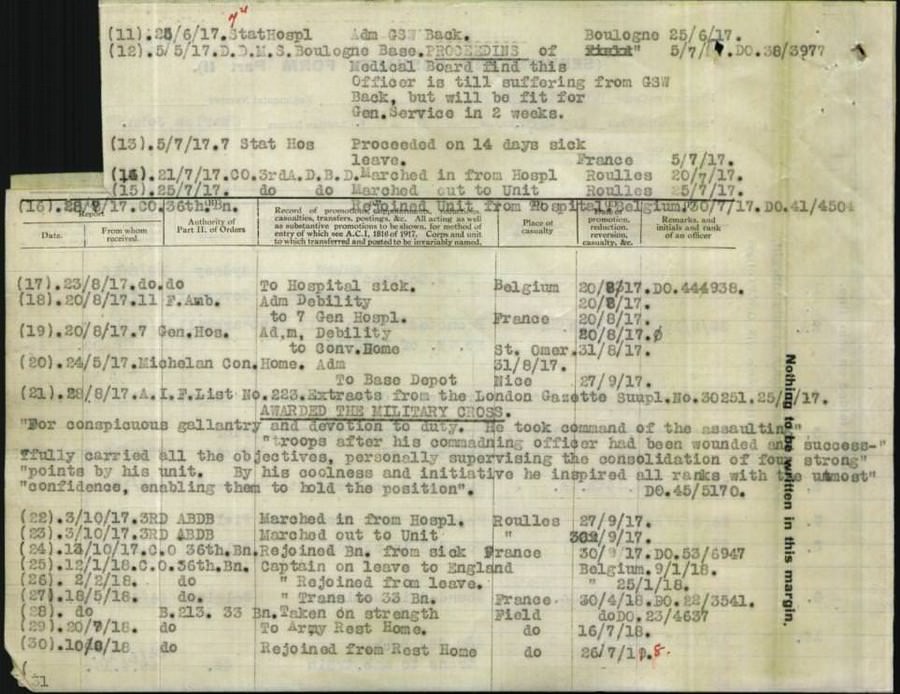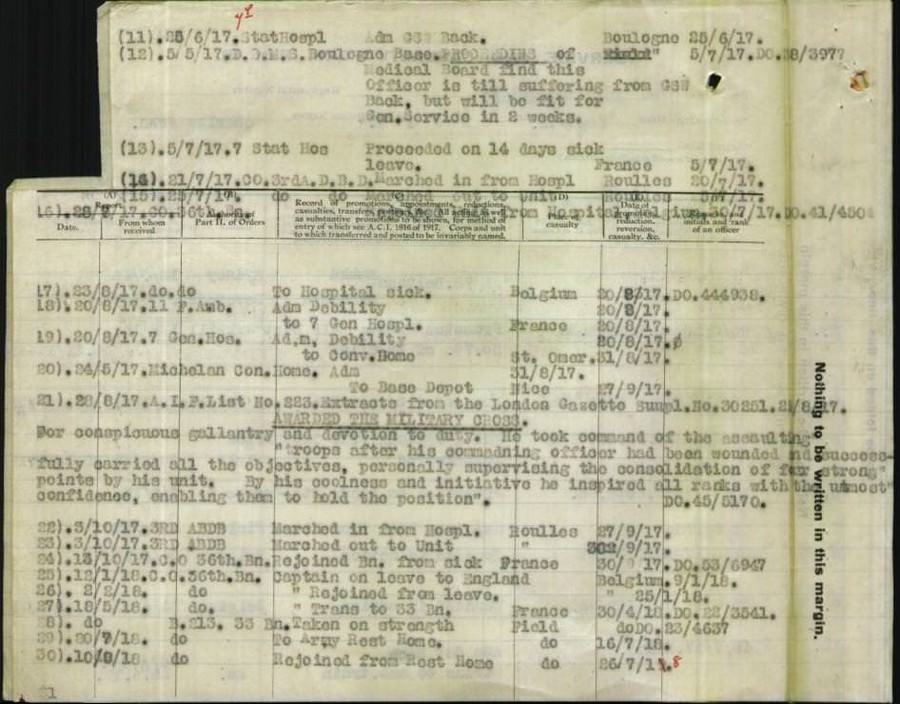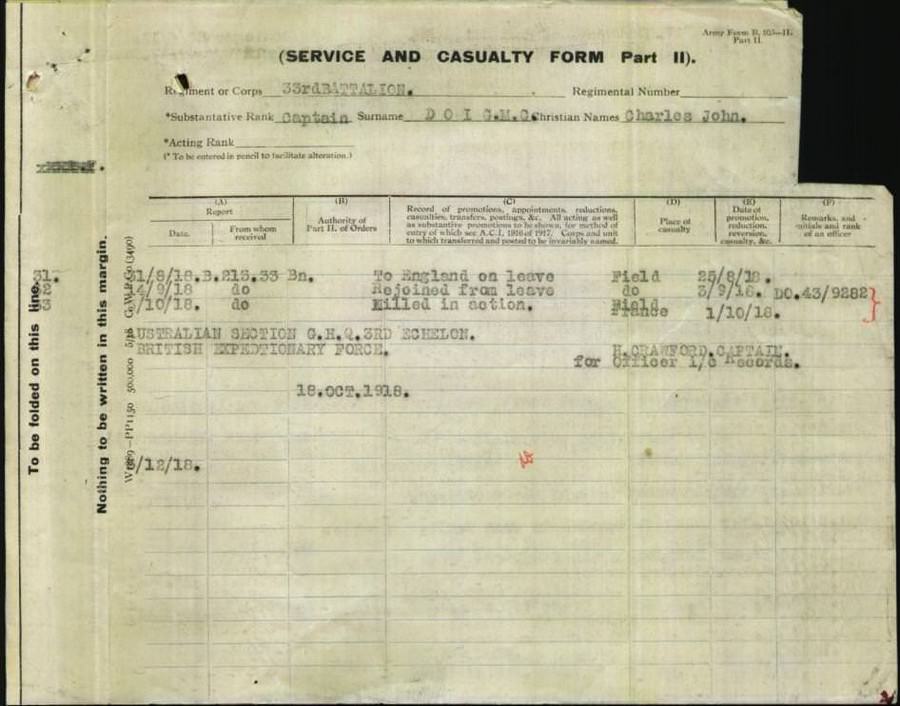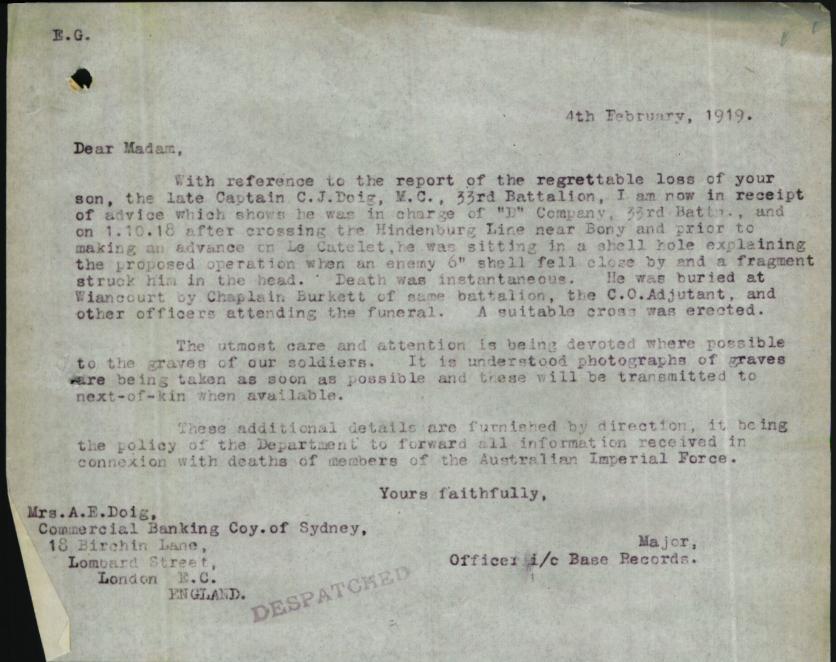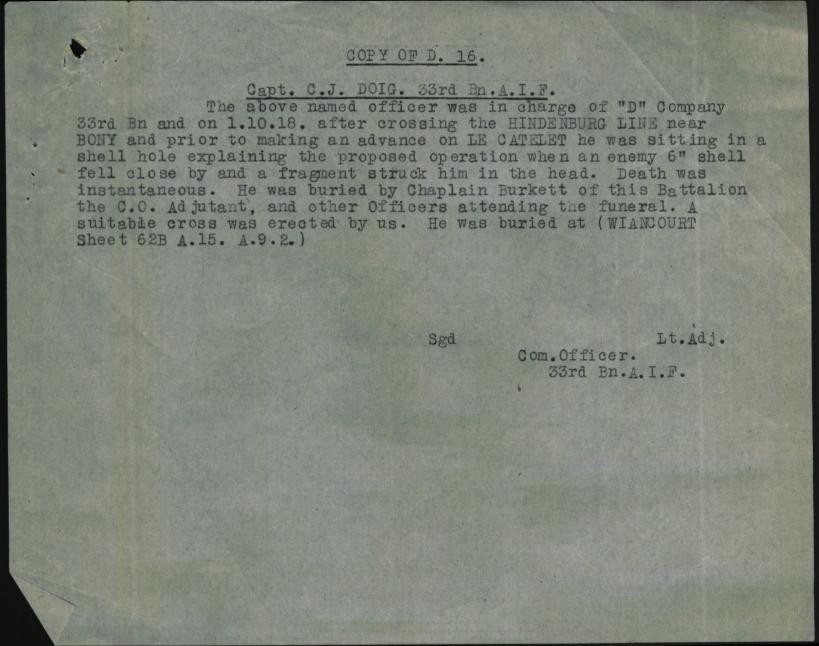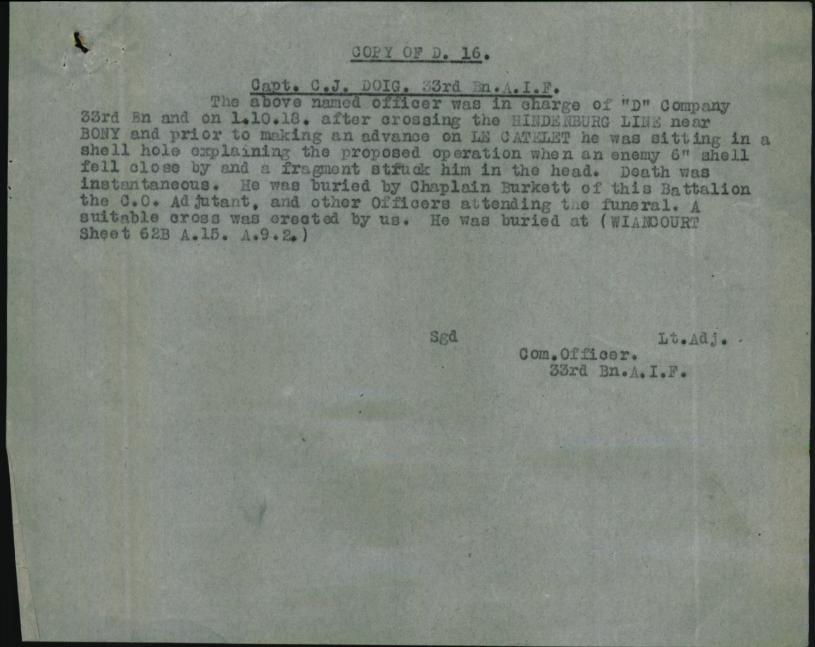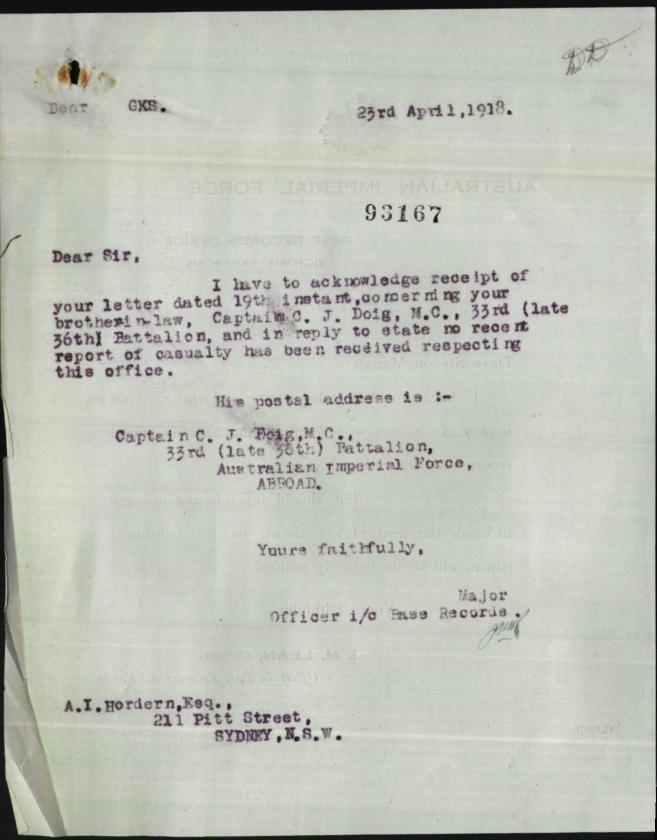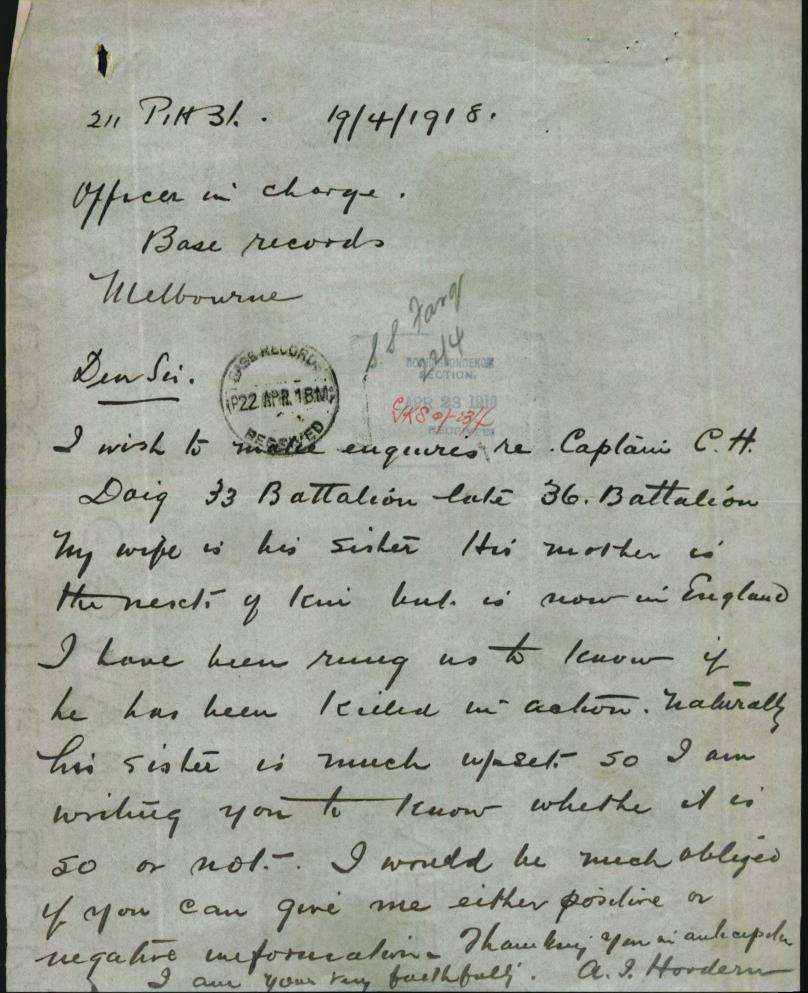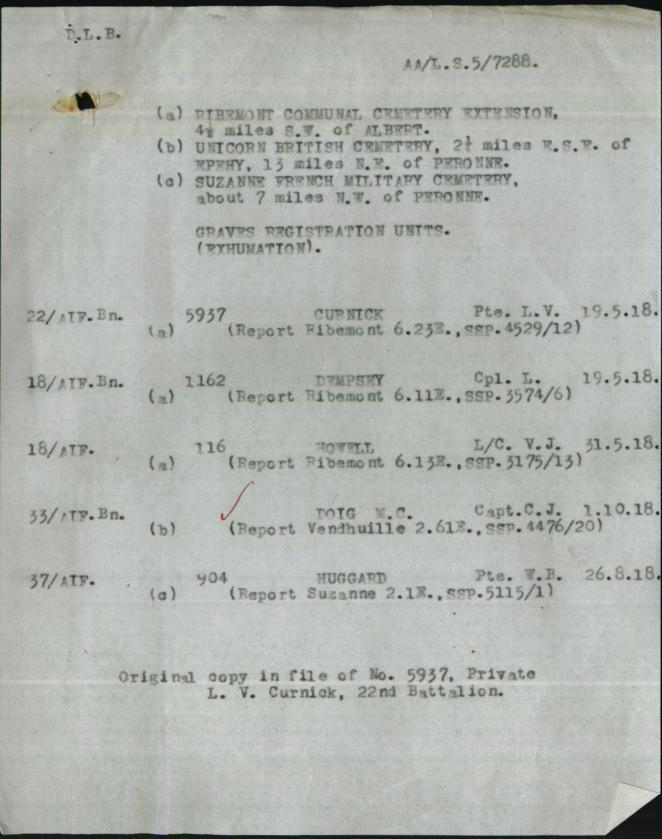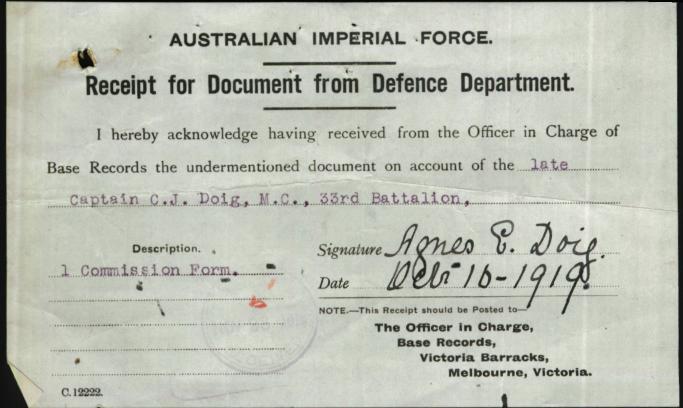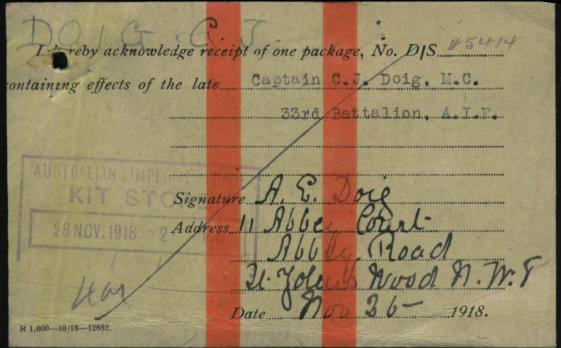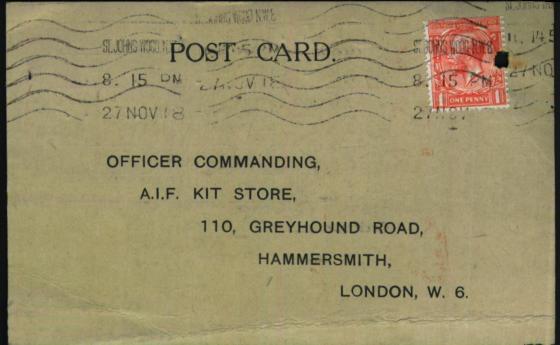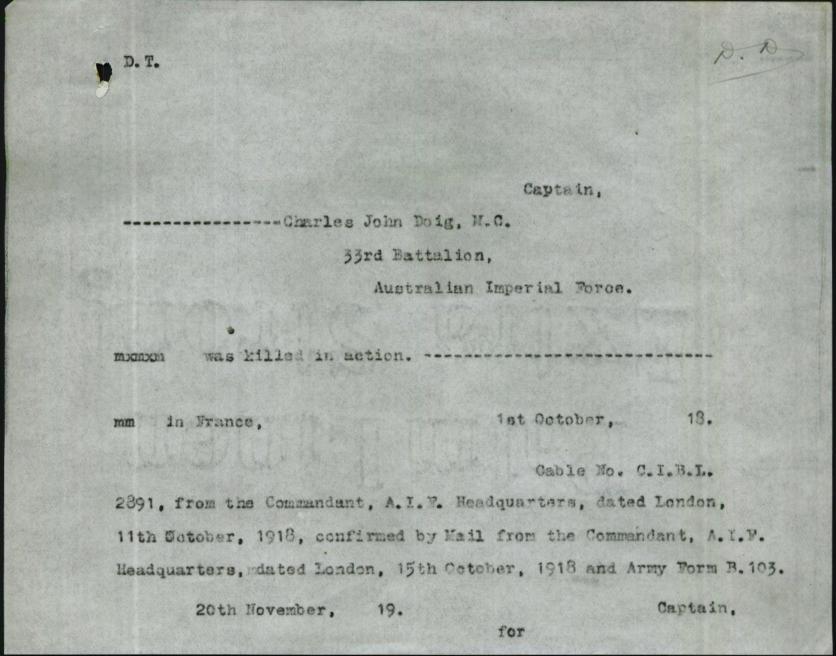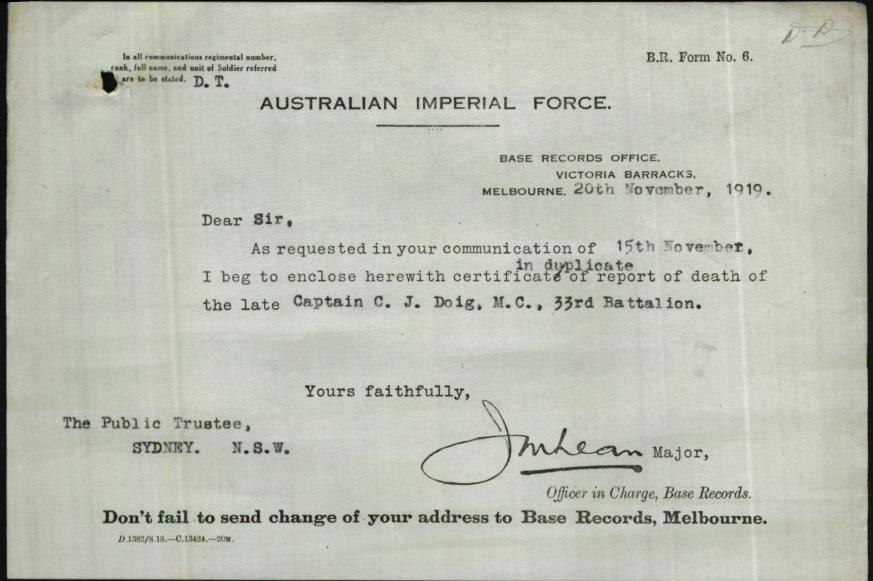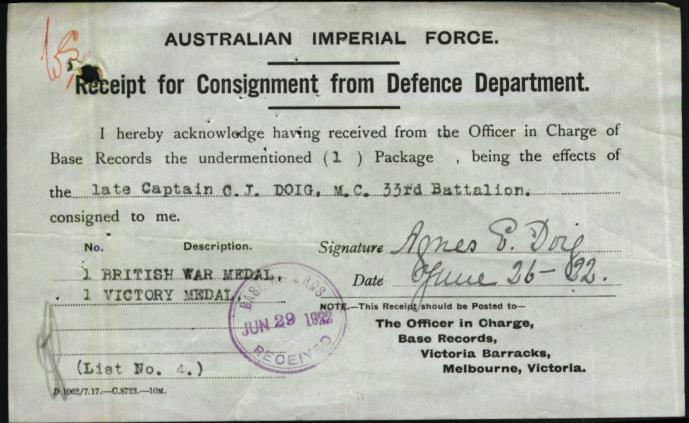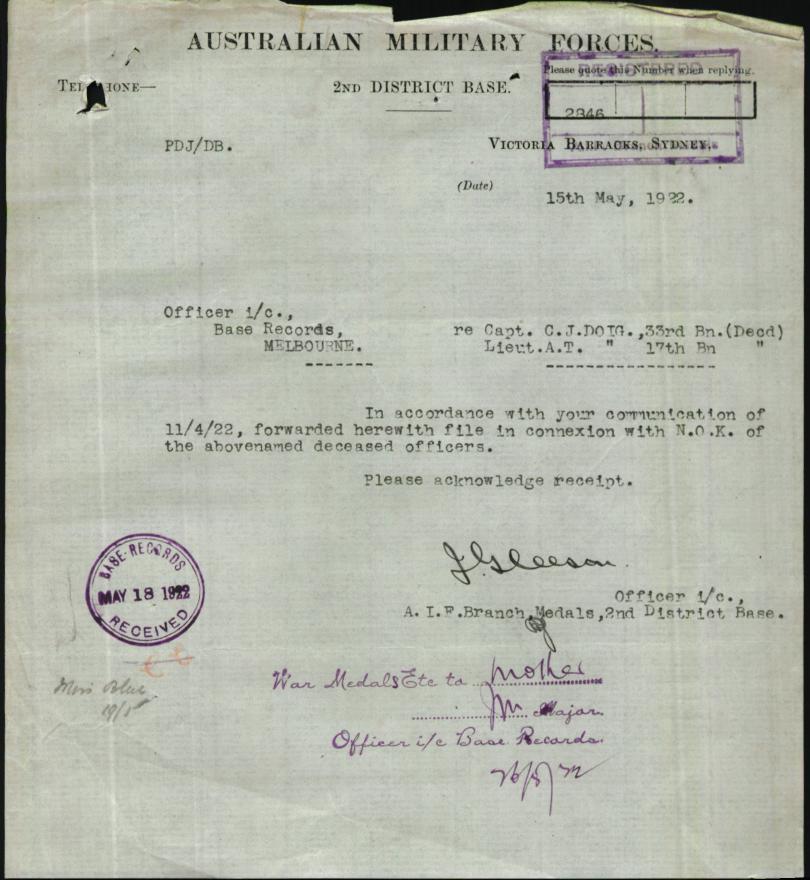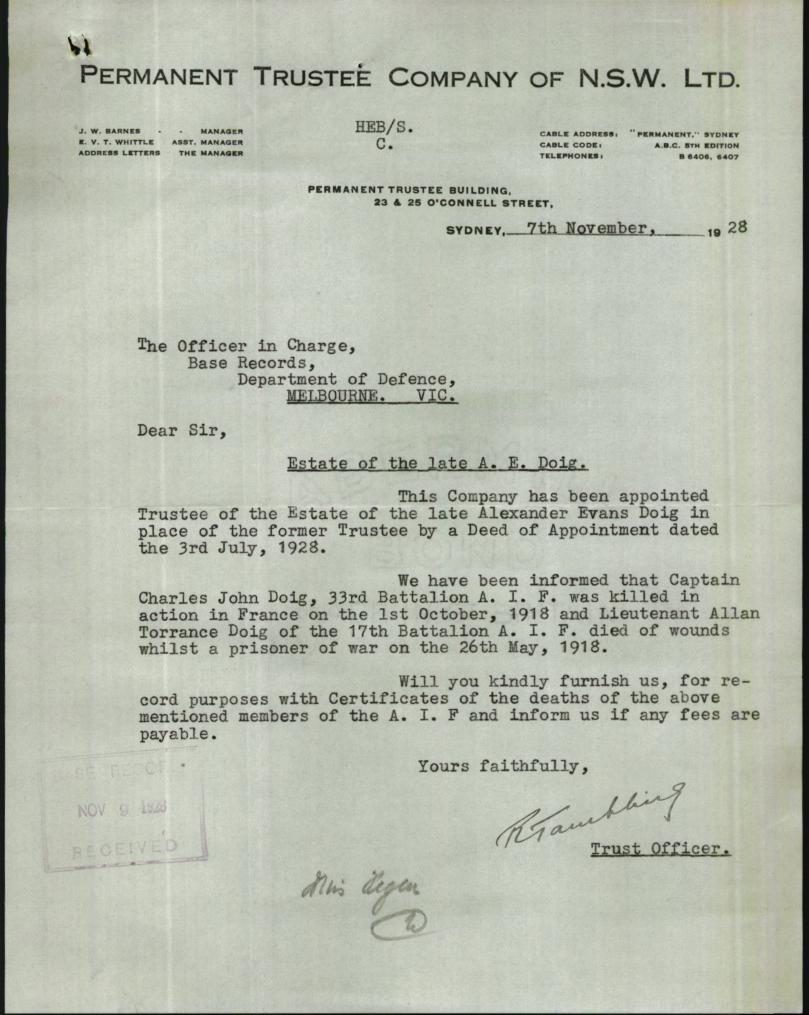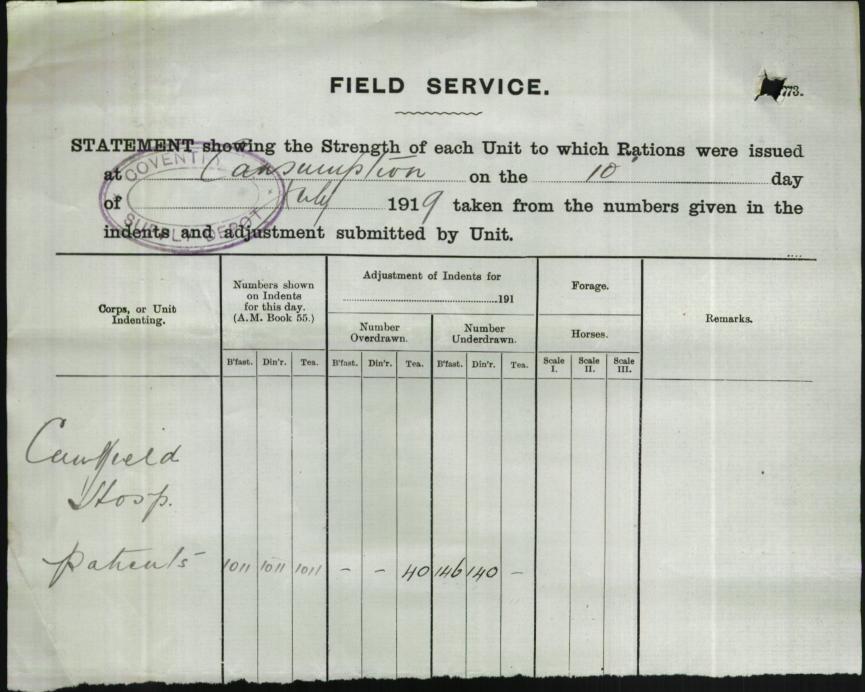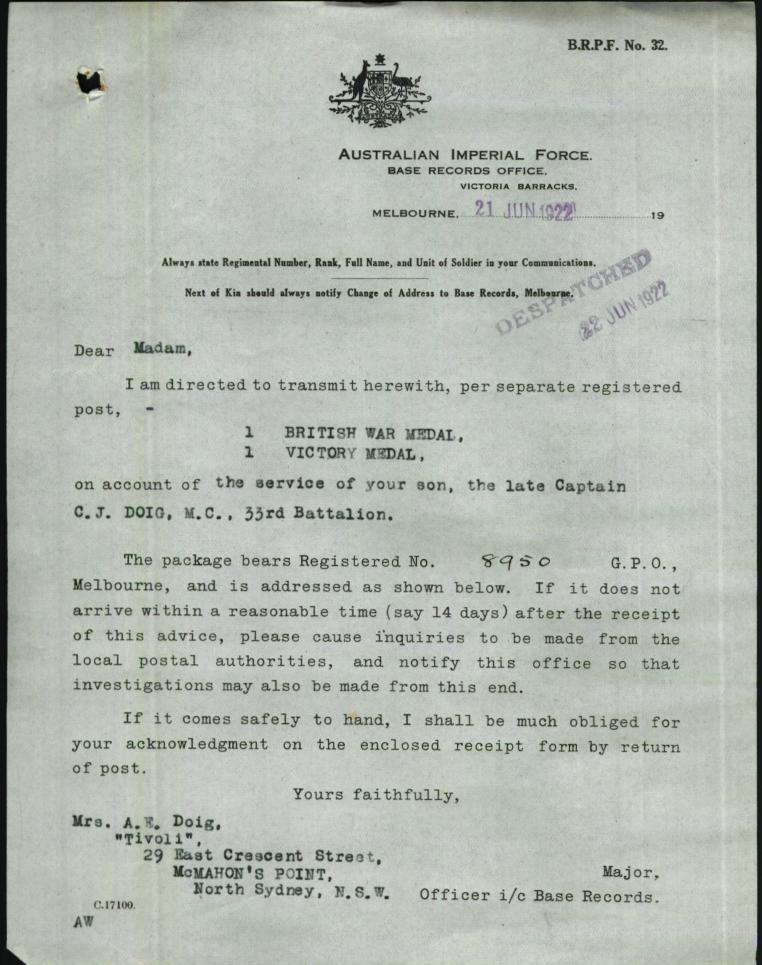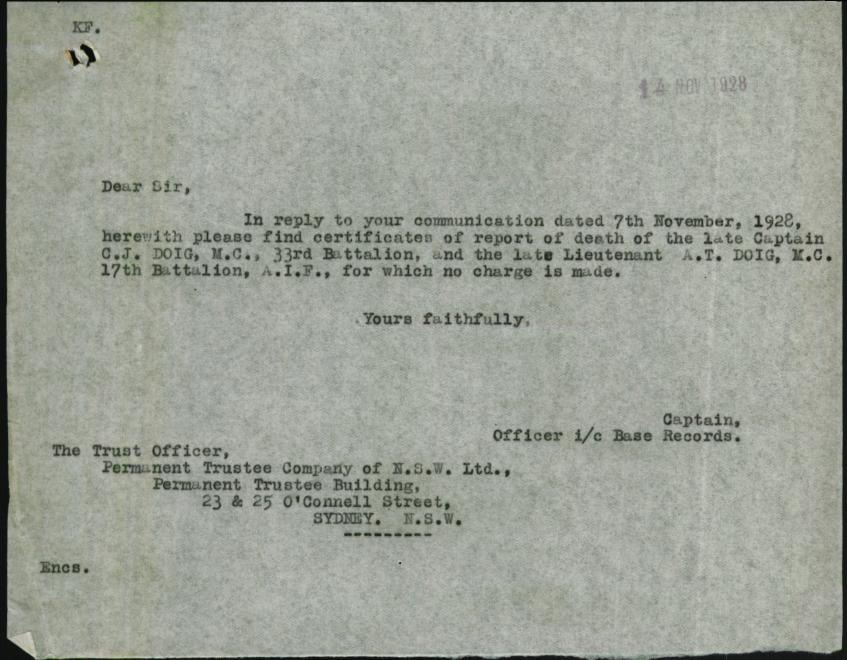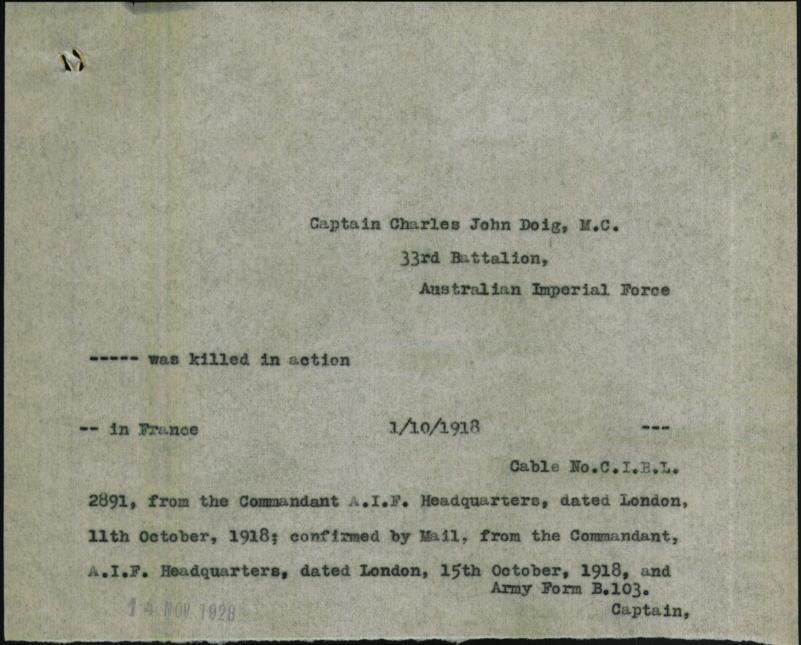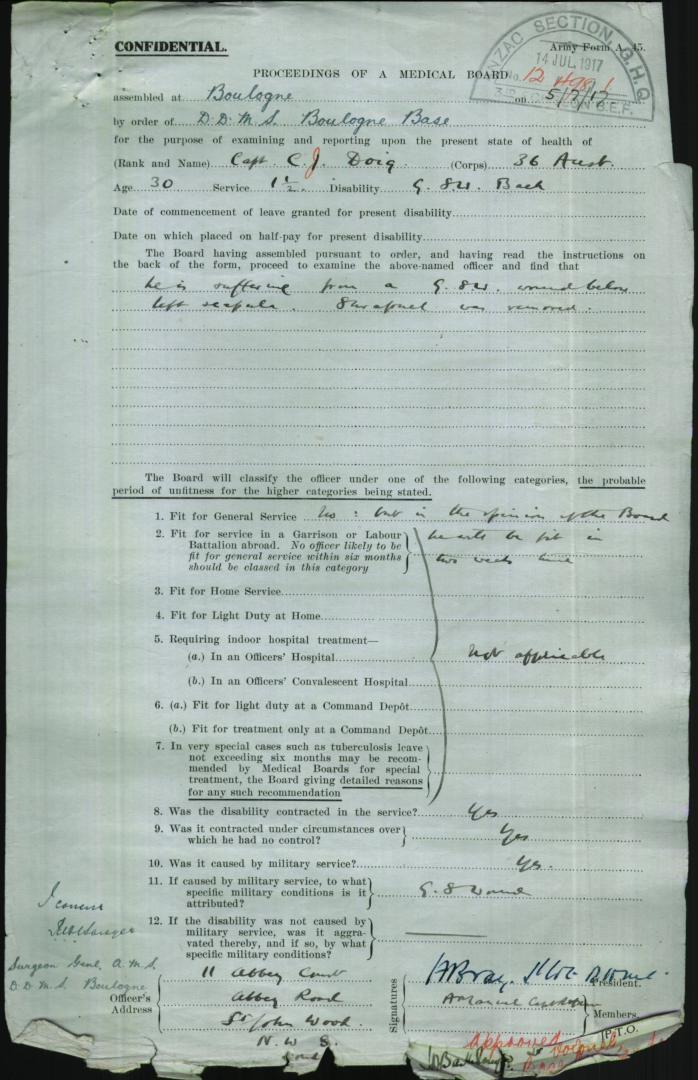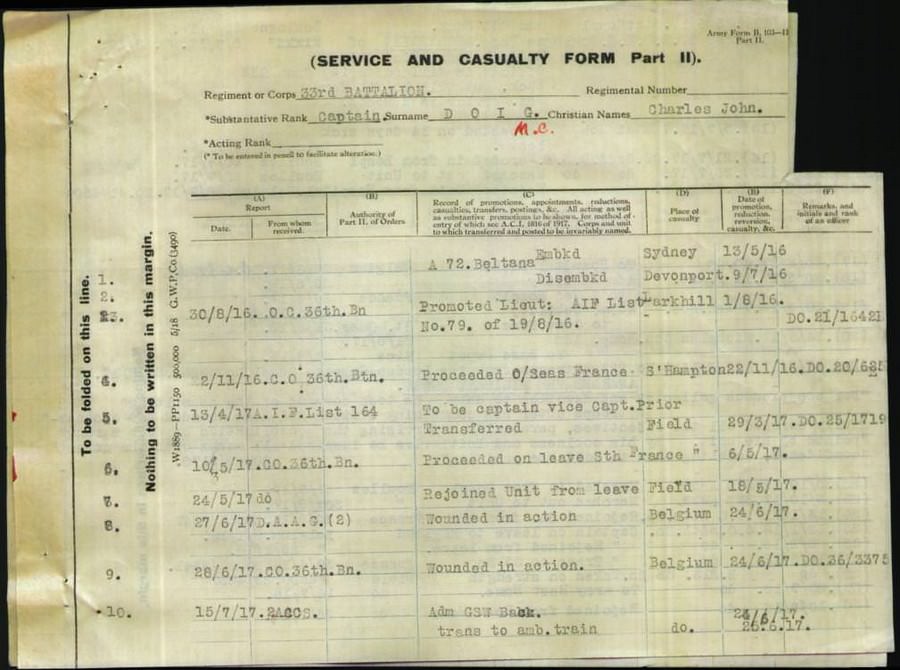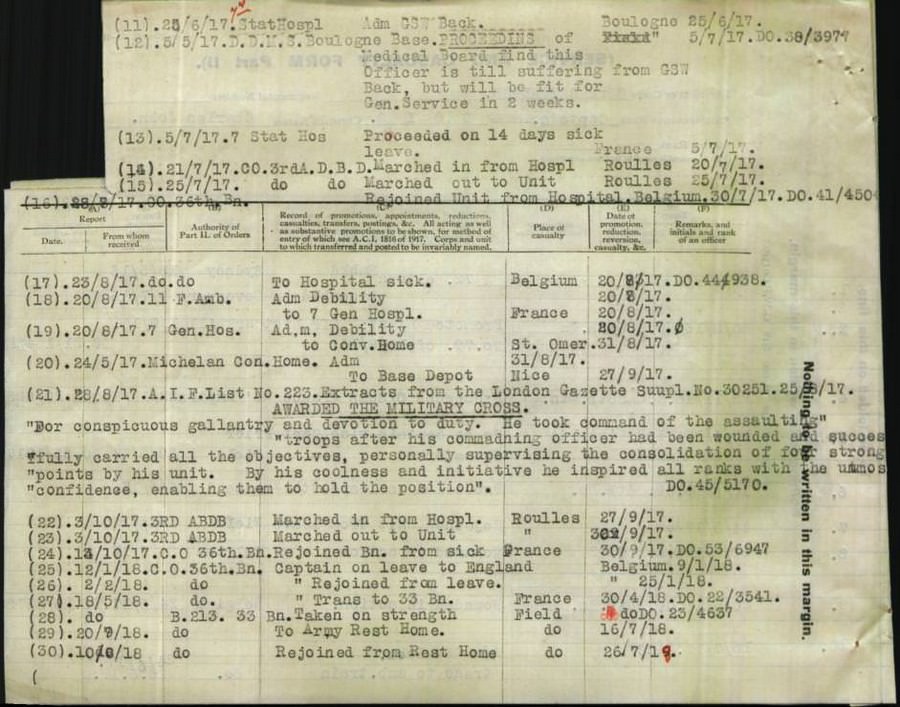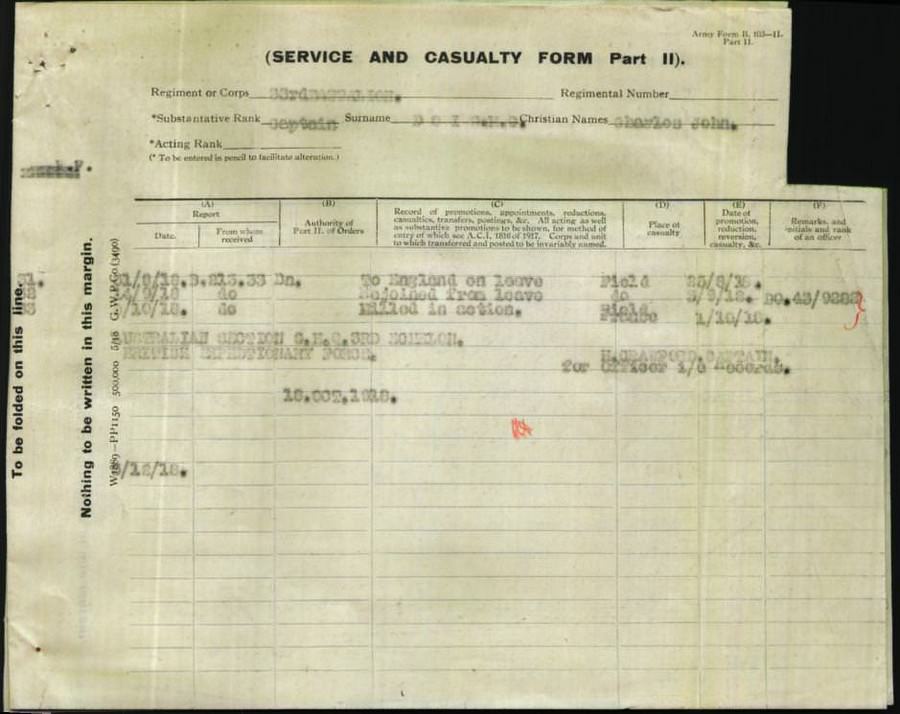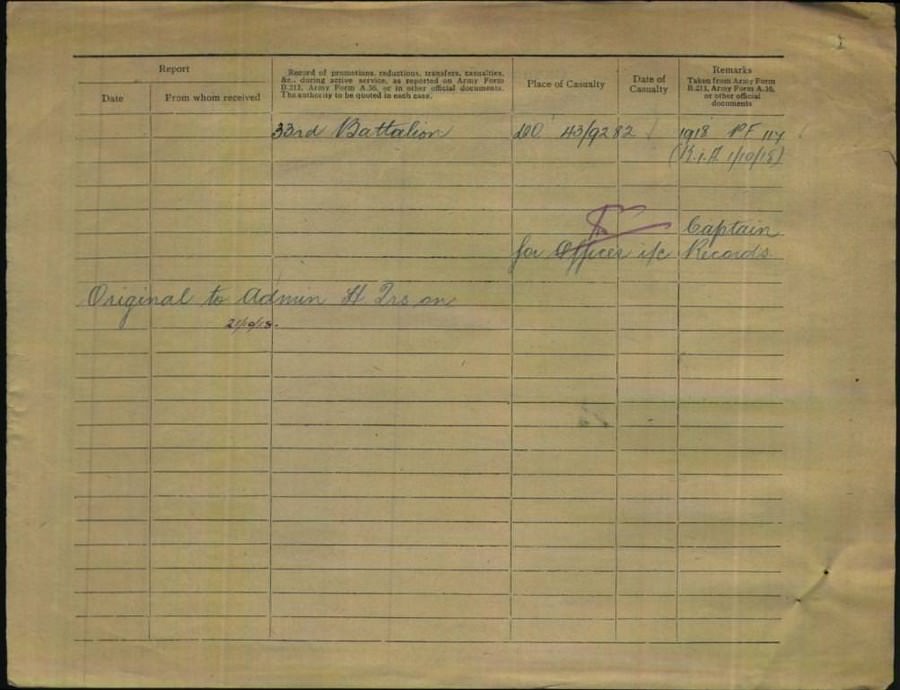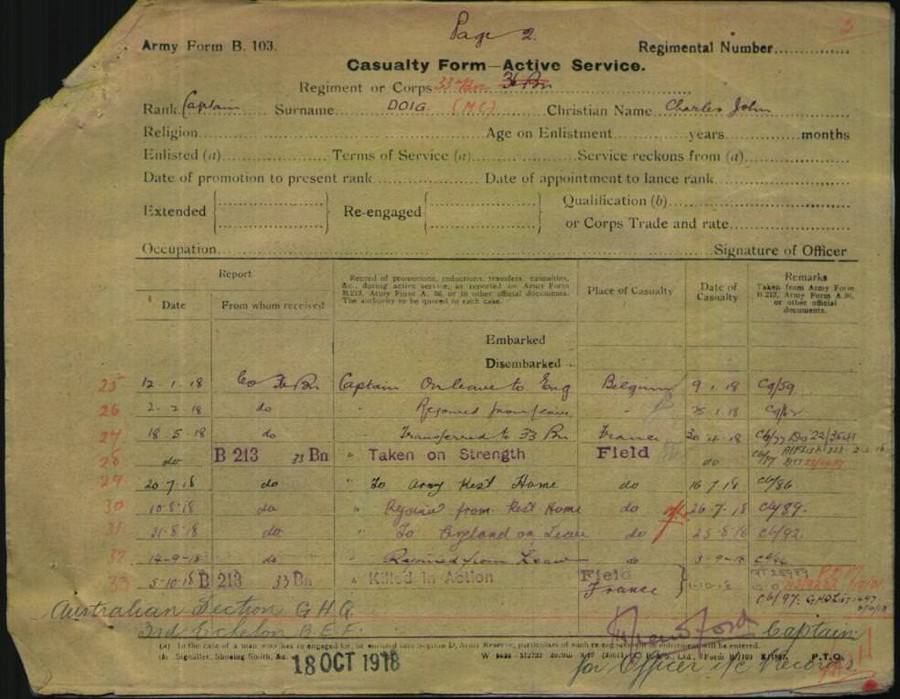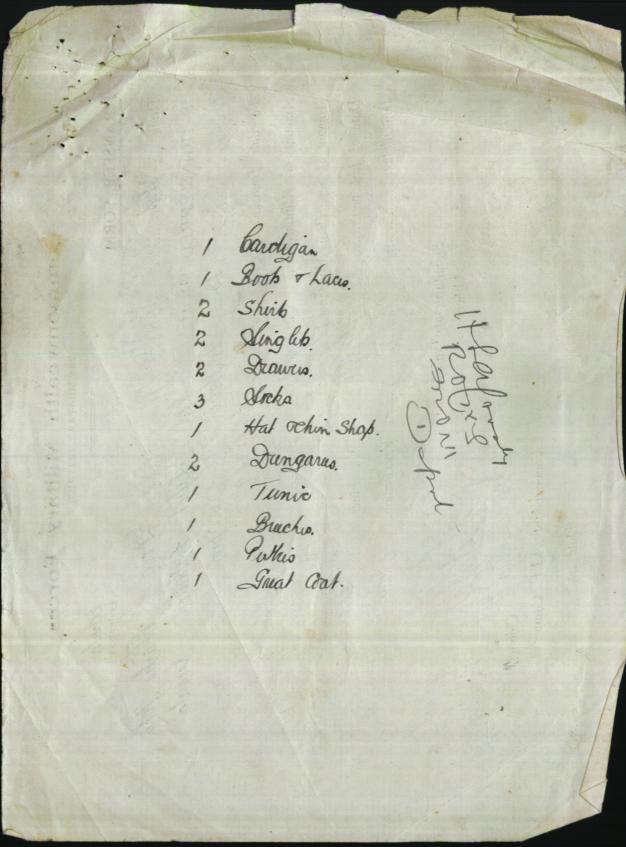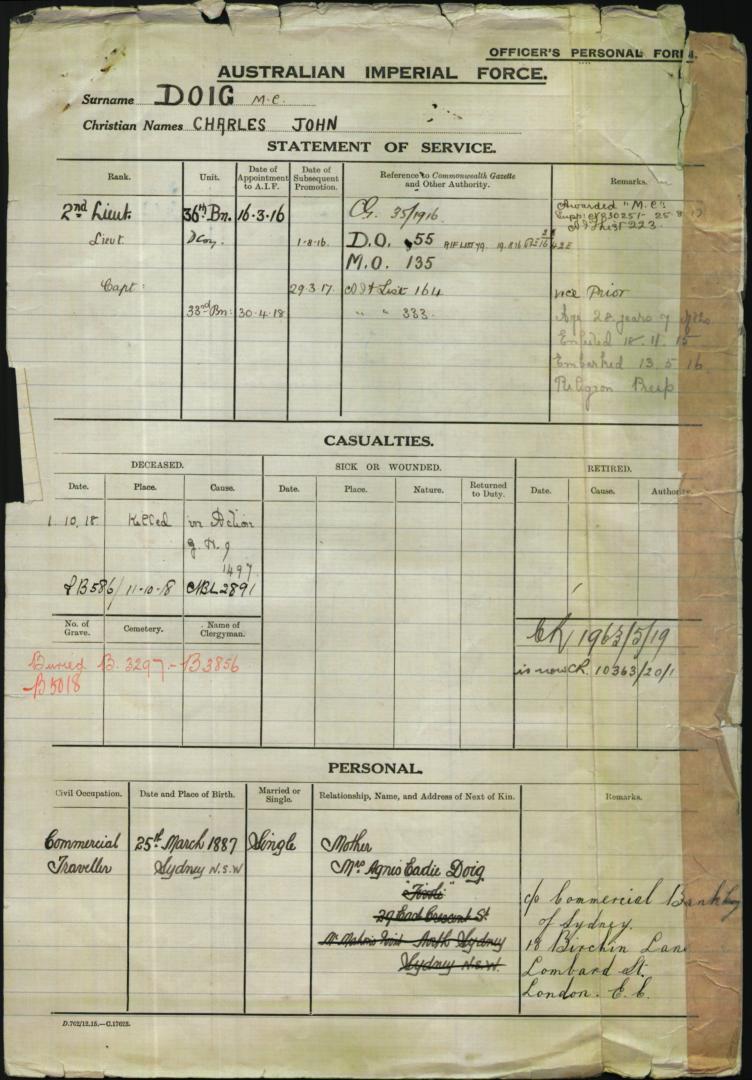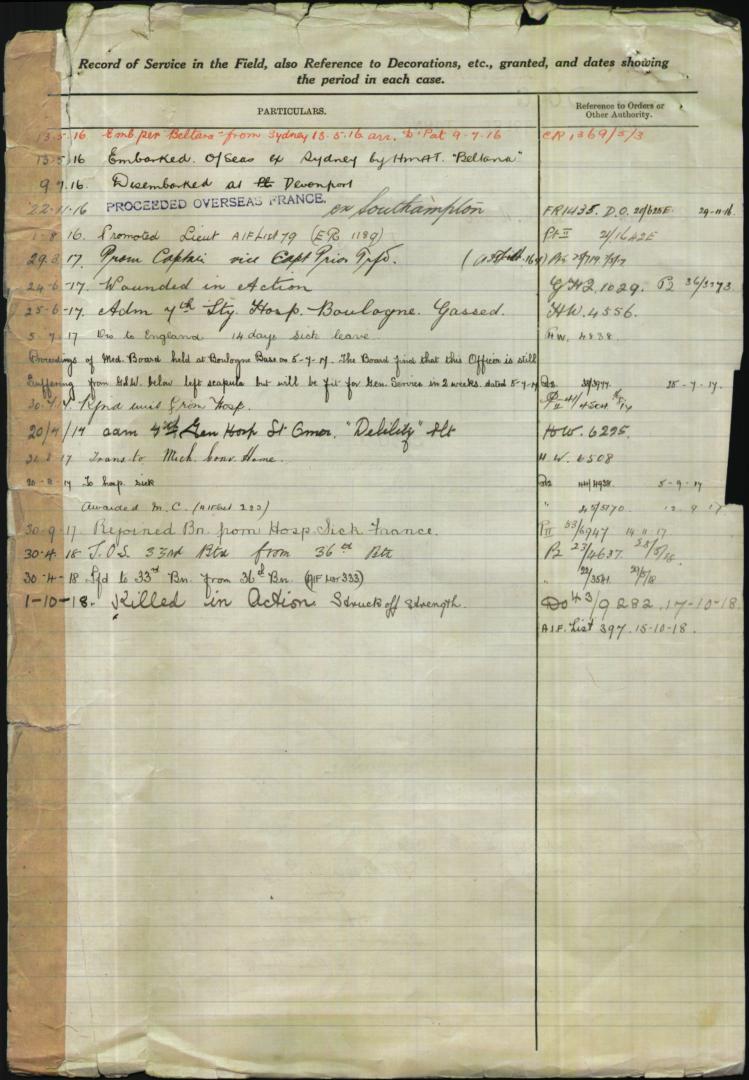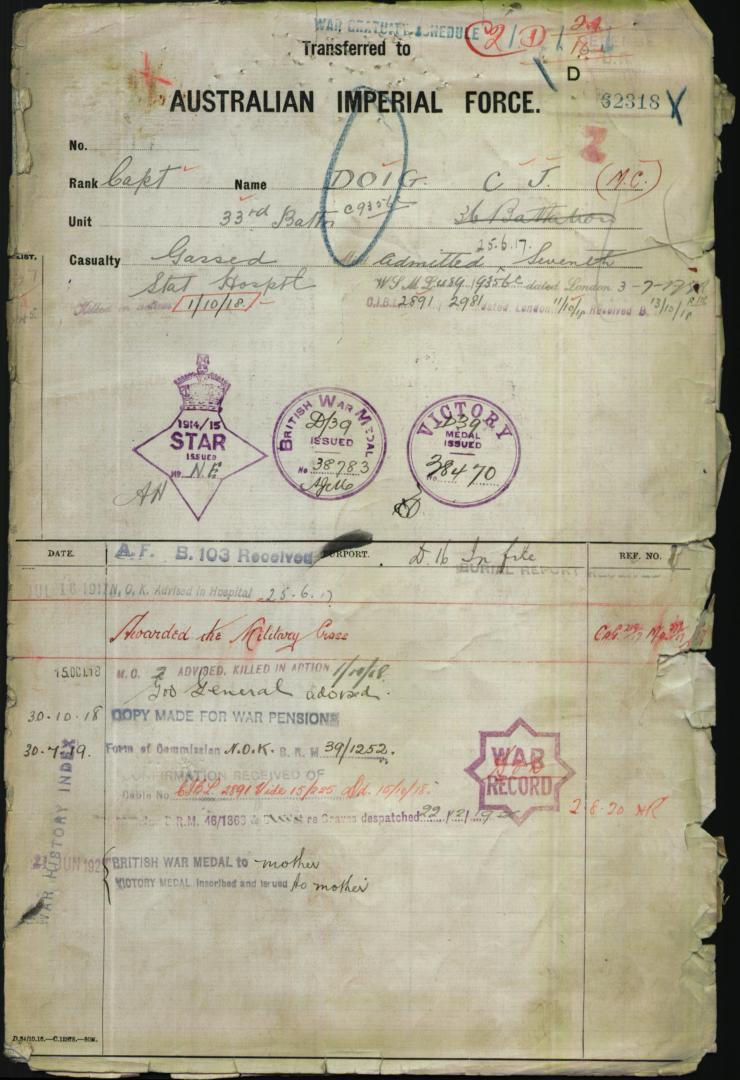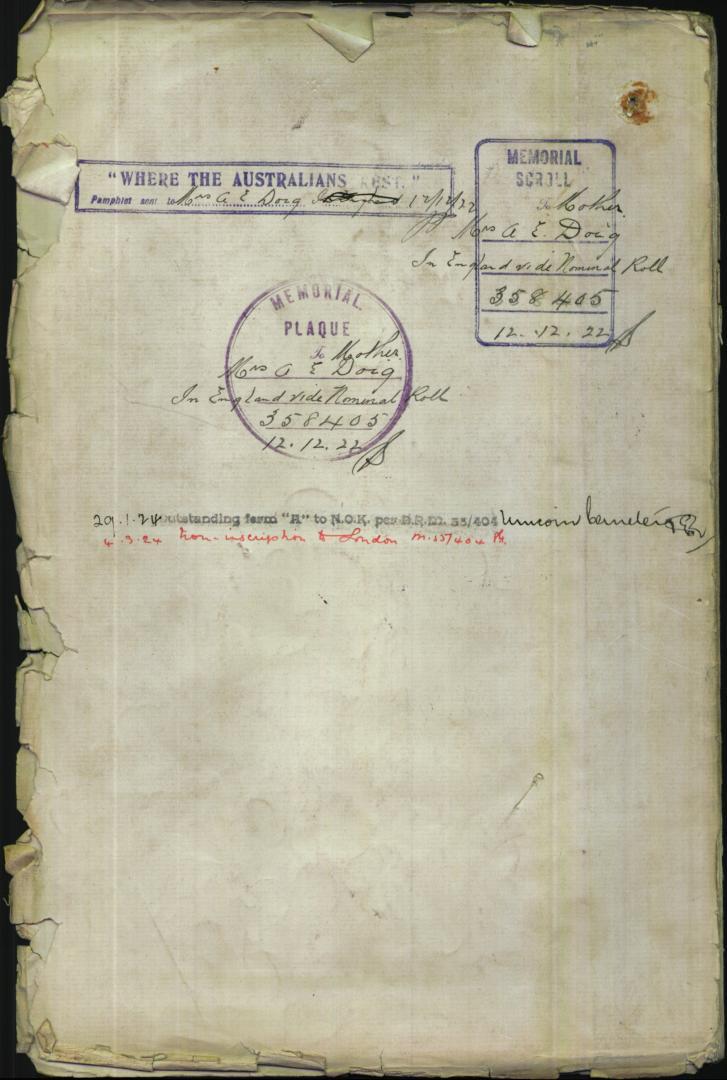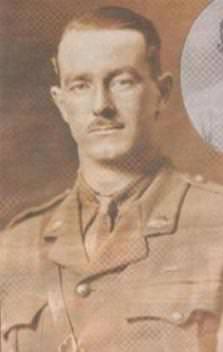
4th BATTALION - 33rd BATTALION AIF.
Lieutenant Colonel: Robert John Allwright MASSIE. D.S.O.
Born: 8th July 1890. St-Leonard, New South Wales, Australia. (No Registration Recorded)
Married 1: 3rd June 1919. London, England.
Wife 1: Phyllis Wood Massie. nee: Lang.
Married 2: 20th September 1947. Washington, D.C. USA.
Wife 2: Elizabeth Emily Squire Massie. nee: Crosse.
Died: 14th February 1966. Sydney, New South Wales, Australia. Death Cert:835/1966.
Father: Hugh Hamon Massie.
Mother: Tryphena Agnes Massie. nee:.
INFORMATIONRobert John Allwright Massie, enlisted with the 4th Battalion AIF on the 17th of April 1914, and left Sydney on board HMAT A14 "Euripides" on the 20th of October 1914, with the rank of Second Lieutenant/Adjutant of the Battalion.
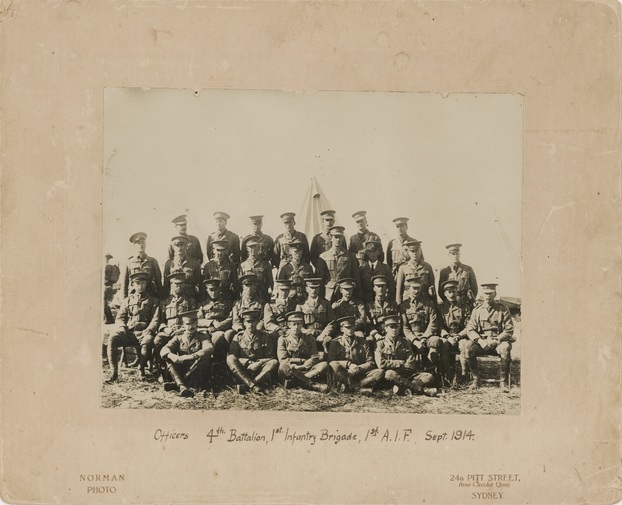 Norman & Co Place made Australia: New South Wales, Sydney, Kensington Date made September 1914 Description Group portrait of officers of the 4th Battalion prior to embarkation. Identified from left to right, back row: Second Lieutenant (2nd Lt) John Dawson Christie from Sydney, NSW (later Lieutenant); 2nd Lt Percival Francis Vere Turner from Edgecliffe, NSW (later Lieutenant); 2nd Lt William Reginald Rogers French from Rose Bay, NSW; 2nd Lt Stanley Lyndall Milligan from Chatswood, NSW (later Lieutenant Colonel and awarded Order of St Michael and St George (CMG), Distinguished Service Order (DSO), and Mentioned in Despatches (MID) five times); 2nd Lt Arthur McKellar Giles from Sydney (later Lieutenant and killed in action at Gallipoli on 8 August 1915); 2nd Lt Desmond Trench from Sydney (later Lieutenant); and 2nd Lt Frederick Fanning from Casino, NSW (later Captain, MID twice and died of wounds in France on 1 November 1916). Third row: 2nd Lt James Bloomfield Osborne from Paddington, NSW (later Captain and MID); 2nd Lt Bertie Vandeleur Stacy from Crossington, NSW (later Lieutenant Colonel and awarded CMG, DSO and Bar, and MID six times); 2nd Lt Edward Acton Lloyd from Rose Bay, NSW (later Major and MID); 2nd Lt James Sinclair Standish Anderson from Glen Innes, NSW (later Major and awarded DSO, Military Cross (MC), and MID three times); Lt Sherard Michael Becher from Strathfield, NSW; 2nd Lt Robert John Allwright Massie from North Sydney (later Lieutenant Colonel and awarded DSO, French Croix de Guerre (C de G) and MID three times); Lt Charles Athleston Chard from Sydney (resigned 3 April 1915); 2nd Lt Richard Thomas Francis Seldon from North Sydney (later Lieutenant and killed in action at Gallipoli on 8 August 1915); and 2nd Lt Arthur Roland Edwards from Sydney (later Major and MID). Second row: Major (Maj) David Andrew Storey from Sydney; Lt Hector Joseph Robert Clayton from Sydney (later Major and MID); Lt J T Simpson, possibly Lt Adam James Simpson from Hunter’s Hill (later Major); Lt Allen Humphrey Scott from Wahroonga, NSW (later Lieutenant Colonel, awarded DSO and MID three times and killed in action in Belgium on 1 October 1917); Maj Charles Melville Macnaghten from Sydney (later awarded CMG and MID); Lieutenant Colonel Astley John Onslow Thompson from Menangle, NSW (later MID and killed in action at Gallipoli on 26 April 1915); Captain (Capt) Iven Gifford Mackay from Raymond Terrace (later Brigadier General and awarded CMG, DSO and Bar, French C de G and MID five times); Capt Stewart Milson from Milson’s Point, NSW (later MID and killed in action at Gallipoli on 7 August 1915); Lt Jasper Kenneth Gordon Magee from Sydney (later Major and awarded MC and MID); Capt James Heane from Dubbo (later Brigadier General and awarded Companion of the Order of the Bath (CB), CMG, DSO, Belgian C de G, and MID five times); and Capt Charles Stanley Coltman from Sydney (later awarded MC and MID and died of disease in Egypt on 6 January 1916). Front row: Lt William Thomas McDonald from Forest Lodge, NSW (later Captain, MID and killed in action in France on 16 August 1916); 2nd Lt Muir Paul Smith from North Sydney (later Lieutenant, MID and killed in action at Gallipoli on 26 April 1915); Capt Arthur Hamilton Tebbutt from Quirindi, NSW (later Lieutenant Colonel and awarded DSO and MID twice); Lt David Richmond Brown from Katoomba, NSW (later Major and awarded MC and MID); and 2nd Lt Clarence Gordon Milne from Darlinghurst, NSW (later Captain).
Norman & Co Place made Australia: New South Wales, Sydney, Kensington Date made September 1914 Description Group portrait of officers of the 4th Battalion prior to embarkation. Identified from left to right, back row: Second Lieutenant (2nd Lt) John Dawson Christie from Sydney, NSW (later Lieutenant); 2nd Lt Percival Francis Vere Turner from Edgecliffe, NSW (later Lieutenant); 2nd Lt William Reginald Rogers French from Rose Bay, NSW; 2nd Lt Stanley Lyndall Milligan from Chatswood, NSW (later Lieutenant Colonel and awarded Order of St Michael and St George (CMG), Distinguished Service Order (DSO), and Mentioned in Despatches (MID) five times); 2nd Lt Arthur McKellar Giles from Sydney (later Lieutenant and killed in action at Gallipoli on 8 August 1915); 2nd Lt Desmond Trench from Sydney (later Lieutenant); and 2nd Lt Frederick Fanning from Casino, NSW (later Captain, MID twice and died of wounds in France on 1 November 1916). Third row: 2nd Lt James Bloomfield Osborne from Paddington, NSW (later Captain and MID); 2nd Lt Bertie Vandeleur Stacy from Crossington, NSW (later Lieutenant Colonel and awarded CMG, DSO and Bar, and MID six times); 2nd Lt Edward Acton Lloyd from Rose Bay, NSW (later Major and MID); 2nd Lt James Sinclair Standish Anderson from Glen Innes, NSW (later Major and awarded DSO, Military Cross (MC), and MID three times); Lt Sherard Michael Becher from Strathfield, NSW; 2nd Lt Robert John Allwright Massie from North Sydney (later Lieutenant Colonel and awarded DSO, French Croix de Guerre (C de G) and MID three times); Lt Charles Athleston Chard from Sydney (resigned 3 April 1915); 2nd Lt Richard Thomas Francis Seldon from North Sydney (later Lieutenant and killed in action at Gallipoli on 8 August 1915); and 2nd Lt Arthur Roland Edwards from Sydney (later Major and MID). Second row: Major (Maj) David Andrew Storey from Sydney; Lt Hector Joseph Robert Clayton from Sydney (later Major and MID); Lt J T Simpson, possibly Lt Adam James Simpson from Hunter’s Hill (later Major); Lt Allen Humphrey Scott from Wahroonga, NSW (later Lieutenant Colonel, awarded DSO and MID three times and killed in action in Belgium on 1 October 1917); Maj Charles Melville Macnaghten from Sydney (later awarded CMG and MID); Lieutenant Colonel Astley John Onslow Thompson from Menangle, NSW (later MID and killed in action at Gallipoli on 26 April 1915); Captain (Capt) Iven Gifford Mackay from Raymond Terrace (later Brigadier General and awarded CMG, DSO and Bar, French C de G and MID five times); Capt Stewart Milson from Milson’s Point, NSW (later MID and killed in action at Gallipoli on 7 August 1915); Lt Jasper Kenneth Gordon Magee from Sydney (later Major and awarded MC and MID); Capt James Heane from Dubbo (later Brigadier General and awarded Companion of the Order of the Bath (CB), CMG, DSO, Belgian C de G, and MID five times); and Capt Charles Stanley Coltman from Sydney (later awarded MC and MID and died of disease in Egypt on 6 January 1916). Front row: Lt William Thomas McDonald from Forest Lodge, NSW (later Captain, MID and killed in action in France on 16 August 1916); 2nd Lt Muir Paul Smith from North Sydney (later Lieutenant, MID and killed in action at Gallipoli on 26 April 1915); Capt Arthur Hamilton Tebbutt from Quirindi, NSW (later Lieutenant Colonel and awarded DSO and MID twice); Lt David Richmond Brown from Katoomba, NSW (later Major and awarded MC and MID); and 2nd Lt Clarence Gordon Milne from Darlinghurst, NSW (later Captain).
War was declared and he enlisted immediately. In October, his 4th Battalion sailed for Egypt and in April 1915, it formed part of the force which landed at Gallipoli.
Throughout that wretched campain, Massie performed with reckless heroism. On only his second day at Gallipoli, Massie's unit made a suicidal advance towards the Turkish lines after an order was misunderstood. When the Colonel leading the attack was shot down, it was Massie who tried to retrieve his body under withering Turkish gunfire.
Not all of the injuries Massie suffered at Gallipoli were inflicted by the Turks. Once he was wounded when he accidentally dropped a "jam tin bomb"- an improvised grenade- in his own trench. On another occasion, he returned to his own trenches only to be bayoneted by one of his own men, who had mistaken him for a Turkish attacker. He was lucky to escape with light wounds on both occasions.
But Massie occupied the front-line so fearlessly it was only a matter of time before he sustained a more serious injury. This happened at Lone Pine in August 1915 when a junior Officer, Iven Mackay, sent Massie to investigate the position of an outpost under heavy fire.
Army medical records state that Massie was struck by shrapnel from an exploding bombshell. The damage was severe; a shrapnel wound in the back of his left shoulder; a splintered shoulder-blade, broken ribs and a punctured lung. His bravery at Gallipoli was not forgotten. In January 1916 he was Mentioned in Dispatches and in February the French Government awarded him the Croix de Guerre.
MENTIONED IN DISPATCHES25th January 1916 Lieutenant MASSIE; 4th Battalion AIF. In connection with operations at the DARDANELLES. Sir, General Ian Hamilton.
London Gazette: 28th January 1916, page 1208, position 63.
Commonwealth Gazette: 6th June 1916, page 861, position 144.
FRENCH; CRIOX DE GUERREFebruary 1916 Lieutenant MASSIE; 4th Battalion AIF. Awarded the Decoration "Croix de Guerre" by the President of the French Republic in recognition of distinguished service during the campaign.
London Gazette: 24th February 1916, page 2068, position 5.
Commonwealth Gazette: 18th May 1916, page 1161, position 14.
During the Gallipoli Campaign Massie was also recommended for the MILITARY CROSS which was not supported.
Other men might have rested on these laurels but by late 1916, Massie was back at the front, this time in France with the 33rd Battalion. He had already been wounded four times but still disregarded his own safety.
Robert John Allwright Massie was transferred to the 33rd Battalion Headquarter Company as an Instructor with the newly formed 33rd Battalion after he returned to Australia from the Gallipoli Campaign. He trained with the 33rd at Rutherford Training Camp before going to Sydney by train and left Sydney on board HMAT A74 "Marathon" on the 4th of May 1916, disembarking at Devonport on the 9th of July 1917.
He proceeded to Larks Hill before going overseas from Southampton for France on the 21st of November 1917. In April 1917 he was again Mentioned in Dispatches, this time by the British Commander-in-Chief,Sir Douglas Haig.
MENTIONED IN DISPATCHESApril 1917 Major MASSIE; 33rd Battalion AIF.
London Gazette: 1st June 1917, page 5422, position 65.
Commonwealth Gazette: 4th October 1917, page 2624, position 77.
Richard was attached to the 3rd Divisional Headquarters, 33rd Battalion on the 31st of May 1917.
DISTINGUISHED SERVICE ORDER4th March 1918 33rd Battalion; Major Robert John Allwright MASSIE. For conspicuous ability, initiative, resourcefulness and devotion to duty, as Second in Command of the Battalion during the period 22nd September, 1917 to 24th February, 1918. He has shown originality and ability in organisation, tireless enthusiasm and energy in training, and the keenest interest in the welfare of the men, particularly in connection to their food and sport. His influence on all the ranks of the Battalion cannot be overestimated.
London Gazette: 3rd June 1919, page 6461, position 36.
Commonwealth Gazette: 24th October 1918, page 2056, position 166.
When he took leave in England, Massie was called into occasional cricket matches. He appeared at Lord's in 1917 for a team of Australian and South African servicemen against an English team styled Army and Navy, which was composed of county players, eight of whom were or became internationals. Massie's analysis was undramatic- he took 2/39- but his obvious class left a strong impression on everyone at the ground. It was his last appearance in a match of any significance.
There was a cruel irony to the injury that put an end to Massie's sporting career. He was injured, not at the front where his outlandish bravery earned him a further Mentioned in Dispatches, in 1918 but behind the lines at a training camp when a German Plane dropped a single bomb, and shrapnel from this random explosion ripped through Massie's foot.
MENTIONED IN DISPATCHES7th August 1918 Major MASSIE; 33rd Battalion AIF.
London Gazette: 28th May 1918, page 6202, position 53.
Commonwealth Gazette: 24th October 1918, page 2056, position 166.
Yet not even this injury prevented him returning to France after six months of treatment and convalescence. By the time of the armistice, Massie had reached the rank of Lieutenant-Colonel.
Richard was seconded to Duty as Commandant, Australian Corps School with the rank of temporary Lieutenant Colonel on the 24th of September 1918. Richard applied and received special Marriage Leave on the 14th of June 1919 in London with leave granted to work with the British-American Tobacco Company in London from the 5th of May to the 31st of October 1919. Richard was Discharged 04/12/1919.
(James Rodgers and Ray Kershler; The Daily Telegraph. 1st December 2006) (D Harrower)
Robert was the Vice President of the 33rd Battalion Reunion Committee and lived at Narrabeen. N.S.W. after retirement. He returned to a successful career in business and died in 1966, aged 76.
Family Information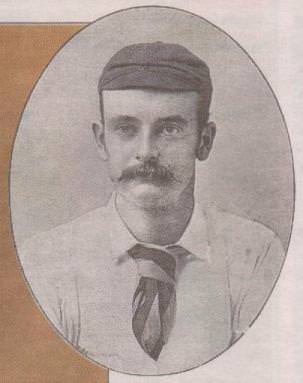 Hugh Massie.-1906From Cricket Glory to Hero of the Trenches.Hugh Massie was an Ashes Legend, but his brave son Jack never wore the baggy green. No writer of fiction would have dared to invent the character of Jack Massie. A young giant, powerful enough to excel at boxing, rowing and rugby, little enough to be a champion hurdler, precise enough to be and expert rifle shot and with the fine co-ordination of an outstanding cricketer.
Hugh Massie.-1906From Cricket Glory to Hero of the Trenches.Hugh Massie was an Ashes Legend, but his brave son Jack never wore the baggy green. No writer of fiction would have dared to invent the character of Jack Massie. A young giant, powerful enough to excel at boxing, rowing and rugby, little enough to be a champion hurdler, precise enough to be and expert rifle shot and with the fine co-ordination of an outstanding cricketer.
That would be hard enough to credit. But who would suspend disbelief so far to accept that such an athlete could also be a brilliant scholar, a successful businessman and an unflinchingly courageous, highly decorated war hero? Massies story is almost unbelievable.
Jack was born Robert John Allwright Massie in 1890, into the heart of the Sydney establishment. his father, Hugh was a prominent banker who had plated nine Tests for Australia as an adventurous batsman. Although Hugh Massie's successes were sporadic, he illuminated the low-scoring 1882 Oval Test with a dazzling innings of 55 that gave his bowlers, notably Fred "The Demon", Spofforth, just enough runs to defend for the seven-run victory which later provoked the mock obituary for English cricket which appeared in The Sporting Times. And thus the legend of the Ashes was born.
At Shore School, Massie played every sport available and excelled at all. In his four years in Shore's First XI, Massie claimed 223 wickets at an average of just over 10 runs a wicket.He was the school's rifle-shooting champion, a powerful forward in the unbeaten First XV of 1908, and would have won a place in the NSW rowing team had his father not decreed this inappropriate for a schoolboy. Had he never set foot on a cricket pitch, Massie would still have been an exceptional sportsman. He was tall -190cm- and powerful, lean and very athletic.
In 1911, 1912 and 1913, he packed down in the second-row for Sydney University's First XV, while on his way to first-class honours in civil engineering. His strength and mobility earned him a call-up to the NSW team for two matches against Queensland in 1912 and twice again in 1913. He performed so well in these games that in August 1913 he was named in the Australian team to tour New Zealand.
Unable to spare the time away from his studies Massie withdrew. In 1914 he also withdrew from the Australian Cricket team's subsequently aborted tour of south Africa, thus holding unique distinction of being invited to tour with the Australian Rugby team and the Australian Cricket team - but declined both invitations.
Massie won four Blues from the five sports in which he represented the university. He also won the NSW Amateur Boxing Heavy Weight Championship in 1913 and the NSW 120 yard hurdles in 1914. However, it was cricket that Massie's blend of strength, athleticism, stamina and skill found its fullest expression.
He was a left-arm, fast bowler, who generated uncomfortable pace and bounce but also possessed a bewildering range of variations. Massie was only 20 with just eight first-grade matches (and 19 wickets) behind him, when he was selected for NSW. Without posing a very great threat, he bowled neatly to take three wickets against the touring South Africans and help his side to victory.
But the selectors decided he was not quite ready for the first-class game and returned him to club cricket. He was overlooked for the 1911-12 season but the following season he had irresistible claims for a place in the Sheffield Shield side. He ended his full season of first-class cricket with 59 wickets from 10 matches.
(James Rodgers and Ray Kershler; The Daily Telegraph. 1st December 2006)
Wikipedia Link
Family TreeHugh Hamon and Tryphena Agnes Massie had 3 children, 2 boys an a girl. Hugh Hamond I Massie Born 1888 at St-Leonard, N.S.W. Birth Cert:13311/1888 and died in 1967 at Sydney, N.S.W. Death Cert: 2235/1967. Robert John Allwright Massie Born 1890 at St-Leonard, N.S.W. Birth Cert: Nil Record, and Died in 1966 at Sydney, N.S.W. Death Cert:835/1966. Tryphena Agnes Massie Born in 1896 at St-Leonard, N.S.W. Birth Cert:25418 and Married Leslie W Dunlop in 1920 at Sydney, N.S.W. Marriage Cert:10311/1920. No record found of death.
Military Records
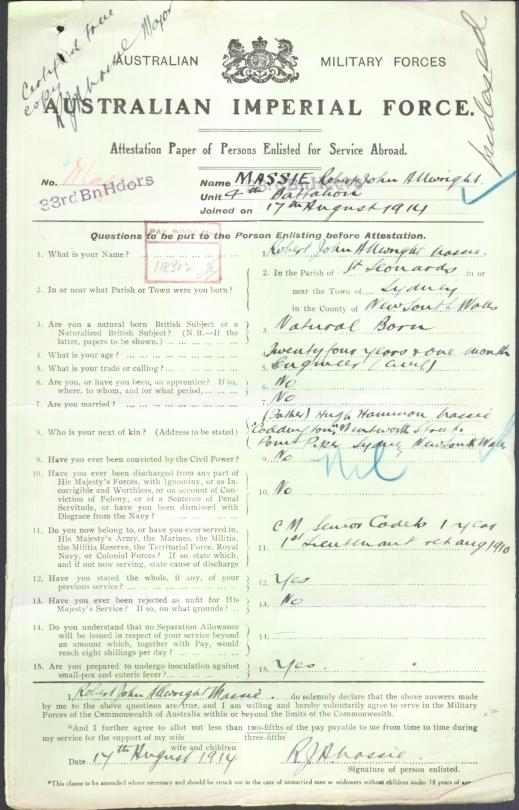
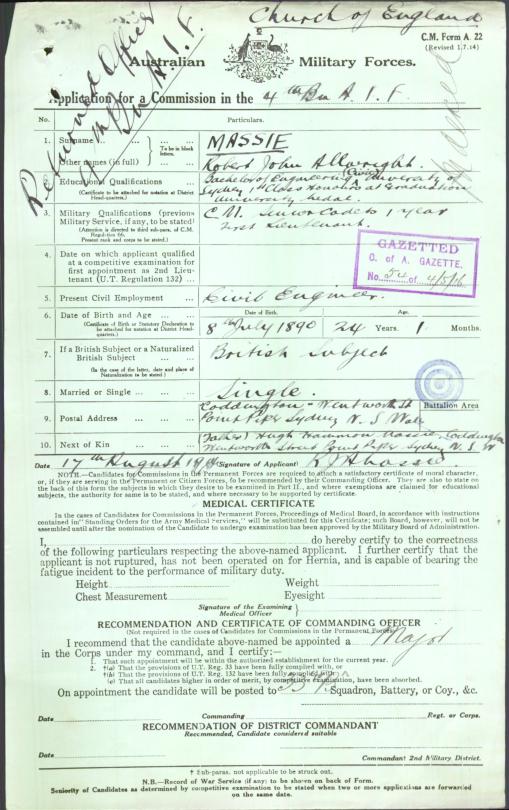
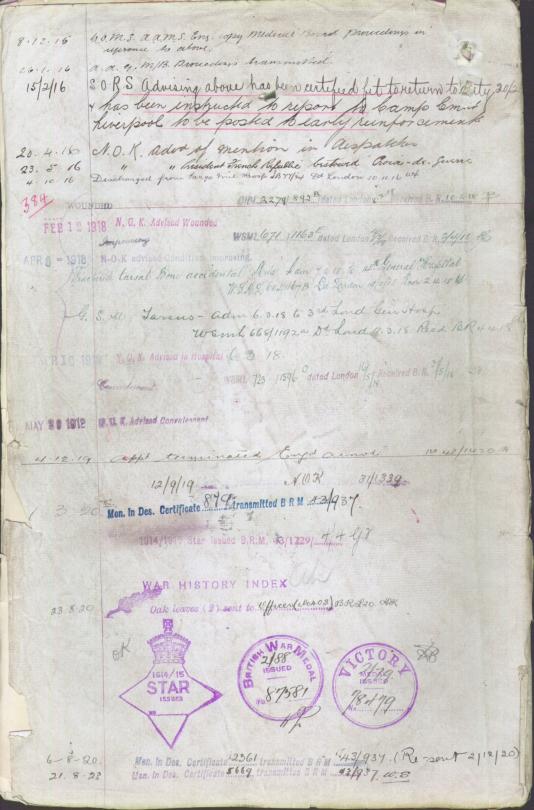

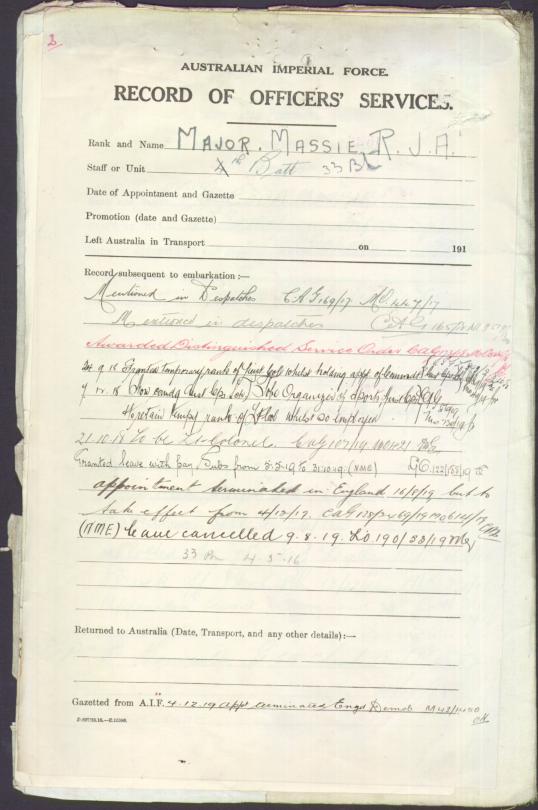

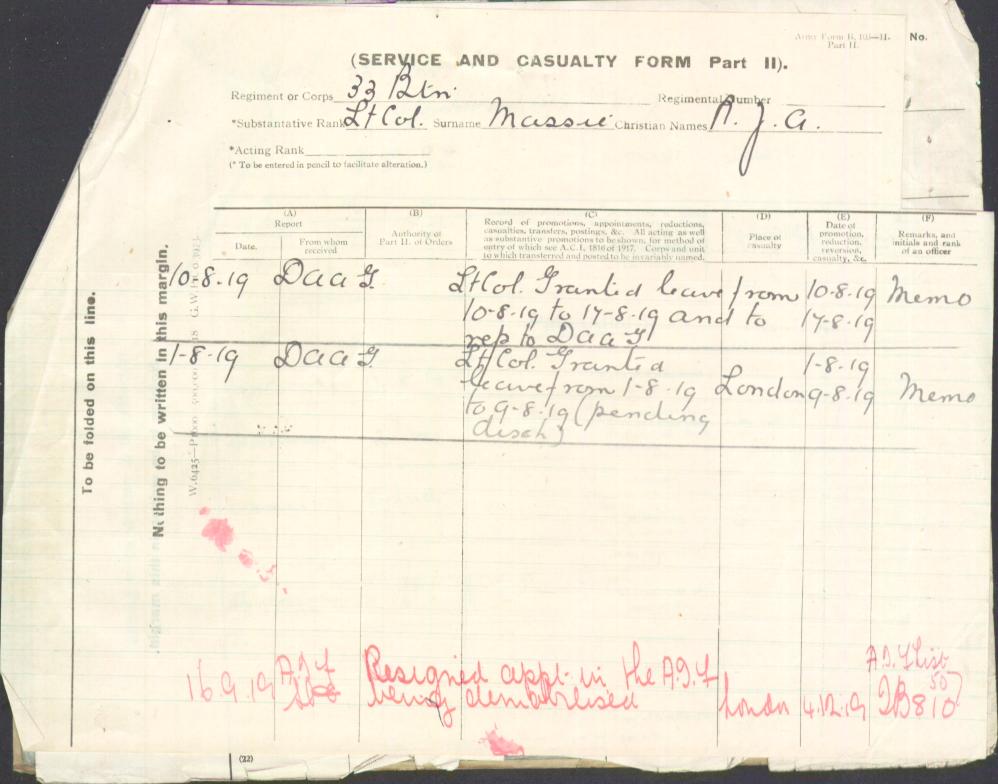
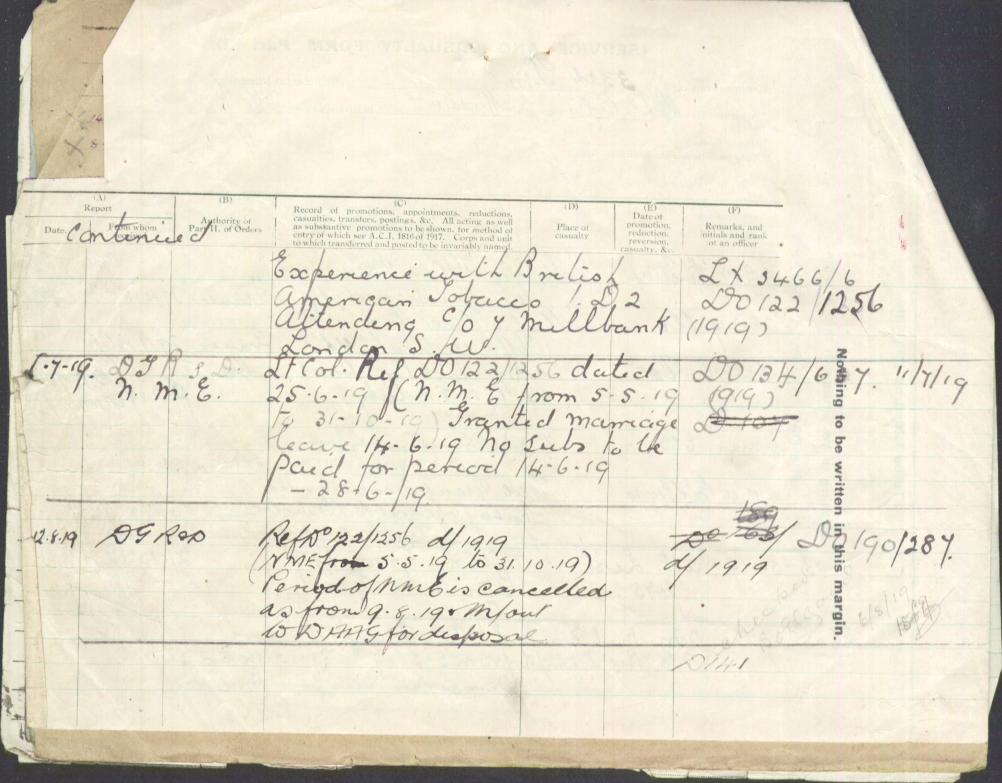
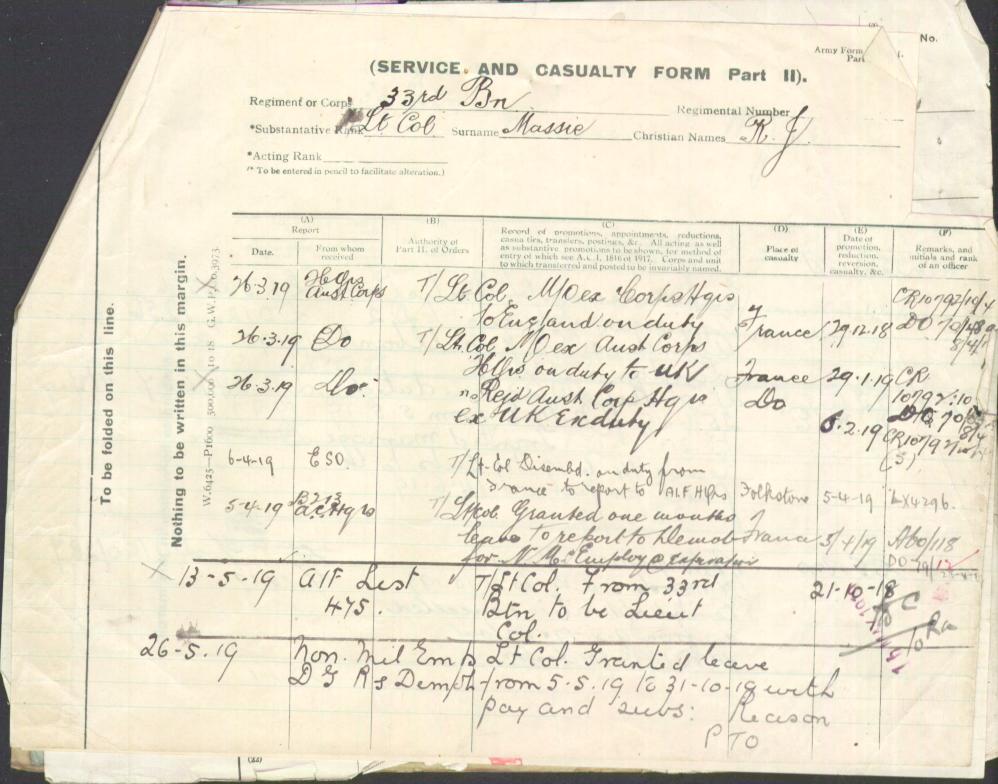

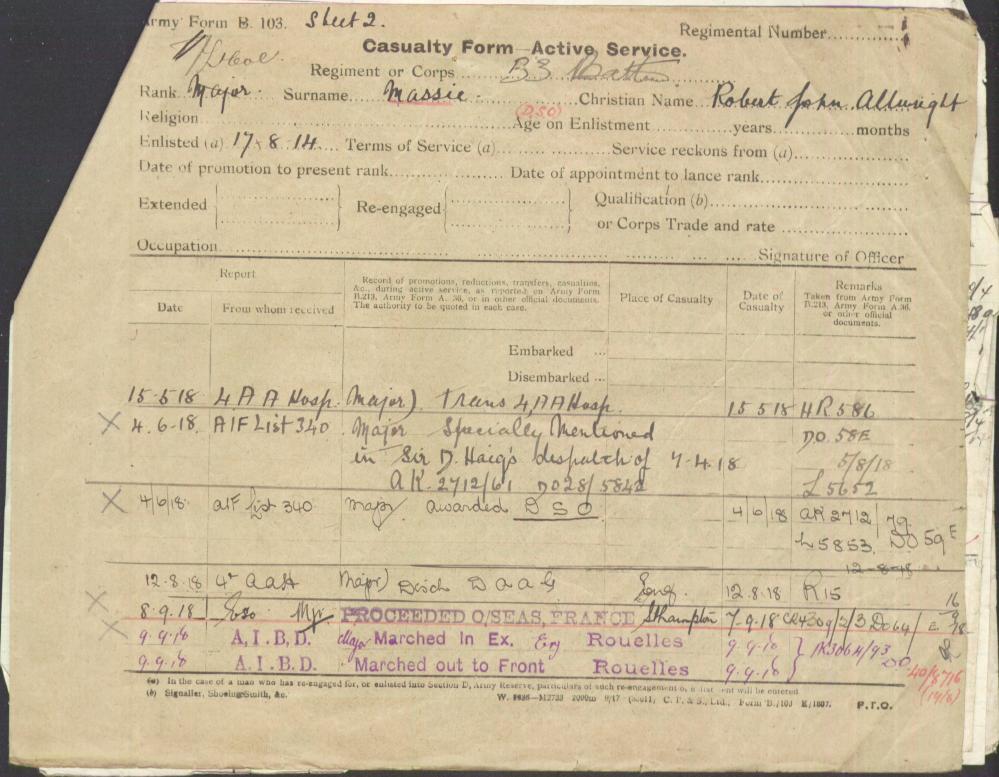
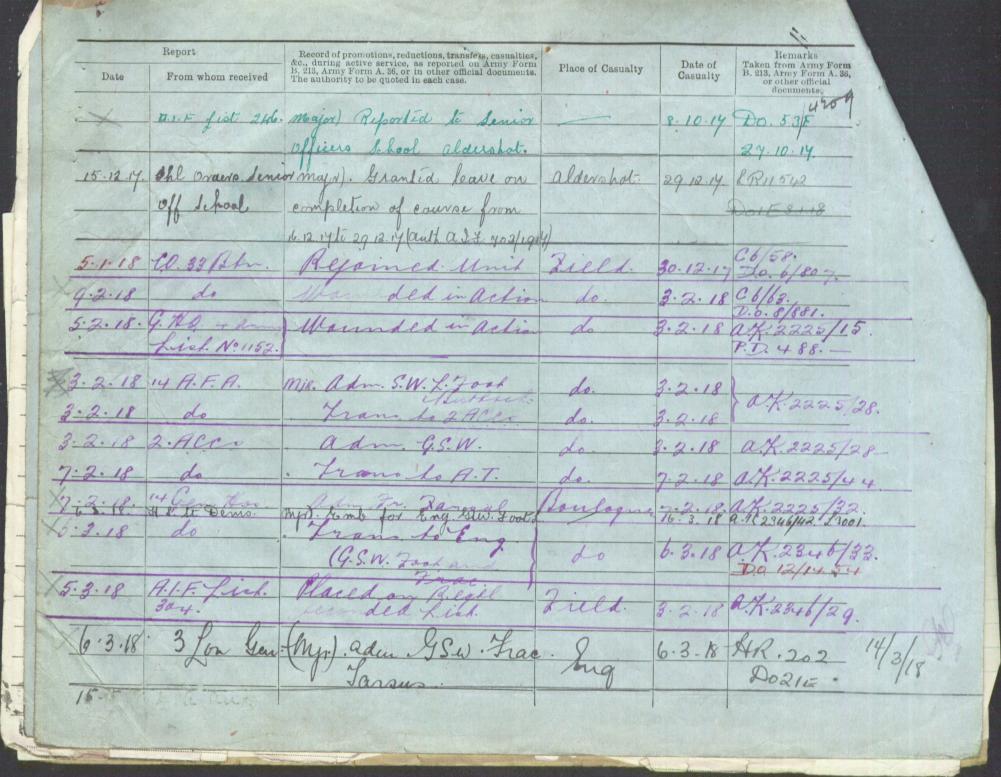

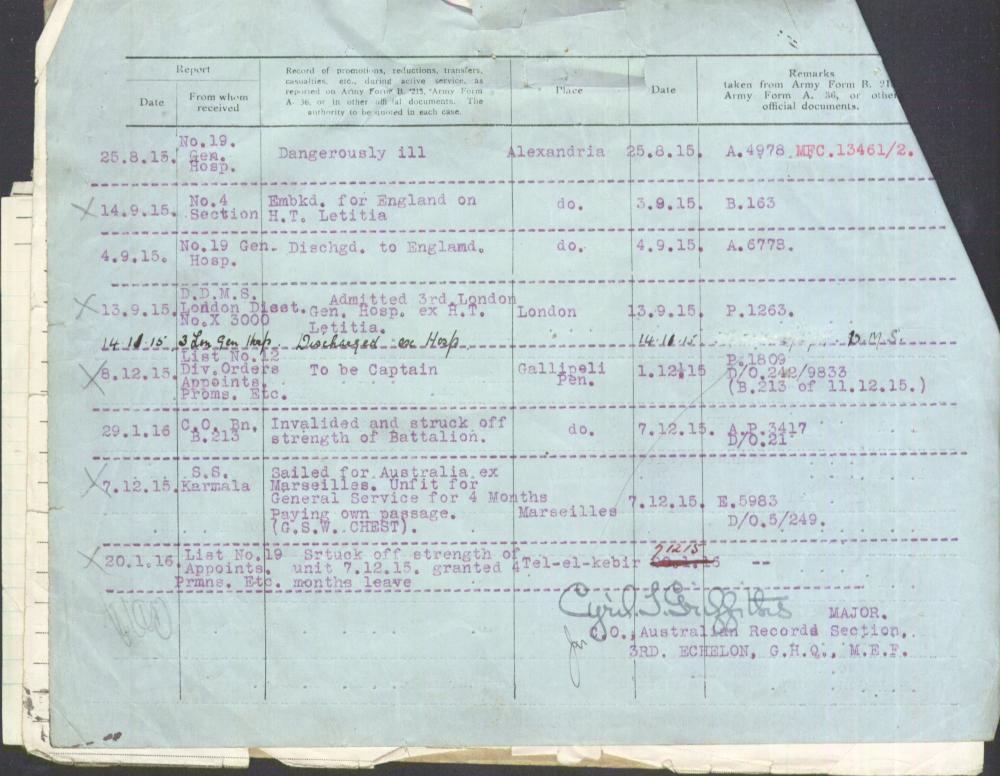
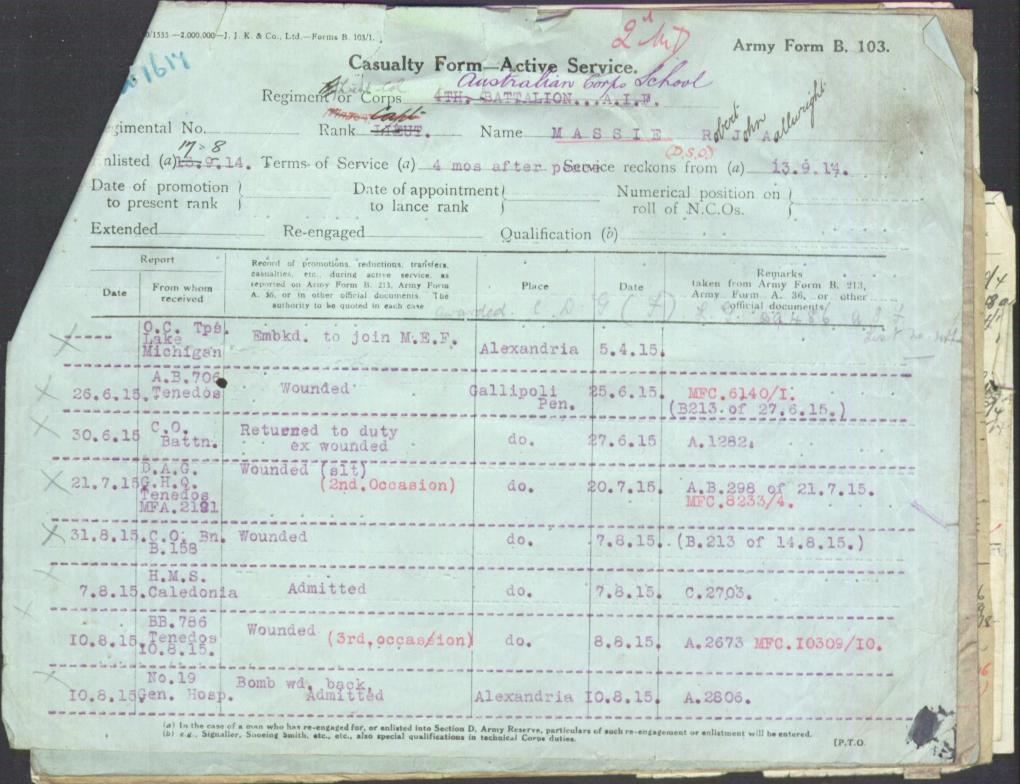


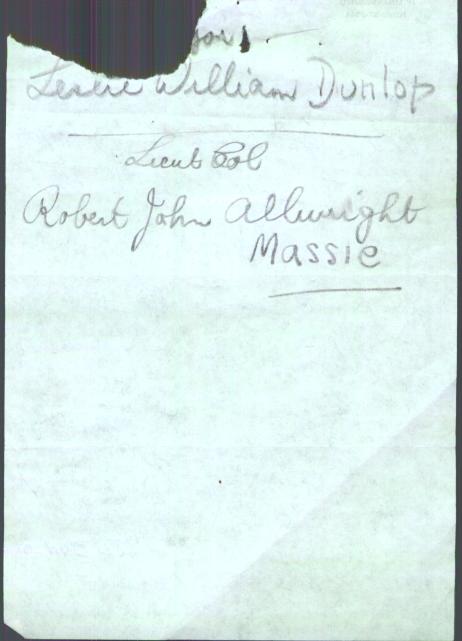
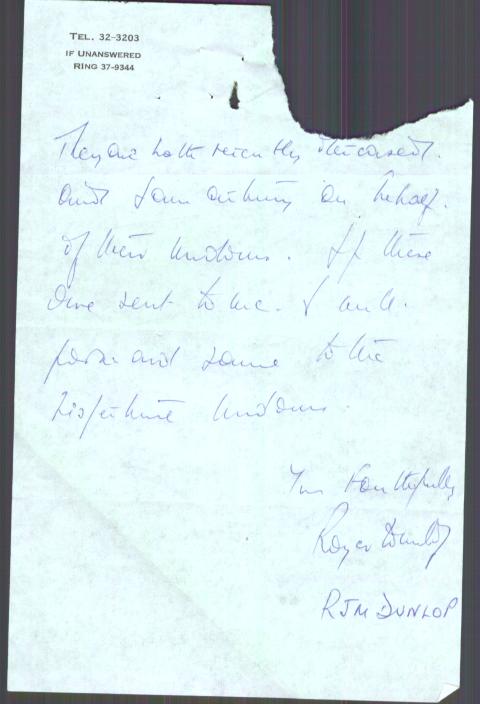

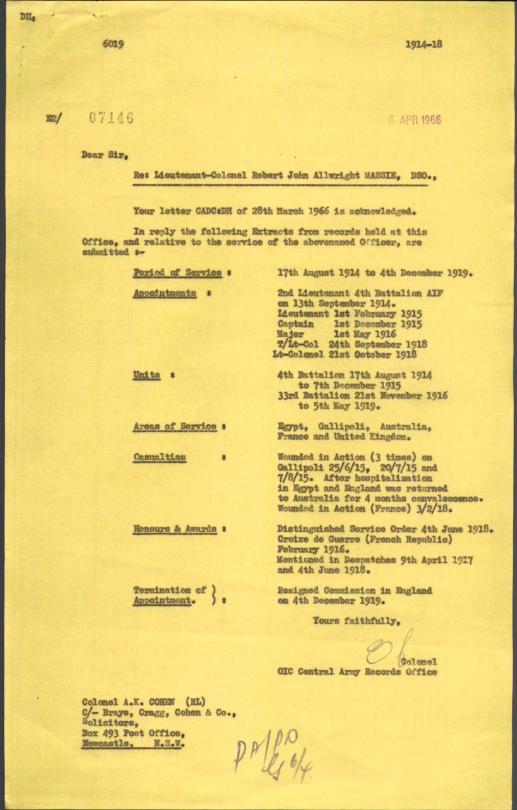
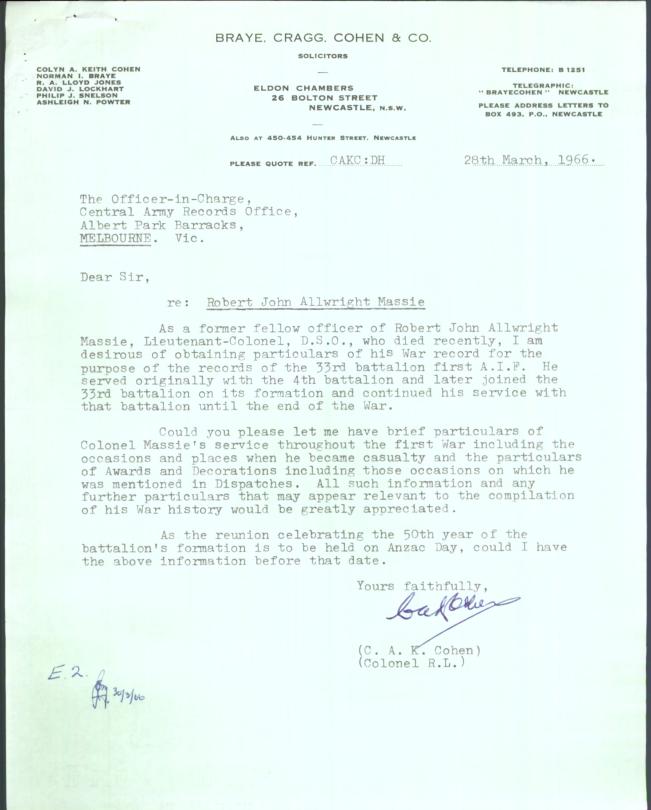
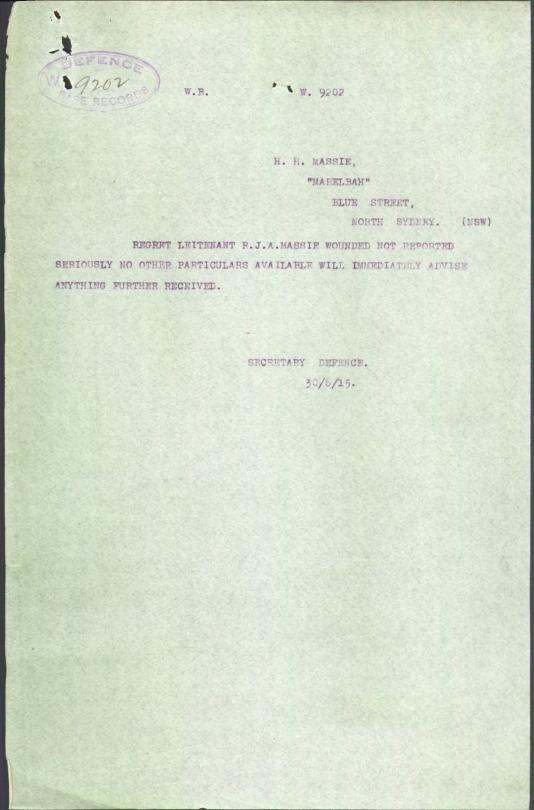
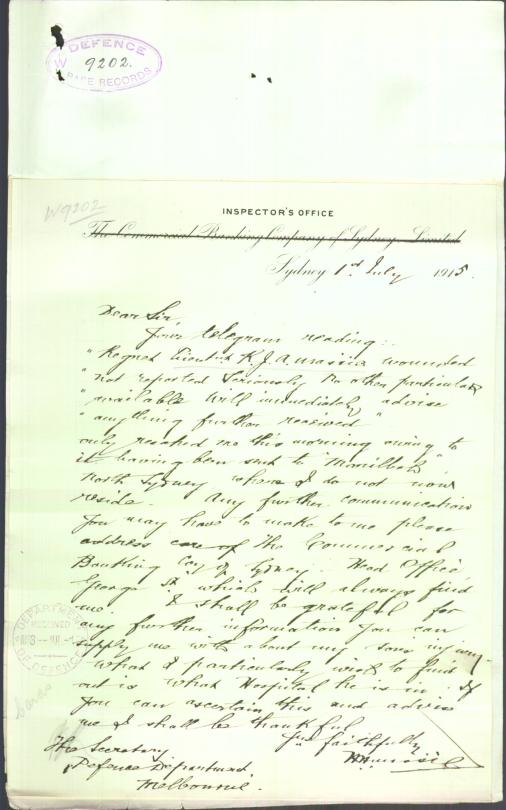
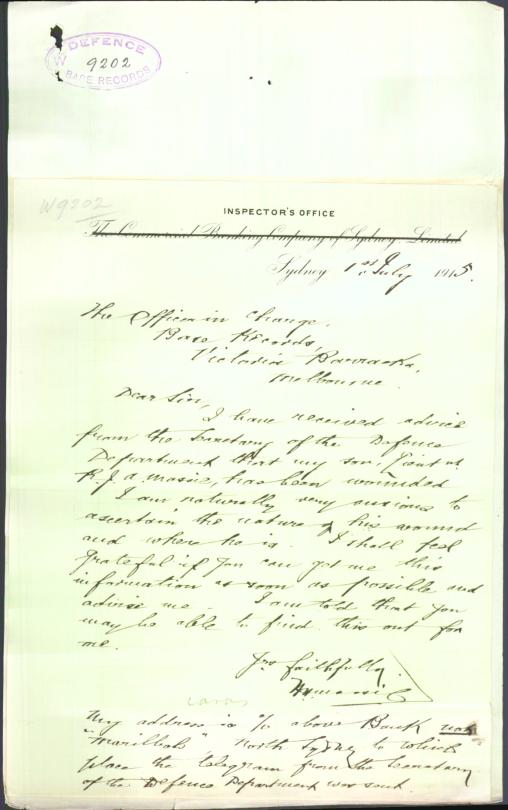

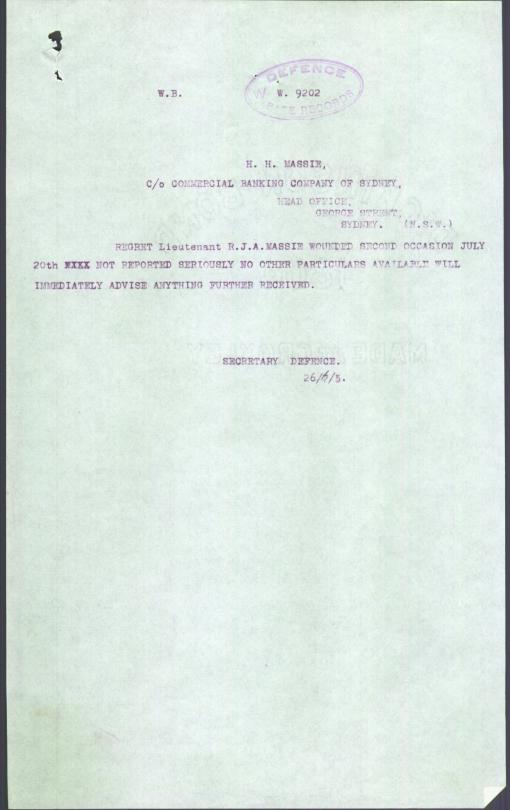
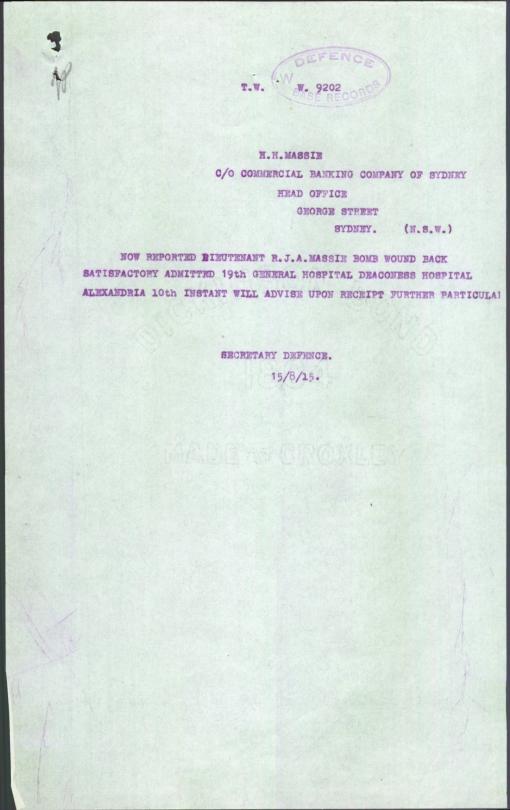
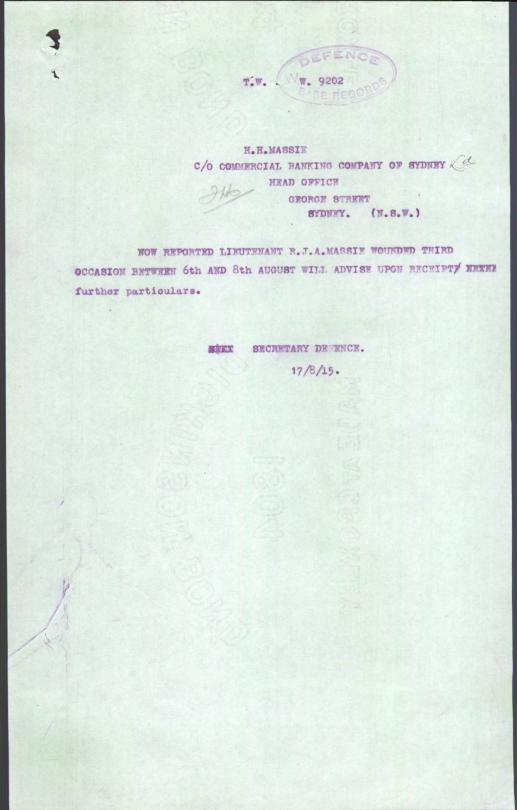
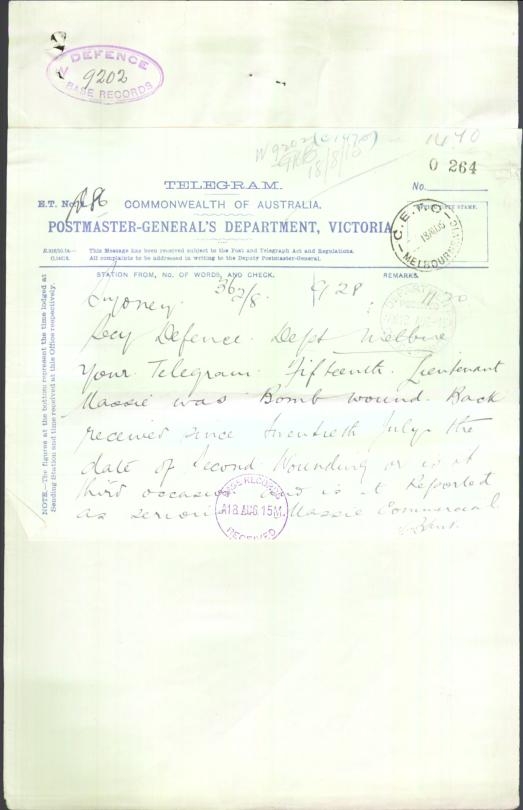
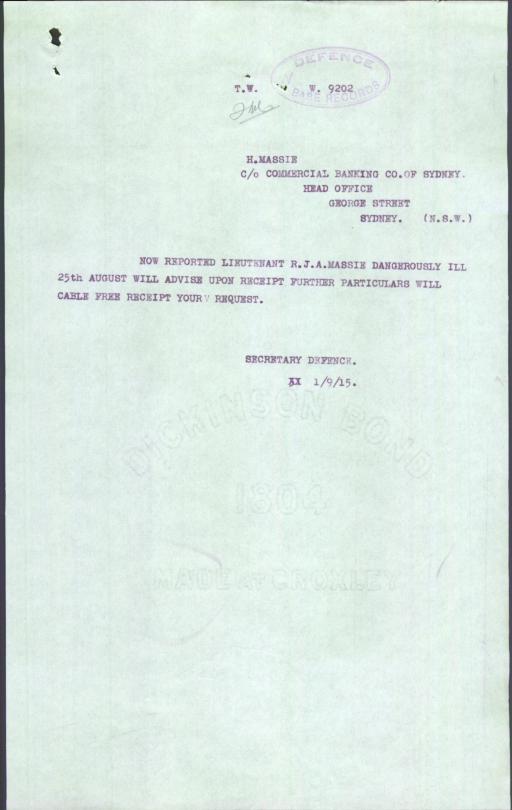
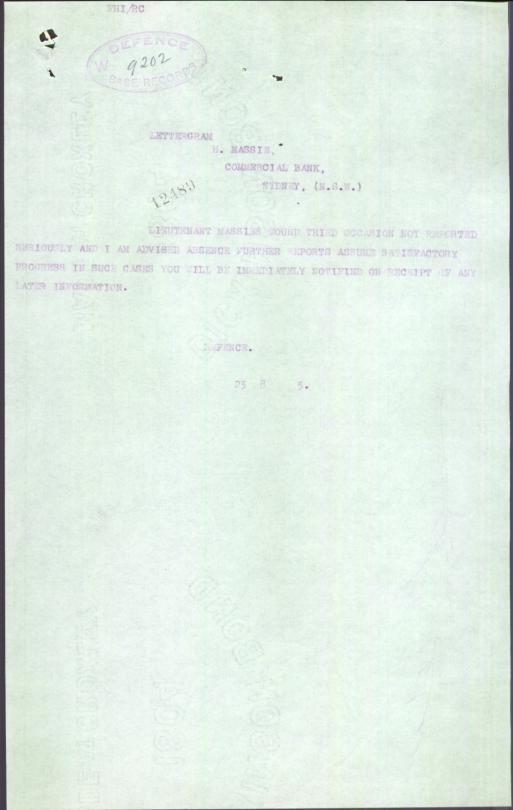
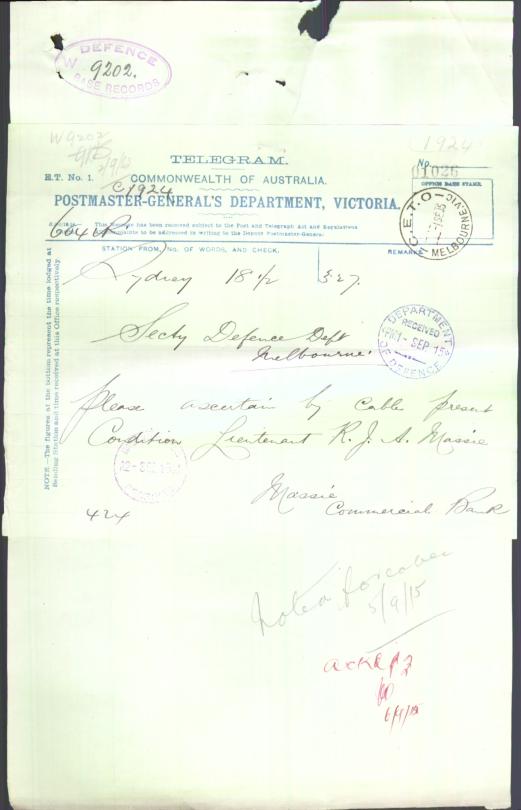
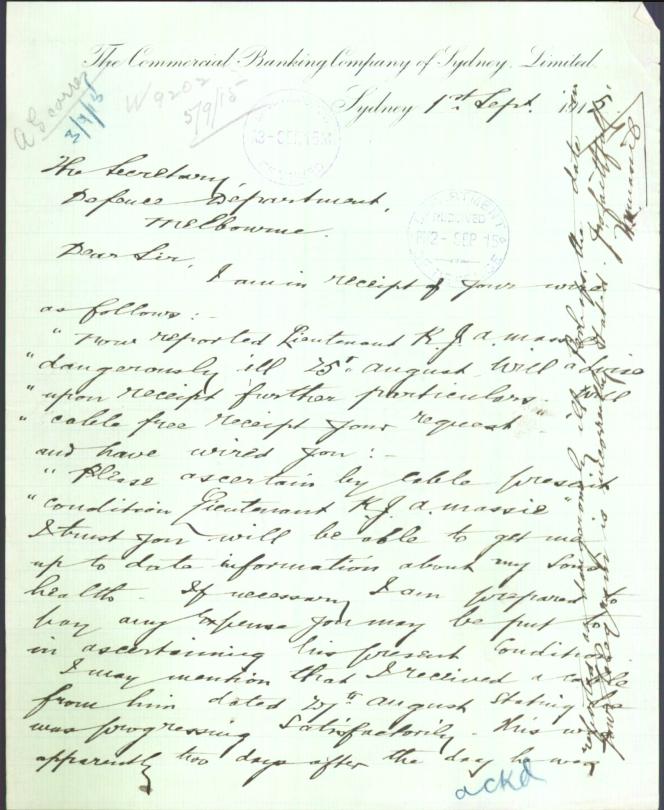
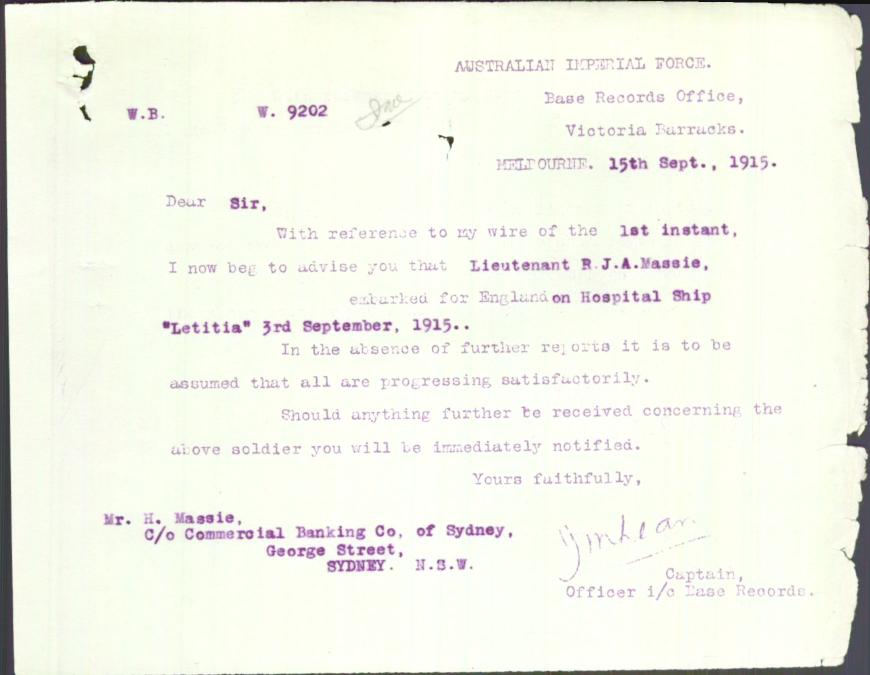
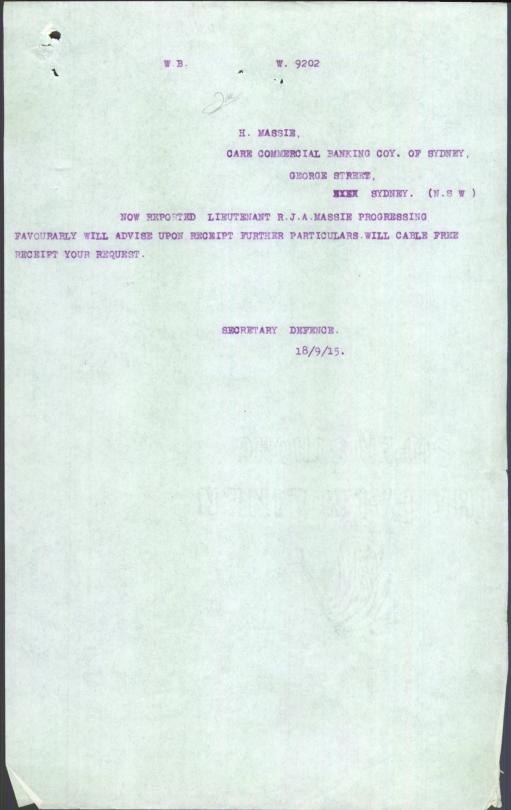
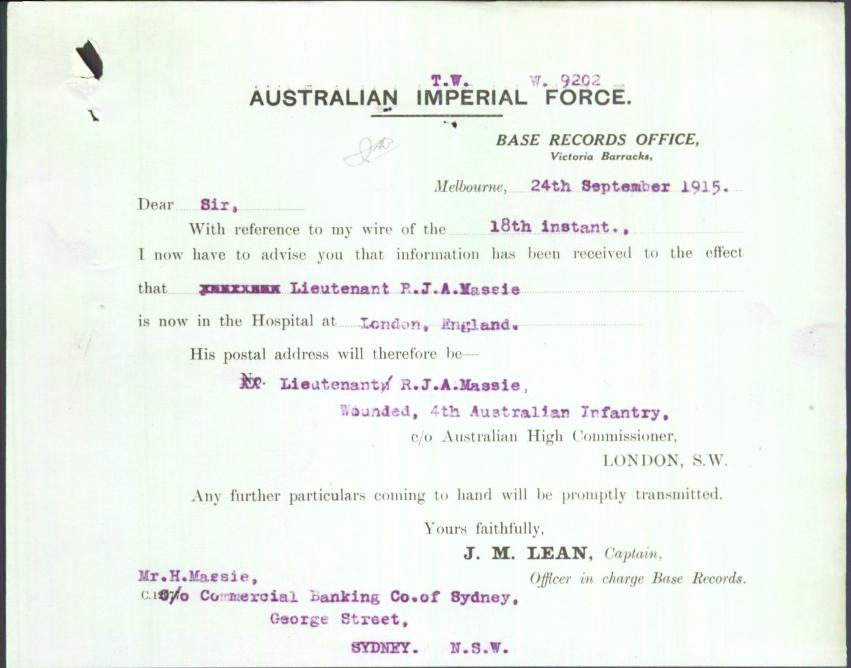



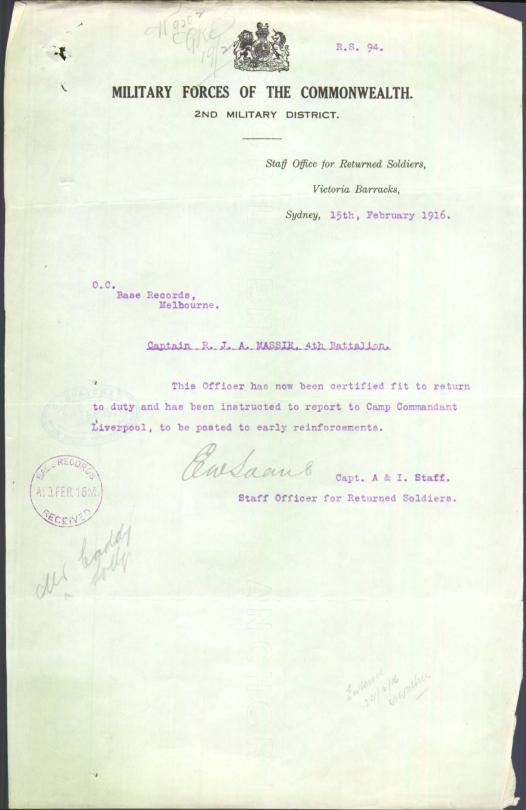
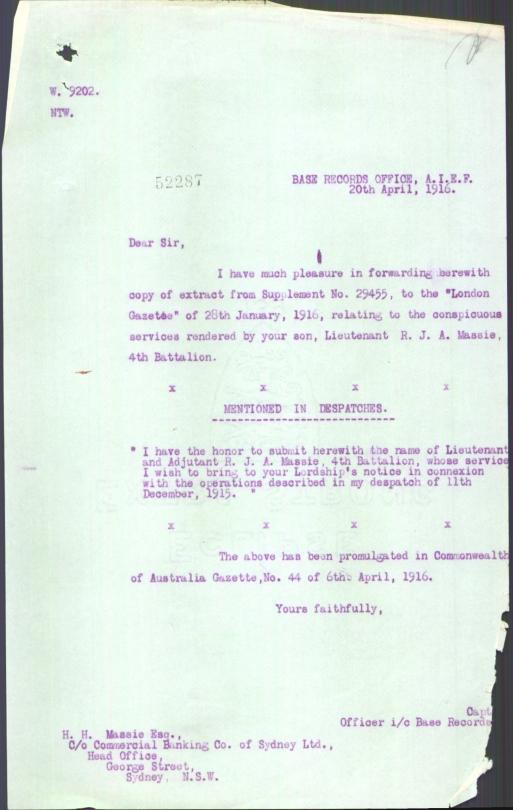
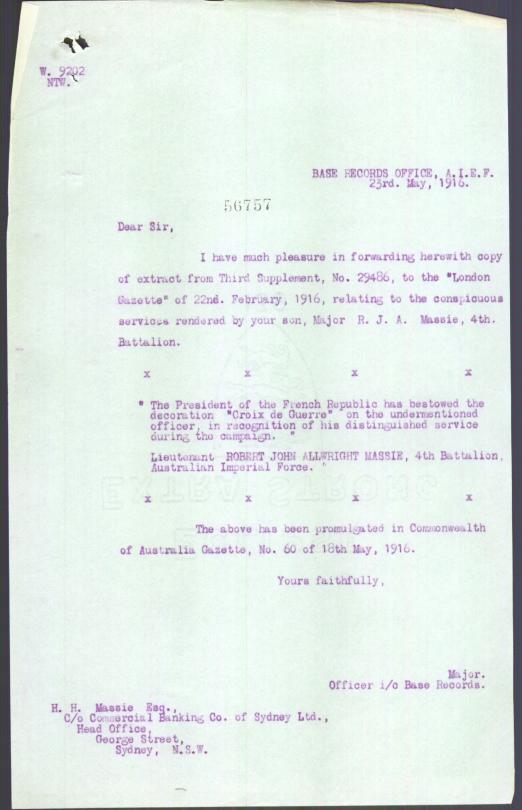


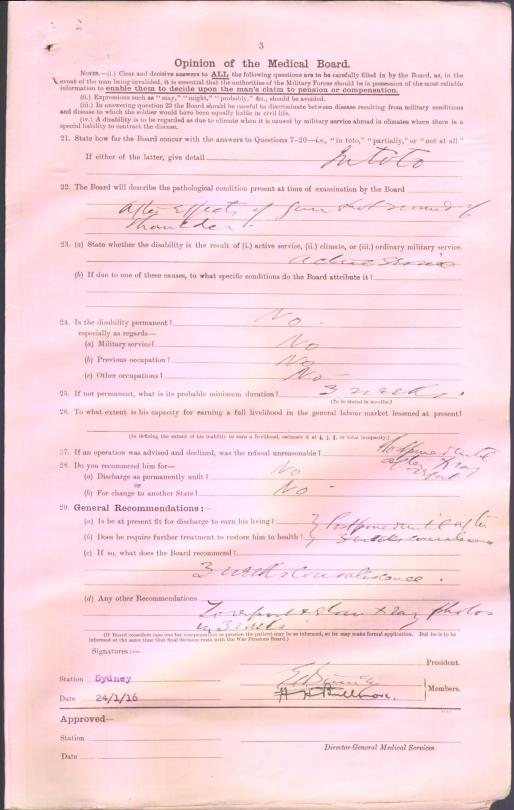

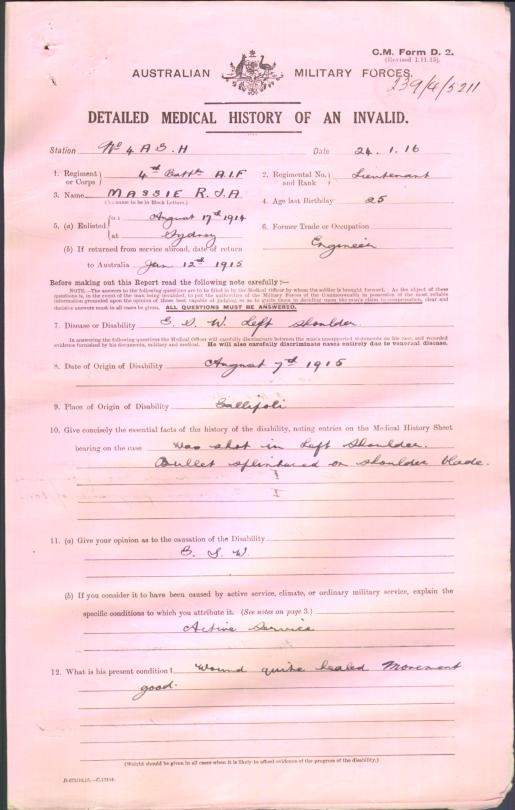
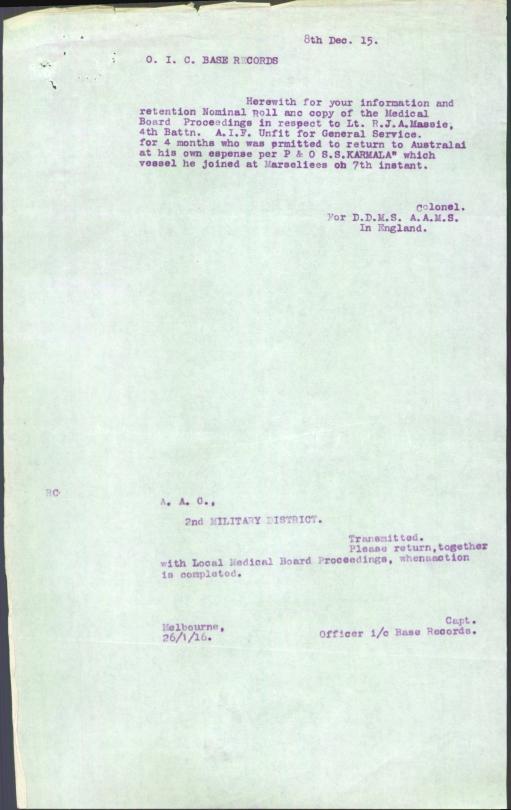
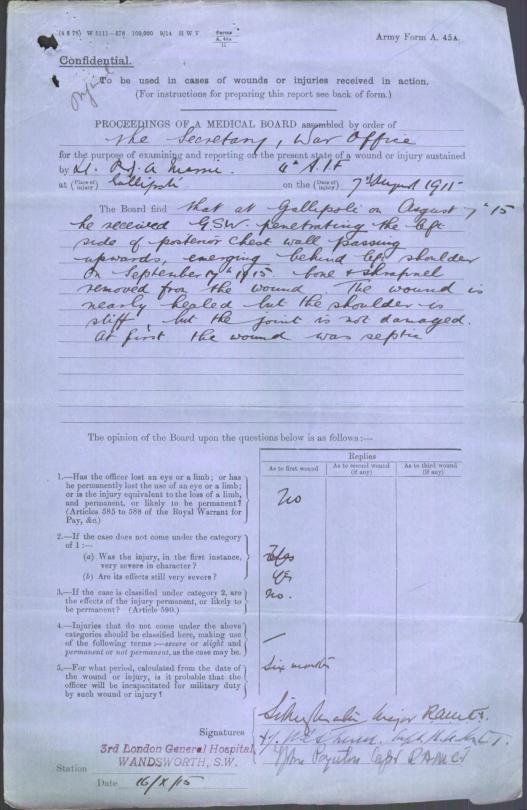



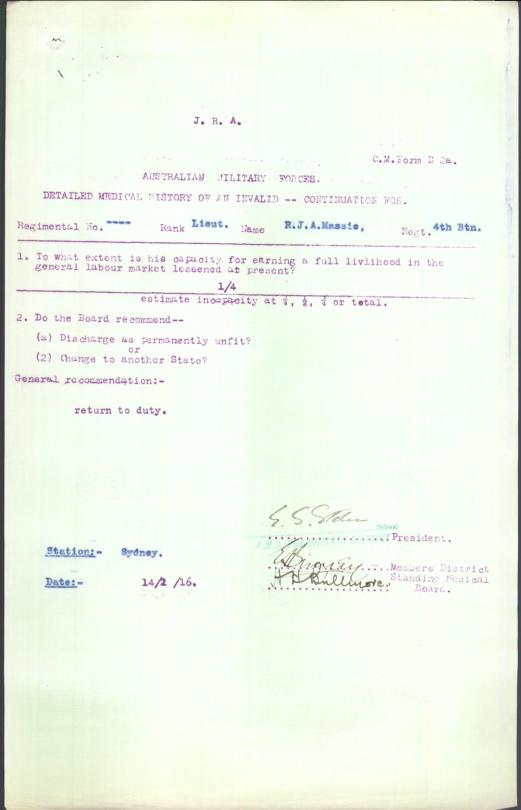
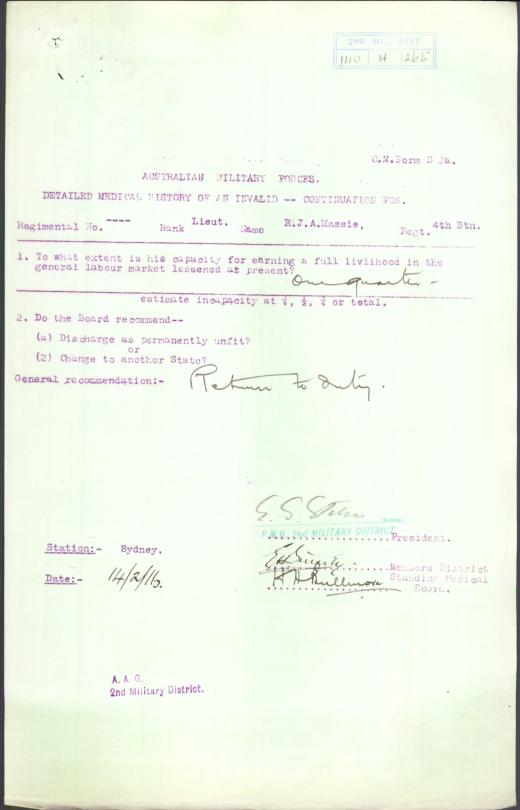
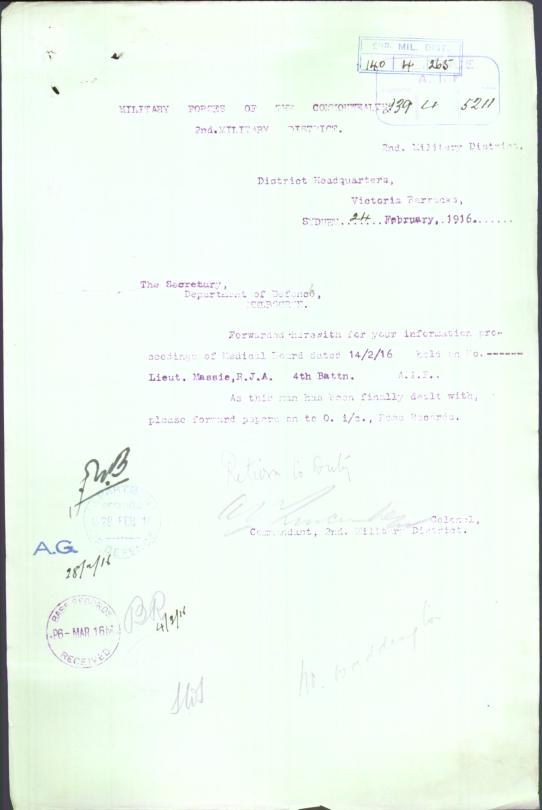
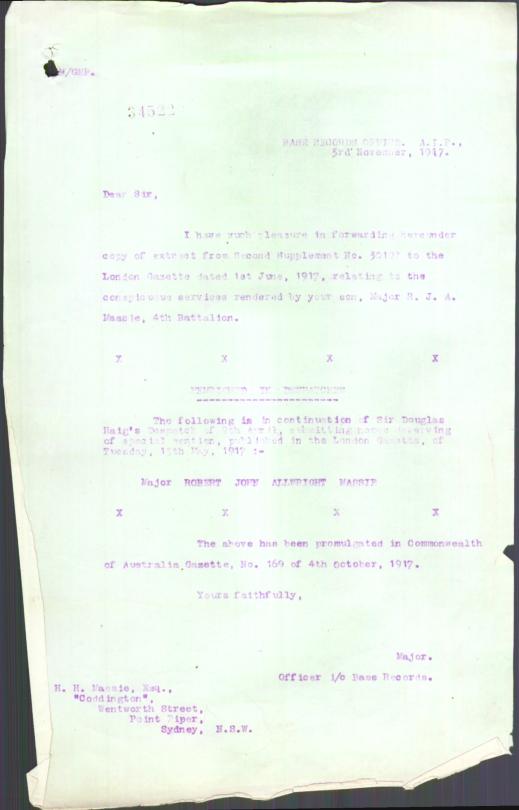
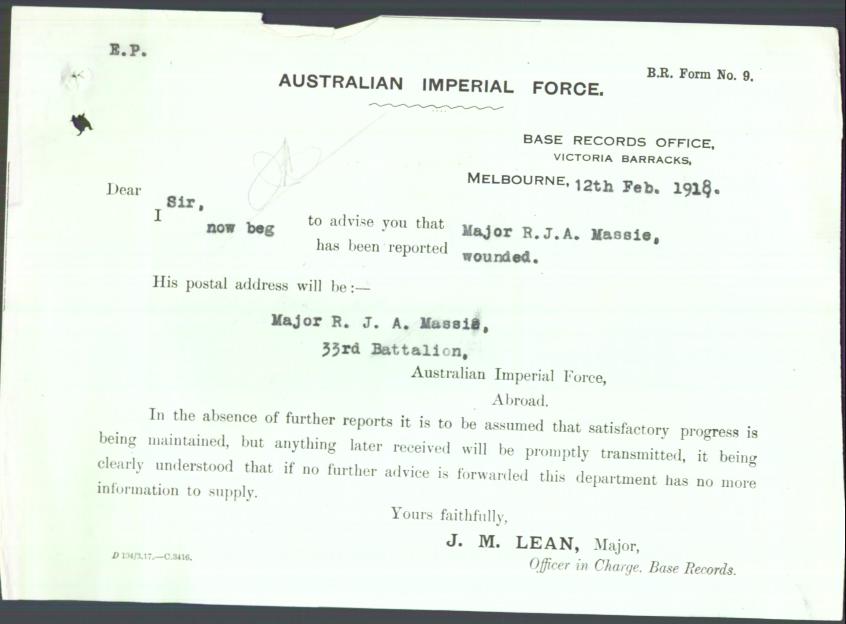


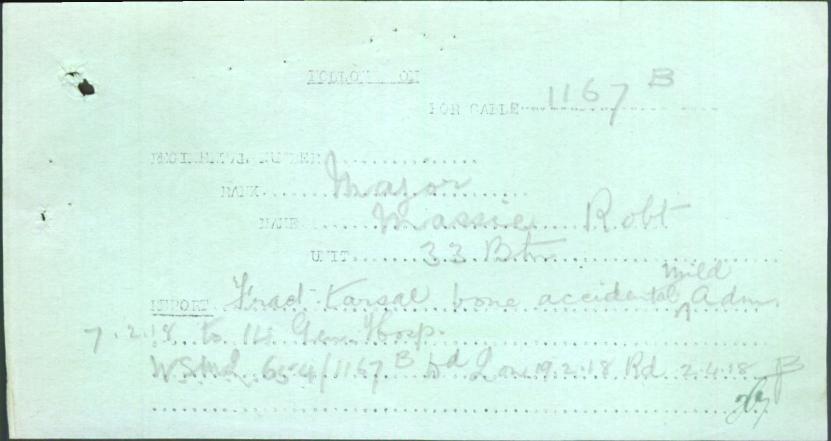
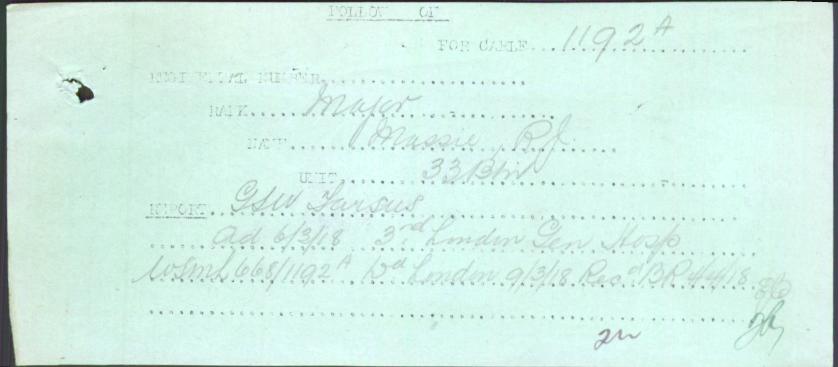


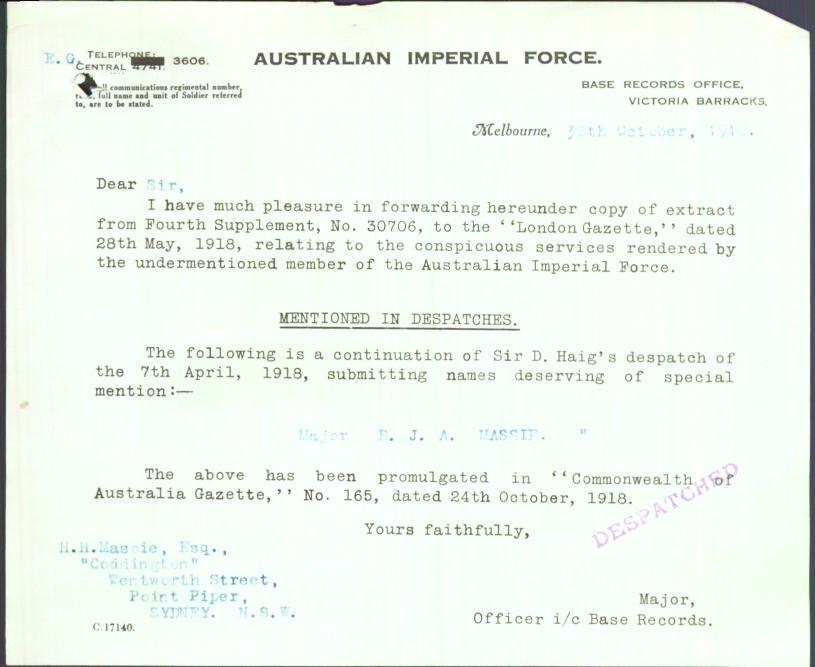
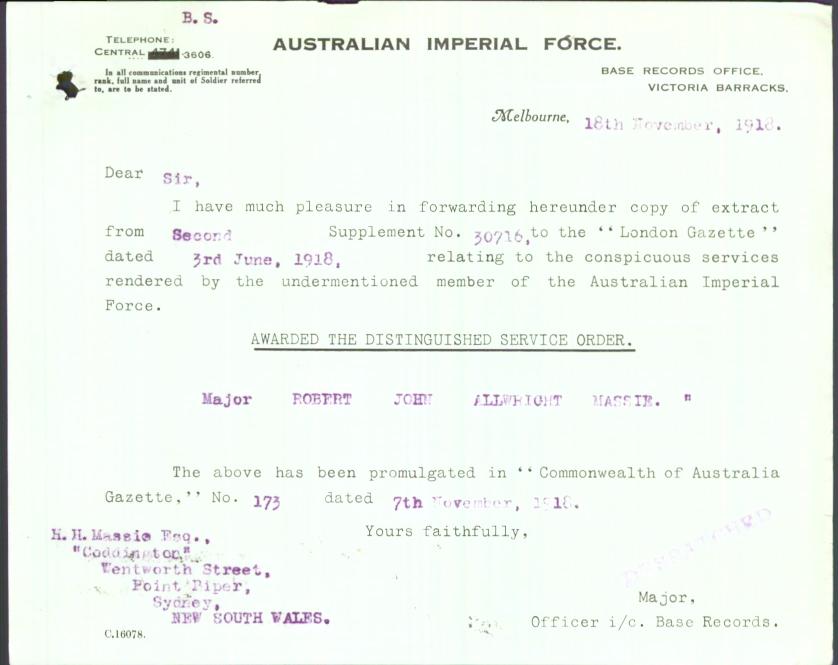
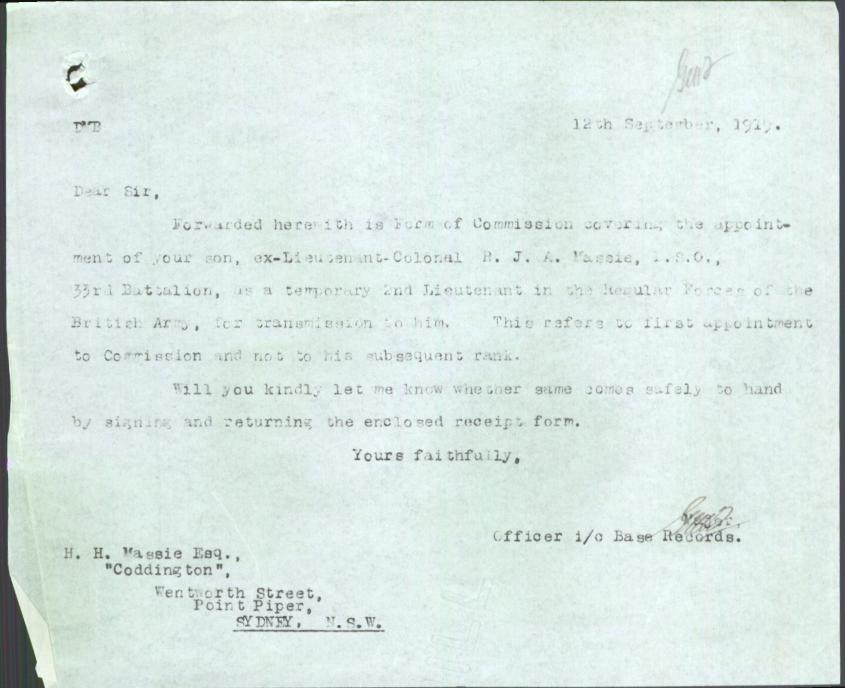


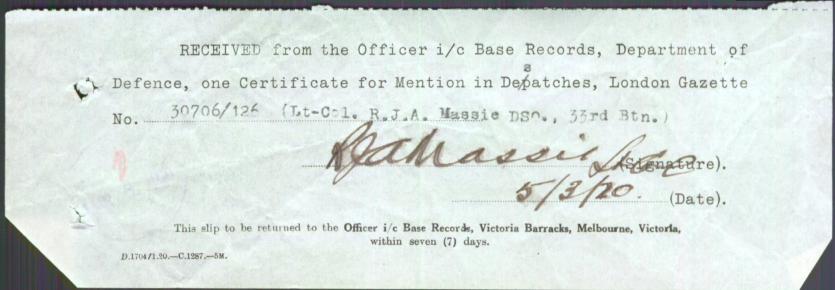

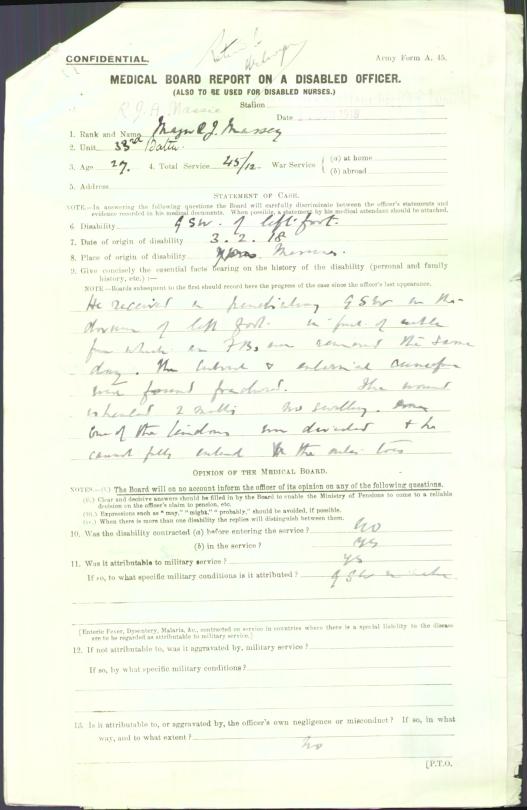
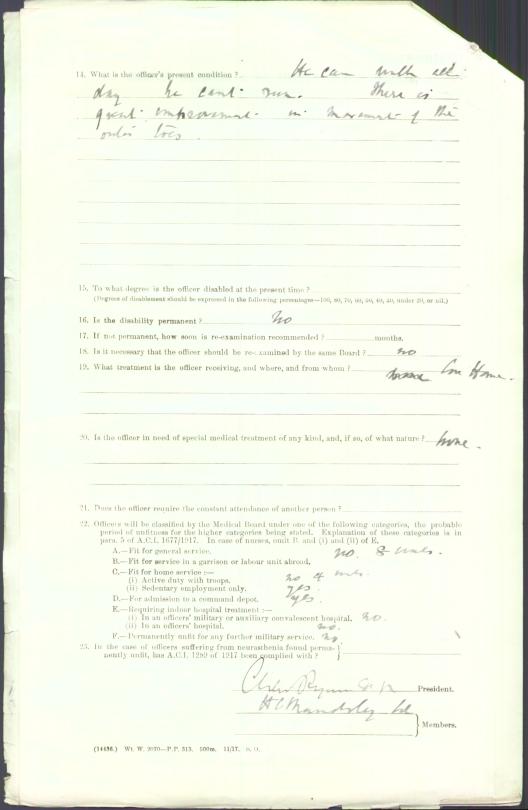
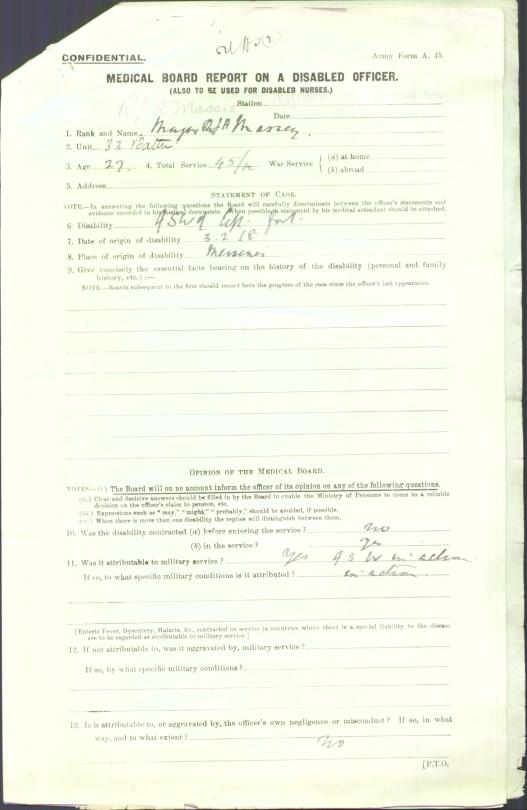
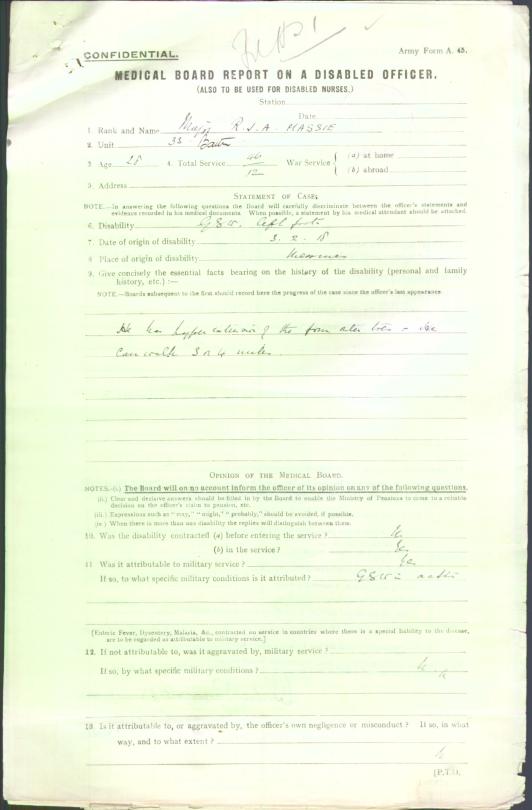
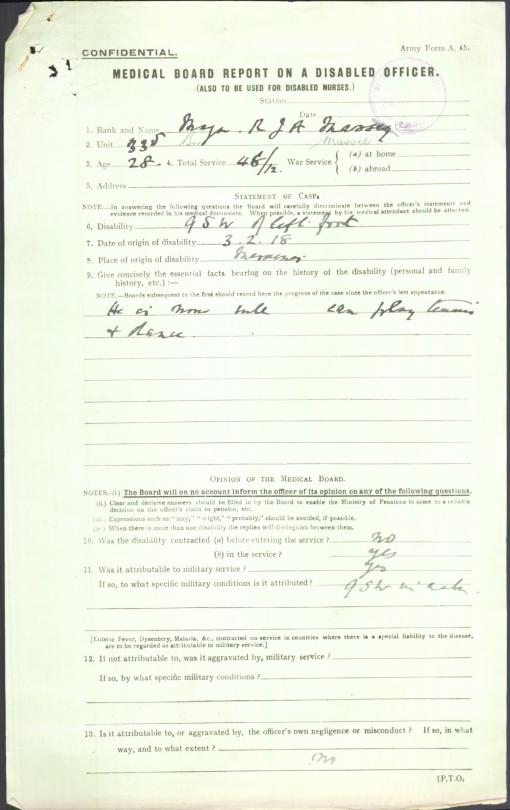
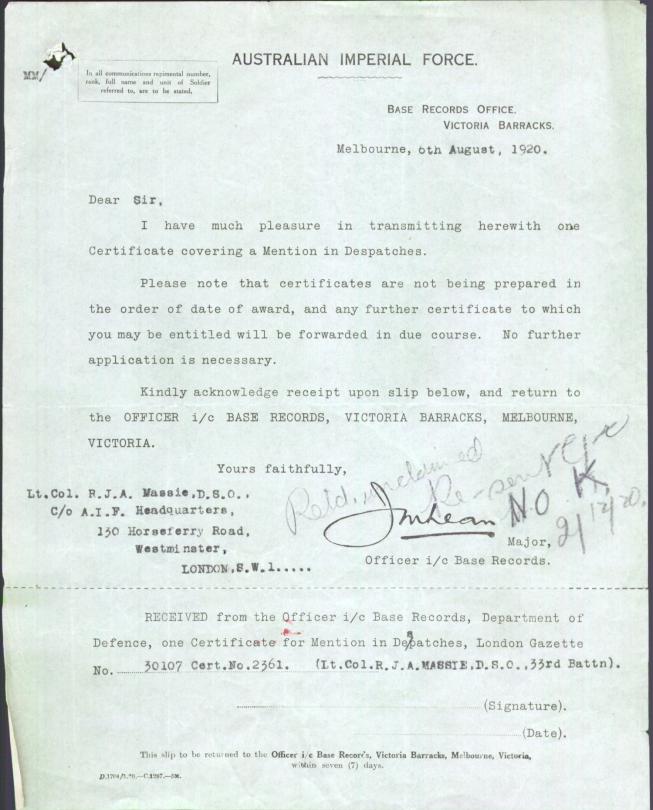
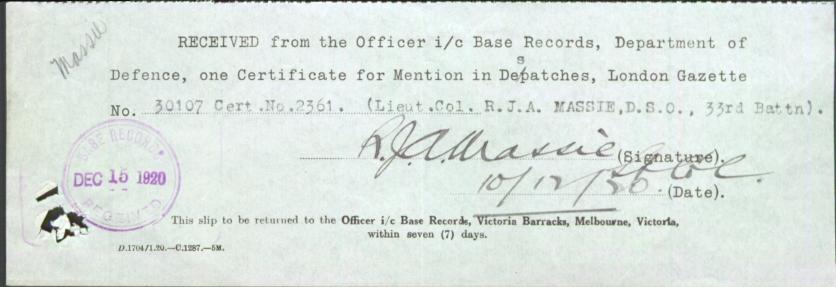
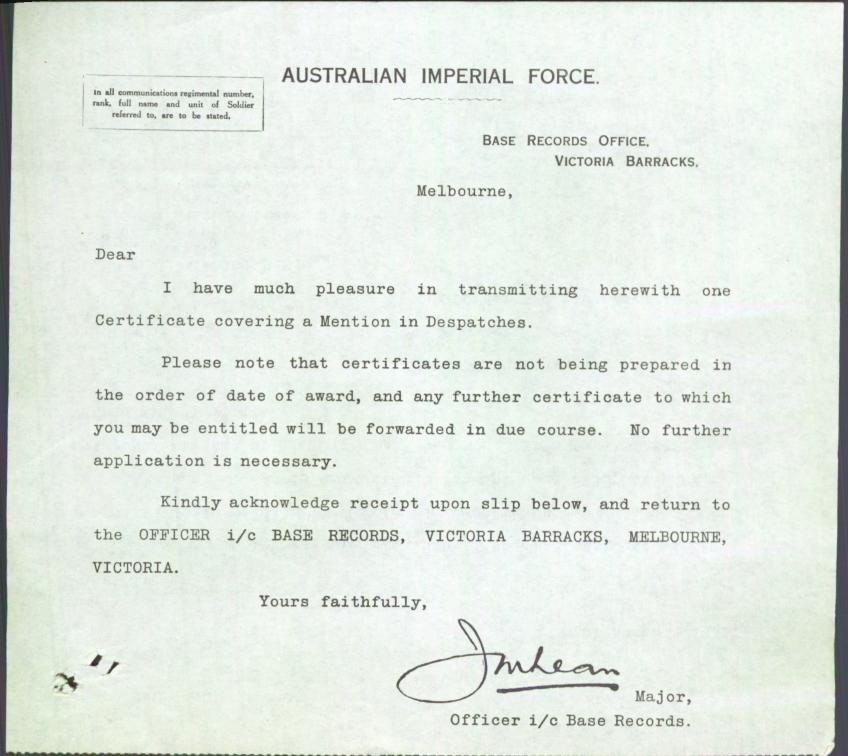
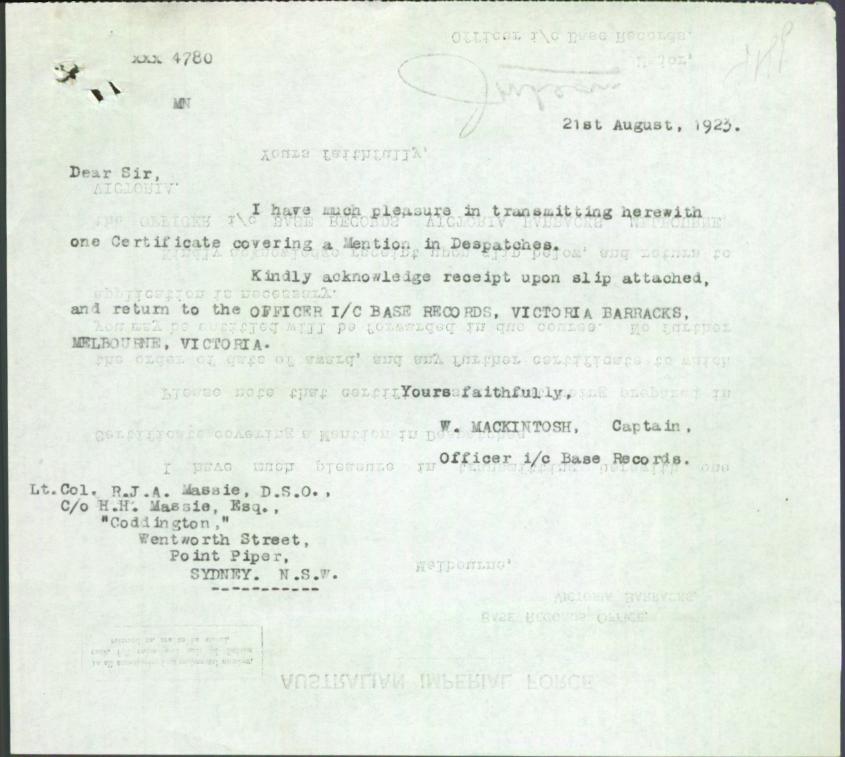


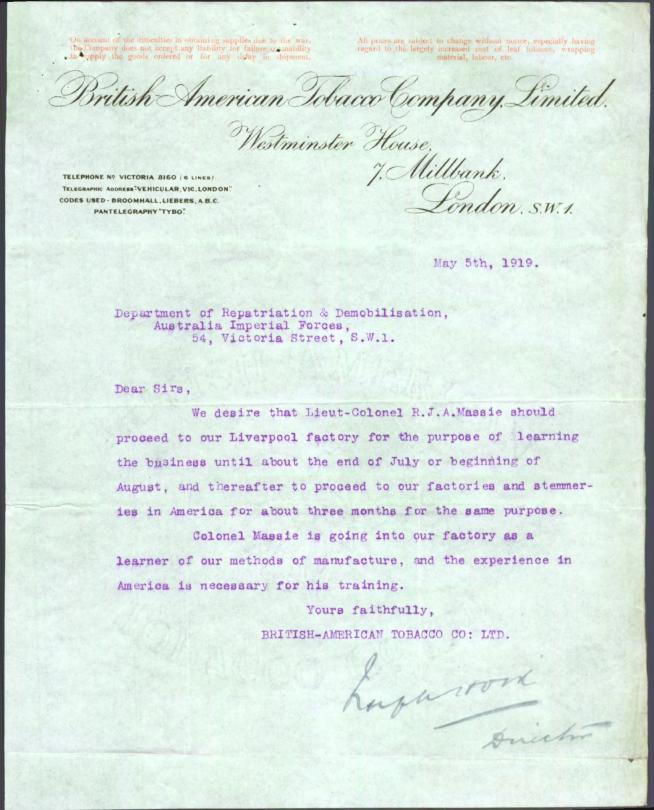
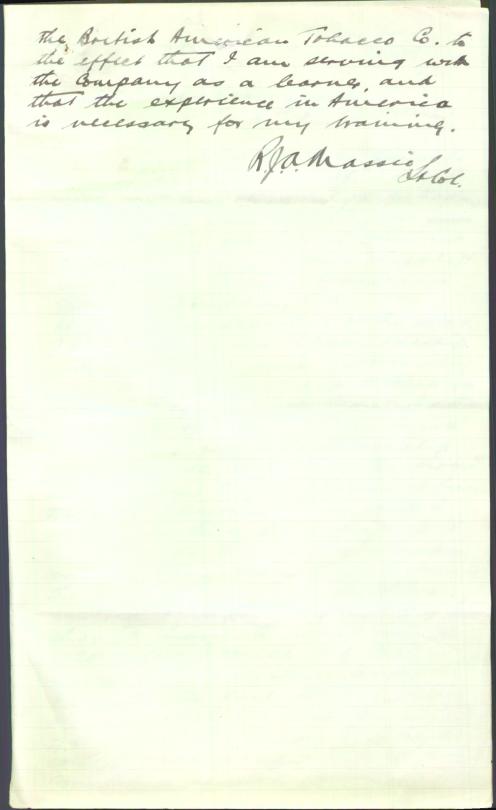
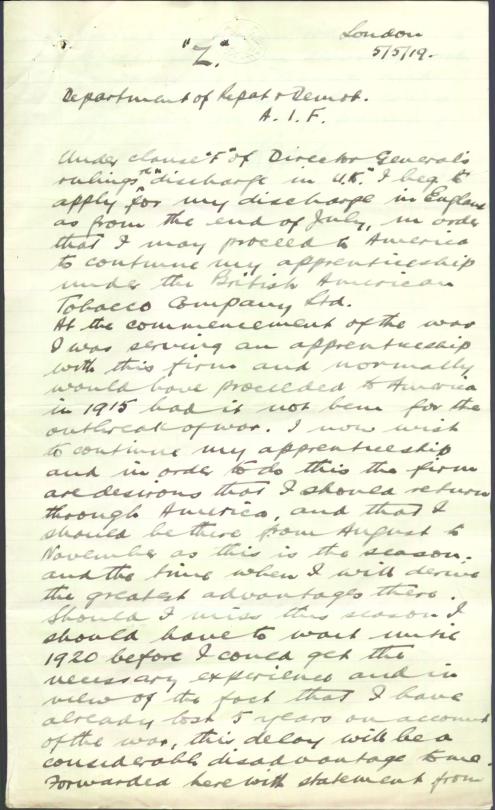
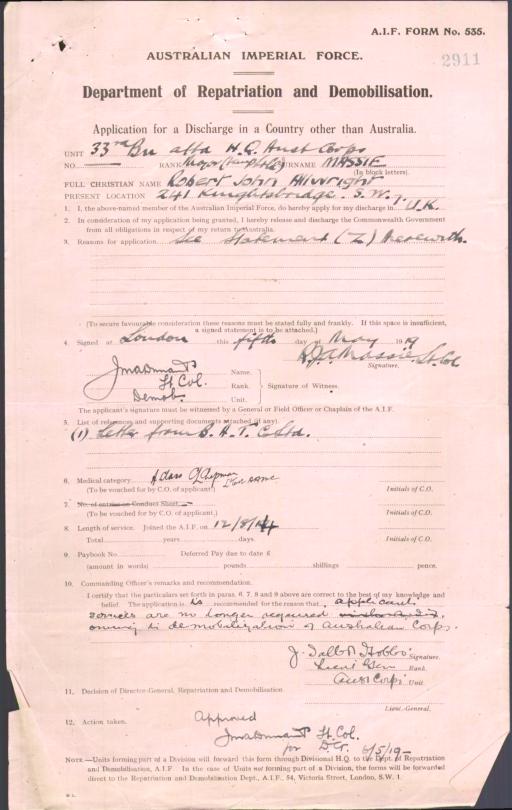
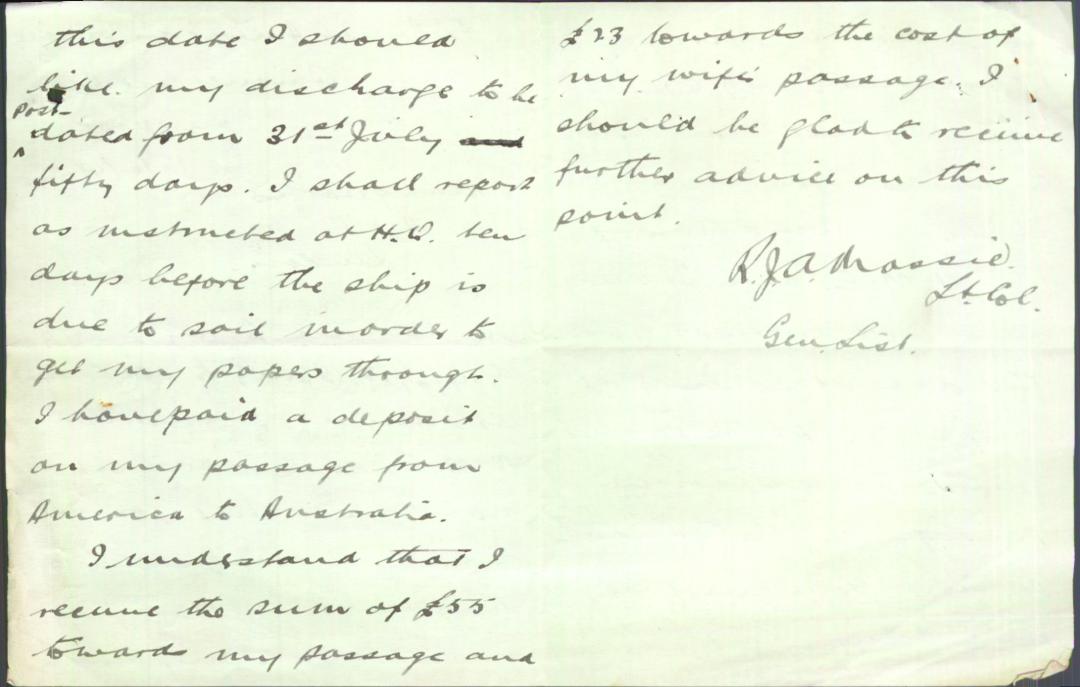

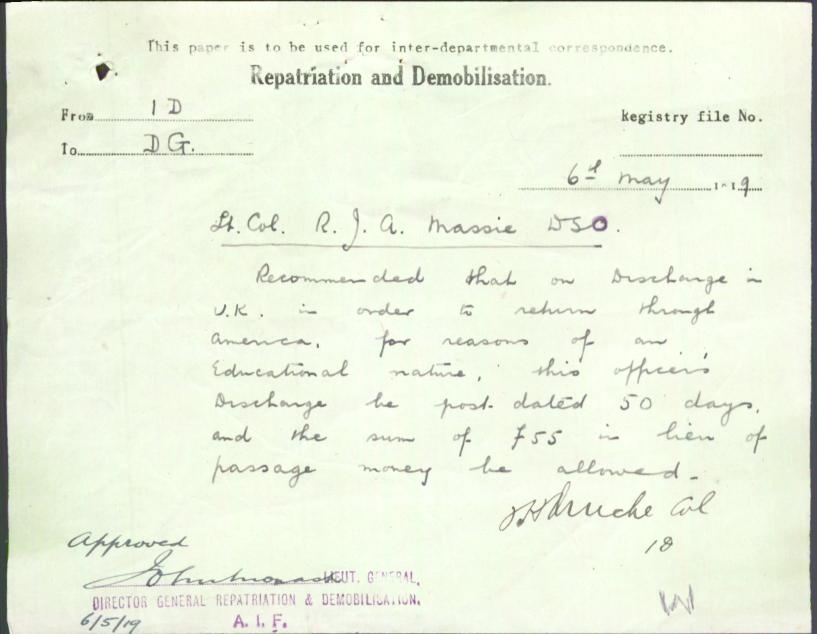
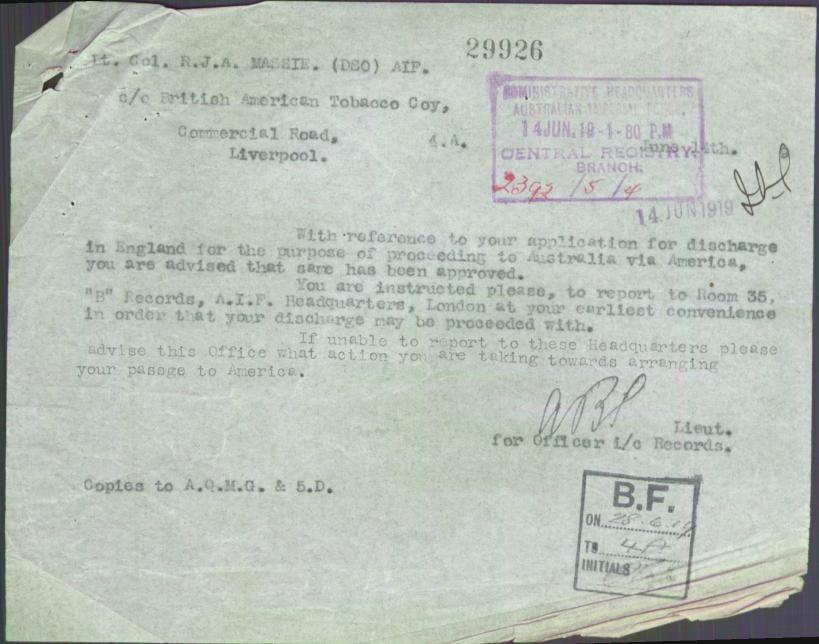
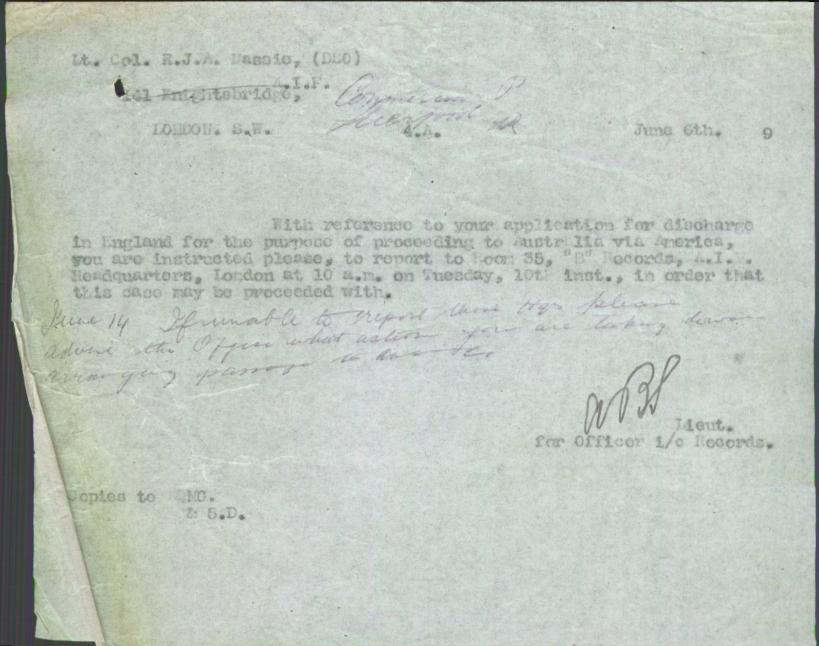

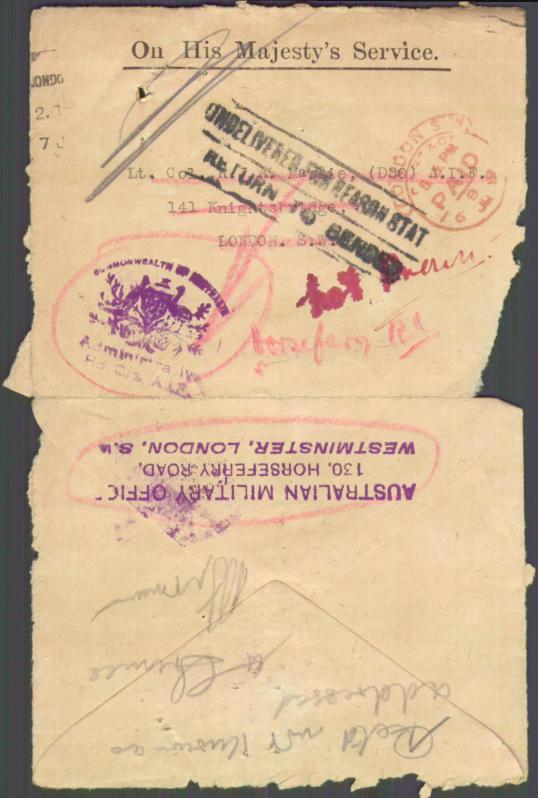
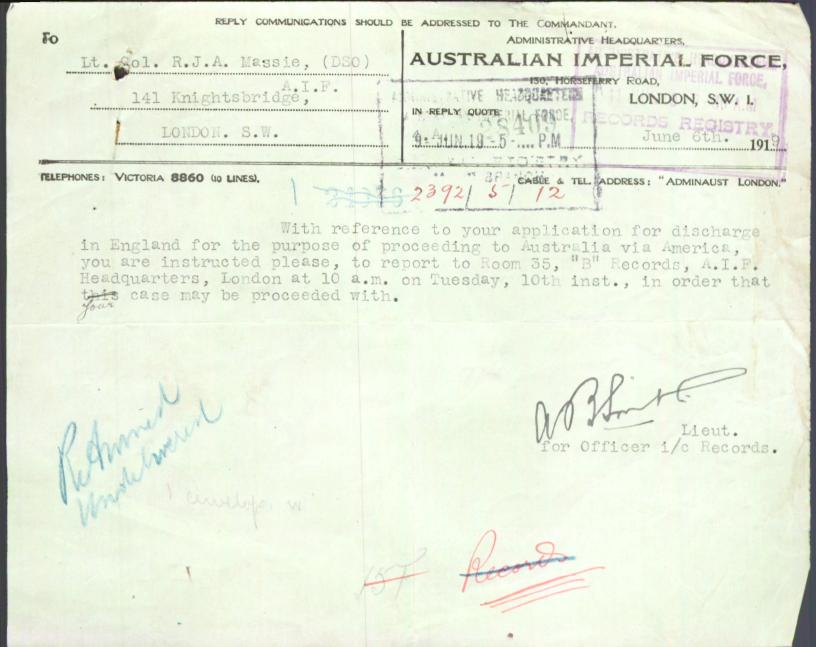
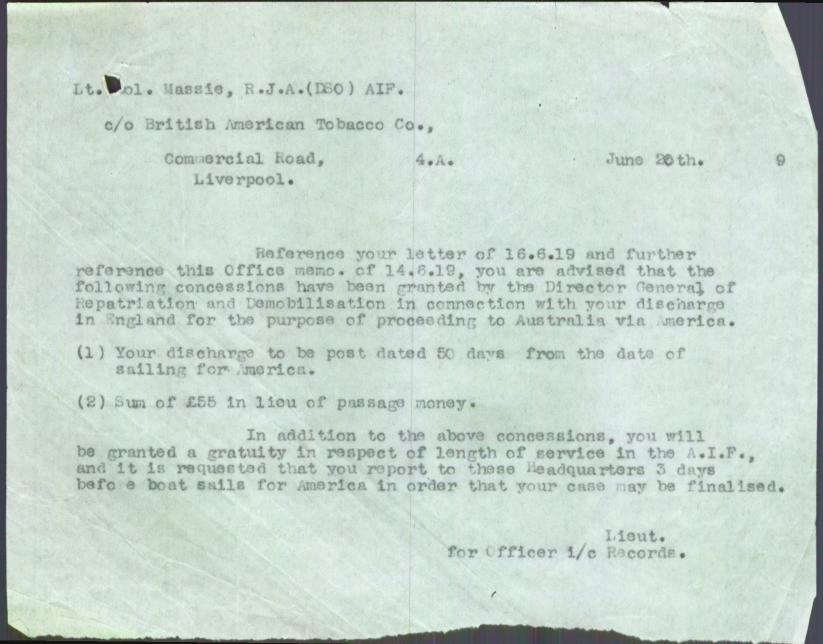
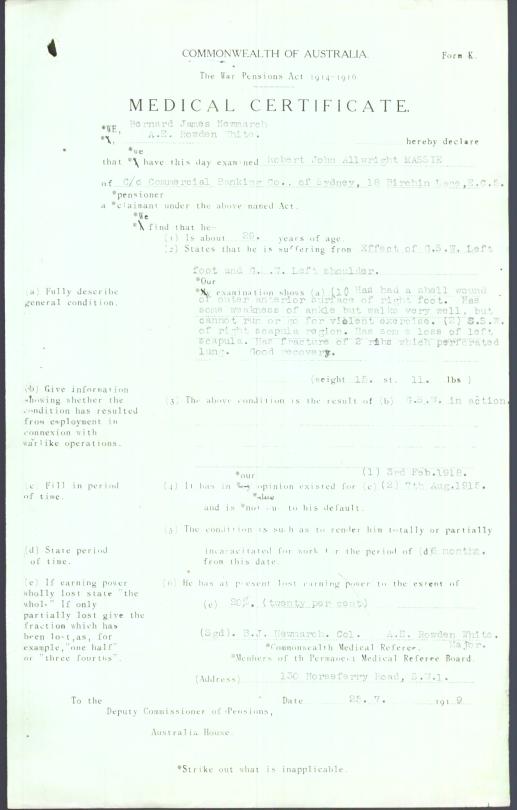


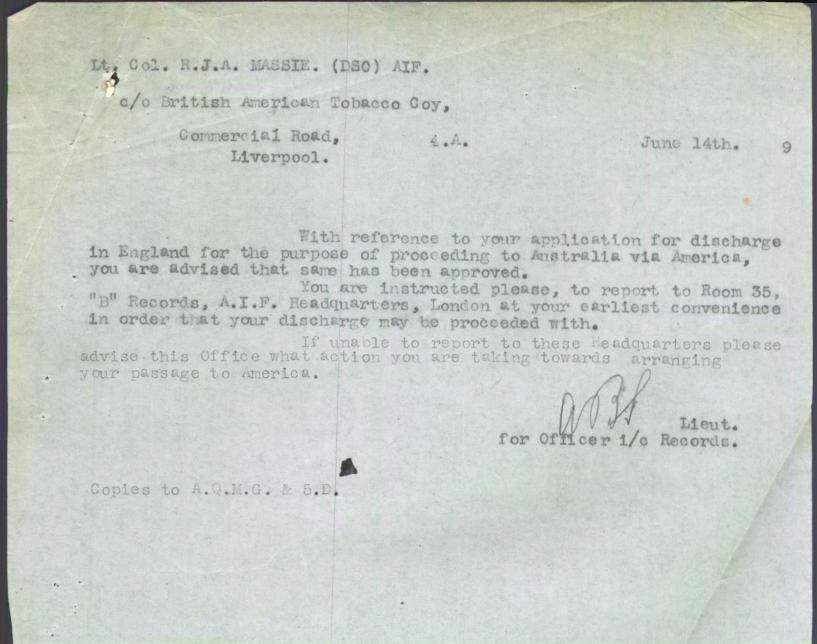
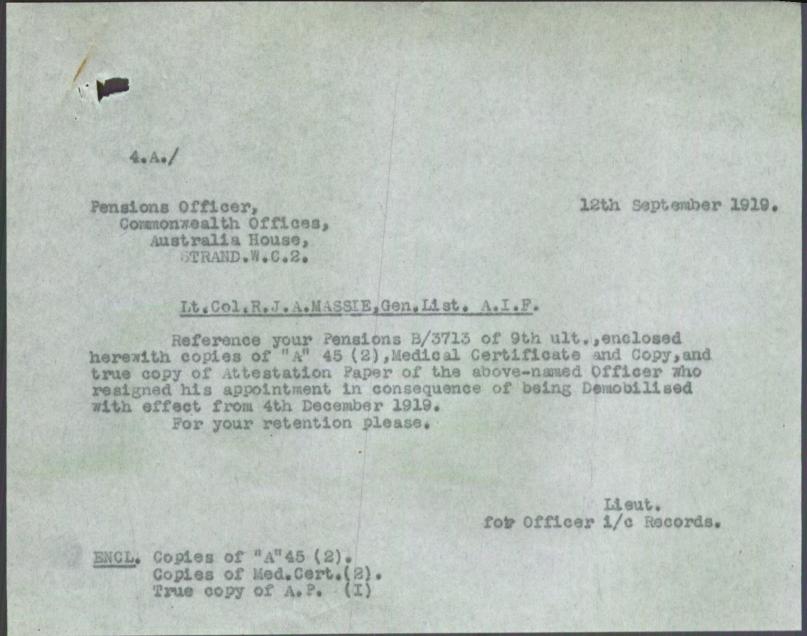

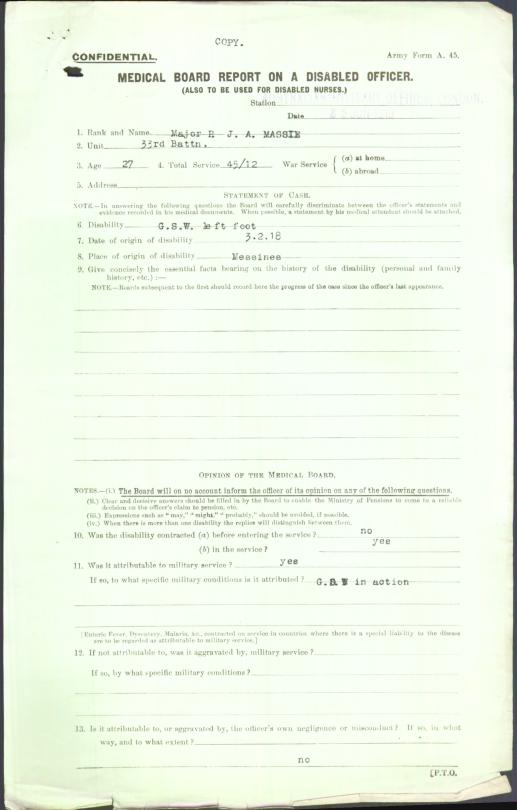


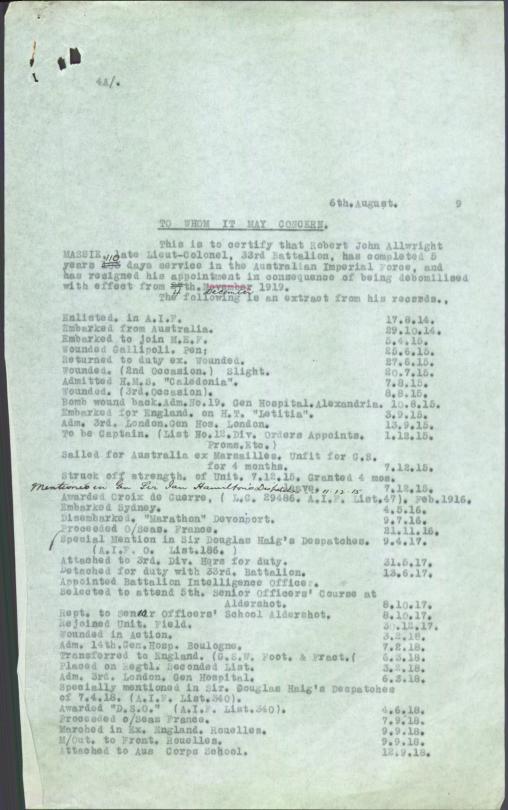
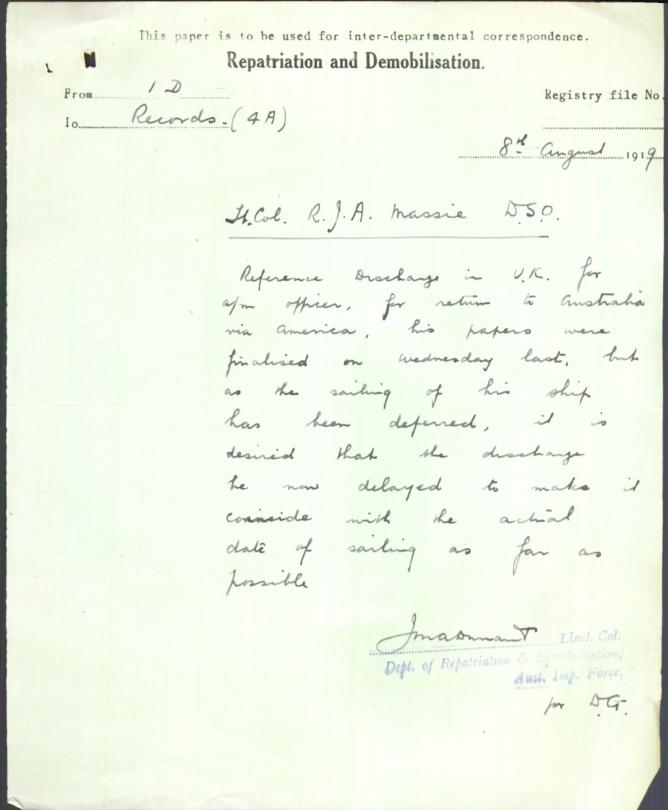


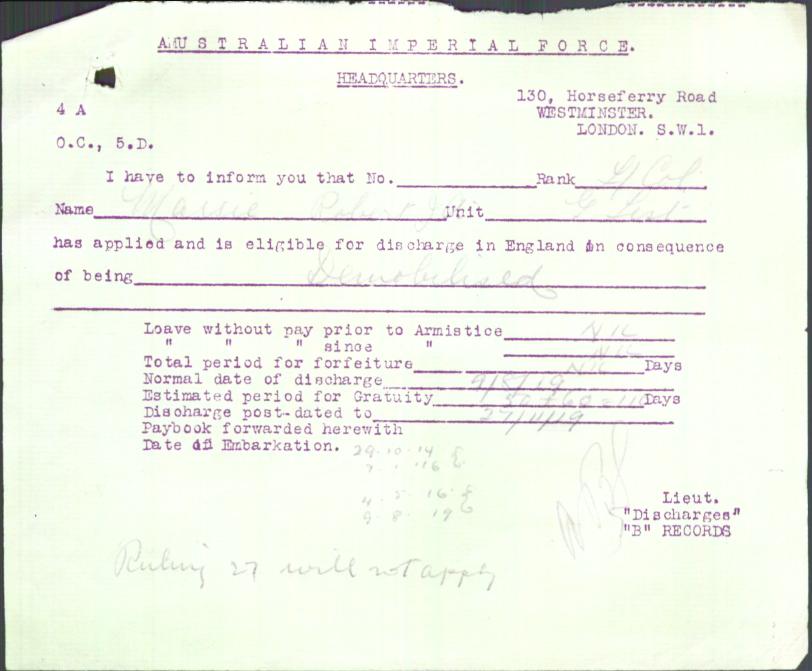



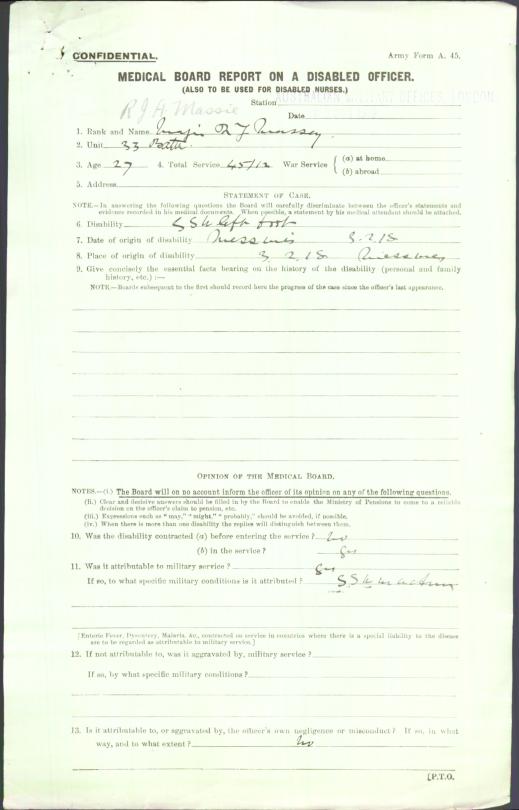

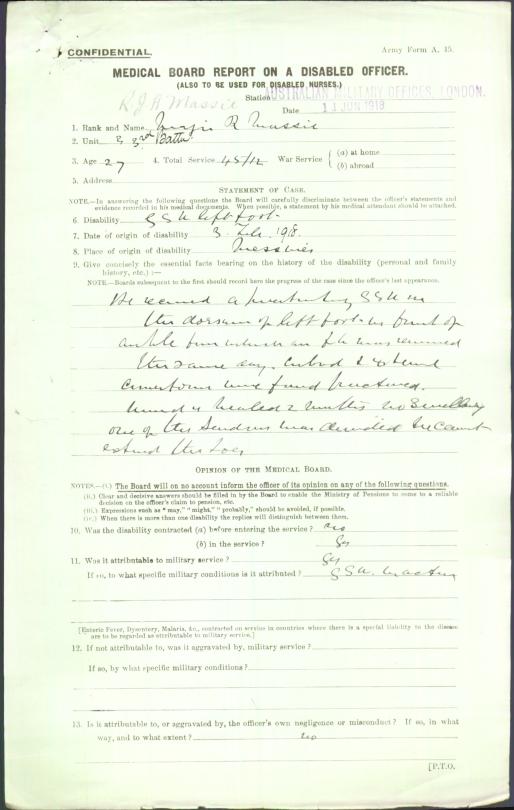
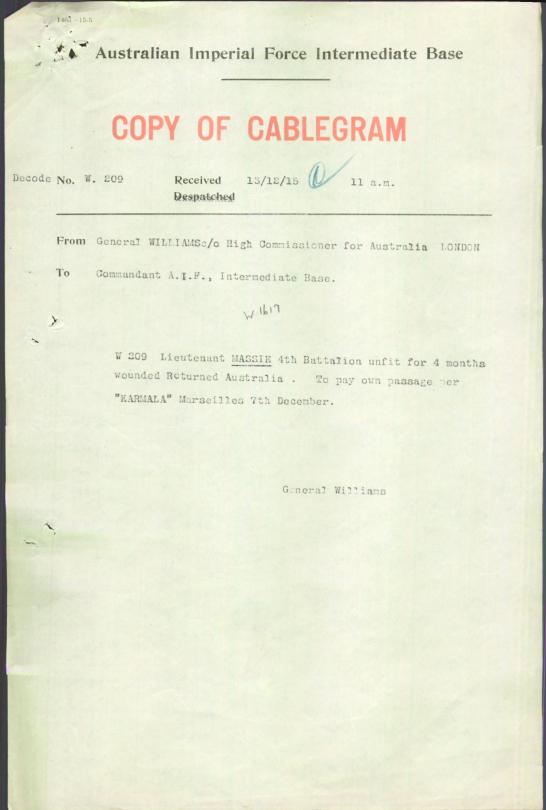
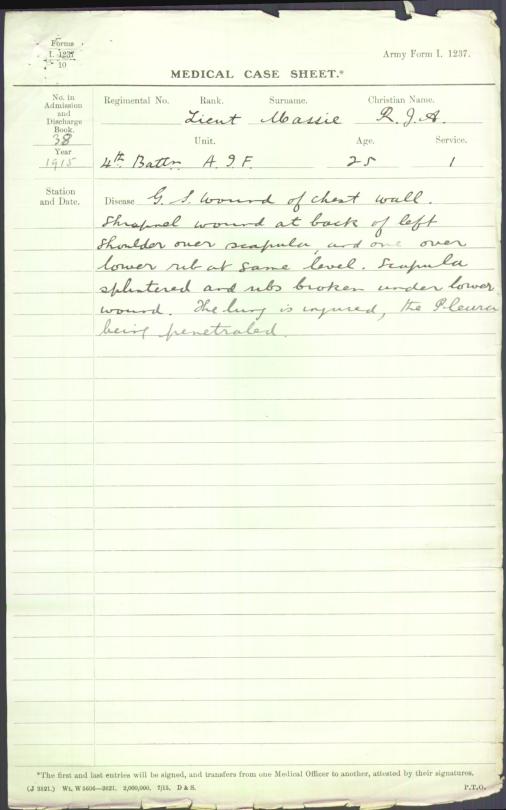

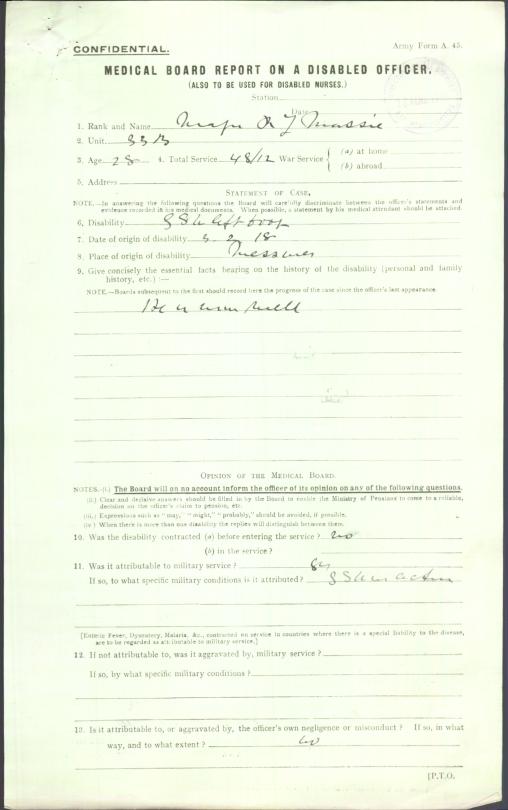
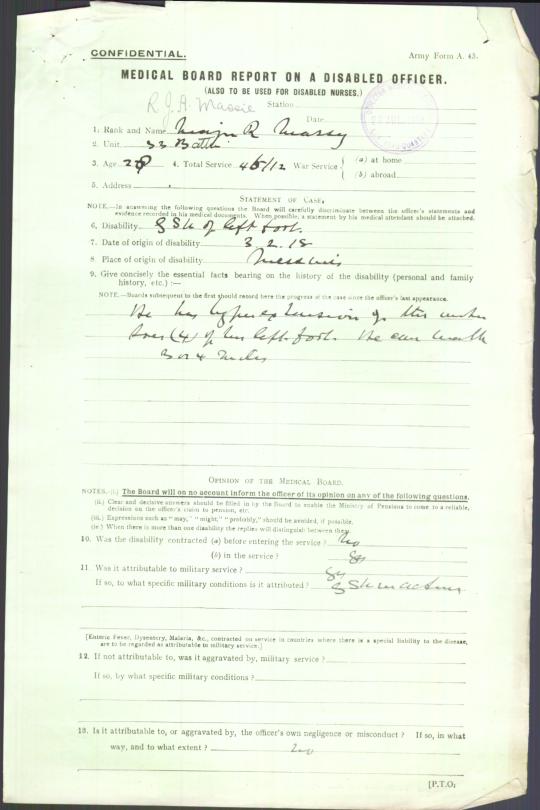
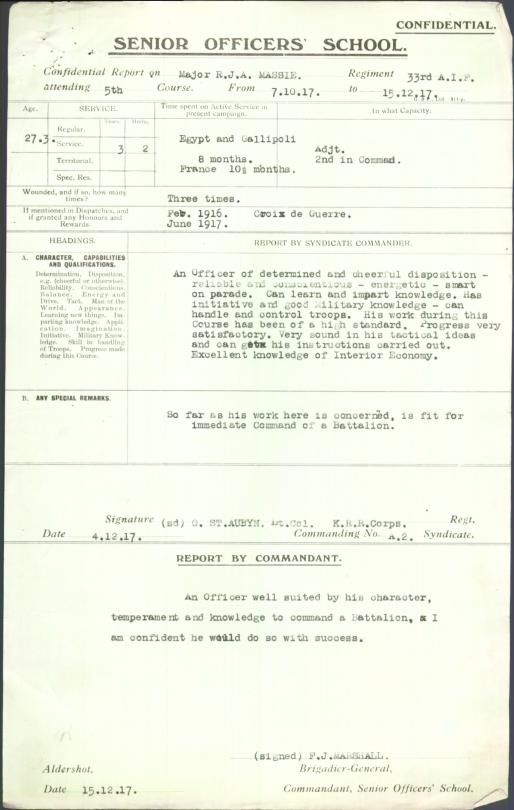

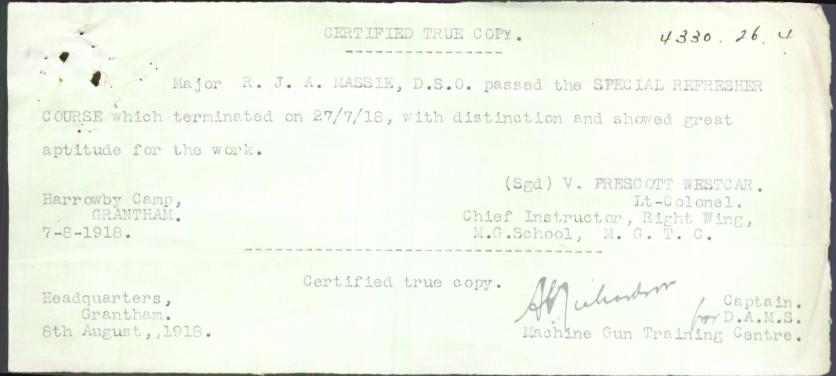

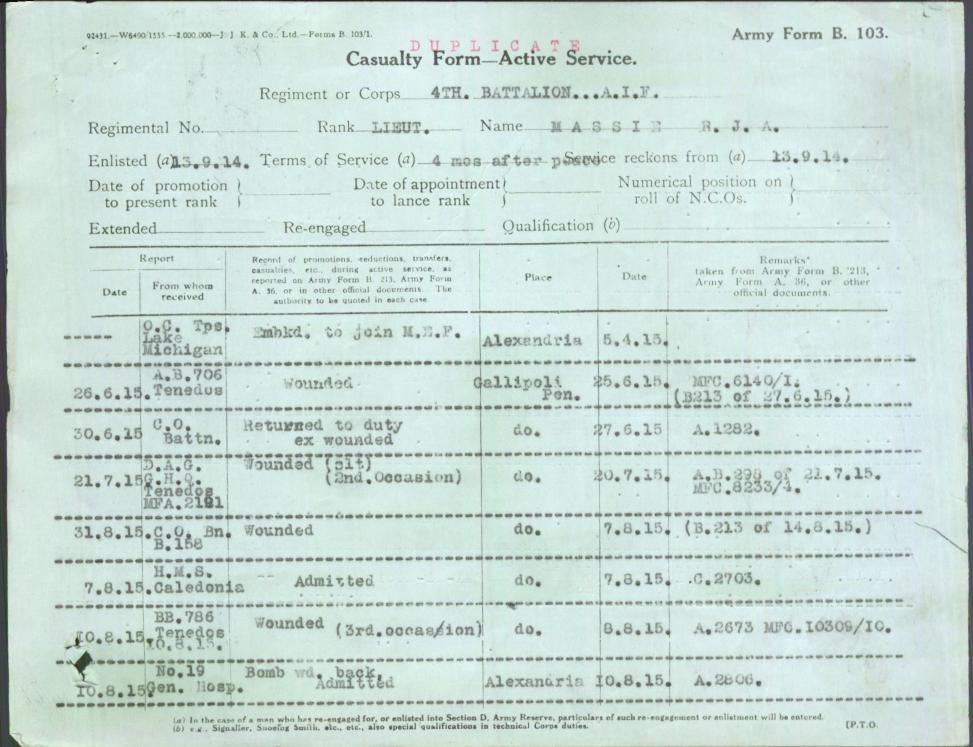
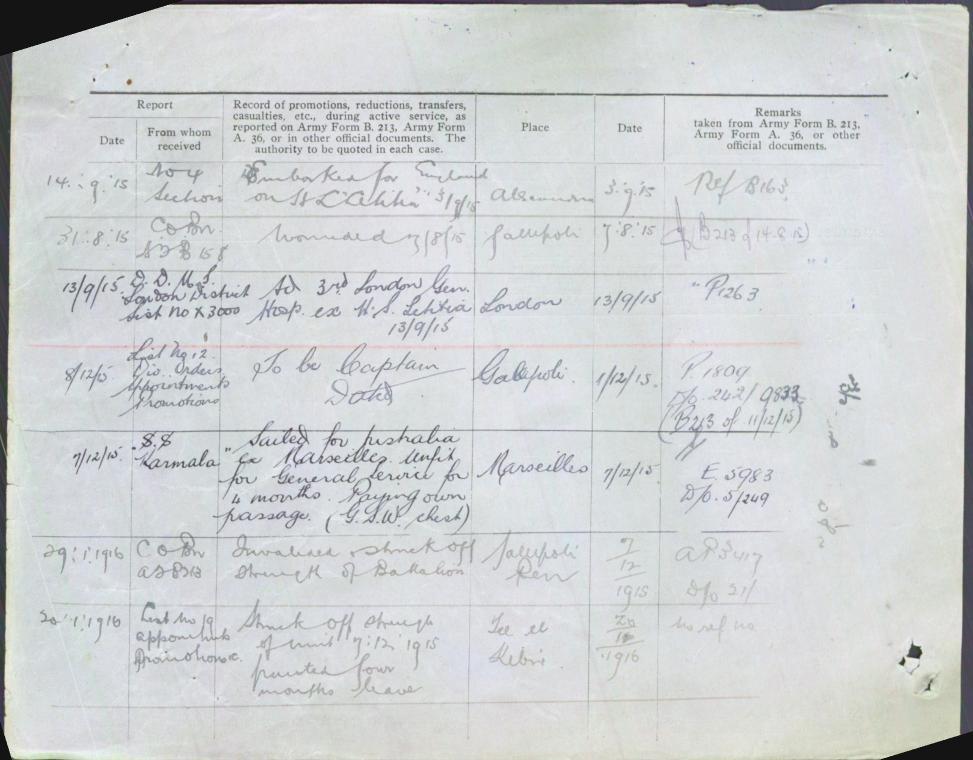
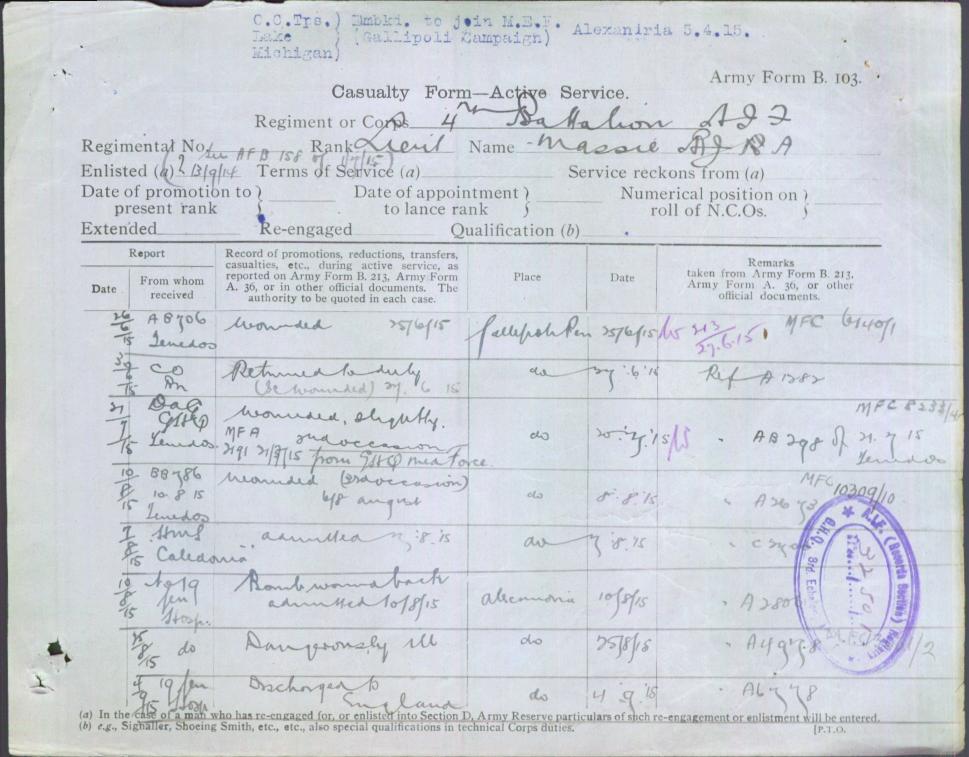
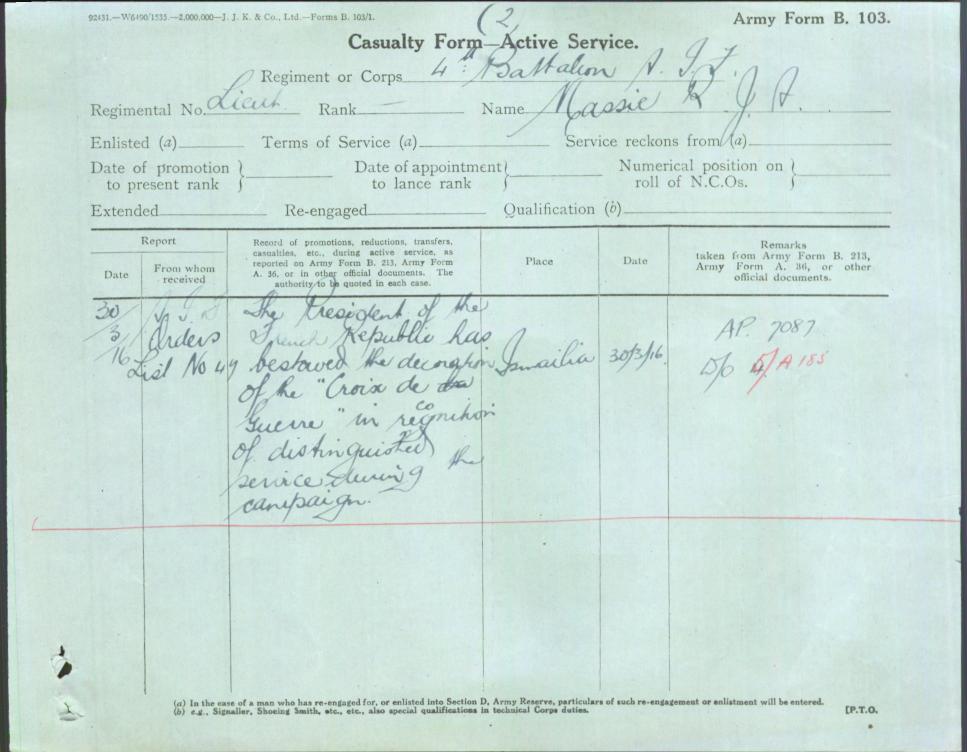
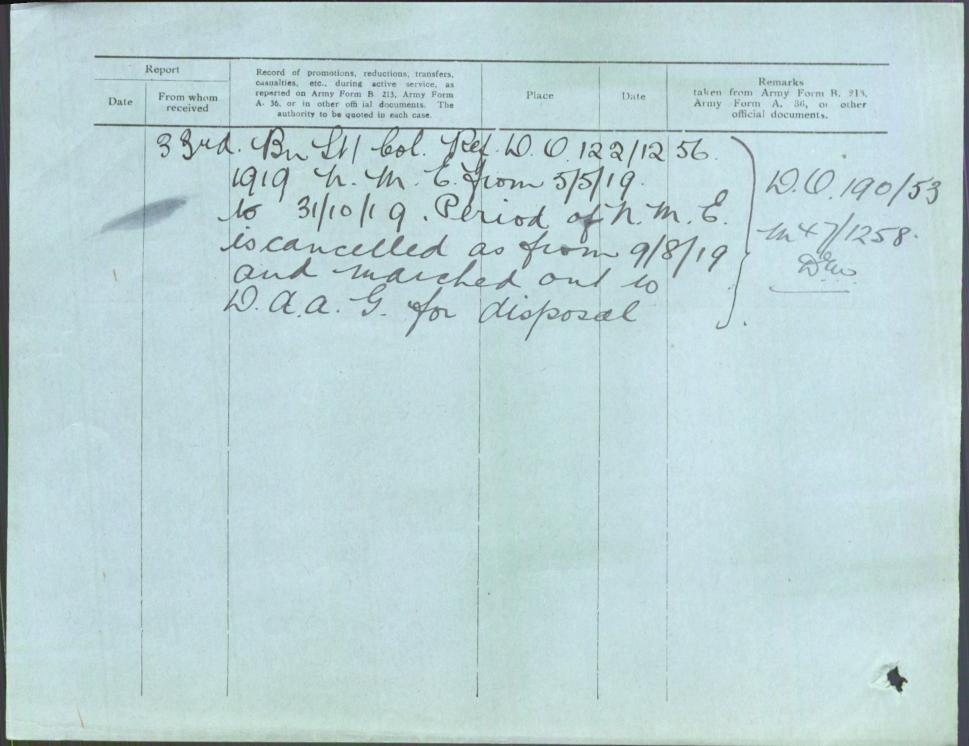

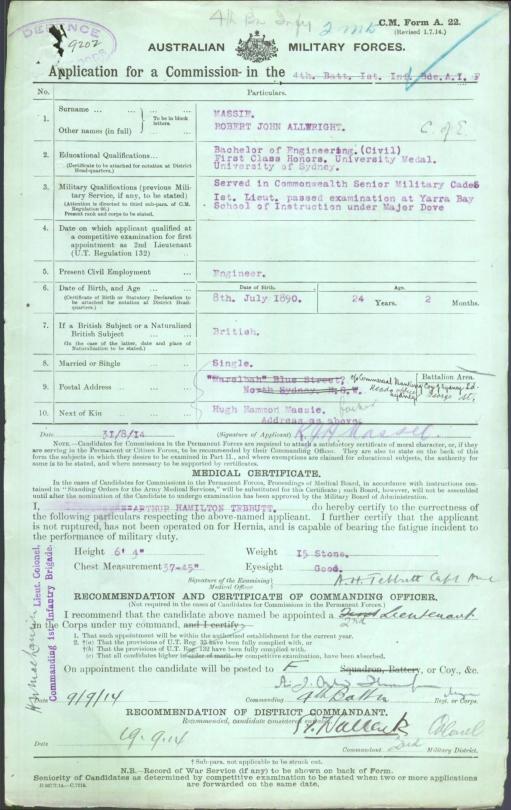



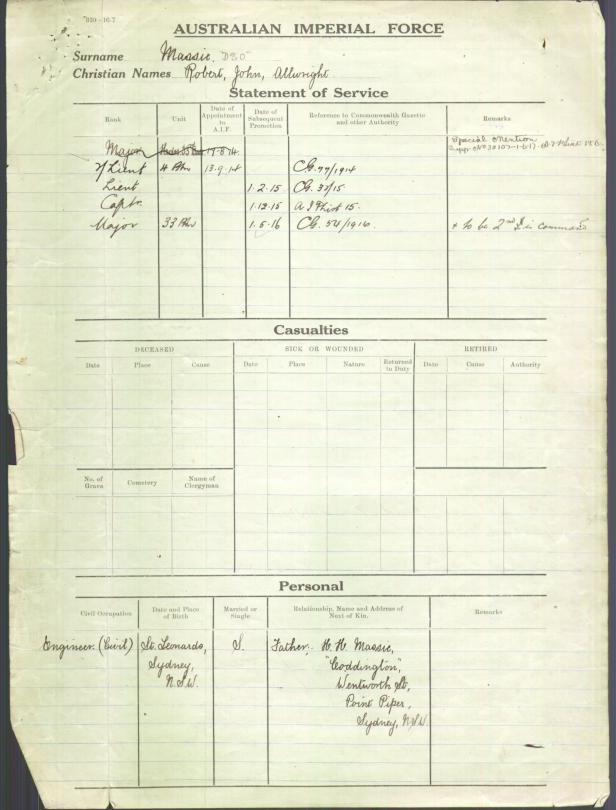
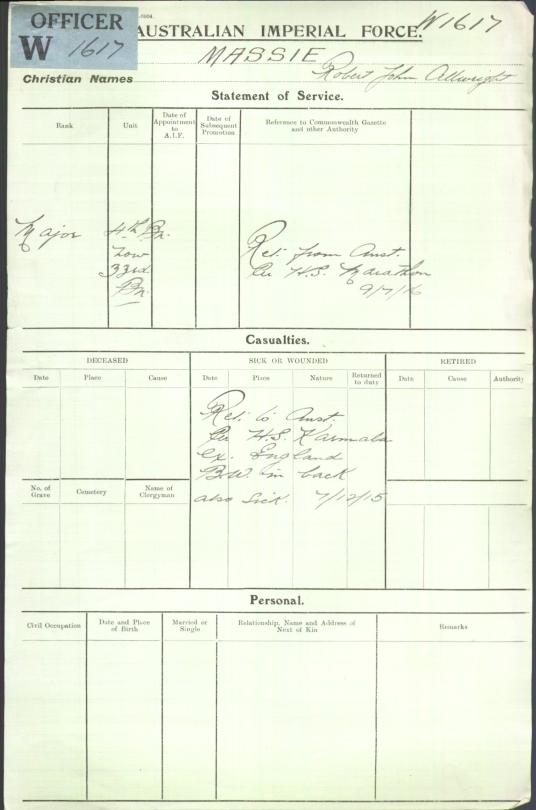
© Commonwealth of Australia (National Archives of Australia)
Under Construction; 2010-28/12/2017.
